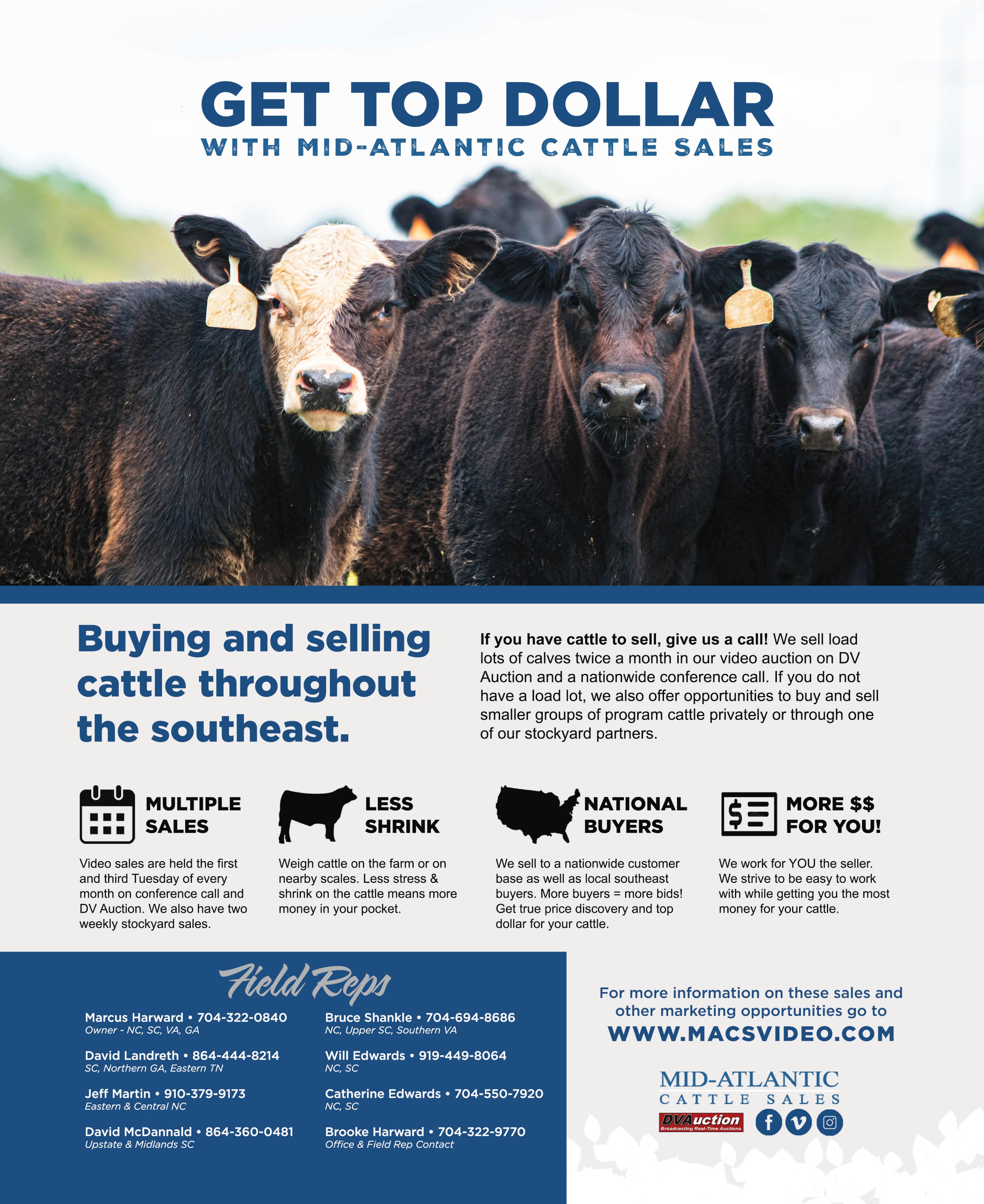

Carolina Cattle Connection



Carolina Cattle Connection
The official publication of the North Carolina & South Carolina Cattlemen's Associations.
Sales & Publication Office
2228 N. Main Street
Fuquay-Varina, NC 27526
Phone: 919-552-9111
Email: mail@nccattle.com
Website: www.nccattle.com
The Carolina Cattle Connection is printed on 30 lb recycled newsprint by BN Printing in Benson, N.C.
Manager, N.C. MILO LEWIS
Manager, S.C. TRAVIS MITCHELL
Editor & Advertising Director CASEY HINNANT
N.C. Circulation KIM BURDGE
S.C. Circulation TRAVIS MITCHELL
Material in The Carolina Cattle Connection is not to be reproduced in total or in part without the written permission of the editor. All submissions become property of The Carolina Cattle Connection, but we make every effort to return items such as photographs and artwork as requested.
The Carolina Cattle Connection is published monthly by the N.C. Cattlemen’s Association.
A complementary subscription is included with membership to each state’s association. Non-member subscriptions are $30 per year.
All address changes for NCCA members to:
The Carolina Cattle Connection 2228 N. Main Street • Fuquay-Varina, NC 27526
All address changes for SCCA members to:
The Carolina Cattle Connection P.O. Box 207 • Saluda, SC 29138
President RYAN CLARK
5250 NC 772 Hwy. • Madison, NC 27025
Vice Presidents
BRANDON BOWMAN
2346 Ann Street • Claremont, NC 28610
JIM LEDFORD
260 Mulberry Lane • Otto, NC 28763
JOEY CARTER
250 Penny Road • Beulaville, NC 28763
Immediate Past President
SCOTT WEST
489 Panacea Springs Road • Littleton, NC 27850
NCBA Policy Division Director - JOHN LANGDON
N.C. Beef Council Director - BROOKE HARWARD
Beef Board Director - BRIAN WARREN
Secretary/Treasurer - EVERETT JOHNSON
Directors At Large MATT POORE • NEIL BOWMAN • TODD SEE
Executive Director - MILO LEWIS
2228 N. Main Street • Fuquay-Varina, NC 27526
N.C. Cattlemen’s Beef Council Director of Consumer Information - ASHLEY W. HERRING
Administrative Assistant - KIM BURDGE
President - JOE OSWALD IV
1st Vice President - GENE CRIM 2nd Vice President - ASHLEY MILLS Immediate Past President - TIMMY BENTON
Secretary - CAROL HENDRIX
Treasurer - ERIC SEYMOUR
Board of Directors
JOHN LEWIS, Chester • JOE OSWALD IV, Allendale
RYAN WHITEHEAD, Union • TERRY KIRKLAND, Batesburg
LLOYD BAXLEY, Georgetown • JOE DAVIS, Westminster
MICHAEL HALL, Abbeville • RICHARD SOX, Lexington
CAROL HENDRIX, Westminister • JAMIE DRIGGERS, Hamer
BONNIE CANN, Abbeville • ASHLEY MILLS, Blair
HASKEL SEXTON, Sparanburg • GENE CRIM, St. Matthews
AL McCLAIN, Anderson • ERIC SEYMOUR, Columbia
TIMMY BENTON, Walterboro
Executive Director - TRAVIS MITCHELL P.O. Box 207 • Saluda, SC 29138
Phone: 803-609-2828 • Email: twmitch@clemson.edu
Website: www.sccattlemen.wildapricot.org
S.C. Beef Council Executive Director - ERIN DOLL P.O. Box 11280 • Columbia, SC 29211
Phone: 803-734-9806 • Email: edoll@scda.sc.gov
Website: www.sccattle.org
A Short History of the Modern Charolais — Foundations, by John Dellinger .................................................................... Page 16
A Short History of the Modern Charolais — Performance, by John Dellinger ................................................................... Page 26
A Short History of the Modern Charolais — Show Cattle, by John Dellinger .................................................................. Page 22
A Short History of the Modern Charolais — The Carolinas, by John Dellinger ................................................................... Page 28
A Short History of the Modern Charolais — The Duke, by John Dellinger ................................................................... Page 20
Cedar Hill Farm — Small Bult Mighty With Charolais, by Michelle Johnson ................................................................ Page 13
Charolais — Still Number One After 80 Summers, by C.R. (Bud) Eanes .................................................................. Page 6
Charolais Cow Families — Do They Matter More?, by John Dellinger .................................................................... Page 14
S.C Charolais News, by Georgeanne Webb ................................... Page 12
The Great White Charolais, by John Dykers, M.D. page .............. Page 10
Amazing Grazing, by Dr. Matt Poore ............................................. Page 34
Ashley’s Beef Corner, by Ashley W. Herring ................................. Page 32
Cattle & Carbon, by Alan Franzluebbers ........................................ Page 44
Clemson Corner, by Lee Van Vlake & Amber Starnes .................. Page 46
Director’s Report, by Travis W. Mitchell .......................................... Page 5
E.B.’s View from the Cow Pasture, by E.B. Harris ..................... Page 42
Have You Herd, by Julia Magnanini .............................................. Page 36
The Chaplain’s Corral, by Sandra Baker ....................................... Page 39
You Decide!, Dr. Mike Walden ........................................................ Page 40
ABBA Executive Vice President Update, by Paul Maulsby ...... Page 88
American Angus Association Update ........................................ Page 62
American Brahman Breeders Association News Page 87
American Gelbvieh Association News ....................................... Page 51
American Hereford Association News Page 83
American Simmental Association Update ............................... Page 55
Certified Angus Beef News ............................................................ Page 74
Common Ground, by Mark McCully ............................................Page 69
FSC Ranch 8th Annual Extra Effort Sale Report ....................... Page 56
N.C. Angus Association News Page 71
The Simmental Trail, by Jennie Rucker ......................................... Page 52
WHAT’S NEW AROUND THE INDUSTRY?
BioZyme News ............................................................................... Page 104
Firestone Ag News Page 112
Zoetis News ..................................................................................... Page 102
2024 South Carolina Sale Barn Cattle Receipts ....................... Page 55
2024-2025 Clemson Bull Test Update Page 89
AgCarolina Farm Credit News Page 98
Clemson A.I. School ....................................................................... Page 84
Pasture Management Systems “Mile of Fence” Update Page 101
N.C. Cattle Receipts, Trends, & Prices ........................................ Page 61
New NCCA Members for 2025 Page 103
S.C. Cattle Receipts, Trends, & Prices ...................................... Page 106
Support the SCCA Foundation Scholarship Fund, Page 109
NCBA IS WORKING HARD FOR YOU!
A Message from the CEO, by Colin Woodall ................................. Page 76
Beef Checkoff News ......................................................................... Page 61
North Cattlemen’s Beef Association News Page 8o
North Cattlemen’s Beef Association President’s Report, by Mark Eisele ........................................................................ Page 79
Dairy Alliance New Page 97
Dairy Checkoff News ..................................................................... Page 94 National Milk Producers Federation News Page 90
The CEO’s Corner, by Gregg Doud .............................................. Page 93
EDUCATION, OPINIONS, AND EVERYTHING ELSE!
Beef Cuts & Recommended Cooking Methods ........................ Page 60
Beef Sustainability Facts Page 111
Beef: Single Ingredient, No Confusing Label ........................... Page 91
Communication is Key When Planning for the Future Page 66
Carolina Cooking ........................................................................... Page 57
Communication is Key When Planning for the Future Page 66
Gut Health Tips to Support Calves Through Weaning, by Bryan Sanderson .............................................................. Page 92
Ground Beef Thawing Page 105
Marbling, Feet & Fertility — Are they related?, by Kara Lee ............................................................................. Page 72
National Grazing Land Coalition News Page 73
Protecting the Herd from the New World Screwworm, by Kim Beckett ....................................................................... Page 111
Trending in Food & Media ............................................................ Page 48
Understanding Beef Quality Grades Page 92
USDA’s Traceability Rule ............................................................. Page 113
$400 - Open Rate
$375* - 6 Ads Annually
$320* - 12 Ads Annually *per month
$575 - Open Rate
$530* - 6 Ads Annually
$460* - 12 Ads Annually *per month
$225 - Open Rate
$200* - 6 Ads Annually
$180* - 12 Ads Annually *per month $200 - Open Rate $185* - 6 Ads Annually $160* - 12 Ads Annually *per month


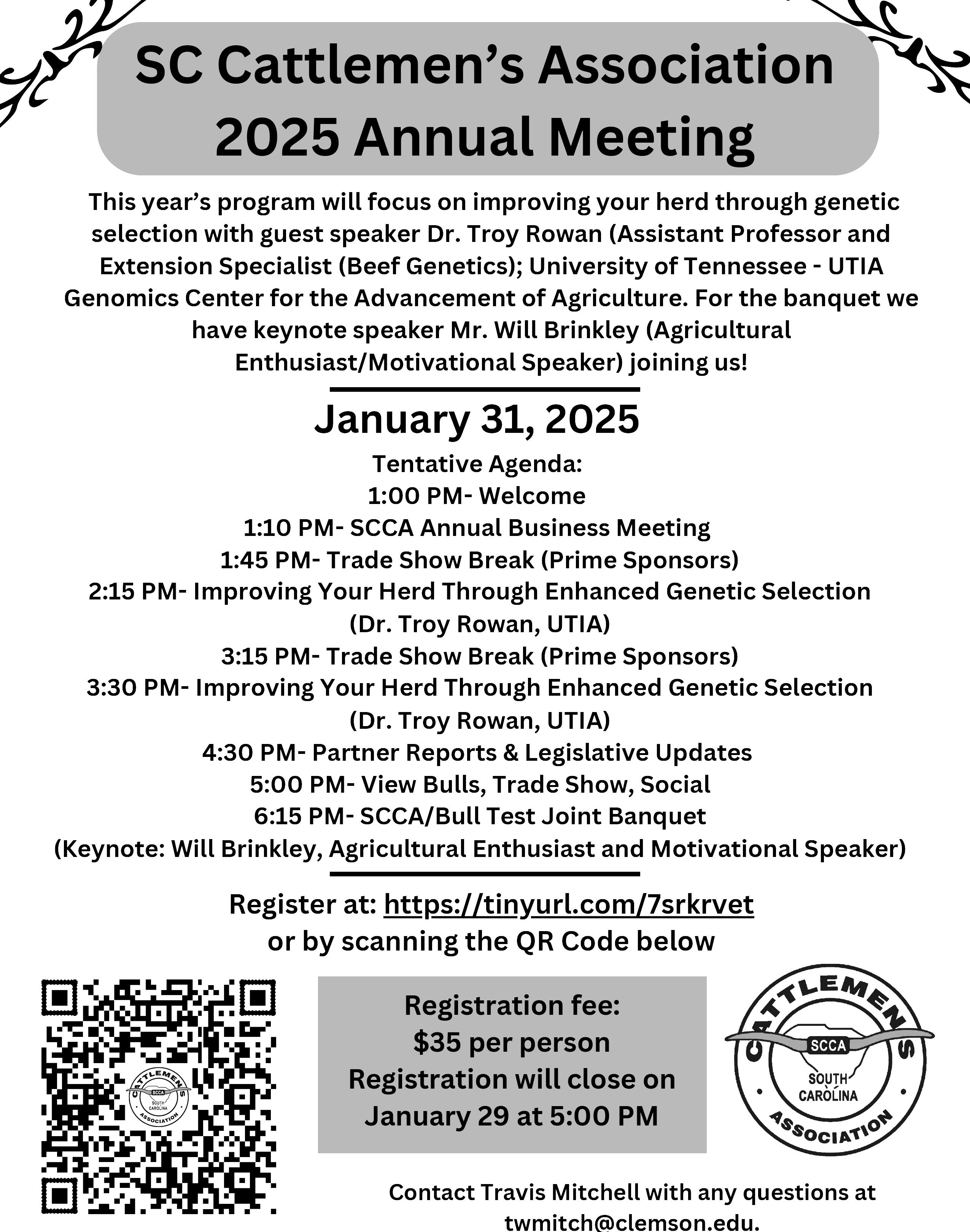

OBy TRAVIS MITCHELL, S.C. Cattlemen’s Association
n behalf of us here at the S.C. Cattlemen’s Association, we would like to wish you a Happy New Year. We look forward to kicking the new year off at the end of this month with the 2025 S.C. Cattlemen’s Association Annual Meeting being held at the T. Ed Garrison Cattle Complex in Clemson on January 31. We have a great agenda planned and look forward to seeing each of you there. Our awards banquet will be held in conjunction with the Clemson Bull Test Sale again this year, so plan to make a weekend of it and stay for the sale on Saturday, February 1.
This year’s annual meeting and conference will focus on
improving your herd through genetic selection with guest speaker Dr. Troy Rowan, University of Tennessee assistant professor and extension specialist in beef genetics. For the banquet, joining us as our keynote speaker is agricultural enthusiast and motivational speaker Will Brinkley.
Full registration information can be found on the flyer to the left.
The start of a new year brings new opportunities to recruit members to this great organization. The S.C. Cattlemen’s Association strives to work hard for every cattle producer in the state of South Carolina. I would like to say thank you to all of our loyal members, and I wish each of you a happy and prosperous 2025!


By
Iwas born in Thomasville on West Main Street along the Southern Railroad across from City Ice and Fuel. My dad, Charlie Eanes, needed help, so I started shoveling coal when I was eight years old. It taught me hard work, the value of a dollar, and honesty. My grandad, T.S. Eanes Sr., had a fifth grade education, but he ran several businesses, from real estate to the coal and ice business in Lexington, North Carolina. He raised horned Herefords and draft horses. On Sundays after church, we all went to my grandparents’ house, where my grandmother Rebecca had a big lunch prepared. After lunch, this family of eight boys and one girl with their families would watch football on TV or take naps, but my grandad and I would go over to the farm to check on his cattle. This would start a lifelong love of raising cattle and promoting the beef cattle business. One of my grandad’s sayings was, “Fat (meaning condition) is the prettiest color.”
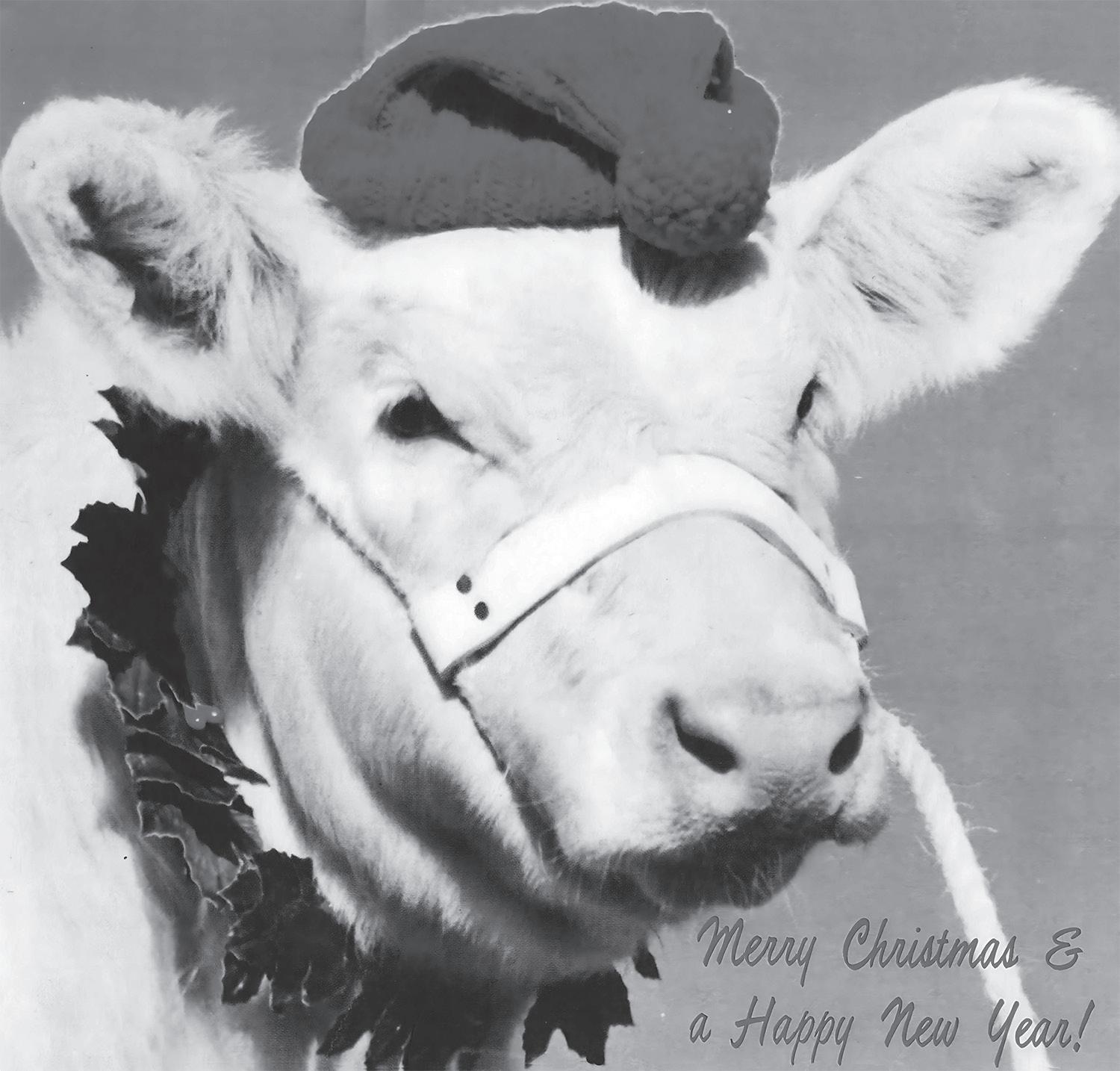
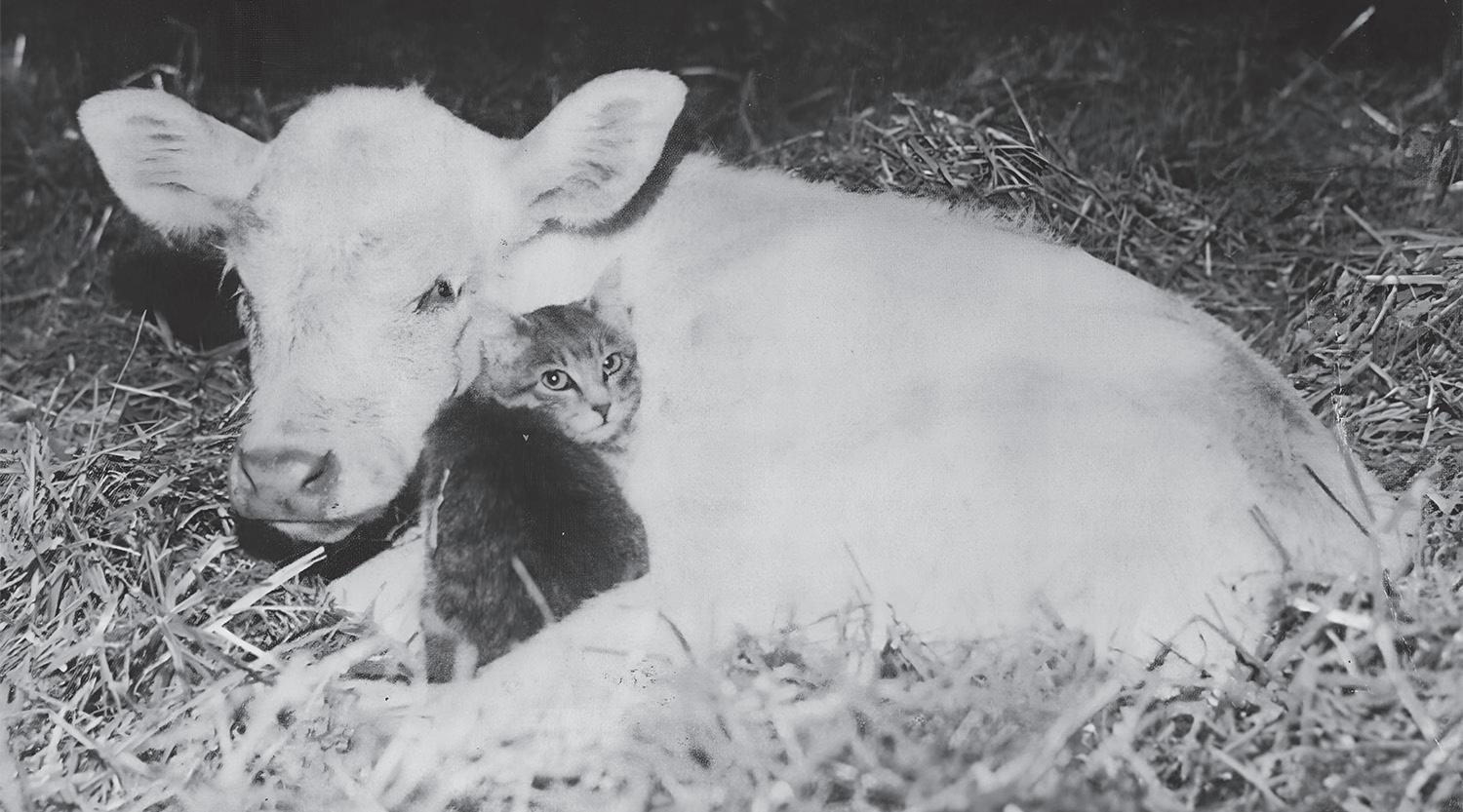
In 1957, my uncle Cecil Eanes had called several Charolais breeders in Connecticut that had 100 percent registered Charolais. He was going to buy a bull and two heifers for $12,000, but the county agent talked him out of it. I saw an ad for the Litton Charolais Ranch in the Farm Quarterly and I knew this was the upcoming breed.
I could have helped Uncle Cecil merchandise his Charolais, but who listens to a kid? So I started with two polled Shorthorn heifers bought on March 26, 1960. My dad, Hube McClamrock, and I went to the N.C. Shorthorn Sale in Troutman. He bought a polled red Shorthorn bull for $320. That was a lot of money for us.
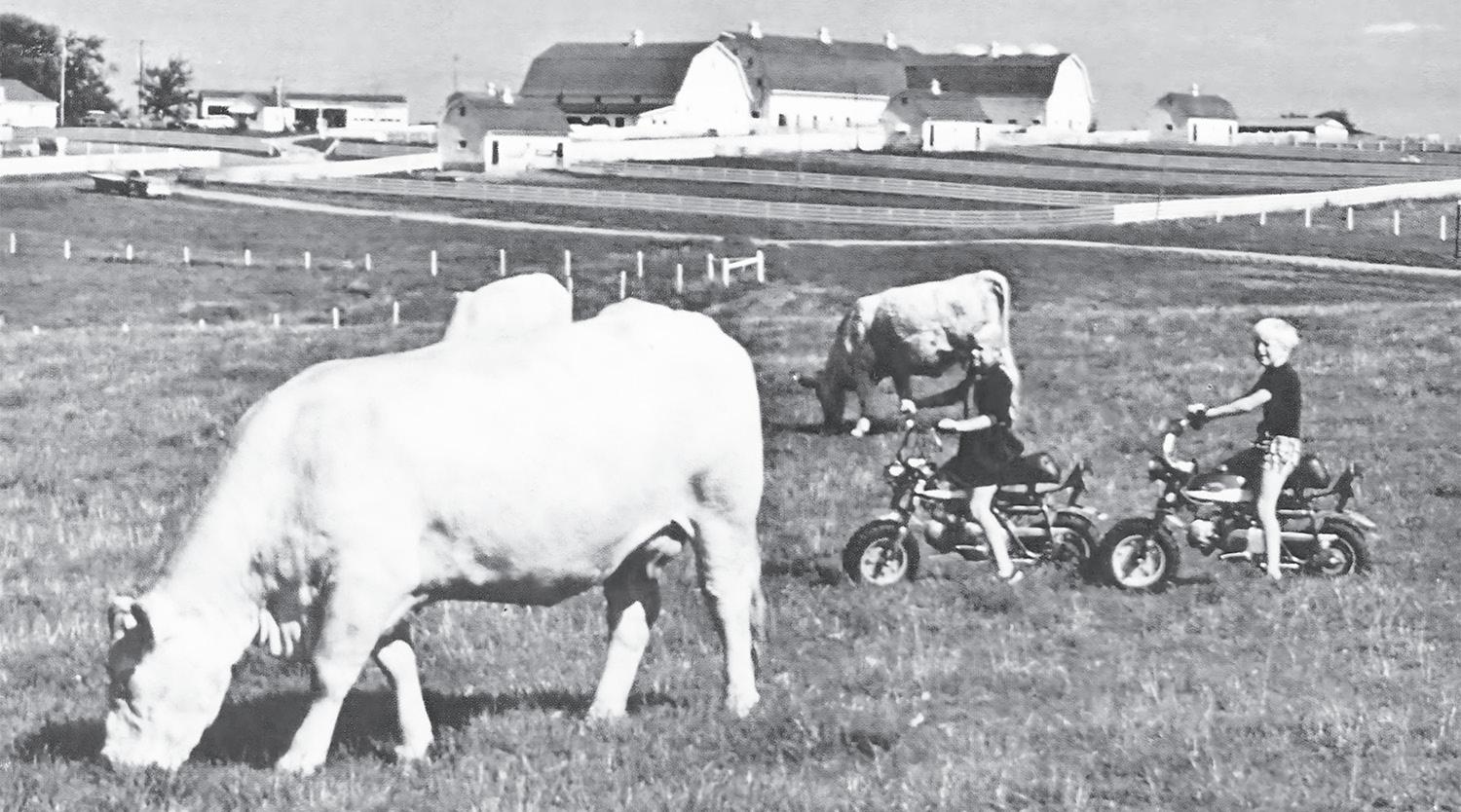
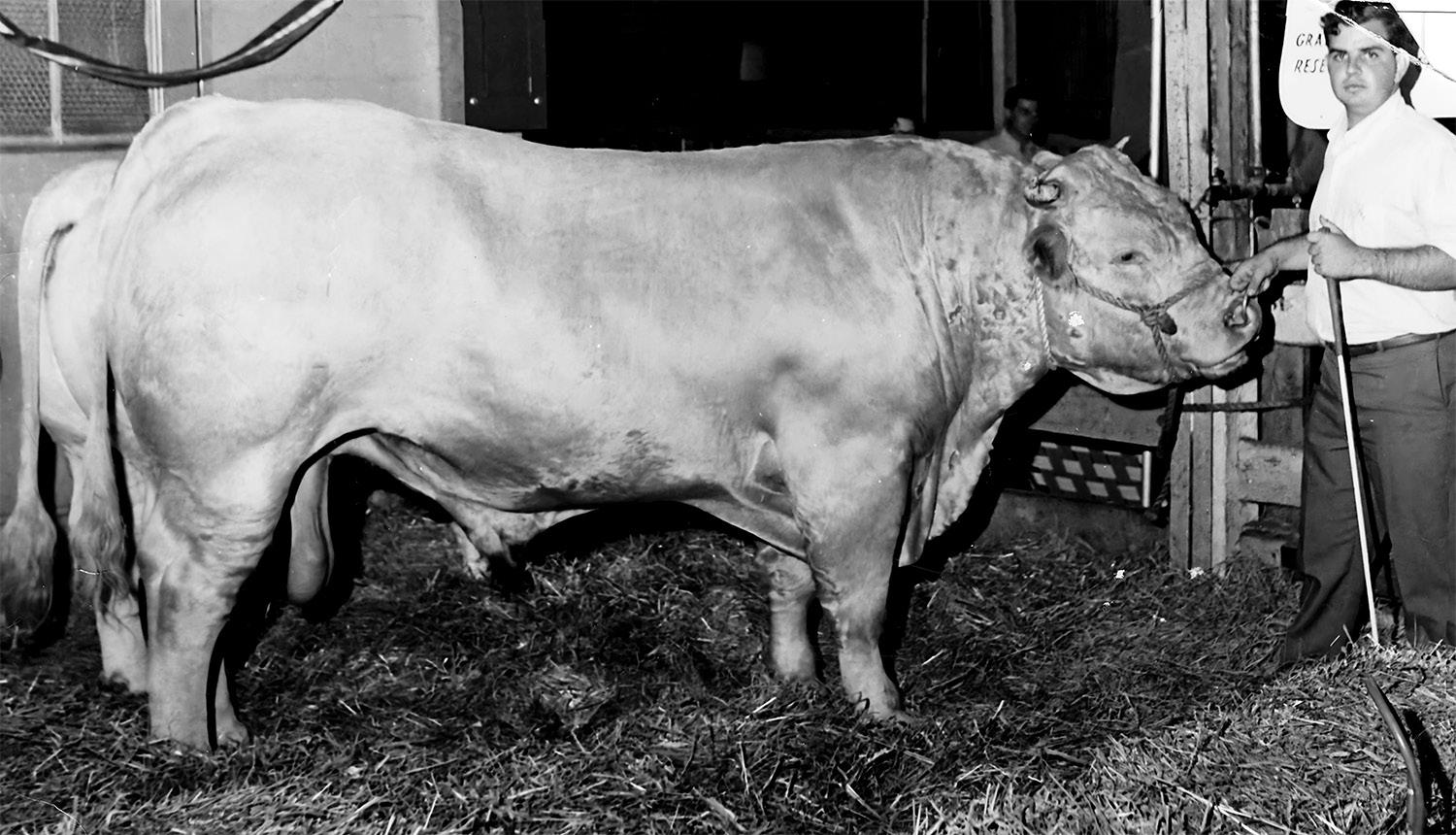
While in high school, I played football for ex-paratrooper George Cushwa. He expected the players to be tough. Working in the coal yard and on the farm had taught me about hard work. At that time, they would give you a salt tablet and a swallow of water, and that was all you got. Now players have water, sports drinks, cool jerseys, fans, etc!
My dad wanted me to get a college degree, so I was accepted at Wingate College. I still kept my cattle and interest in building a top herd. I graduated from Wingate in 1964 and then was drafted by the U.S. Army. After I was drafted into the Army, we had a herd of 20 polled Shorthorns. We sold the whole herd to Garland Fulcher of Oriental Seafood Company in Oriental, North Carolina. Donnie and Reid Summers hauled the cattle to Mr. Fulcher. I spent two years at Ft. Carson in Colorado Springs, Colorado. During this time, I helped at Allen Cattle Company with Milt Cheeseman near Fort Carson. When I had time off, I worked for Bangart Charolais Ranch in Roberts, Mont., and went through an internship at Litton Charolais Ranch in Chillicothe, Missouri.
After I was discharged from the Army, I enrolled in N.C. State University on the G.I. Bill, graduating in June 1972. Two to three years after I graduated, I would wake up in a sweat — thinking I had an exam in statistics or modern math. The academic world was not for me.
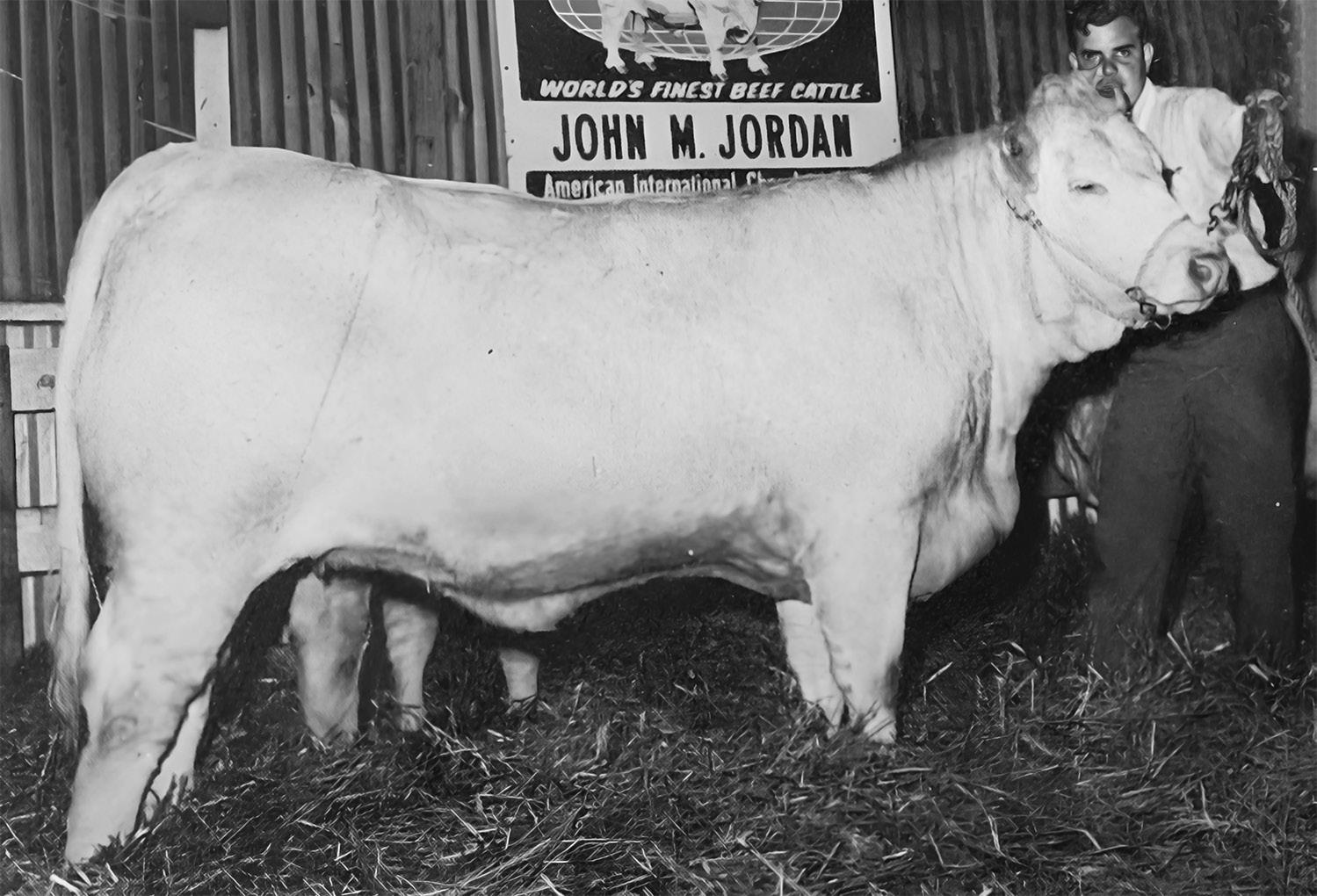

In 1972, I met the love of my life, Kathy, and we were married in 1973. Our daughter, Victoria, was born in 1976. We worked as a family to get things going.
After graduating from N.C. State, I met Mac McKinnon of SuCrest Corporation and American Molasses Company. He hired me to sell molasses and liquid feed to livestock producers. I worked a 3½ state territory and made top salesman in 1977. I have always believed in my products. I remember a prospective customer asking me what I sold, and I replied, “What do you need?”

All this time, Charolais were setting the records for top money, top performance, etc. During this time, Big Mac (Jeep), a Charolais cross steer, had been dyed from gray to black and won grand champion top steer at Denver. The young guy who has raised him recognized him anyway. They pulled some dyed hairs out of his back, and the roots were white. At this time, crossed Charolais steers
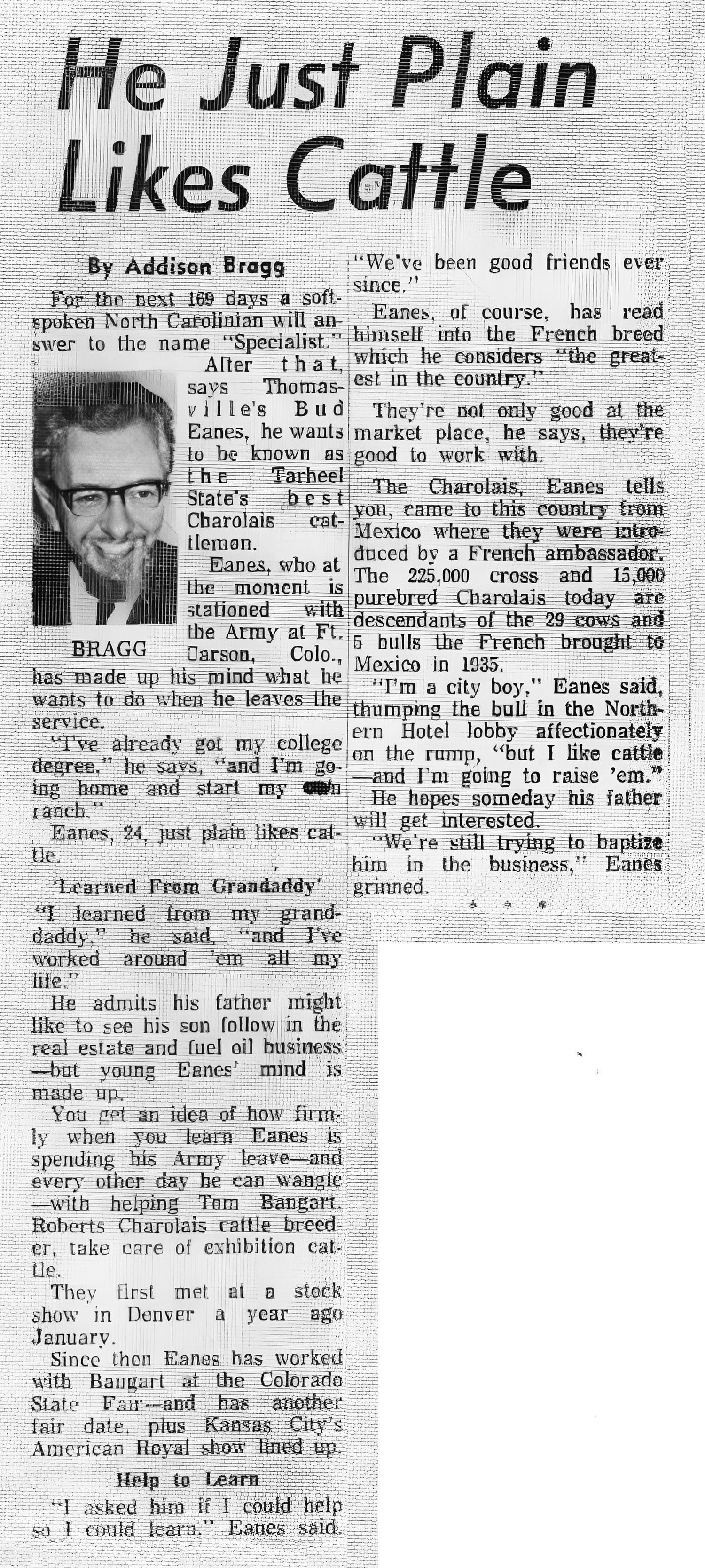
couldn’t be in the show. Foul was called, and the news hit the fan. My uncle Ralph Eanes told me that the Charolais boys got a million dollars worth of publicity from this steer.
With all this, I still couldn’t convince my dad of the Charolais potential. Ten years later, he got the Charolais fever and wanted to help me — but the rocket had taken off!
During this time, I met Paul Albertson, superintendent of TFI Armstrong Cork Corporation. He was interested in getting some Charolais cattle. He knew I had worked for and sold cattle for Litton Charolais Ranch, so he said, “Let’s go to Kansas City and visit the Littons; I’ll pay for everything.” This was June 1969. Jerry and Charley Litton were sold out of the bulls, but they would help us find one. I was wearing Acme Dingo boots, and as soon as Jerry saw them, he liked the style and wanted some like them. They were cordovan with a roping heel and a buckle on the side. Later on, I saw a photo of Jerry with his handmade boots, like mine, when he sold half interest in LCR Royal Sam for $165,000 to Rainbow End Ranch in Arizona.
When Paul and I returned to North Carolina, there was a letter from Charley Litton. He told of E.D. Hummer from Pittsburgh, Pennsylvania. He was a vice president for U.S. Steel and owned a farm near Bland, Virginia. E.D. had sold his females but still had LCR Sir Dante and a son for sale. My dad and I drove up to Virginia and bought the two bulls.
Harold Leonard had hauled my first Charolais purchase from the S.C. Charolais Sale, a ⅞ bred female bought for $850. I later sold the heifer after she had a bull calf to W.I. Brown for $2,250.
Harold and I went to Virginia and picked up the bulls. When I got back, I sold half interest in Dante to Paul Albertson for $2,500 and the weaned bull calf to Clarence Durham of Pittsboro, N.C., for $1,800.
In France, they grow most of the beef on pasture — grass fed. The French use charcoal to cook with, so the beef doesn’t need fat to be tender. The British cook on an open flame, needing extra fat to keep the beef from scorching. Fat has a lot more calories, and it takes more feed to produce a pound of fat. I always wanted to produce the best beef with less input. Other breeds use shadows in photos to make the cattle look thicker, but you don’t have to with Charolais. They were bred to be thick. Remember that you sell cattle by the pound, and Charolais put it on the quickest!

I have followed several breeders out west who raise cattle on grass, but their grass is richer than what we have here. A dairyman told me over 50 years ago, “Don’t use nitrogen. It will choke out your clover and legumes.”
One thing I have noticed over the years is that Charolais can take the heat, being a lighter
Carolina Cattle
color. They have fewer flies than the darker cattle.
Over the years, we have donated, loaned, and sold beef and bulls to Baptist Children’s Home, Nazareth Children’s Home, and America Junior Order Home. I remember when someone stole the beef from the cooler of the American Junior Order Home. We were able to donate a steer to them.
I worked over the years for several feed companies. In 2008, Bob Carson, Dr. Ben Shelton, and I purchased Union Grove Feed. I retired in 2014, but I still had my cattle. Since my retirement from public work, I have maintained a small cow herd. I have sold many breeds of cattle, but I always come back to Charolais.
Mitchell Scheer, general manager at Blue Q Ranch in Troy, N.C., has been crossing some Angus cattle to Charolais. They are very happy with the Charolais crosses. They sold several cows and bred heifers at a summer sale. Their Charolais Free Lunch daughters topped their consignment with an average of $3,600. We bought a Free Lunch son out of the best Angus cow at Blue Q Ranch from Leslie Lowe of Trinity. Leslie had a lot of heifers calving with no trouble from this Charolais bull. His herd number is 007. Leslie’s first crop of 16 calves by the 007 bull sold for $25,135. That’s pretty good for calves right off their mama!
I am presently partnered with Terry Lowrence in C.R.E. Cattle Company. We now have new genetics and have entered a new era for Charolais and the future beef business!
I have three grandchildren, Isabella, Eli, and Gabriel Lopez, who are interested in our cattle. Always help and encourage young people to get involved in farming and ranching — they are the future!
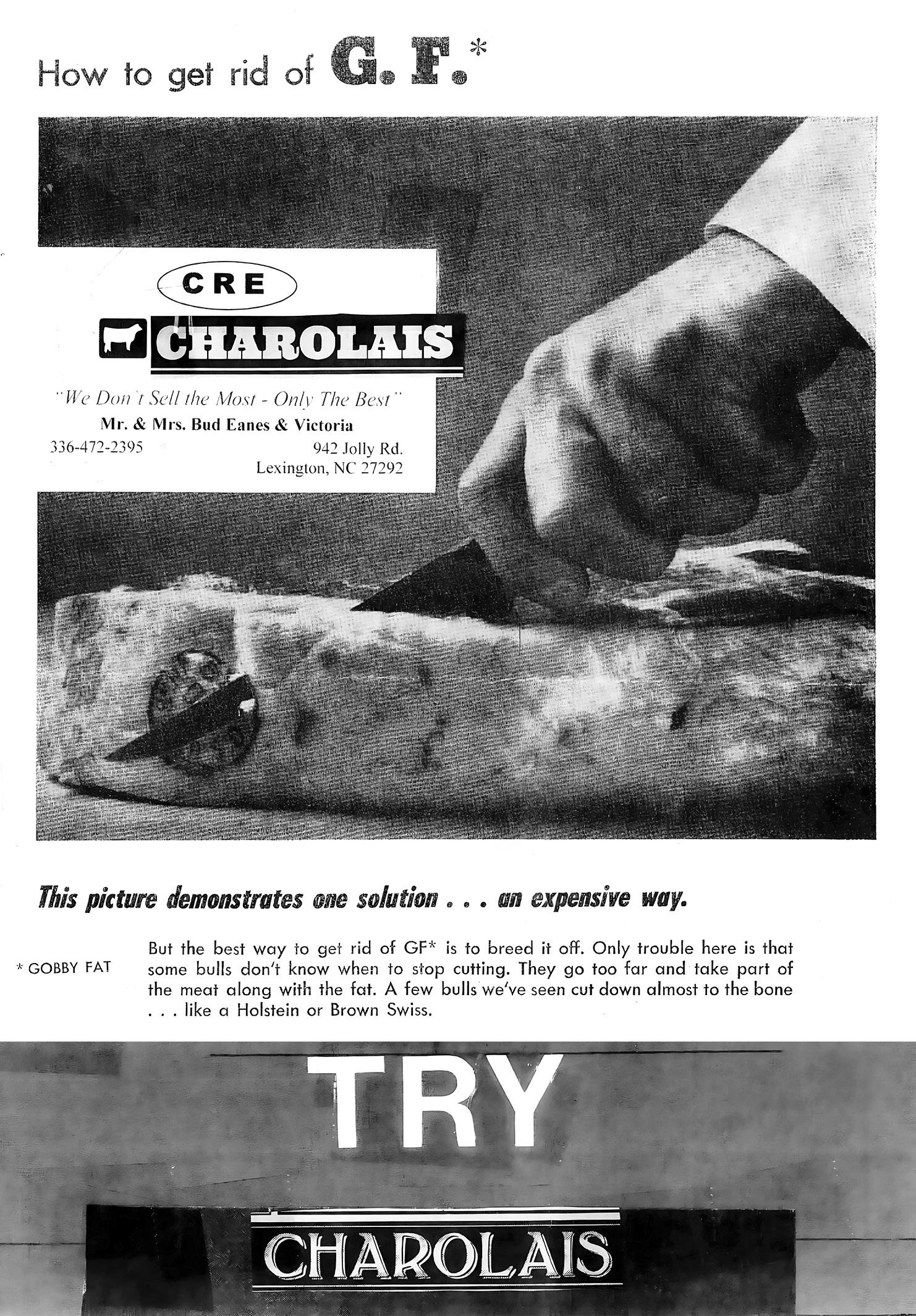
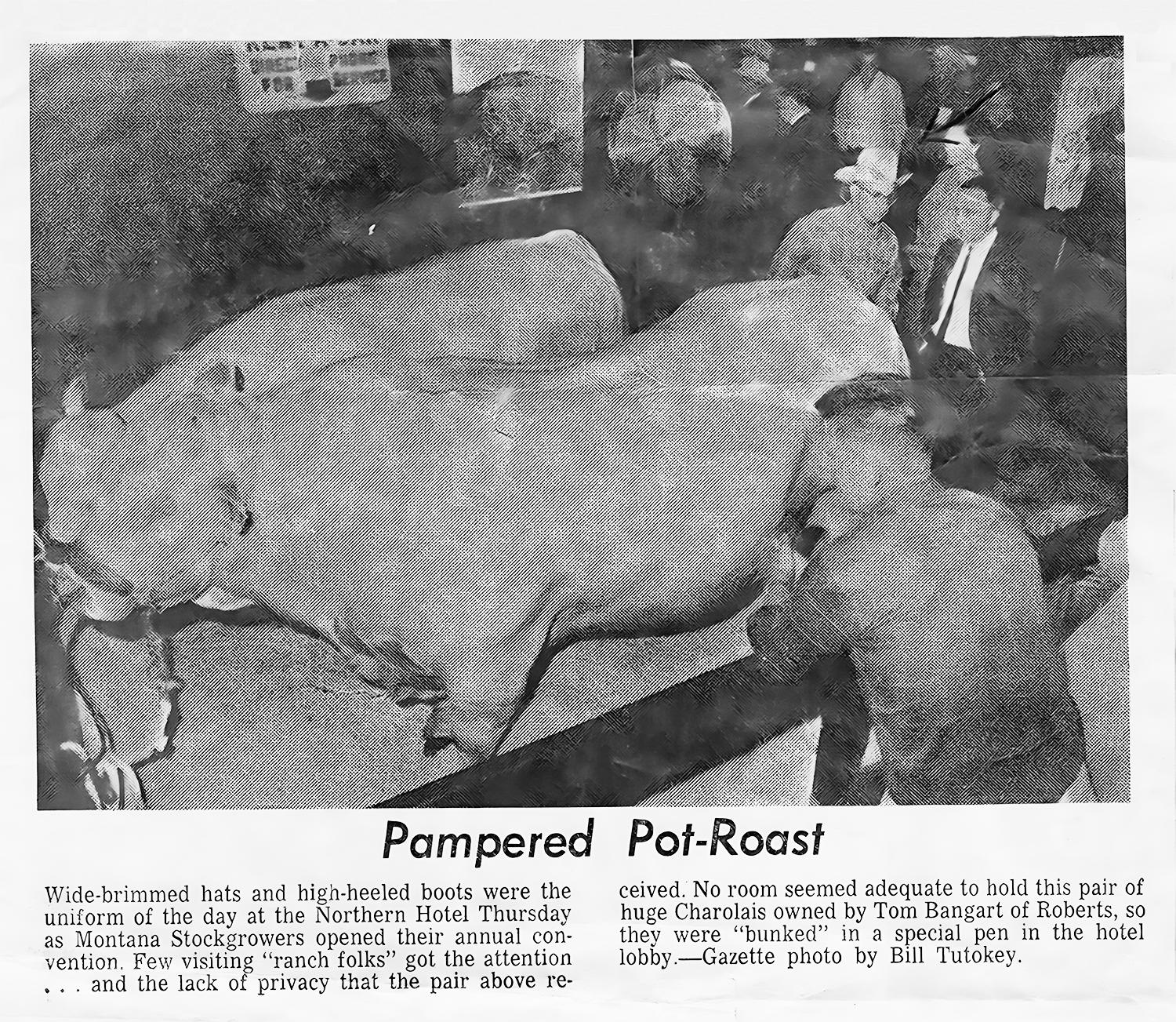
I have talked enough, but I do want to leave you with a few final quips:
“Remember quality, not quantity. It’s like J.R. Ewing said, ‘If I was cheap, nobody would want me!’”
“Who so ever produces two blades of grass and two ears of corn where only one grew before does more essential service to his fellow man than does the whole race of politicians.” Jonathan Swift, 1745.
“They can change their mind, but they can’t change me — Charolais are still #1 for me!”
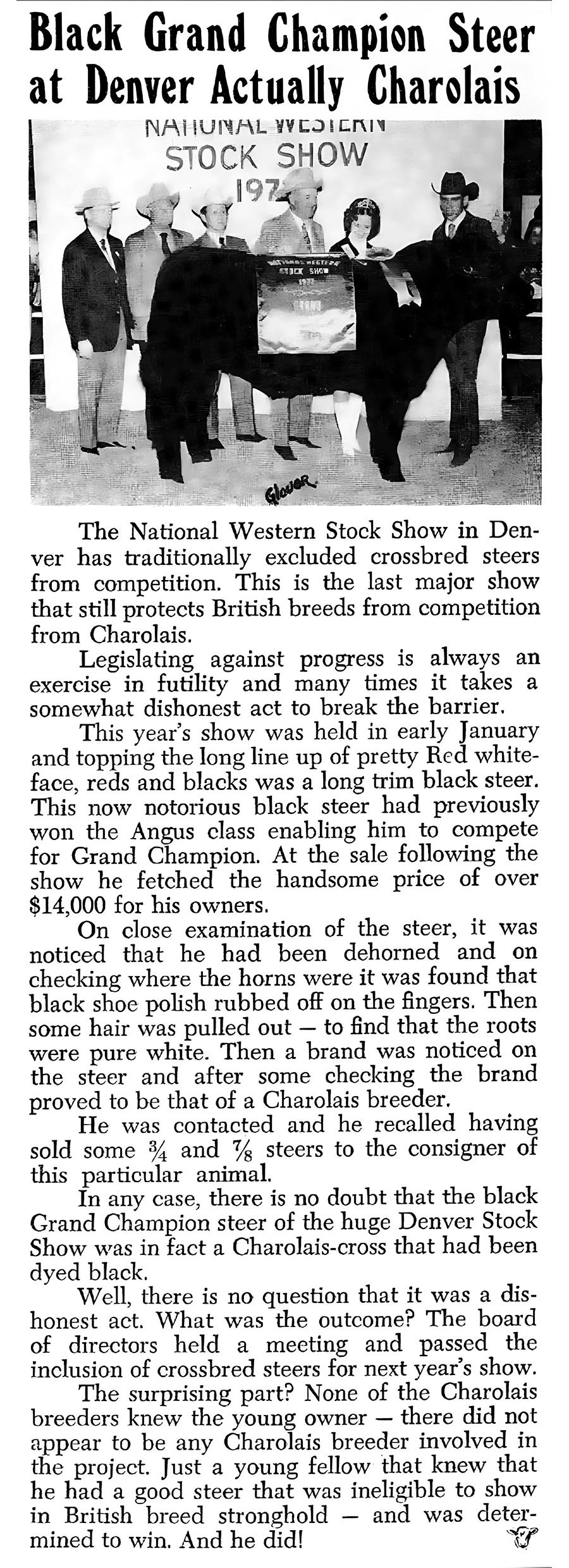
*All material printed in this article was done so with permission of the original publisher.

By JOHN DYKERS, M.D.
] The great white Charolais cow is no longer a secret in the beef business. She has tremendous advantages to offer to the commercial producer, and I am seeing these gorgeous white ladies beginning to prosper in the pastures of the southeast.
The advantages of the great white Charolais cow will certainly vary with the geography and the conditions for each operation.
To appreciate the great white Charolais cow, we must look closely at many assumptions we make about beef production and the different markets for different types of beef and different consumers and different producers. New Hope Farm has vertically integrated our purebred cow/calf operations with our on-farm performance testing and processing at our own meat packing plant and marketing our own branded beef, CharLean. Our bulls with a birth weight over 100 pounds or horned bulls are very profitable for CharLean, but they are sold as breeders only to customers with mature cows looking to add growth. We can usually make the decision on whether an animal is CharLean or breeding stock by age ten months, based on performance and EPDs. We eat a lot of excellent EPDs if they are not validated by the animal’s performance. EPDs are derived from performance in the first place; birth weigh, adj 205 day weight, and adj 365 day weight, and brothers and sisters are not alike, they are only kinfolk! EPDs help us summarize the family history (pedigree) but they don’t tell us which genes are present in that particular individual!
Similarly, performance is subject to misinformation, especially
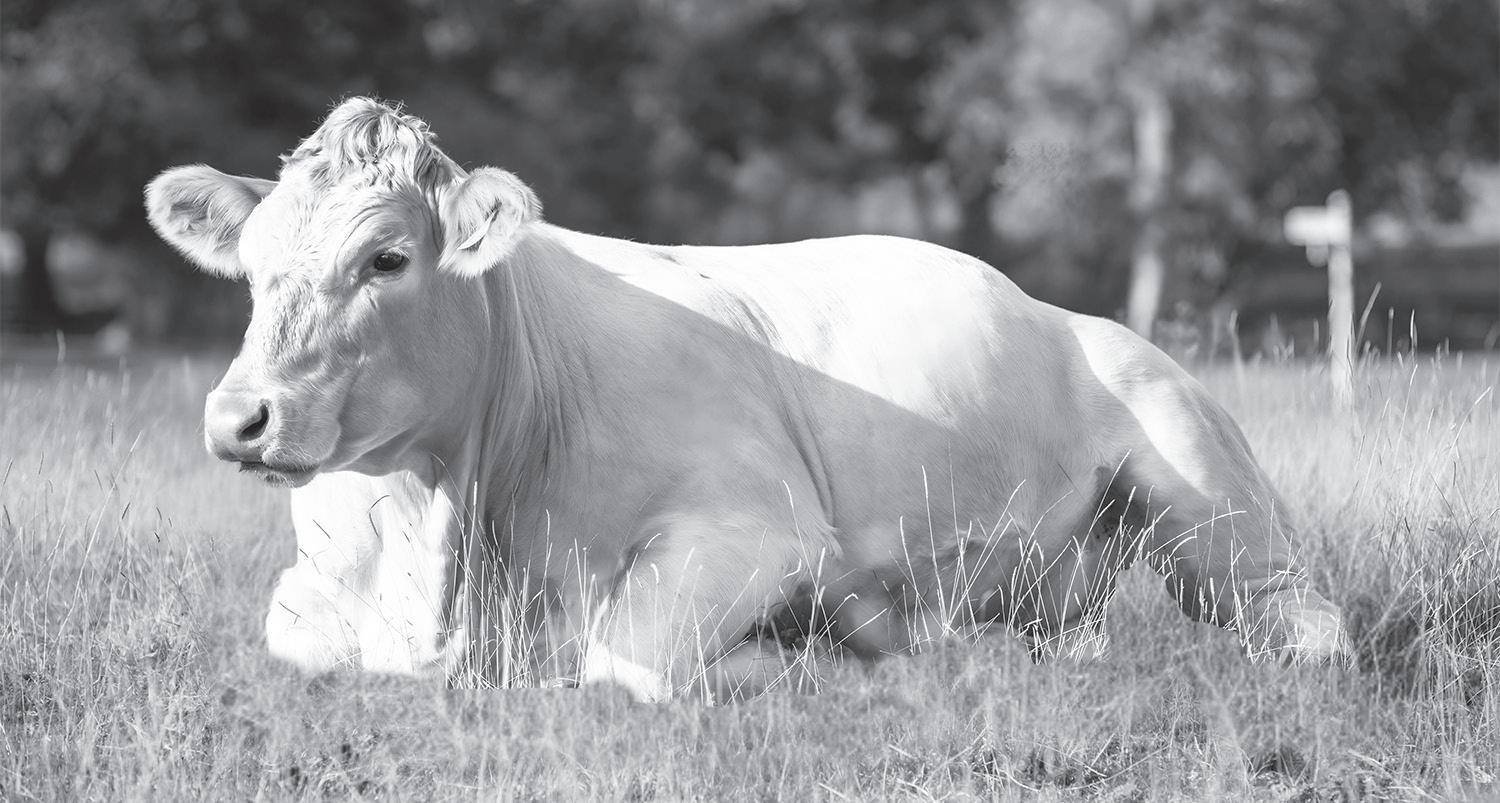
in ET calves raised on very different recipient cows, drought or other adverse weather conditions, and downright misrepresentation. Breeder honesty is indispensable, and breeder integrity includes checking the herd every day and having an accurate birth date. Accurate birthweights are also important, and we have a cage and load bar digital scales mounted on the front of the farm truck to get a real birth weight and height. Estimated birthweights based on tape measure of leg or chest are worse than no birth weight at all.
Marketing CharLean gives us a peek at the complexity of pleasing many customers. We started with four bred black Angus cows; after they calved we had them A.I.’ed to a Charolais and after we saw how those next four calves grew, we never looked back. We crossbred commercially for several years while we built our purebred herd and our meat packing plant, but we have been breeding only purebred Charolais for over 30 years. There are customers for fat steak, but they are dying off, and the future is in lean beef that is also juicy and tender.
Two major changes have influenced the biology/economics of producing beef...
First, we can bring the feed to the calf less expensively than we can take the calf to the feed. Classically, we have moved commercial cattle around the country chasing cheap feed. This makes sense, as feed is the biggest single cost of producing a pound of beef. But cattle don’t take kindly to being handled, crowded, sorted, regrouped, trucked, chilled, heated, and missing meals! They lose precious pounds in the process, and they get sick, and they die. And they take longer to reach slaughter weight!
The second major change is the realization that the primary factor in tenderness is age. The primary quality the consumer requires is tenderness. The age at slaughter has been falling steadily for decades and it will continue to do so. The faster we can grow that steak, the more competitive and profitable our business will be.
We also have to compete with chicken, pork, turkey, fish, bison, and emu/ostrich as protein sources. Our big advantage with cattle is that they can eat grass and even newspaper and turn it into the highest quality protein with all the necessary amino acids that even the best vegetarian can’t get.
(The fact that young cattle are less likely to actually have
symptomatic Bovine Spongiform Encephalopathy will temporarily add impetus to the move to harvest cattle at a younger age, particularly for the Japanese market. Beware, however, that it is likely the prions that cause this disease are present in improperly fed young heifers and bulls, and we should not focus on youth as a control measure for BSE.)
The great white Charolais cow gives us a great start on growing. She is not a white Angus, and for most markets and pasture and feeding systems, she should not be. Most markets will not, for much longer, support heavy marbling. Marbling as a basis for grading USDA Choice is still used but has steadily been reduced in the amount required and has steadily been modified by age markers. Marbling is fat, fat is expensive to produce, and most fat is waste that the end consumer doesn’t want, and we can’t put it back into the cattle feed any longer. I asked the NCBA (when it was still the NCA!) Marketing Committee to ask the USDA to begin to explore ways to redefine Choice based on tenderness, and we should continue to push in this direction, but it may be easier to educate the consumer to look for Select than to change the bureaucracy.
The great white Charolais cow can have a calf, a real calf, with size and vigor and growth hormone. She can drop that calf in the pasture on her own, and I’ve watched those babies jump up and run. If I don’t put that ear tag in while the calf is still wet, I will be very thankful for my calf catch and my calf scale with a cage around it. Miss a whole day checking for newborns and it may be too late to tag and weigh without penning. (By then that birth weight is no longer accurate.)
There is no perfect cow, as there is no perfect bull for all herds and all circumstances.
But the four-year-old Charolais cow who has had two calves and bred back to have her third calf is as near to perfection as a commercial cowman with good grass is going to get. That cow should weigh 1,300-1,600 pounds, depending on available feed and stage of gestation. She should be able to birth a 110 pound calf and never bat an eye, wean that calf at seven months and 800 pounds, and have that calf grow to slaughter weight before it is a year old, probably by 11 months with modest marbling and almost no back fat, little kidney fat, 30–34 ribeye steaks, 24–30 New York Strips, 1–18 filet mignon, 40 pounds of boneless sirloin, 140 pounds of boneless round, 100 pounds of boneless chuck, and 200 pounds of hamburger.
She should keep doing that every year for the next five years easily and maybe for ten years. All she needs is good pasture, proper

supplements, and a bull worthy of her capacity.
The problem we have had up until recently has been that nobody was willing to breed down a great white Charolais cow by breeding her to anything other than a great white Charolais bull! Finally, we are crossbreeding enough Angus, Hereford, Simmental, and Shorthorn based Charolais crosses that we are developing a commercial Charolais cow herd worthy of the name. Not a single mature cow we have ever sold has come back to market; when they got home from the sale, they were home to stay. One heifer calf at side came back as an open heifer a year later, “to pay the bills!”
Calving that first calf at age 24 months is not the only strategy to profitability. Larger framed animals get that way because they don’t sexually mature as early and the long bones keep growing. It is the hormonal changes associated with sexual maturity that cause the growth plates in the long bones to close. We breed our heifers at 15 months; they are cycling by then, but the entire A.I. and catch up breeding season is only six weeks. We calve spring (February-March) and fall (SeptemberOctober), so if she doesn’t catch the first six weeks, she gets one other six week exposure. If open after that, she goes to slaughter, not to the sale barn. But to chuck your investment in a replacement heifer because she is not pregnant when palpated at 18 months when she may easily get pregnant at 21 months, will be bigger by then and calve more easily and raise a better calf and have more of her growing nutritional requirements already met, would only be reasonable if you assume that the six months delay in her first pregnancy was going to signal difficulty getting pregnant for the rest of her reproductive career. If palpation or family history suggests this may be the case, take her to the slaughterhouse, not to the sale barn, no matter how great are her EPDs!
But if she does get bred, it is A.I. or clean up to a low birth weight bull, and that means she should be able to spit out a 70–80 pound calf unassisted. The second calf should be 80–90 pounds. So if she is bred to have her third calf, you know she already knows how to do the job. If she hasn’t been raising a good calf by then, she goes to slaughter, not to the sale barn.
A word about birth weights. We are appropriately concerned by the data that directly relates increased birth weight with statistical increases in calving difficulty and deaths. The problem is the same one we got into when measuring the height on bulls. Height is generally proportional to length. Length is where the money is: filets, ribeyes, and New York strips. But height is not consistently related to length, and there is no economic value in a long legged bovine! There is no money between the knee and the ground! A bovine that is tall without also being long, only brings the ability to jump over a fence!
The same is true of birth weights in the opposite mathematical direction. We need birth heights along with birth weights to correlate with calving ease. A cow can give birth to a 300 pound snake but die trying to calve a 30 pound bowling ball! Cimarron routinely threw 110–120 pound calves. We had zero calving problems so long as he was here and alive and now even with his A.I., on mature cows. That 110 plus pounds was stretched out over a long calf and we NEVER even assisted a cow, and every calf hit the ground running. The great white Charolais cow can do that in a heartbeat. Don’t worry about a big birth weight EPD on a cow; it just means she can have a big calf. You are going to breed her to a low birth weight bull when she is young and not through growing and is inexperienced, but she is going to pay off for you big
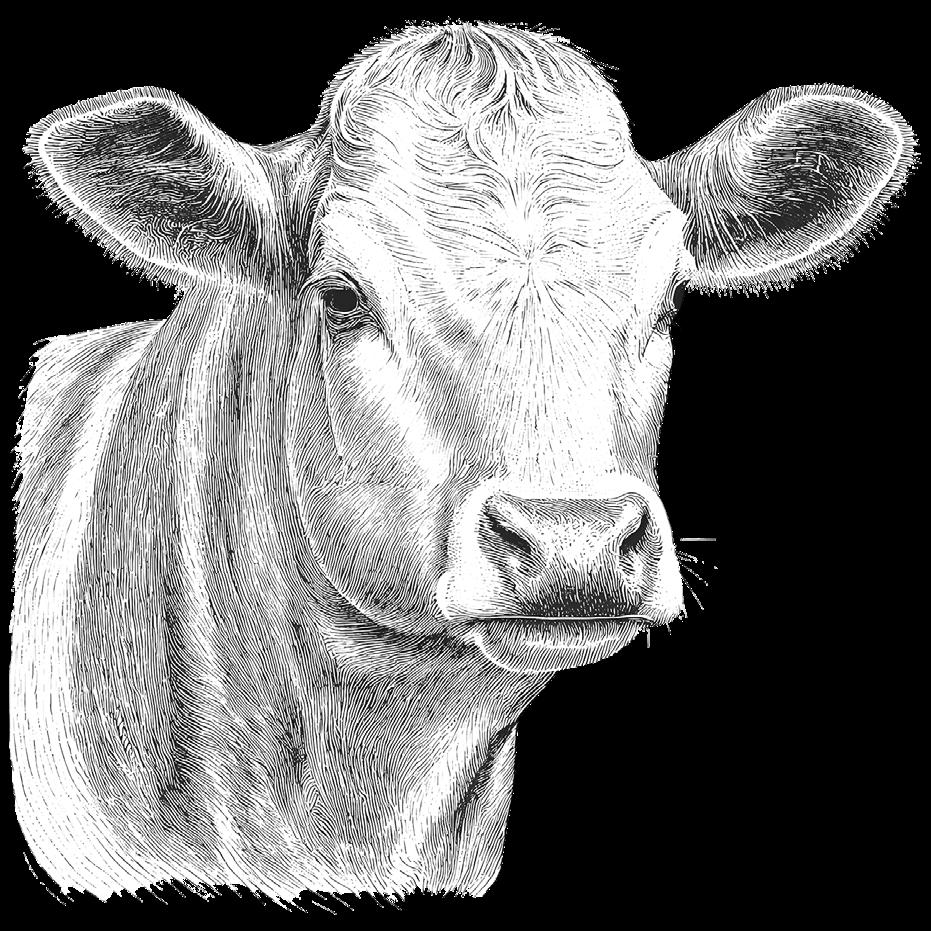
By GEORGEANNE WEBB, S.C. Charolais Association
Ihope everyone had a great holiday after all the horrible weather. I still say that as bad as it has been, so far, with hurricanes and terribly cold weather, I fully expect a blizzard before spring.
I attended a Farm Bureau dinner, and the speaker was Dr. Steven Marks, the new Dean for the College of Veterinary Medicine at Clemson University. I went up to meet him, and he laughed that two veterinarians had already warned him that I would be there. I told him I had been fussing for years that Clemson should have this, and I was tired of driving to Athens, Ga., with cattle. He gave a very good talk and answered a lot of questions. There were also some county representatives there, and I gave them my opinion on releasing those aggravating balloons that wind up in my pasture. I might not be invited to the dinner next year.
I want to tell you a story that happened here. I had a young guy call wanting a young bull. He came and picked out a ten-month-old. We delivered the bull to the middle of nowhere here in South Carolina. He has young children, and his five-year-old daughter went with him to feed the bull calf. The calf is tame as a dog, and he let her rub his head while he ate. His daughter informed him that the white cattle are prettier than the old black ones that he has. He called me back and wanted to buy two heifers for her. He took them home, and he said his daughter was waiting on him to get home from work every evening so she could help feed her heifers. I told him I had them listed online but had not named them yet, so she could let me know what to name them. When she got the papers in the mail for “Peppa” and “Pearl,” she was tickled to death and carried those papers around all day. I have a new marketing suggestion. Sell to a young man with small daughters who think white cattle are prettier than those old black ones. They can go to kindergarten, and their friends will all want white cattle.
time from the 3 rd to the 13 th calf! We keep a low birth weight, high milk bull, especially to breed our heifers, and often those great heifers will add enough growth and volume that those first calves are keeper females and good breeding bulls, and the same is true for second calves.
Look at the money. A 60 pound calf that reaches 1,200 pound slaughter weight at age 18 months with nice marbling but 200 pounds of waste fat at 4,000 calories per pound has wasted 800,000 calories. Grain at 2,000 calories per pound means a waste of 400 pounds of grain or comparable other feed, and at $160/T that is $32. Maintenance for six months when compared to the animal ready for slaughter by 12 months; minimum 50¢ a day or $90; total cost of growing slowly, $122 and less tenderness. Top quality animals of other breeds will narrow that gap, and the folks breeding Angus, Hereford, and Simmental are smart and capable of selecting breeding stock to do just that, but this is where the great white Charolais cow shines a bright light toward the future profits of cattle people everywhere there is good grass. A big cow has to eat well to maintain herself, get pregnant, give birth, nurse a big calf, and get pregnant again. Look at the money. A 30 pound difference in birth weight, 100 pounds difference in weaning weight, and a post weaning rate of gain that brings the costs to an end and puts money in the bank six months quicker. At six percent interest on a $1,000 animal is $30 more. Profit $152 a head.
Just assume a 600 pound calf off a British cow and a 700 pound calf off a Charolais and only 80¢ a pound at the market. For the same gross as 100 of the great white Charolais cows, you would have to have 117 of the British breed cows. That means 17 more of everything; semen or bulls, ear tags, vaccinations, registration papers, worm medication and worming, weighing, calving, and doing it all extra every season.
I’d much rather look after 100 great white Charolais cows than 117 of anything else! The 17 cows you don’t have to maintain, at $300 a head per year, is another $5,100 in your pocket untaxed.
The old saying from Ben Franklin was, “A penny saved is a penny earned.” I say $1 saved is $3 earned when you figure the cost of earning it and the taxes incurred!
Disposition, feet, udder, capacity to get pregnant, carry a calf, birth the calf, mother the young one, and nurse the big one, and do it all over again.This is THE GREAT WHITE CHAROLAIS COW.
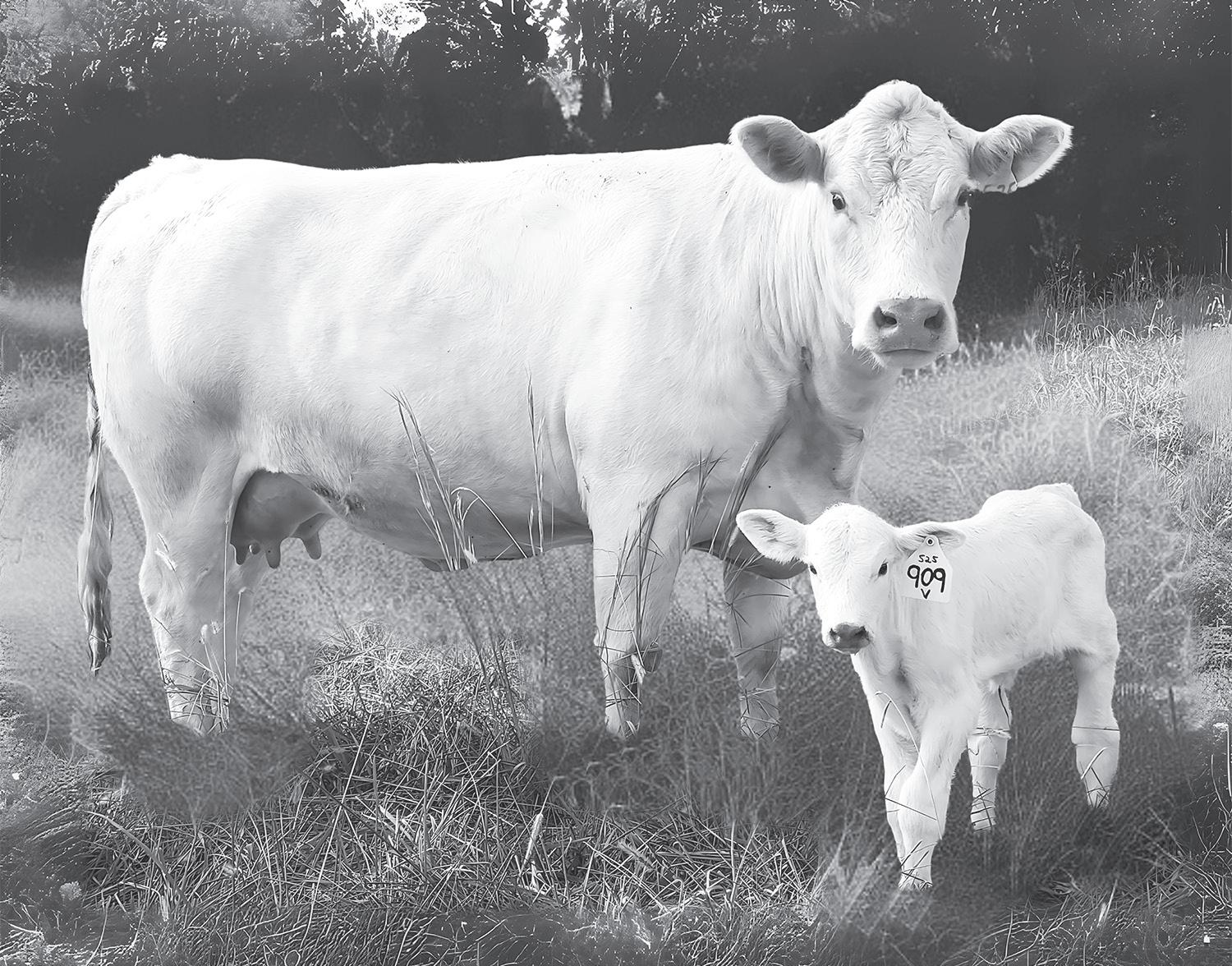
By MICHELLE JOHNSON
Hello from Cedar Hill Farm! We are Joey, Michelle, and Luke Johnson from Pageland, South Carolina. We own and operate a very small beef cattle farm, but we love what we do and want to do it well. That is primarily why we have always used, and will continue to use, Charolais bulls on our farm!
We sell our beef to our local community. Our customers keep coming back to buy more beef from us because they say they love the quality. They love that it is lean, but not too lean. They love that it is tender and that it tastes so much better than what they buy in the grocery store. We believe all of these characteristics of our beef come from using a Charolais bull with our brood cows.
Charolais cattle are well known for their great muscling, good growth rates, and much more. All of our calves that go into the beef sales are pasture raised until the last 30 days before processing. During the last 30 days, we put them up to give them only hay and grain feed. The Charolais influence in our calves makes them bulk up and put on weight quickly, without adding on all the extra fat that gets cut off during processing. Charolais crossed calves have just the right amount of marbling to make the meat tender but not drip with fat when it is cooked.
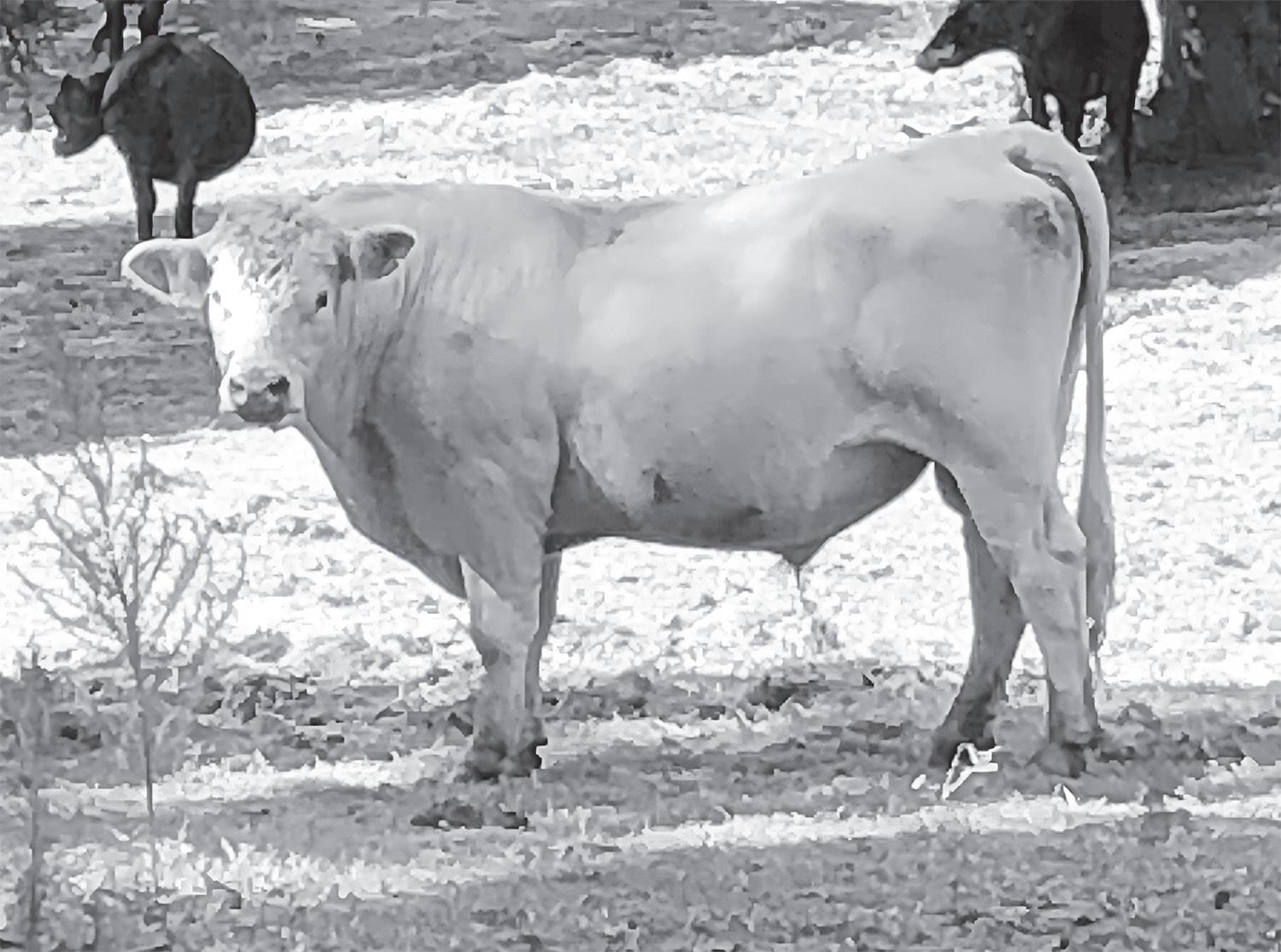
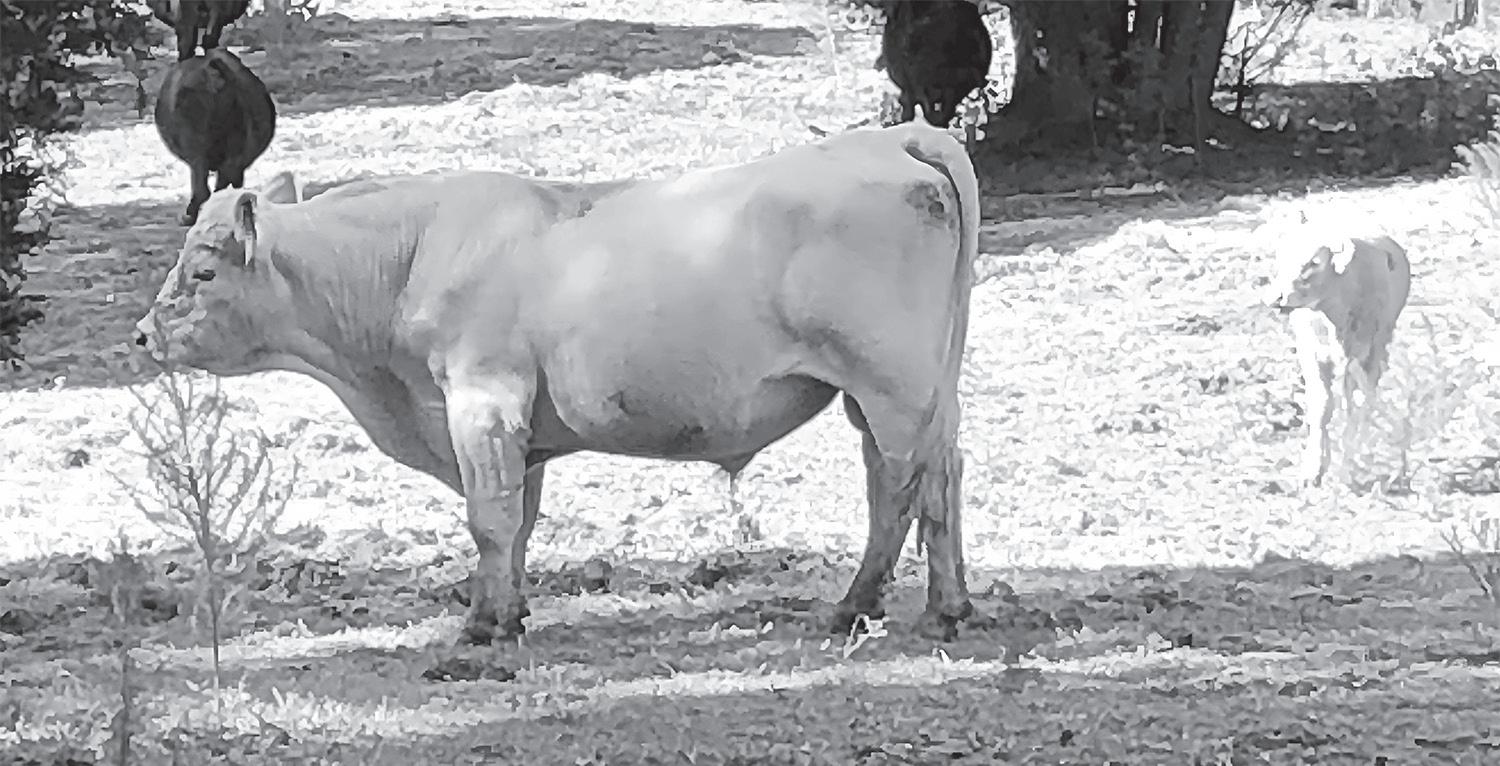
While most people in the cattle industry are going to all black herds. Cedar Hill Farm will continue to promote Charolais and the wonderful breed that they are! If you want good growth, easy calving, and docile dispositions, Charolais is the way to go!

By JOHN DELLINGER
In cattle breeding, we are often faced with choices. One example is that we might have to choose between two similar females to keep or buy. The two look alike, perform similarly, have similar breeding values, and even have similar pedigrees. To us, it seems the only real difference is that one of the two is from a cow family that has some degree of popularity or fame, and the other is from a line of “just cows.” What do you do?
I think most breeders would prefer the one with the cow family history. But is there any reason to do that?
What’s a Cow Family? A “cow family” consists of the animals that descend from a common maternal line in their pedigree. That’s the bottom line of the pedigree, I guess, theoretically reaching back to Noah or Adam or evolution’s primordial ooze. Cattle breeders have long considered the cow family of a breeding animal to be very important. In the Charolais breed, the foundation herds — Yates, Michaelis, 4-T, and Thomas — sorted themselves over time as better lines of cows became evident and pushed lesser cows out of the herd. I think breeders who have had mostly closed cow herds would notice the same thing over time — the most useful cattle in the herd will likely come from a smaller number of cow families, with the less useful cow families becoming less numerous and eventually going away.
Mendel and Other Science – Mendelian genetics would say those of us who think there is something genetically special about cow families are probably wrong. Except for genes that have a dominant or recessive character, all parents, on average, are equal in their contribution of genes to their offspring. If considered over a three generation pedigree, that means, on average, each of the eight greatgrandparents contributes the same — 12.5 percent of the genetics. Good cows on the maternal line of descent are important — just like good parents throughout the pedigree — but not more important. However, there is some science that suggests it might not be so simple. A small amount of an animal’s genetic code is derived from a different type of DNA — called mitochondrial DNA — which is only inherited through mothers. In the dairy industry, it’s been shown that mitochondrial DNA plays a role in the transmission of genetics for milk yield and milk fat. In beef cattle, backfat and lean yield have
been linked to mitochondrial DNA inheritance.
Another possible mechanism that might result in some “extra” contribution through the maternal line is epigenetics. Epigenetics are heritable changes in the expression of genes that occur without alteration of the DNA sequence. Epigenetic changes are thought to occur in the fetus during pregnancy in response to the environment faced by the mother. A common example is how the gene expression for fat accumulation is “turned up” in animals whose mother faced dietary deficiency during pregnancy, resulting in a heritable tendency to obesity.
All that said, the best science seems to be that something different about maternal inheritance is not likely to be all that important in the genetic code of cattle in a cow family. That does not mean, however, that some cows and their maternal ancestors are just better cattle in whatever traits breeders are selecting for. Good cattle are potentially useful wherever they fall in a pedigree.
Which actually brings up what might be really the most important reason the cow family is important. The maternal line of descent is especially important among some Thoroughbred horse enthusiasts, but only because of the lack of sufficient information about the genetic abilities of female animals. In a world where sires are subject to a great deal of genetic evaluation due to their hundreds or thousands of progeny, the bottom line of a pedigree is actually the line with the least information. Thus, it is potentially a weak spot in the pedigree. Selecting a maternal line of genetics that is known to be successful is simply a risk management strategy.
An Important Charolais Cow Family from the Carolinas –Whether they are important just because they are good animals or because they have a special genetic mechanism such as mitochondrial inheritance or epigenetics or as a risk management tool, there have been many successful cow families over the years in the Charolais breed. The Miss Lin 33 cow, AICA registration number 1, may be the most important cow ever. Almost every cow in the breed for the last 70 years would trace back to her many times. The Nancy cow family, which originated in the Dakotas and was developed by the Wienk family, has been extraordinarily important over the last 30 years. M6 Grid Maker 104 and many other important cattle trace back to the
Nancy family. And the Germaine cows started in Texas back in the 1950s, going to New England, and then Virginia, and by now all over the world.
Arguably the most important cow family in the U.S. over the last 30 years traces back to Virginia and North Carolina. Grier Beam’s Sunbeam Farm in Cherryville bought a heifer from JCJ Ranch in Virginia. She produced until she was 11 for Sunbeam and Rucker Charolais in Shelby. One of her daughters, Sunbeams Pearl 4176, made it to Martin Charolais in Fallston, where she produced until she was ten. One of her daughters, MCF Scepers First Lady, won a championship at the N.C. State Fair. The Martins bred her to FZ
Mighty Mac 828 and sold her in a North Carolina Charolais Sale in April 1984 to Rogers Bar HR Charolais in Mississippi. Her first calf was HBR Lady Mack 459, who would produce two very important daughters. One was HBR Lady Liz 721, who would produce JWK Impressive D040. The other was HBR Lady Performer 934, who would produce JWK Vanessa and JWK Ruby. Tens of thousands of Charolais cattle trace back to this cow family.
I don’t think there is any real doubt that good cow lines are important, and, over time, it seems clear some cow lines are better than others. Figuring out whether there is any “extra” value in cow genetics compared to others in a pedigree is still a work in progress.


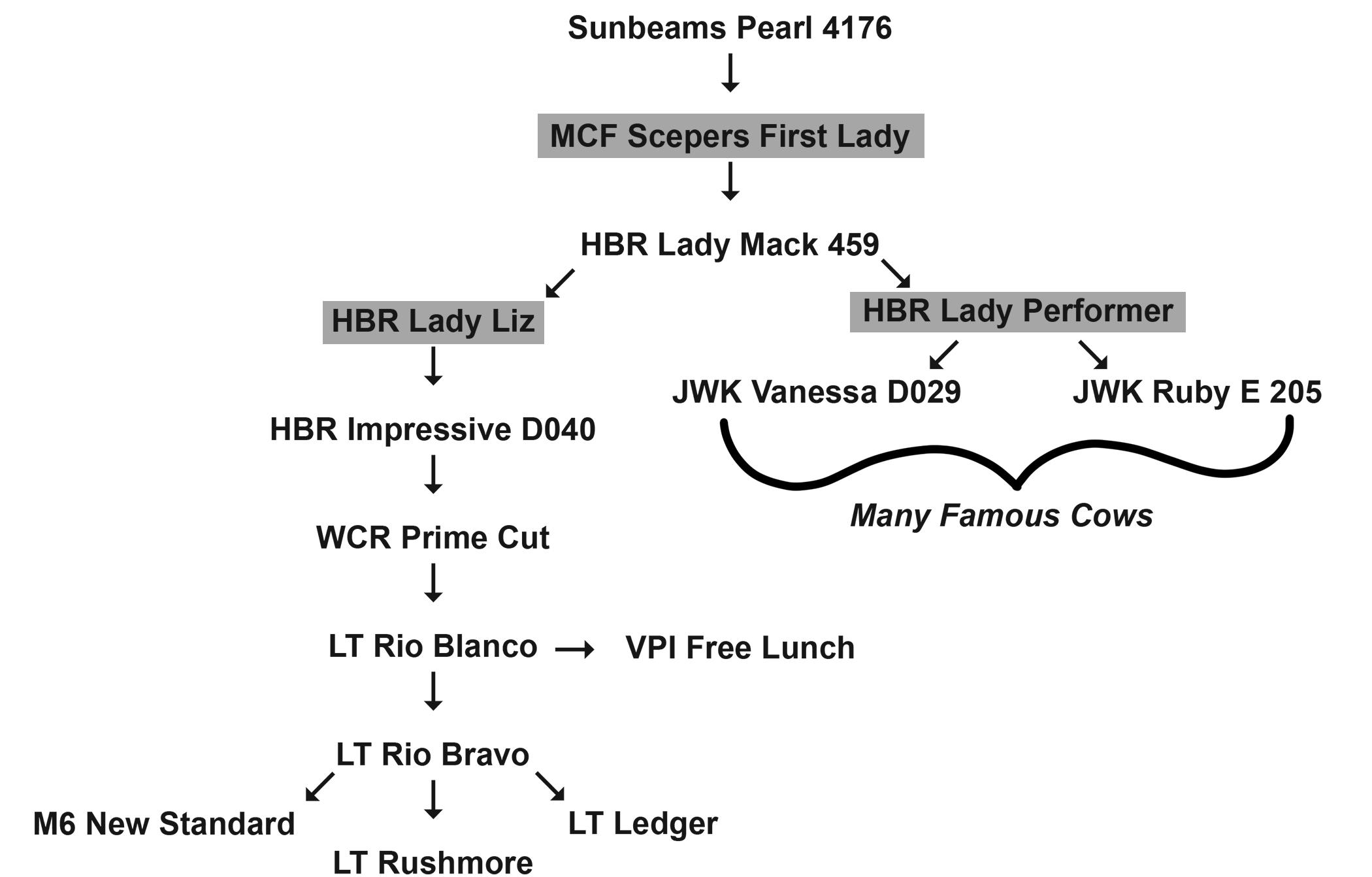
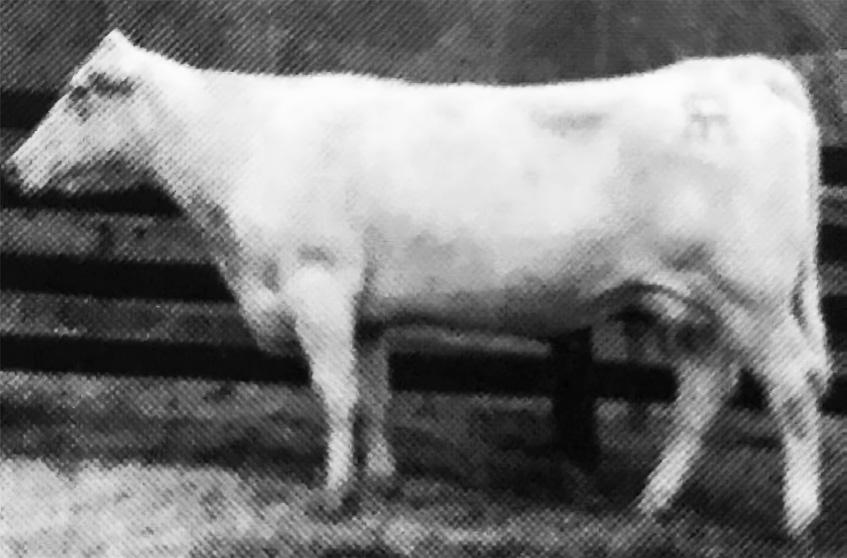
By JOHN DELLINGER
Iwas asked to write a short article about Charolais cattle, and I’m sure happy to talk about Charolais bloodlines. First, I should introduce myself. I’m John Dellinger. My farm, Faraway Cattle Company, is in Vale, North Carolina. We have a small herd of Charolais brood cows. Our breeding program is based on linebreeding to just a few animals. But I’m not going to talk much about my cows. Charolais are a very old breed, but have only been in the United States for a fairly small part of their history. The breed originated in France, perhaps as early as the 8th Century. The first French registry was started in the mid-1800s. The first herd in North America was established by Jean Pugibet after World War I. He arranged for a shipment of two bulls and ten heifers to Mexico in 1930.Two later shipments in 1931 and 1937 increased the total number to 37 - 8 bulls and 29 females. The first Charolais to come from Mexico are believed to be two bulls, Neptune and Ortolan, which were purchased from Pugibet by the King Ranch in Texas and imported in June 1936. There were later imports of bulls. Notably, a bull named Wee was bred by Pugibet and imported into the United States. A large percentage of the Charolais cattle in the United States would trace back to Wee.
Because of an outbreak of foot-and-mouth disease, there were
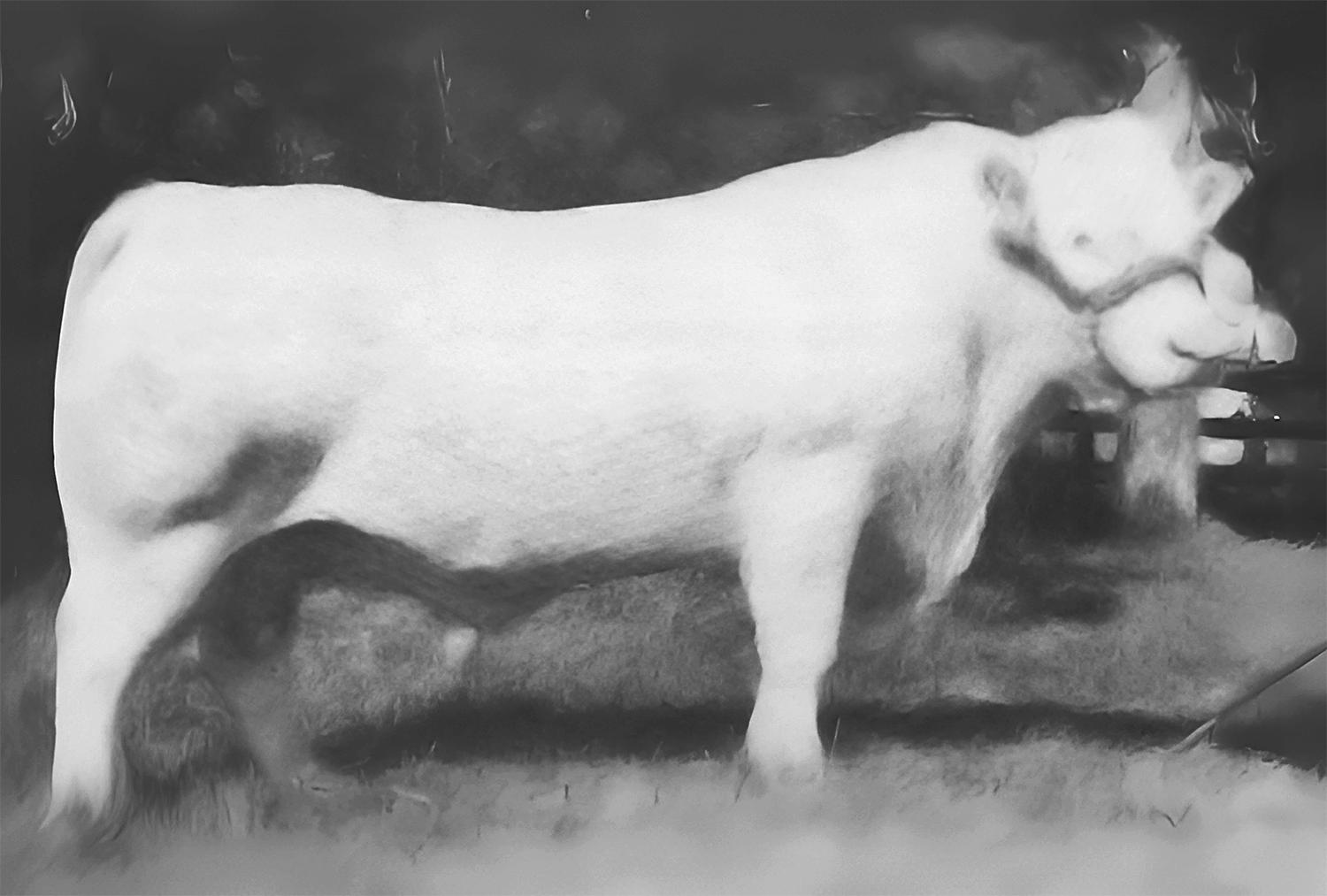

no importations of French Charolais cattle into the United States from the 1940s until the 1960s. This really restricted the supply of Charolais cattle in the United States. To expand the breed, American breeders established a five generation “breeding up” program. This program involved using purebred Charolais bulls for five consecutive
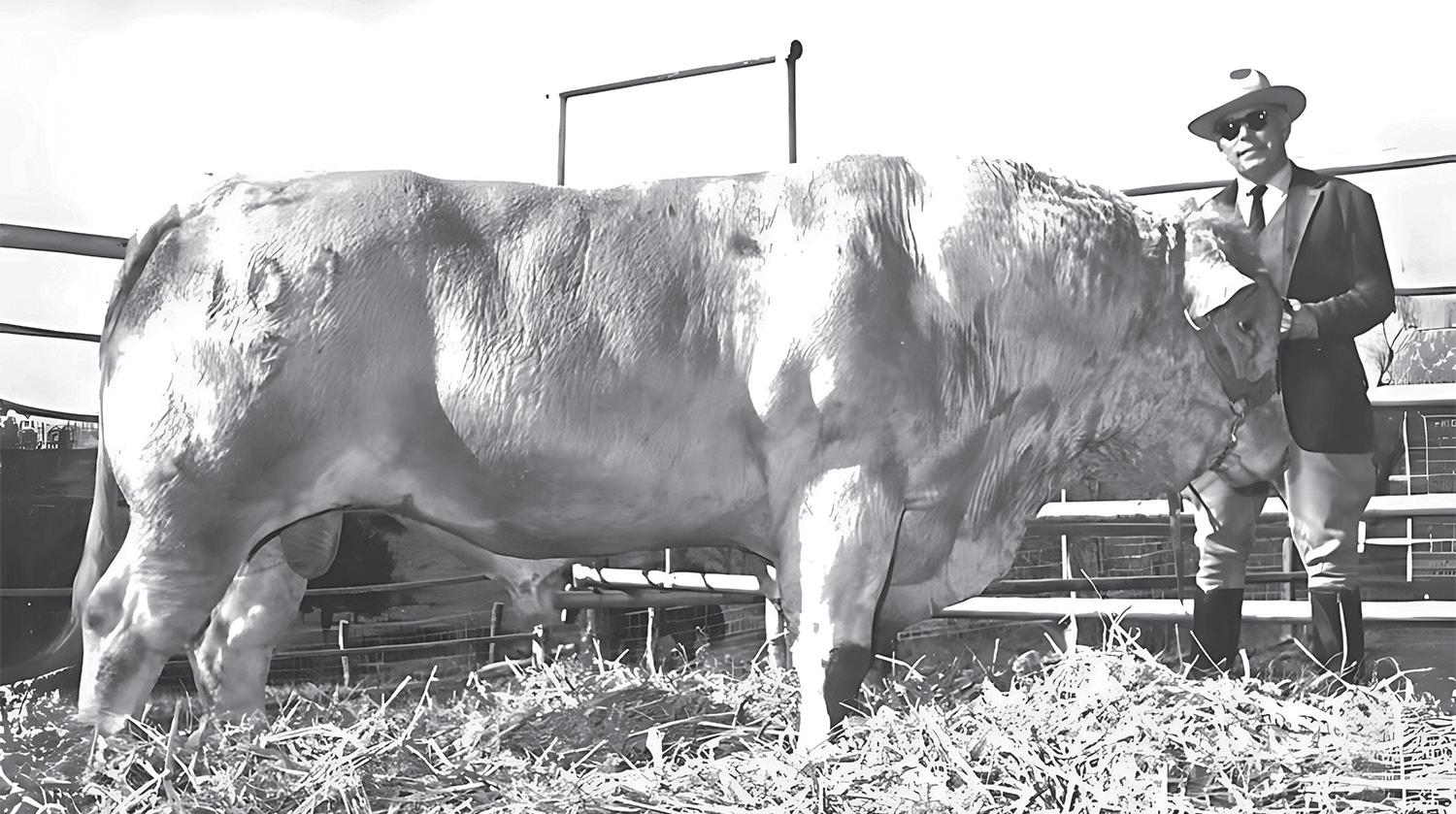
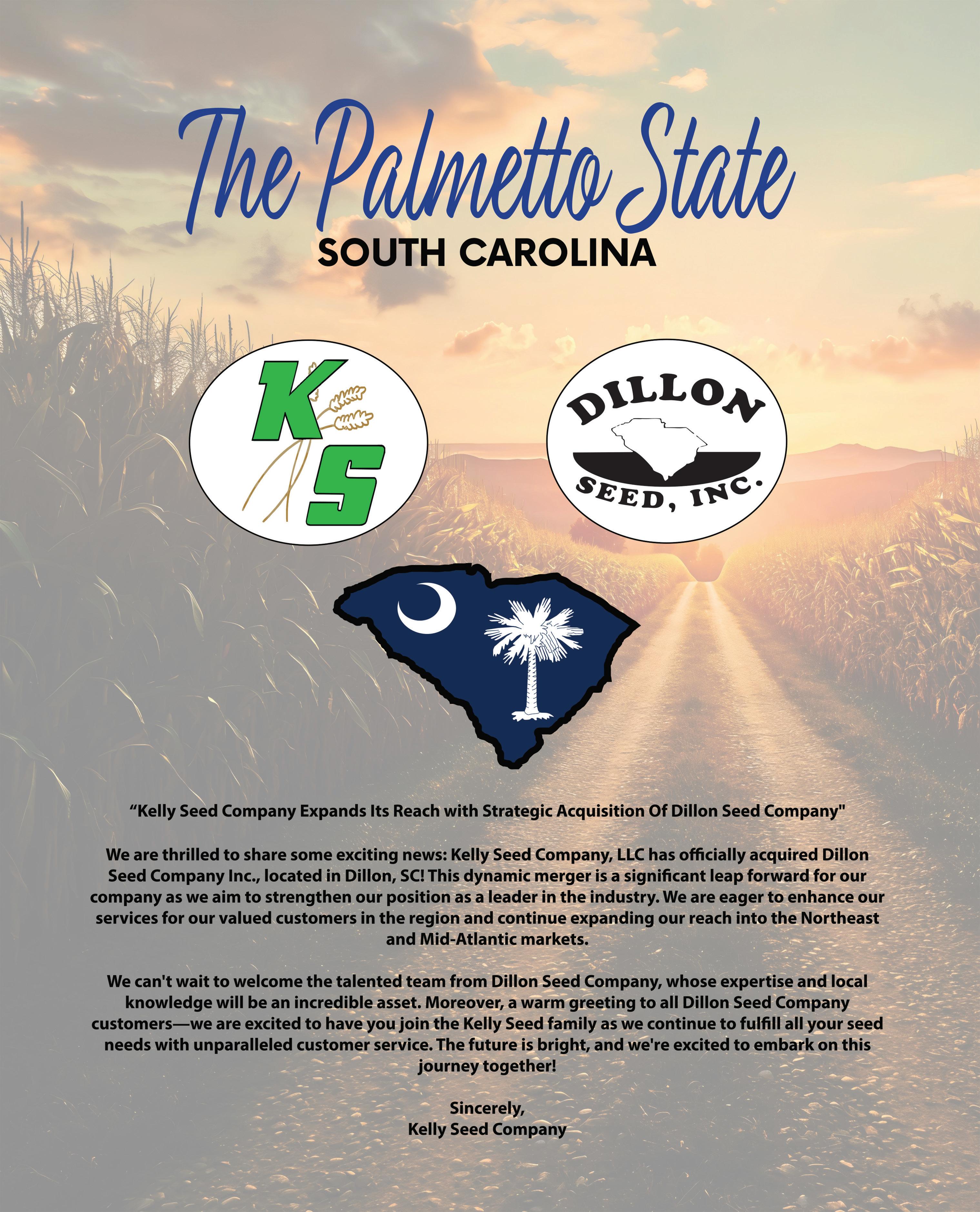
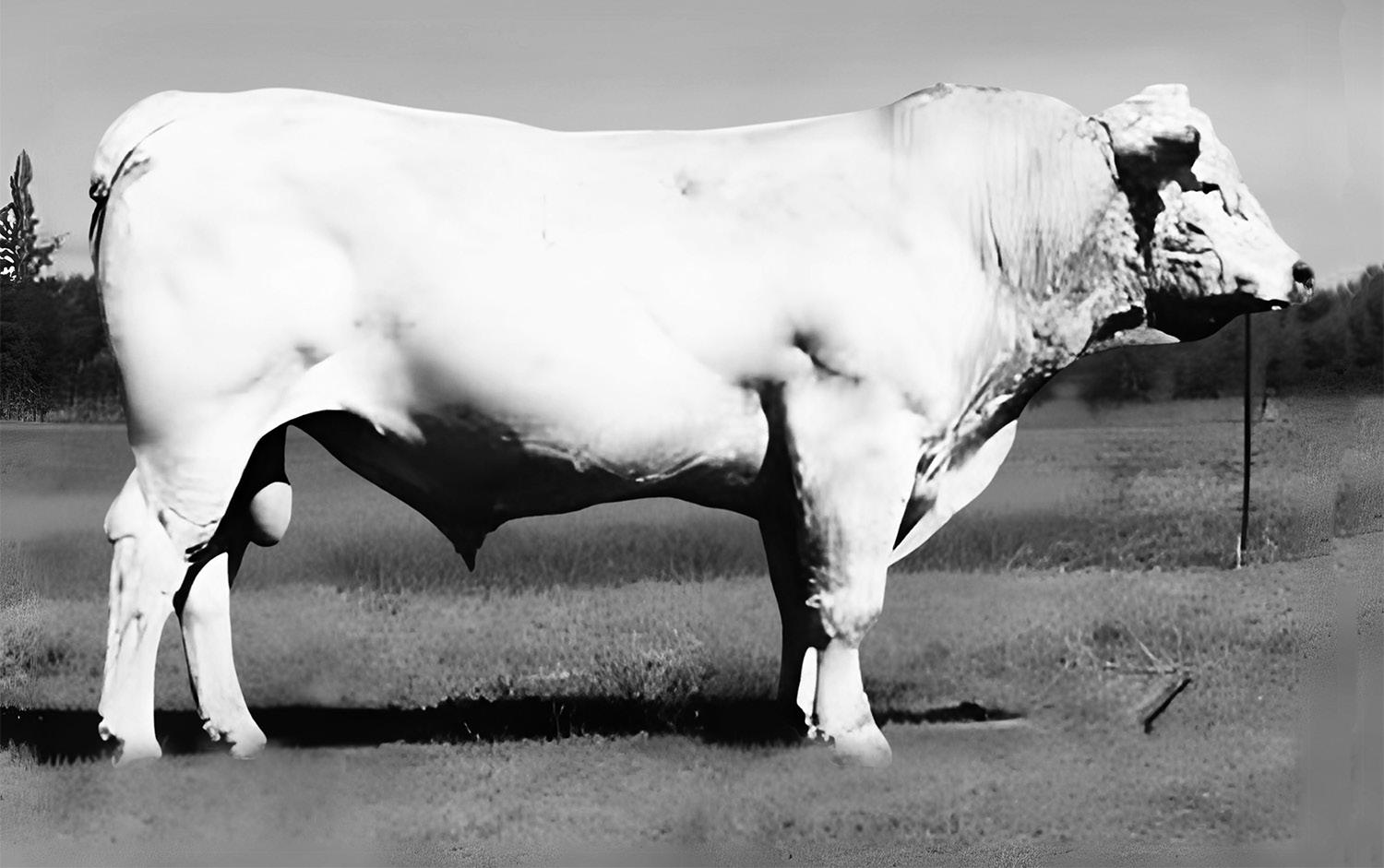
generations to produce a 31/32 Charolais animal, which was considered the equivalent of a purebred. Unless an animal in the United States is identified as a full French animal, it very likely traces back to cattle that were “bred up” to purebred Charolais.In fact, the breeding up program is the source of almost all of the polled genetics in the breed, since Charolais in France were a naturally horned breed. The polled gene in Charolais cattle in the United States comes from polled cows, like Angus or Hereford cows, that were the foundation cows of the breeding-up program.
The American Charolais breed as it developed based on the early importations and the breeding-up program seemed to produce a type of animal that was very useful, if a bit less imposing than the French cattle. They were longer muscled, more moderate in frame, and were hardy, capable of getting by in pretty tough surroundings. Then, in the 1960s and 1970s, French cattle began arriving again. Some of the French cattle that came then didn’t work out well due to structural and genetic problems, and due to a mismatch of the bulls with the cows which resulted in calving difficulties. However, the French cattle that did work out became very influential in adding a bit more muscle and power to the American cattle.

From here, I’m just going to mention a few bulls that have been extraordinarily influential in the current American Charolais breed. There are two French bulls that need to be mentioned. Avignon was imported in the 1960s. Nowadays, almost all of the cattle in the breed who trace back to Wienk Charolais or Lindskov-Thiel Ranch genetics have the influence of Avignon through his son, Nutmeg’s Avignon FR31. Avignon produced thousands of useful sons and daughters that were born easy and grew fast before becoming productive breeding animals. The other French bull that I should mention is Belphegor, known as Bingo. The Bingo cattle were very influential in the Wienk cattle and the Rogers cattle from Mississippi. These cattle were good doing cattle, with exceptional carcass traits and excellent milk production.

The Sam line of cattle was very influential in the 1960s through the 1980s. They were an example of the earlier American style Charolais before the return of the French cattle. They sprung from the Litton Ranch in Missouri and were based on the progeny of FWT Bar 951, known as Sam. They were famous as a source of polled genetics. This bloodline has generally fallen away, but there are Sam cattle in many modern pedigrees. By far, the most influential line of breeding in American Charolais is Paul. Paul 109 was born in 1959. He was the grandson of Señor of Sandrellan, who was a grandson of some of the original Mexican imports. Paul was a polled bull, and had calves born from the early 1960s through 1999. One line of Paul breeding included a granddaughter who ended up being a grandmother of the bull BR Duke 261. BR Duke 261 subsequently produced sons that resulted in the Wyoming Wind line, the Duke 914 line, and the Mr. Perfect line. A granddaughter of Duke 261 became the grandmother of M6 Grid

Maker. Between those bulls — Grid Maker, Wyoming Wind, Sir Duke 914, and Mr. Perfect — almost all of the more popular cattle in the breed are Duke 261 descendants.
Paul 109 also produced a grandson named FZ Mac 236. That bull in turn produced a grandson named BCR Polled Unlimited. All of the Lindskov-Thiel genetics trace back to BCR Polled Unlimited many times. FZ Mac 236 also produced a grandson named WCR Sir Fab Mac 809. All of the Wienk genetics trace back to Mac 809 many times.
And there are many more examples of bulls that trace their lineage back to Paul 109. The take home lesson is simply that a great
deal of what is good is in the modern Charolais breed.
There are, of course, a great many other bulls that deserve to be talked about. For example, the Michaelis Ranch cattle in Texas form a great part of the base of the breeding programs at Cobb Charolais, DeBruycker Charolais, and Eaton Ranch in Montana, three very important herds. And there are several other French bulls that contributed along the way to make the breed what it is today. We need to remember that the genetics we see today came from these founding bulls of the breed. Knowing more about them can help modern breeders make better decisions when buying herd bulls.
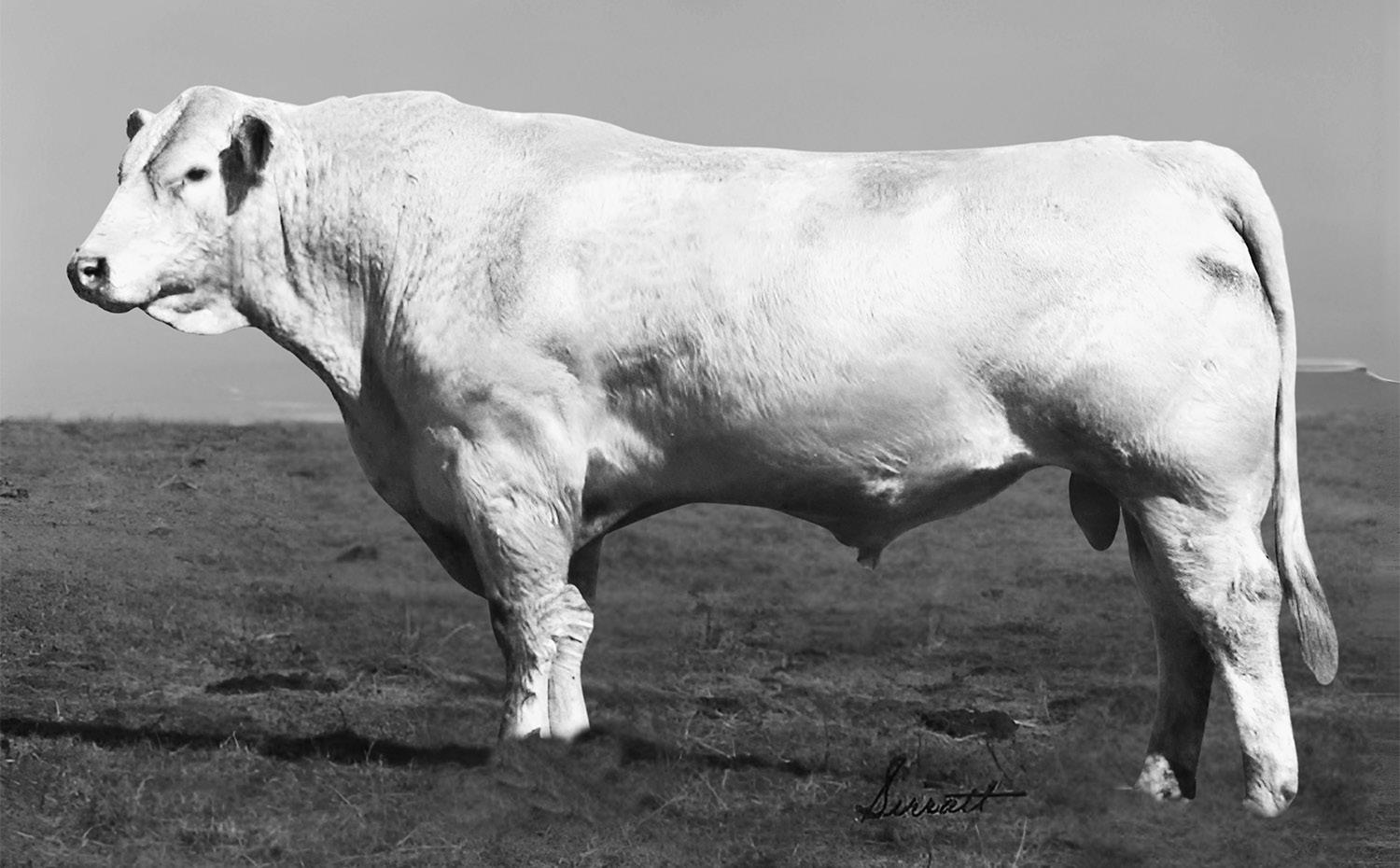
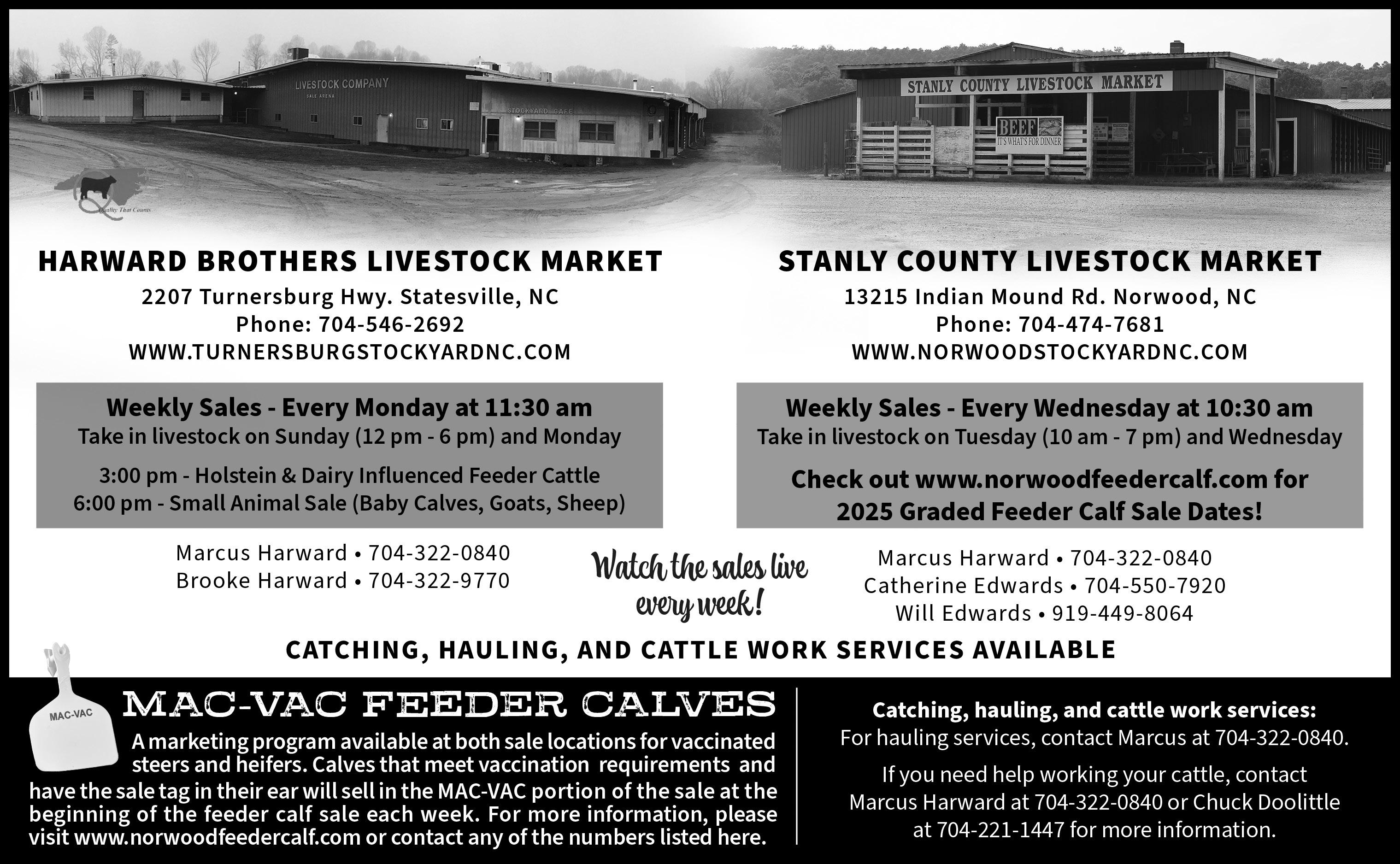
By JOHN DELLINGER
My previous article was about the history of Charolais cattle in the United States. Now, I am going to expand on some of the things I’ve already talked about by focusing on one bull that is among the couple of most influential bulls in modern Charolais pedigrees. This bull’s heritage traces back to some of the very first cattle that came from France, through Mexico, to the United States in the 1930s. That base of genetics was then crossed with some French genetics that came to the United States in the late 1960s. And his progeny have proven to be very successful up until today.
In the mid-1980s, the Charolais breed, like most other beef breeds in the United States, was fully caught up in a craze in which the tallest framed animals were considered the best. Every year, the cattle got taller. At the same time, the cattle became frail and light muscled. The cows didn’t produce enough milk, and were hard doing and difficult to maintain. Certainly, there was a need for a change. In late 1984, Wienk Charolais of Lake Preston, S.D., purchased a bull from Bauman Ranch of Carpenter, Wyo., with no fanfare. They didn’t know it then, but that bull would change the Charolais breed throughout the world over the next several decades.
BR Duke 261 was calved in 1983. Wienk Charolais had their first calves by him in the fall of 1985. Since then, he has had 3,339
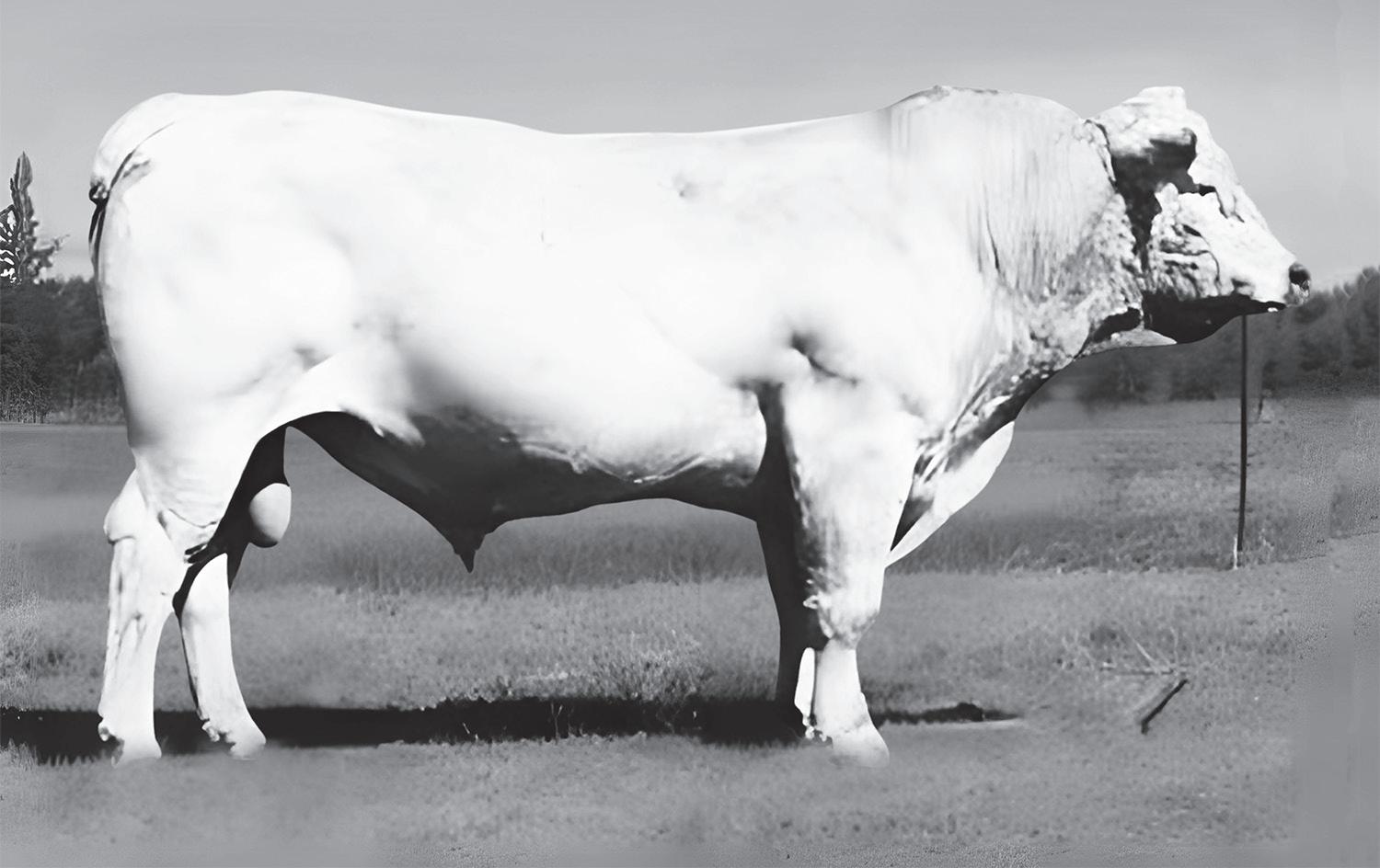
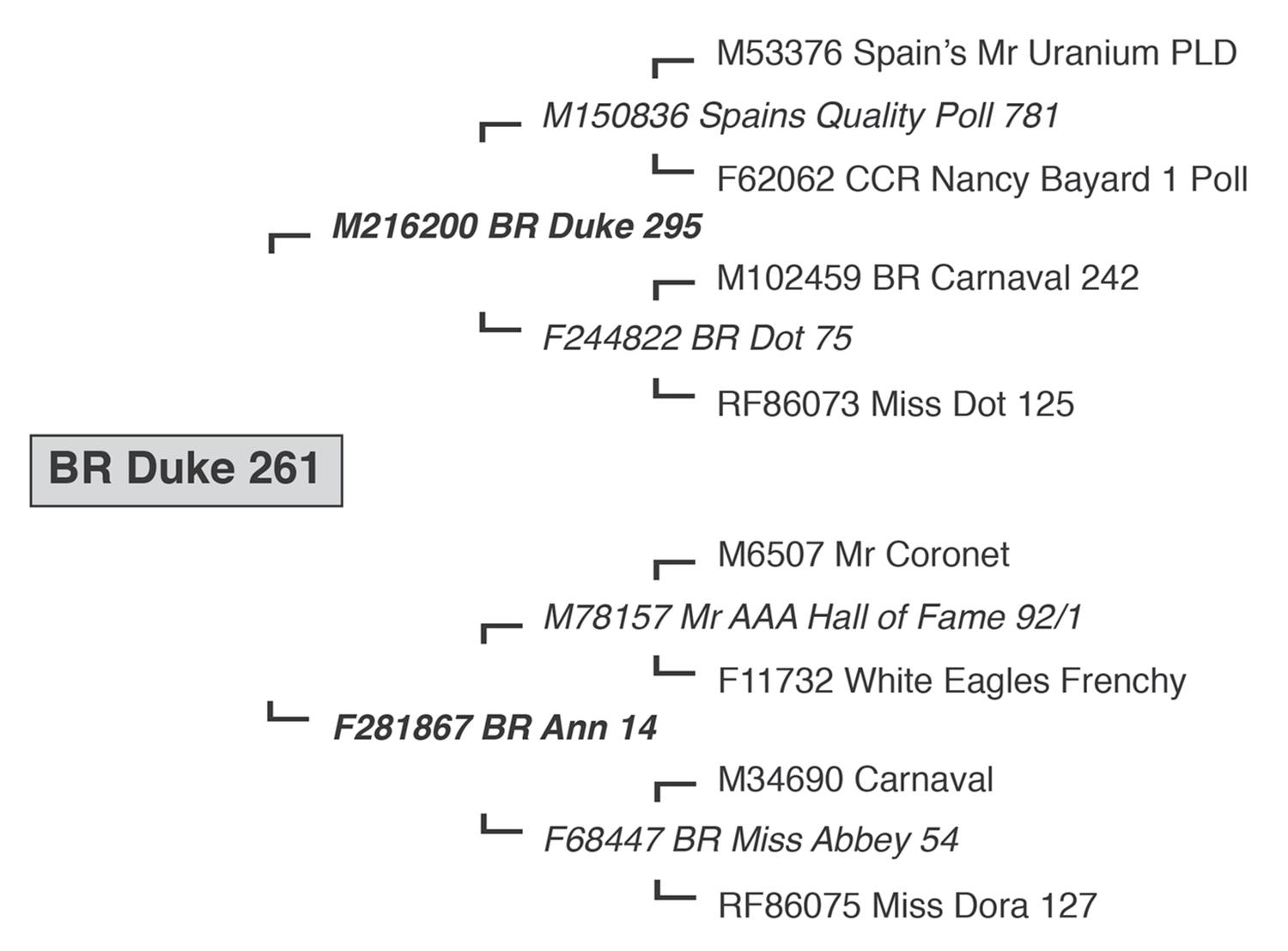
calves registered in the United States, with calves being born every year through the present. He came on the scene for a lot of reasons. He was polled. His calves were smaller framed and thicker, and the cows were good milking, good uddered, easy keeping cows. The early genetic evaluations in the Charolais breed identified him as a leader across several important traits. Even now, after over 30 calf crops, his EPDs are still respectabl. He’s still in the top third of the breed in weaning weight, milk, carcass weight, and marbling.
BR Duke 261 is interesting genetically because of his ancestry and because of his descendants. If you study his pedigree, several interesting patterns emerge that tie into my previous article. I talked about the original shipment of cattle into the U.S. from Mexico in the 1930s. I have charted how Duke 261 traces back twice in just a few generations to a bull called Mr. Coronet. Mr. Coronet was a grandson of cattle that were in the original importation. I also talked about the importance of the descendants of Señor of Sandrellan and Paul 109 in U.S. cattle. Señor of Sandrellan was also a descendant of the
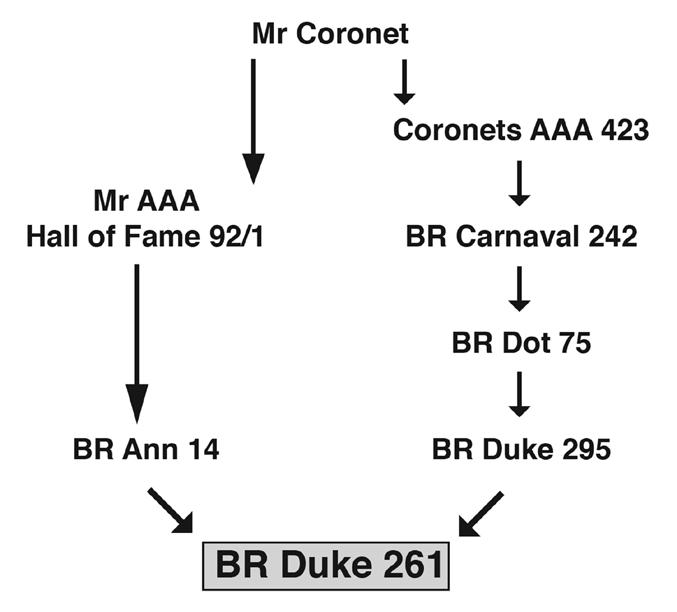

original importation cattle, and as you can see in the pedigree, Duke 261 traces back to him and his grandson Paul as well.
I also talked about the importation of full French Charolais bulls in the 1960s and 1970s. You can see in BR Duke 261’s pedigree that he traces back to a full French bull, Carnaval, who was imported in the late 1960s. Carnaval would go on to be a very important sire and is still being used a bit today.
BR Duke 261’s pedigree is interesting, but the real importance of BR Duke 261 in the modern Charolais breed in the United States is measured through his descendants. This is a diagram that shows how a good proportion of the Charolais breed in the U.S. today are reasonably closely related to each other at least because they can be easily traced to BR Duke 261.
The diagram to the right shows the relationship of many of the most popular cattle of the breed through BR Duke 261. The bulls pictured to the right are a sample of the very important sires that trace back to BR Duke 261 at least once.
This is all very well known information, but what do you do with it? You could determine how closely related animals are based on the diagram. The fewer the links between animals, the closer related they are. For example, there are only three links between VCR Sir Duke 914 and M6 Grid Maker 104, so they would be something like second cousins. This kind of information might be helpful if you are trying to buy or breed cattle that are either more related or less related to each other. Of course, this doesn’t take into account relationships through other ancestors, but it still might be helpful. If you were actually interested in using bloodlines that aren’t related to BR Duke 261, you

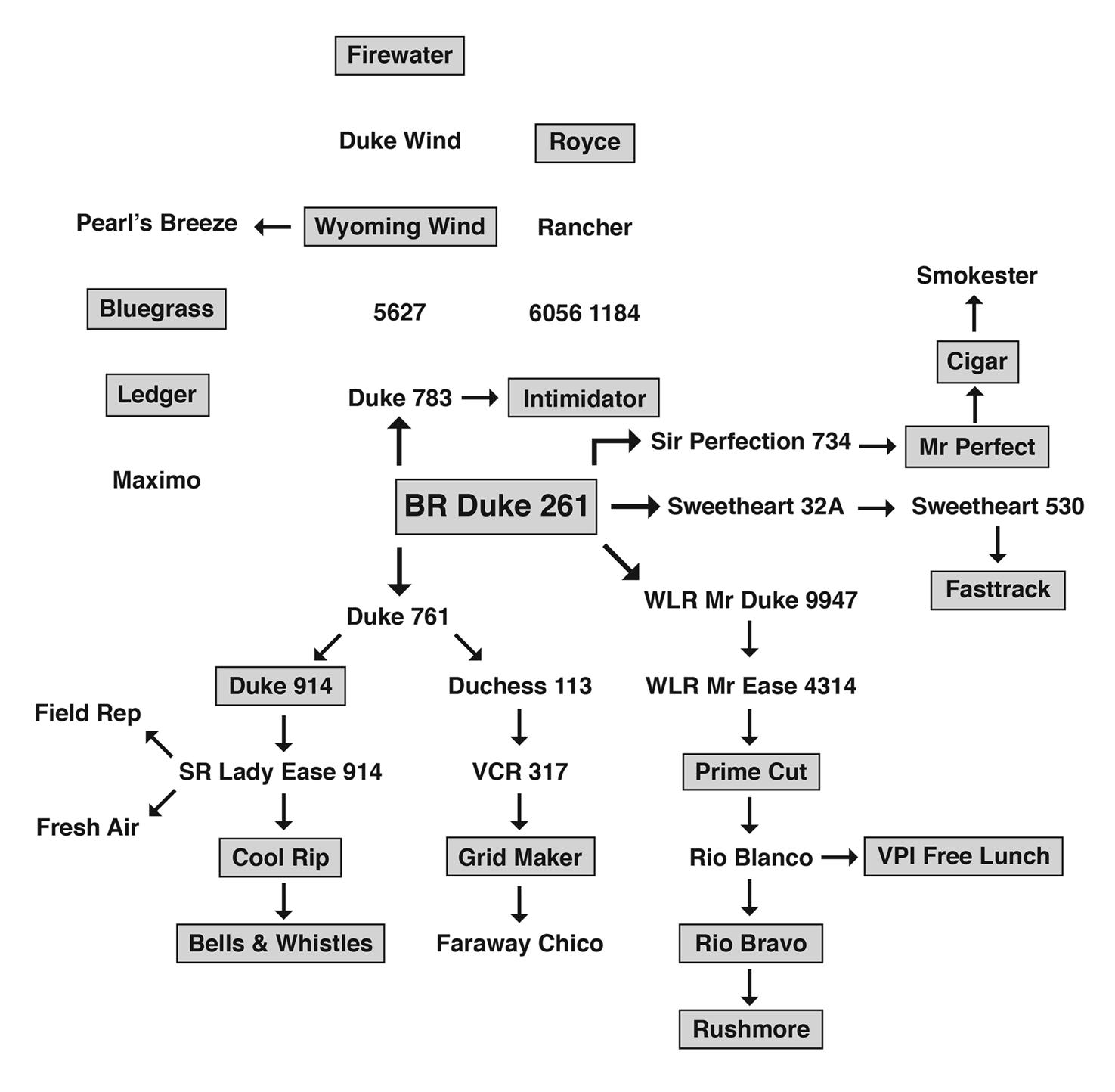
could search for cattle that don’t show up here.
I hope this little article reminds breeders of the importance of studying pedigrees to make breeding decisions. However you structure your breeding program — whether you try to linebreed cattle or try to avoid linebreeding cattle — it is crucial that you study the pedigrees thoroughly and understand the family behind the bulls.
I hope you are enjoying this series of articles. My next installment will focus on the history of Charolais cattle in the show ring.
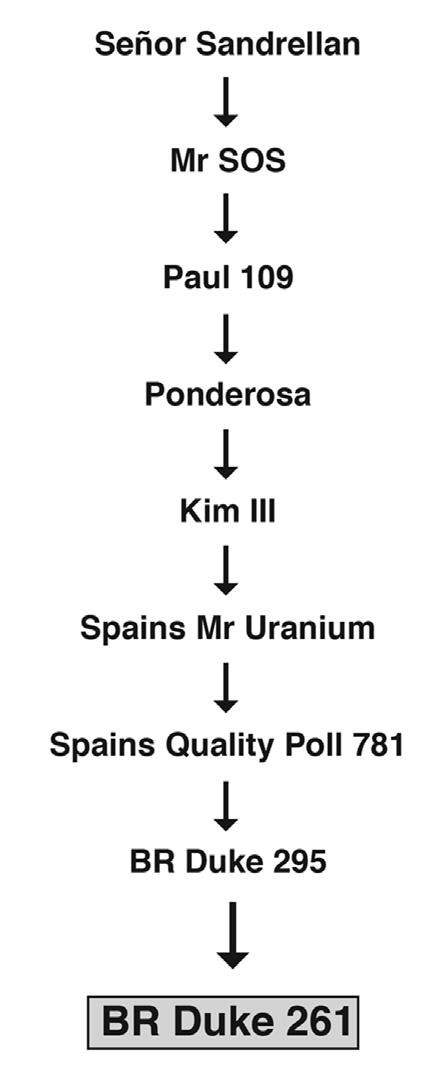
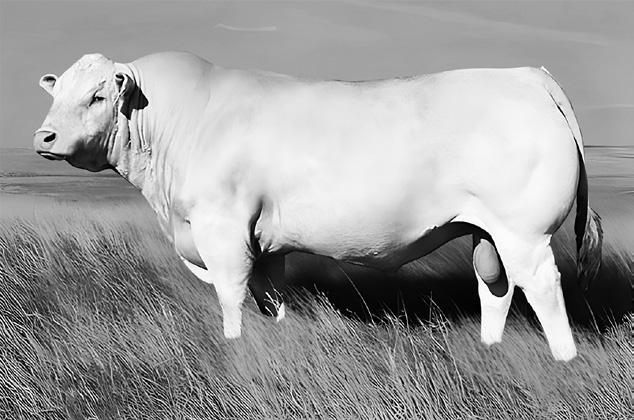



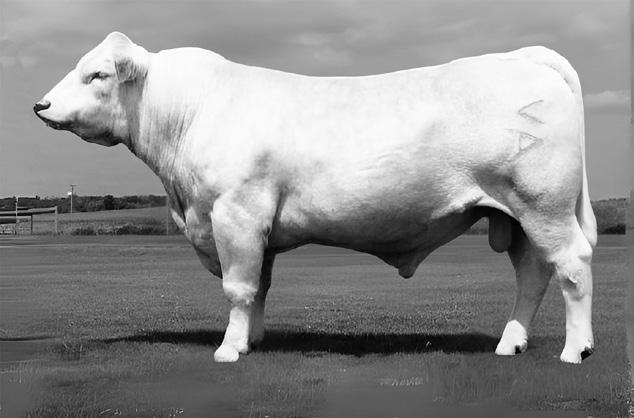
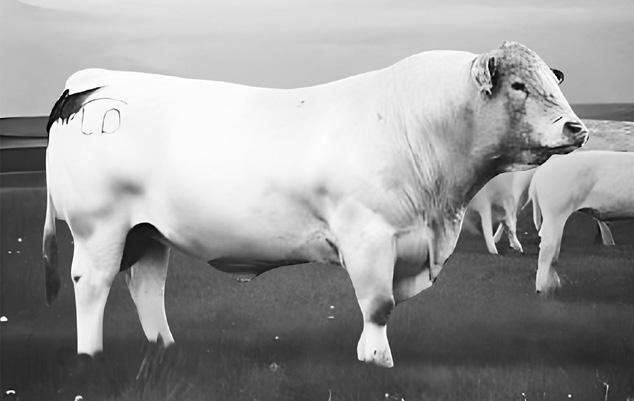
By JOHN DELLINGER
In this series, I have written a couple articles about the history of Charolais cattle in the United States. I wrote generally about influential bulls, and I wrote about the extra influence of a bull named BR Duke 261. Here, I thought I’d write a bit about the history of Charolais cattle in the show ring.
I guess it’s likely that cattle breeders have been showing cattle in competitions against other breeders for centuries. Modern breeds didn’t develop until around 1800-1850 or so. Showing cattle competitively became a “thing” especially after there were better defined breeds and registries keeping track of pedigrees. Until the time of performance testing and the calculation of EPDs, it’s likely that success in the show ring was the most important element that caused other cattlemen to be interested in a breeder’s genetics.
In the Charolais breed, there were shows in France since the 1800s at least. A show winner from about 1915 is pictured here.
The Charolais breed came to the United States from France in the 1930s, and there have probably been shows of some sort since then. However, it was not until the late 1960s that Charolais cattle were allowed to show in many of the major livestock expositions in America. At that time, many of the established breeds — Shorthorn, Angus, and Hereford — were still quite small by modern standards.
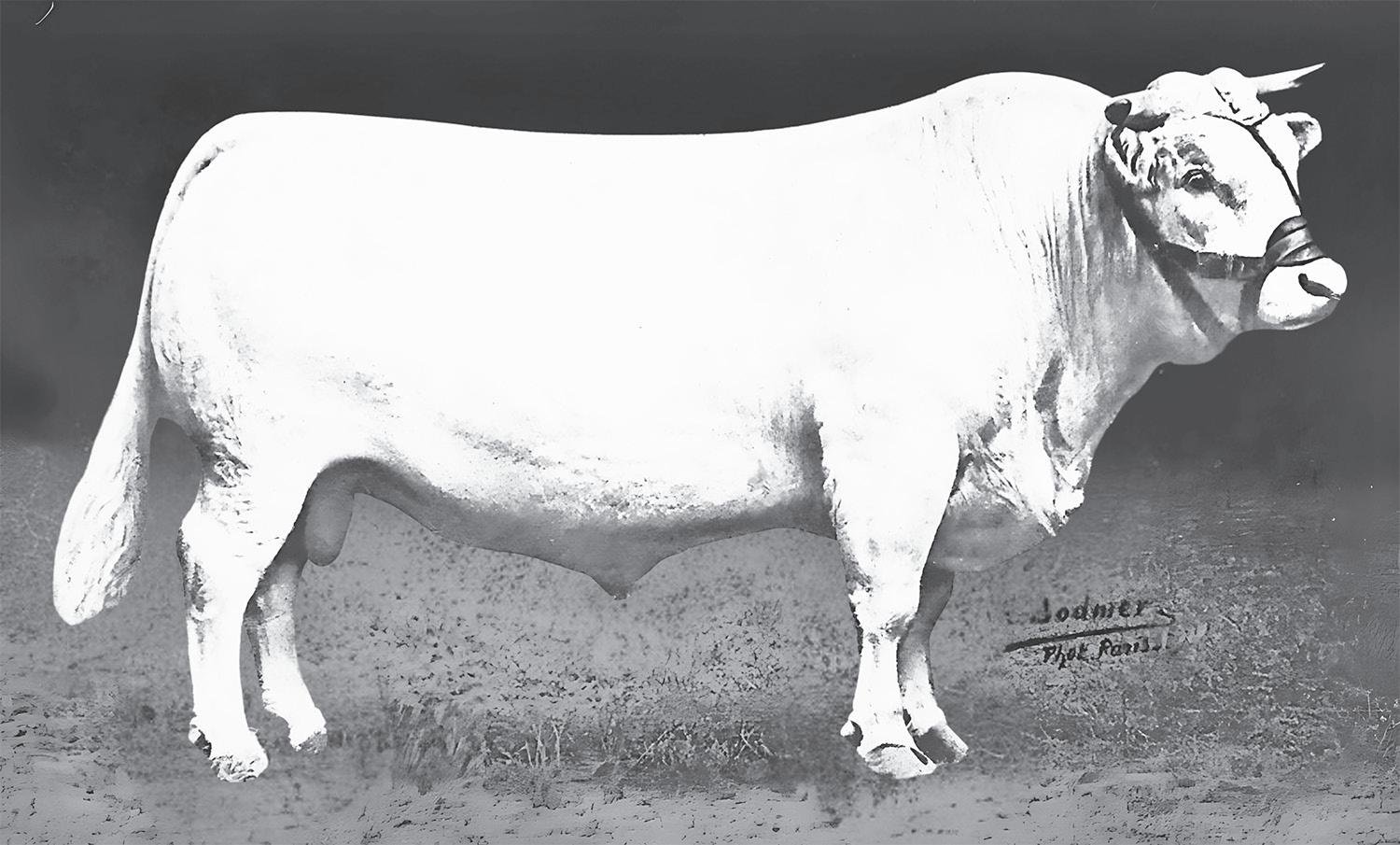
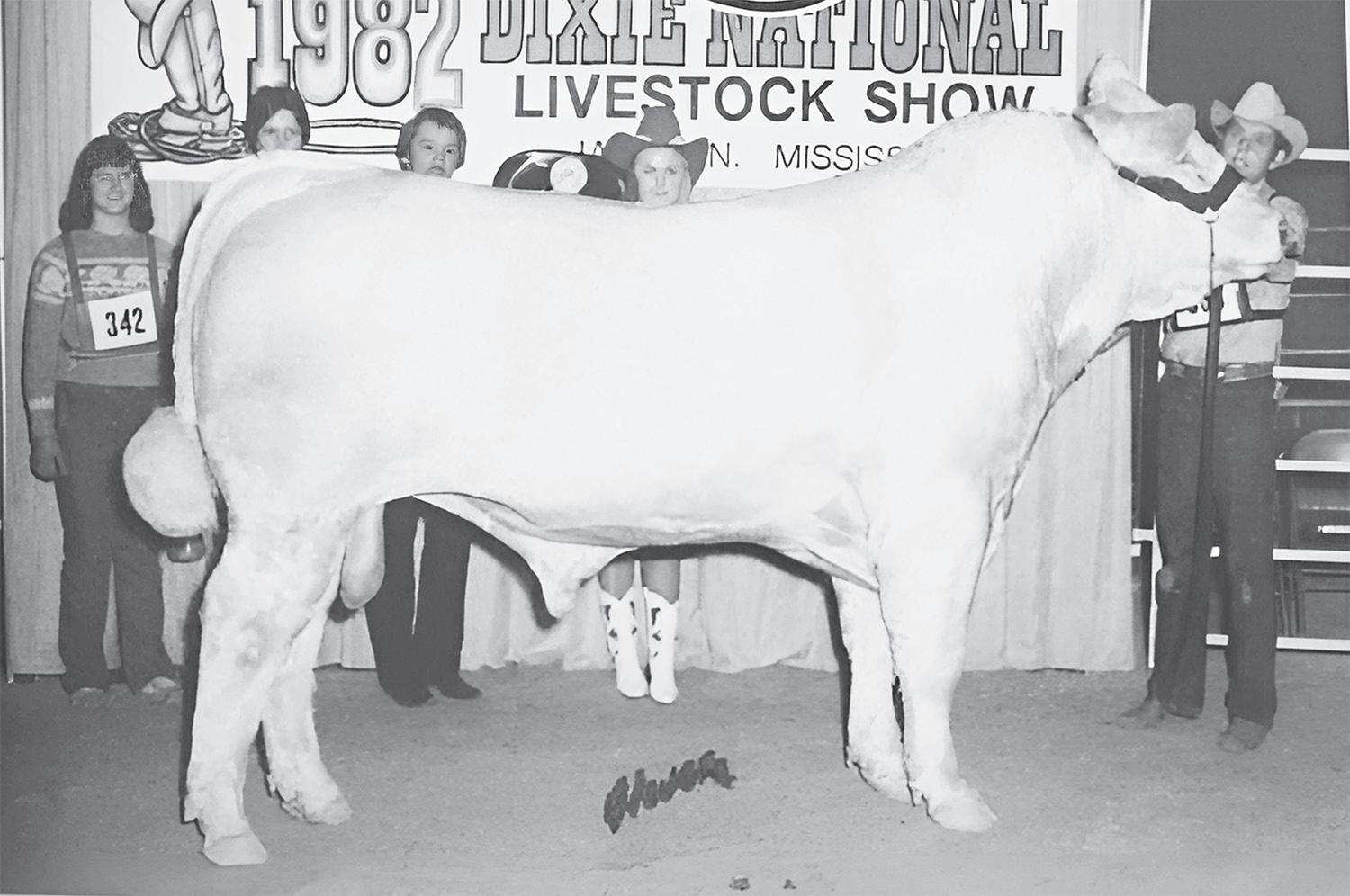
Cattlemen from those breeds did not welcome the much bigger French cattle being shown in close proximity to their cattle because they were not interested in spectators comparing the “beefiness” of the established breeds to the Charolais. But a few breeders eventually broke through and Charolais were exhibited at the large shows in Kansas City, Chicago, Houston, and Denver in the 60s. Perhaps the pivotal moment in the change of the type of cattle from the smaller framed “belt buckle” cattle was when a Charolais cross steer named Conoco was made grand champion steer at the 1969 International Show in Chicago. He would make a durn fine steer today.
In the meantime, the descendants of a bull named FWT Bar 951 Sam bred by Litton Charolais in Chillicothe, Mo., were being aggressively shown and promoted all over the United States. Monarch’s Majesty — a grandson of Sam — was grand champion at the Houston show in 1969.
MGM Hijack Mae was the grand champion female at that same show. She was bred by one of the early pioneer breeders in the United States, Michaelis Ranch..
After that, the show circuit became the place to figure out who
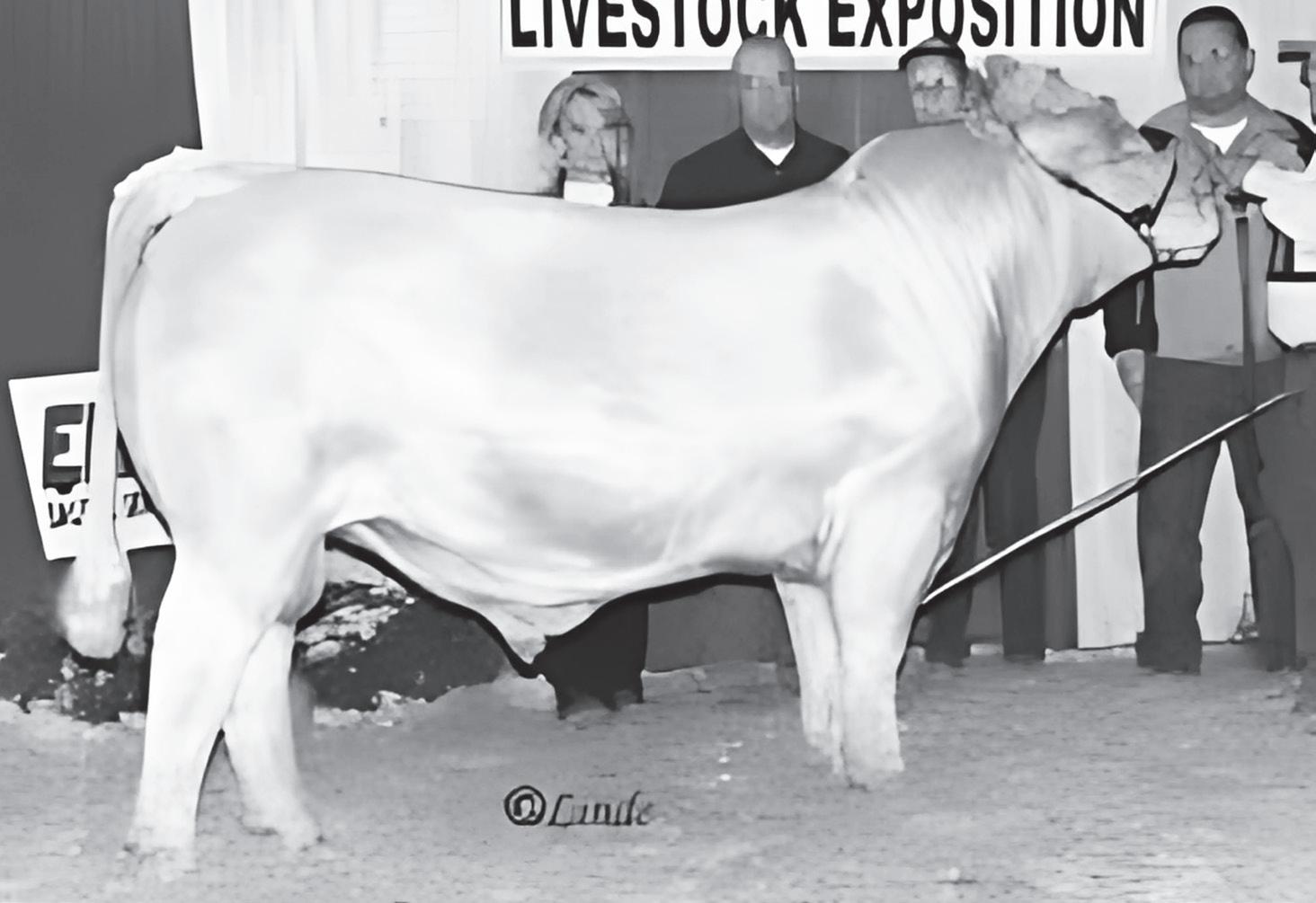
had “the best” Charolais cattle. Pretty quickly, cattle started getting bigger, mostly taller — that seems to be related to the idea that the cattle had to have the performance and size of Charolais cattle, but they needed to not be so thick to cause calving troubles. So folks naturally decided to try to stretch them out. This resulted in some useful cattle for a while — maybe a bit big, but not bad. HCR Expectation 269 was the 1978 national champion bull.
After that, it was sort of off to the races for taller Charolais cattle. Riverwood Genesis was the 1979 champion. He was a son of Riverwood Elevation, and that really started about a 20 year period when cattle related to him and his brothers dominated the breed.
Over time, the cattle got even bigger. Roxy’s Jack Dempsey was very popular, and very big. A lot of cattle today in Canada still carry his genetics.
Thomas Joker was the 1992 national champion. He was probably too big and was the last really big bull to win big.
About that time, breeding value estimates were being published, and the importance of the show cattle in the breed started to wane very quickly. The availability of breeding value estimates for traits of economic importance simply made the ranking of cattle in a show ring a less valuable measurement for breeders.
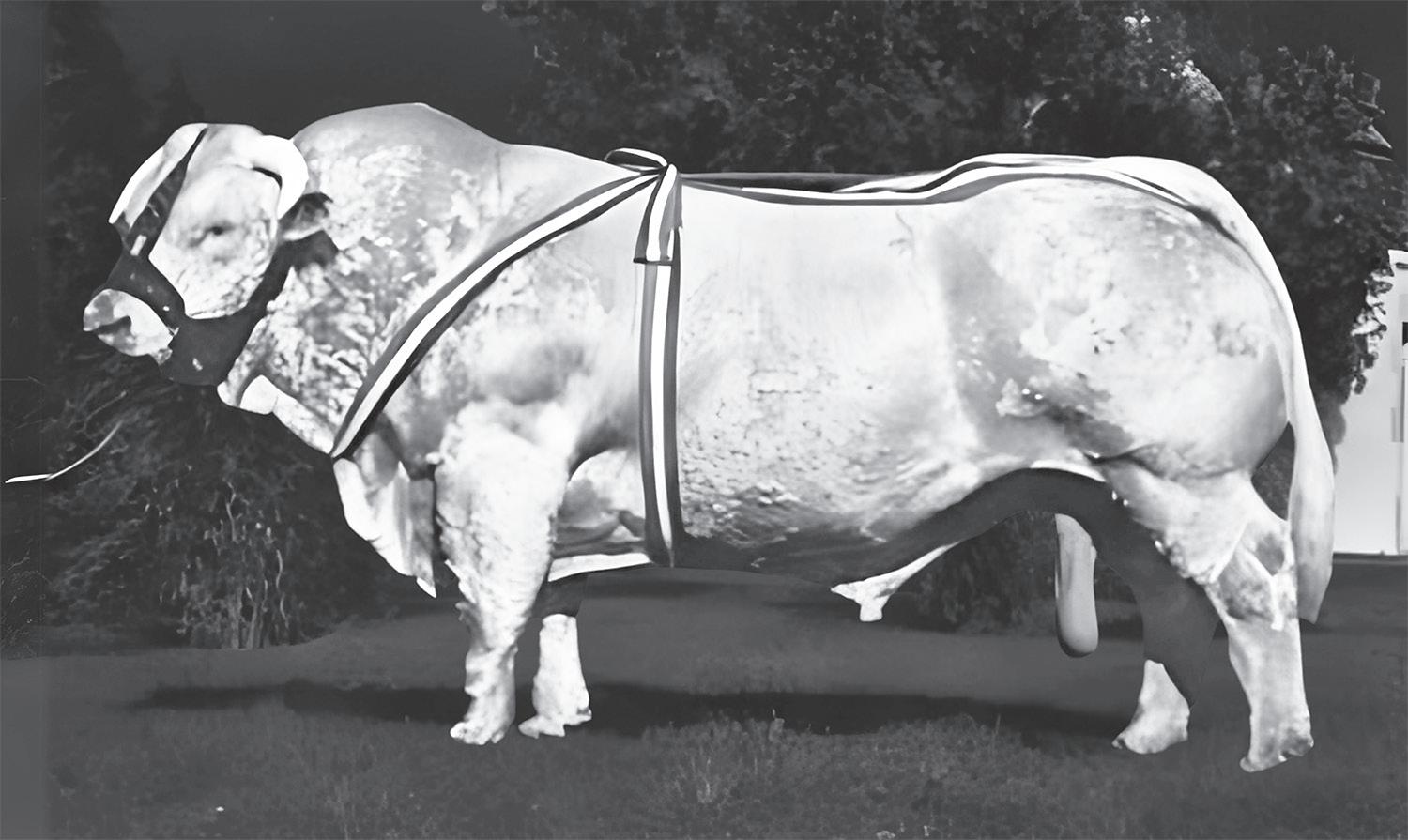
Cattle have become quite a bit more moderate in the Charolais show ring since then as well. The 2018 national champion was a cow named TR Ms Dottie 6703. She is pictured in this article from the South Dakota State Fair. Also, the 2018 champion bull named in Canada was Elder’s Honcho, who won Agribition.
Since this article is for The Carolina Cattle Connection, I should mention a couple of our winners. There have been many over the years, but one of the most successful show bulls with a South Carolina connection from back in the days was RCC Royal Standout 2973. He was owned by Barton Charolais in Abbeville, S.C., and shown by Wayne Templeton when he managed that herd.
More recently, my own bull, Faraway Chico, was shown successfully over a decade ago. Our herd in Vale, N.C., is based on his descendants.
Finally, since we started with a French show bull, we’ll close with another one. I don’t know this guy, but he was a winner in France in the recent past.
It seems pretty clear that, in North America, the type of Charolais cattle that wins shows has been pretty variable over the years, but comparing the French winners 100 years apart, it seems like they have a more strict ideal with regard to show bulls. No matter. Whether you show cattle or not, we should all try to breed cattle that please us, that are in demand by our customers, and that have the best chance of making money for those who care for them. If we can do that, I’m sure we’d mostly call that a good day.
The final installment in this series, for now, will center around cattle performance testing and evaluation.
*Show champions mentioned in this article can be found on the following pages

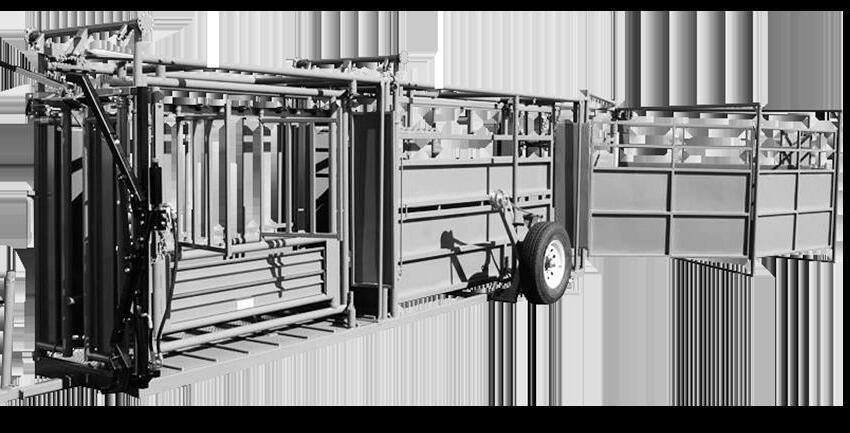


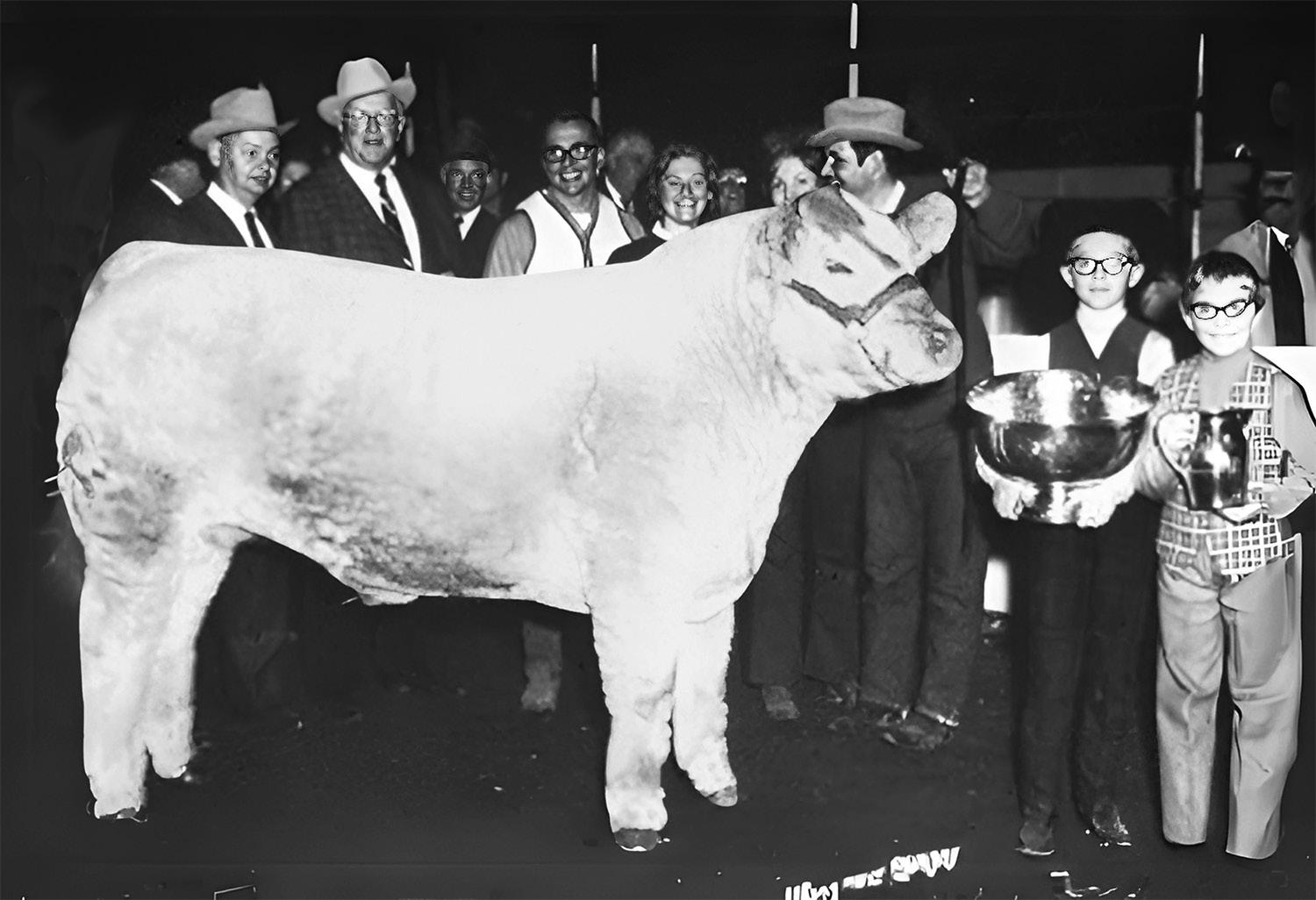

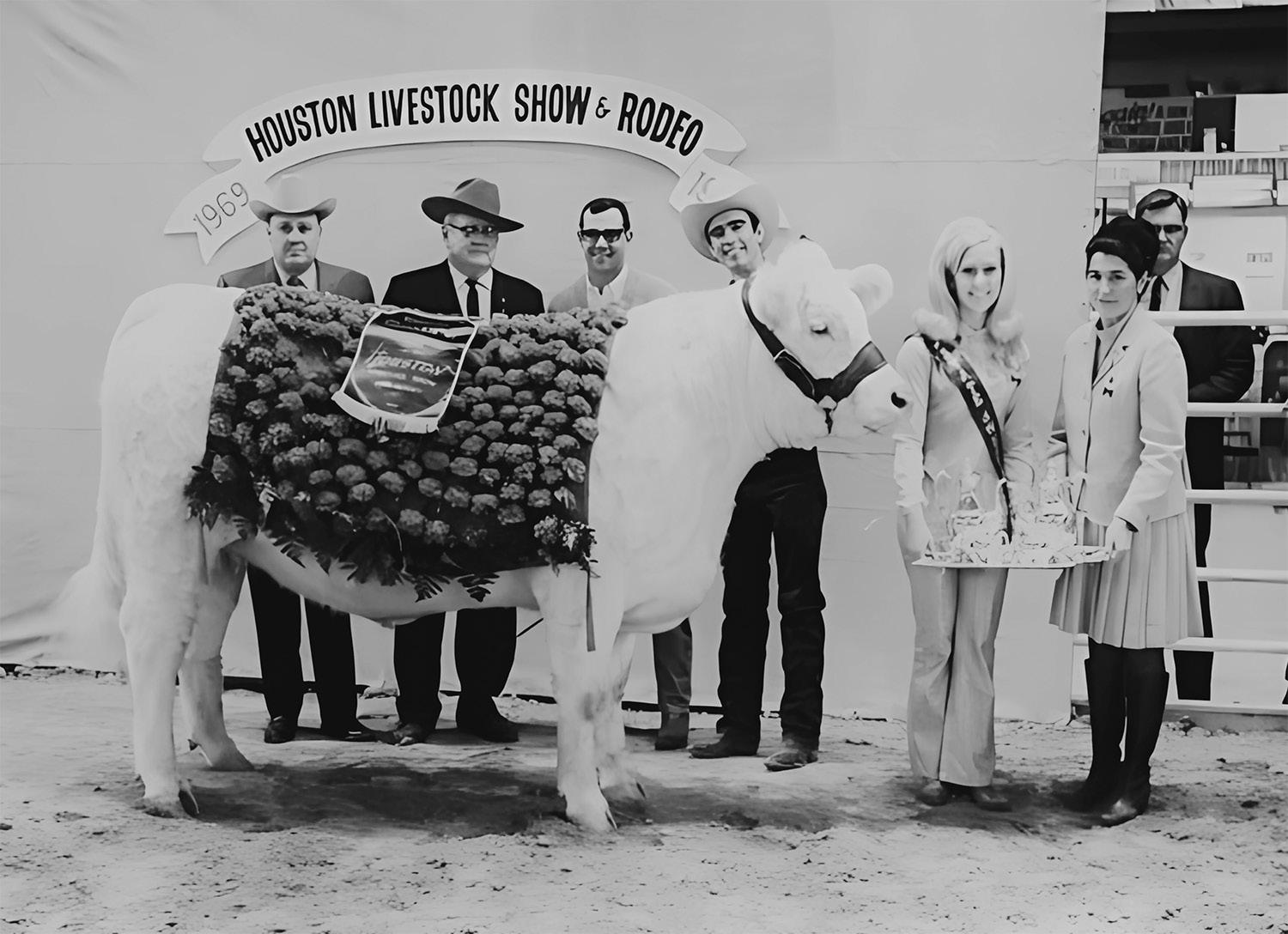
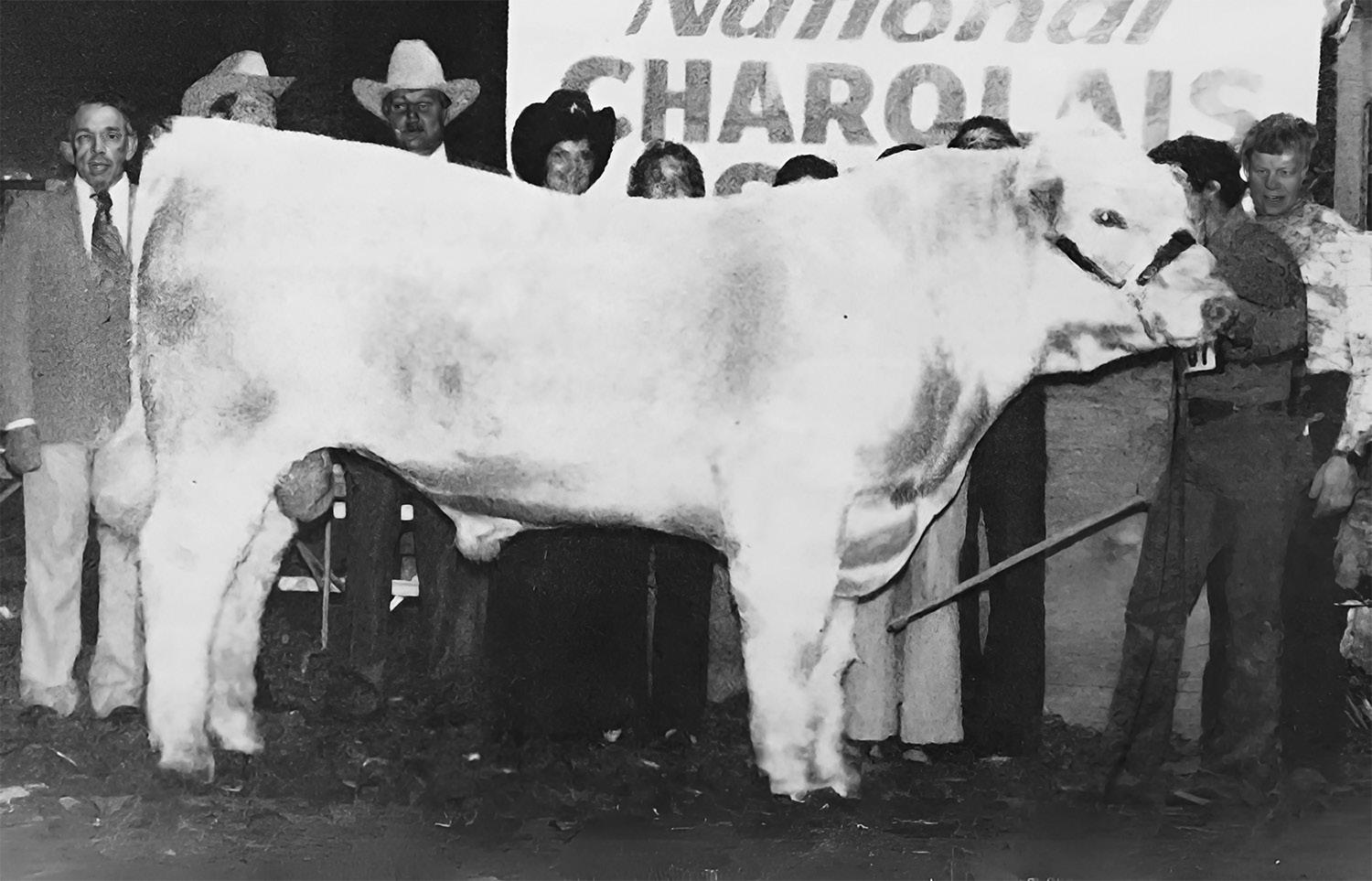

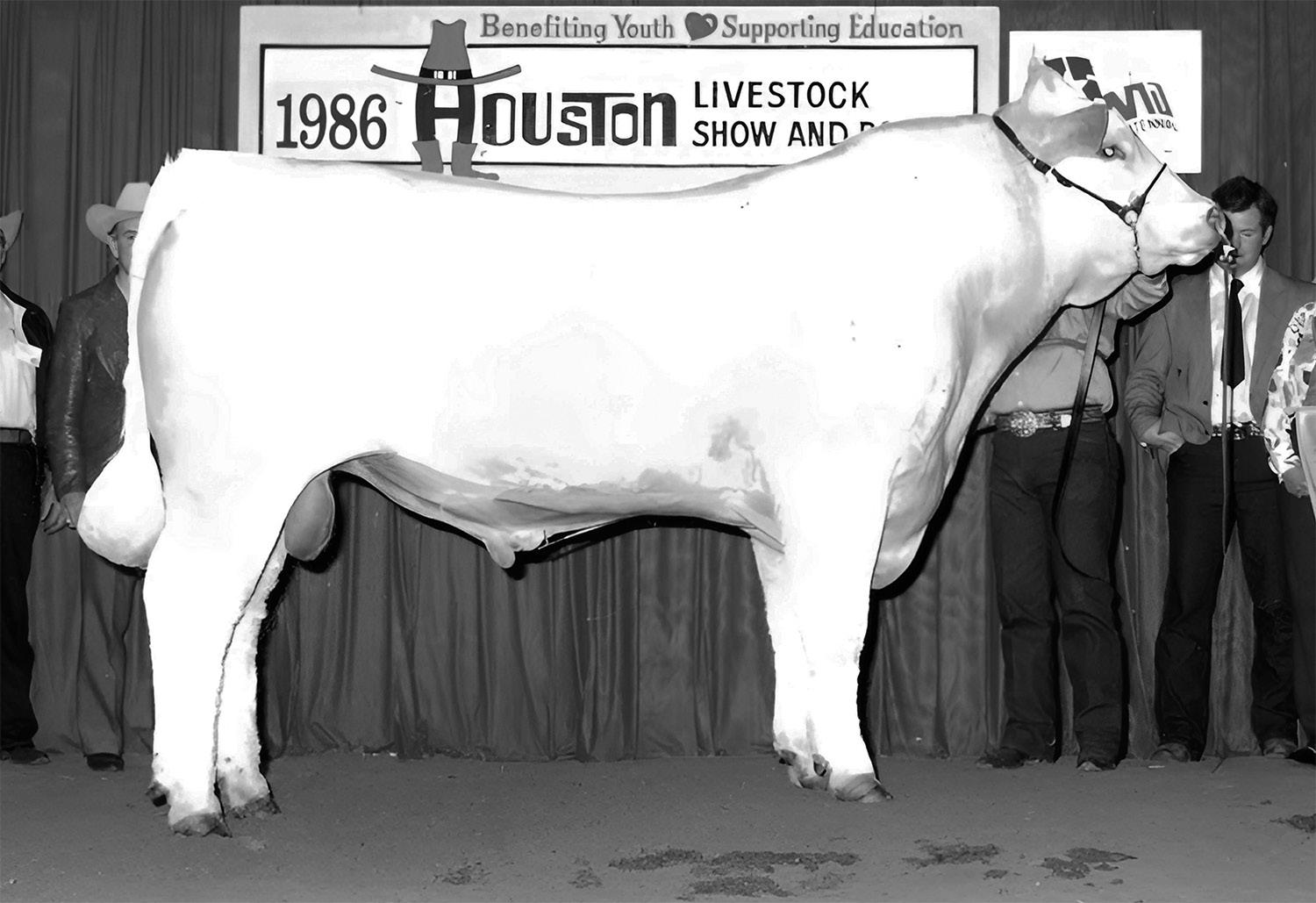
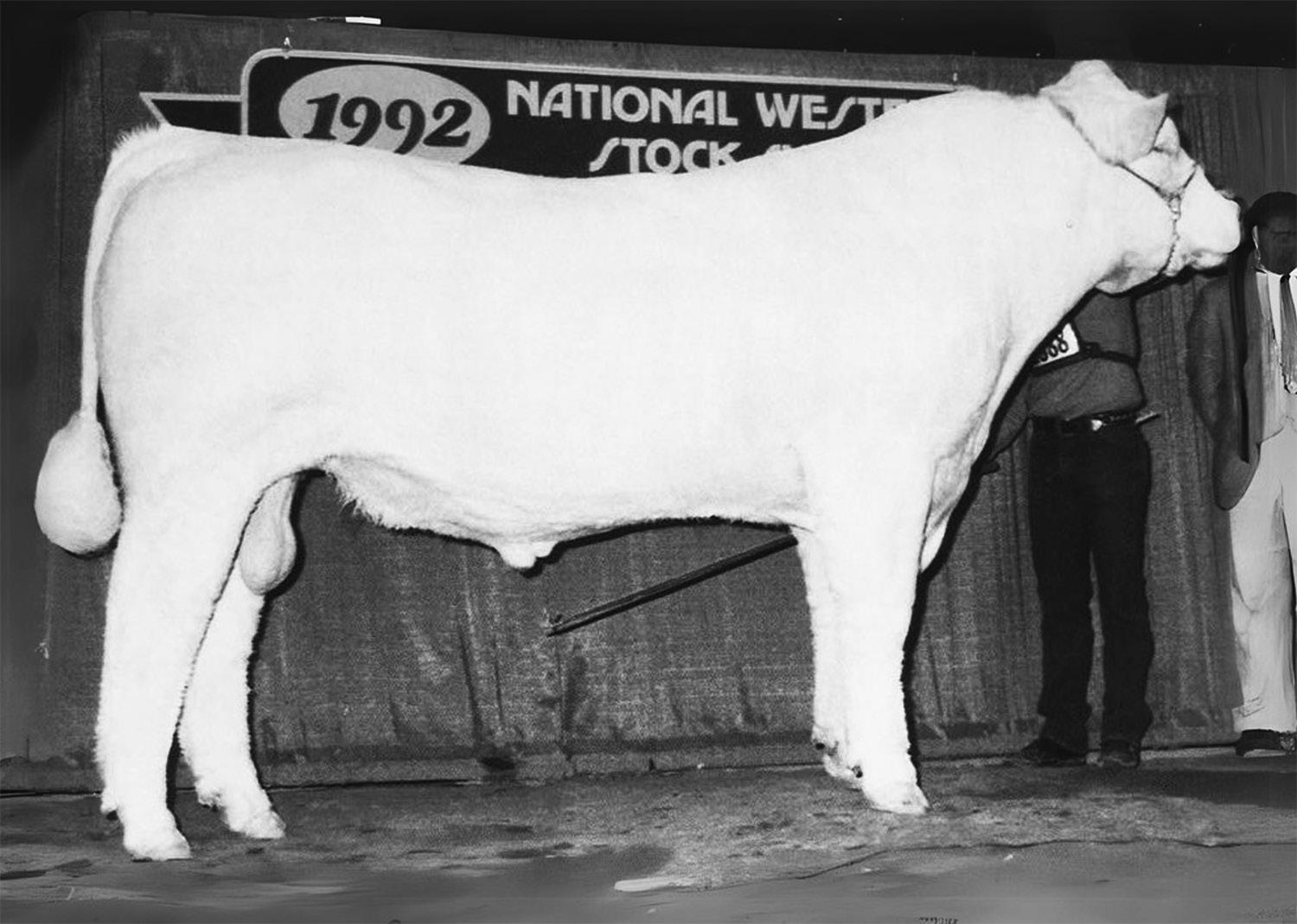
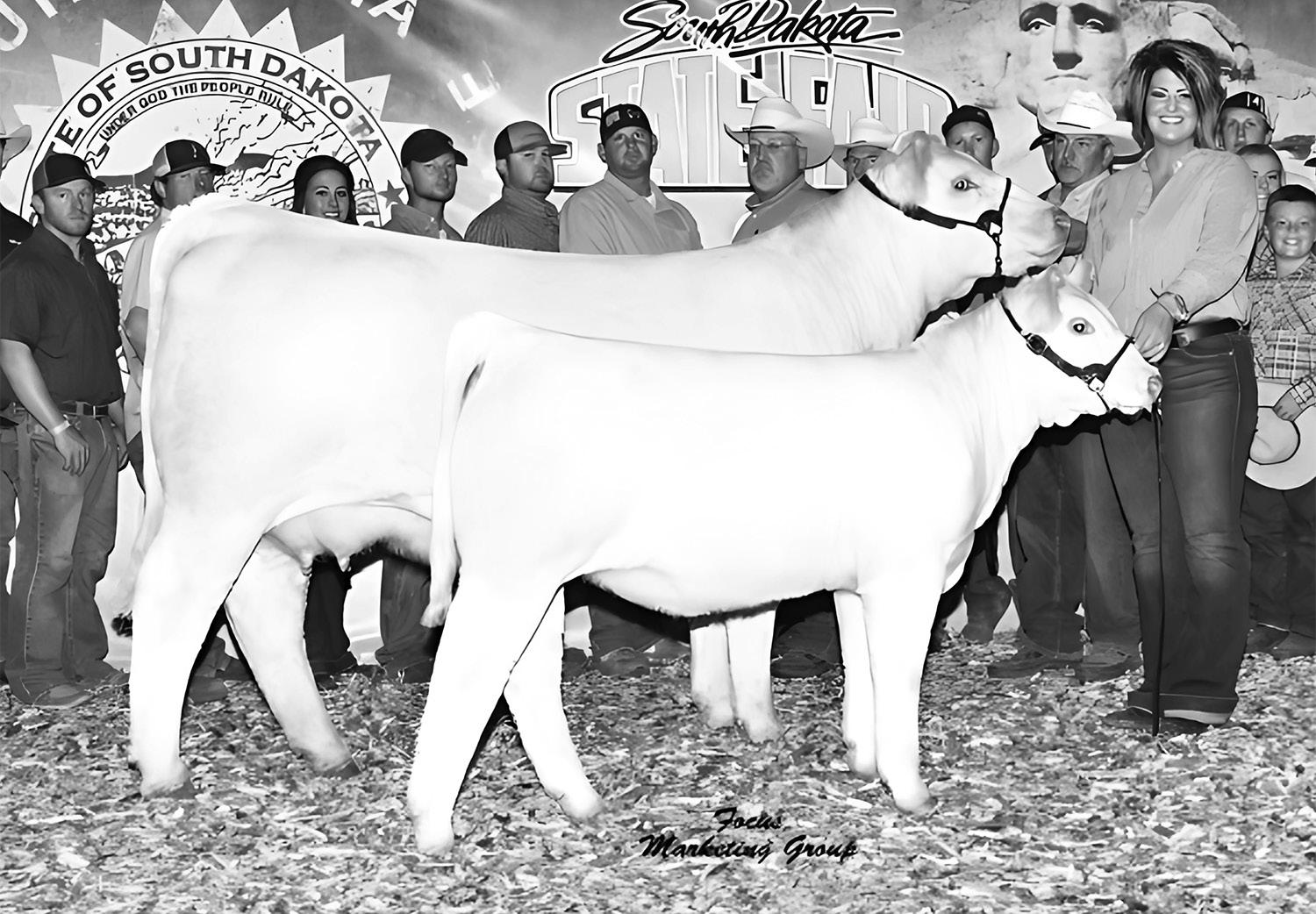
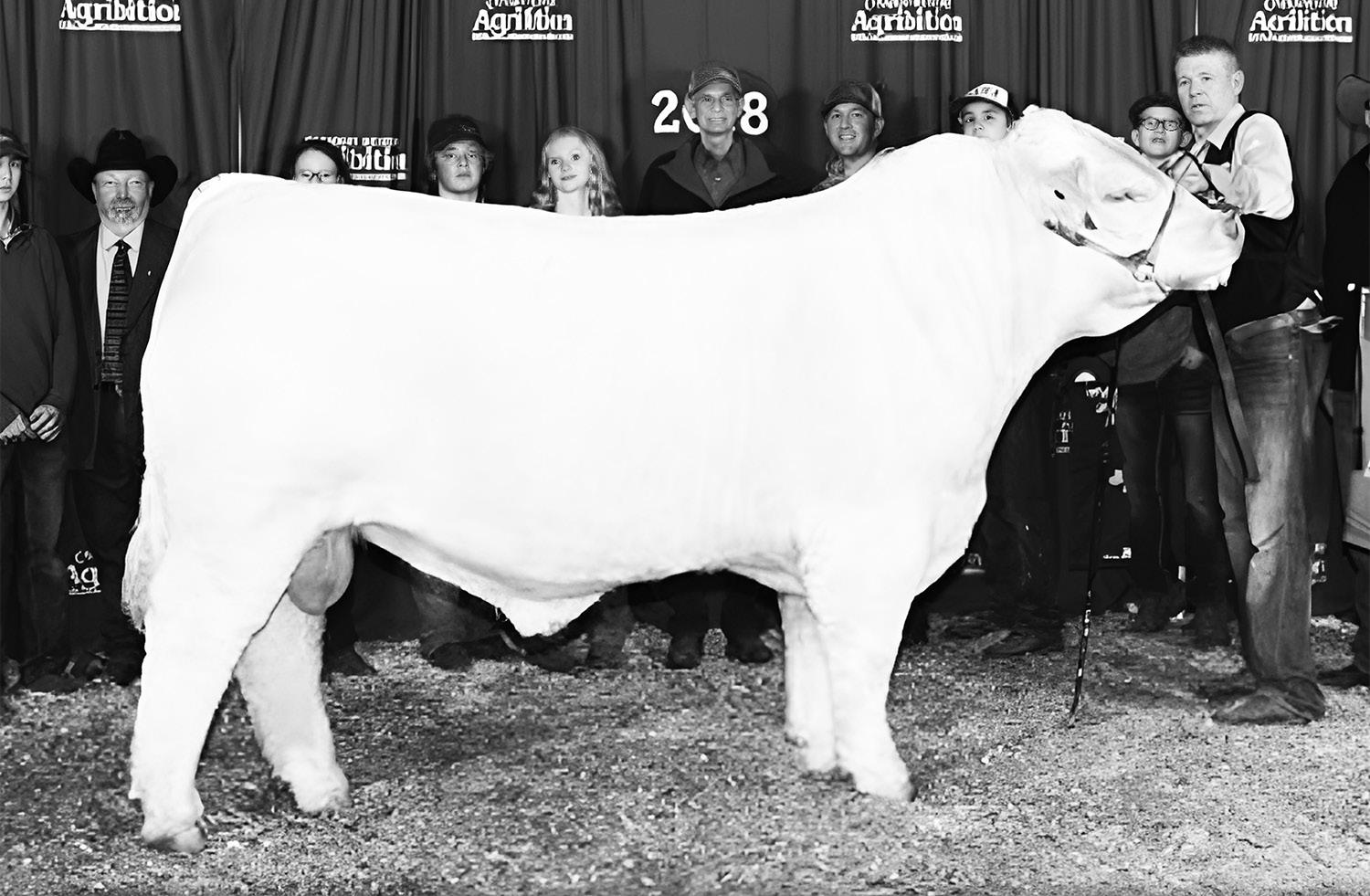

By JOHN DELLINGER
In this installment of my series on Charolais cattle in the United States, I thought I’d write about how performance testing and evaluation of cattle since measures of performance have evolved, especially in the Charolais breed, and especially in the Carolinas.
When Charolais cattle were developed in France throughout the 1700s, and even earlier, they were generally selected for their rapid growth as lean muscular animals. Mature size and muscularity were very important. Marbling was less important because the French markets didn’t treasure that trait, and the more maternal traits, like easy keeping and milk production and udder quality, were a bit less important. But the strict selection for fast, lean growth was paramount. As these cattle came to the United States in the 1930s and throughout the middle of the 1900s, they were quickly recognized as being something different from the more maternal, all purpose British cattle. The calves grew faster. The cattle were bigger and more muscular.
Charolais arrived in the U.S. at about the same time that scientific cattle breeding for performance was getting started. In the 1930s and 1940s, scientists determined how to objectively measure growth
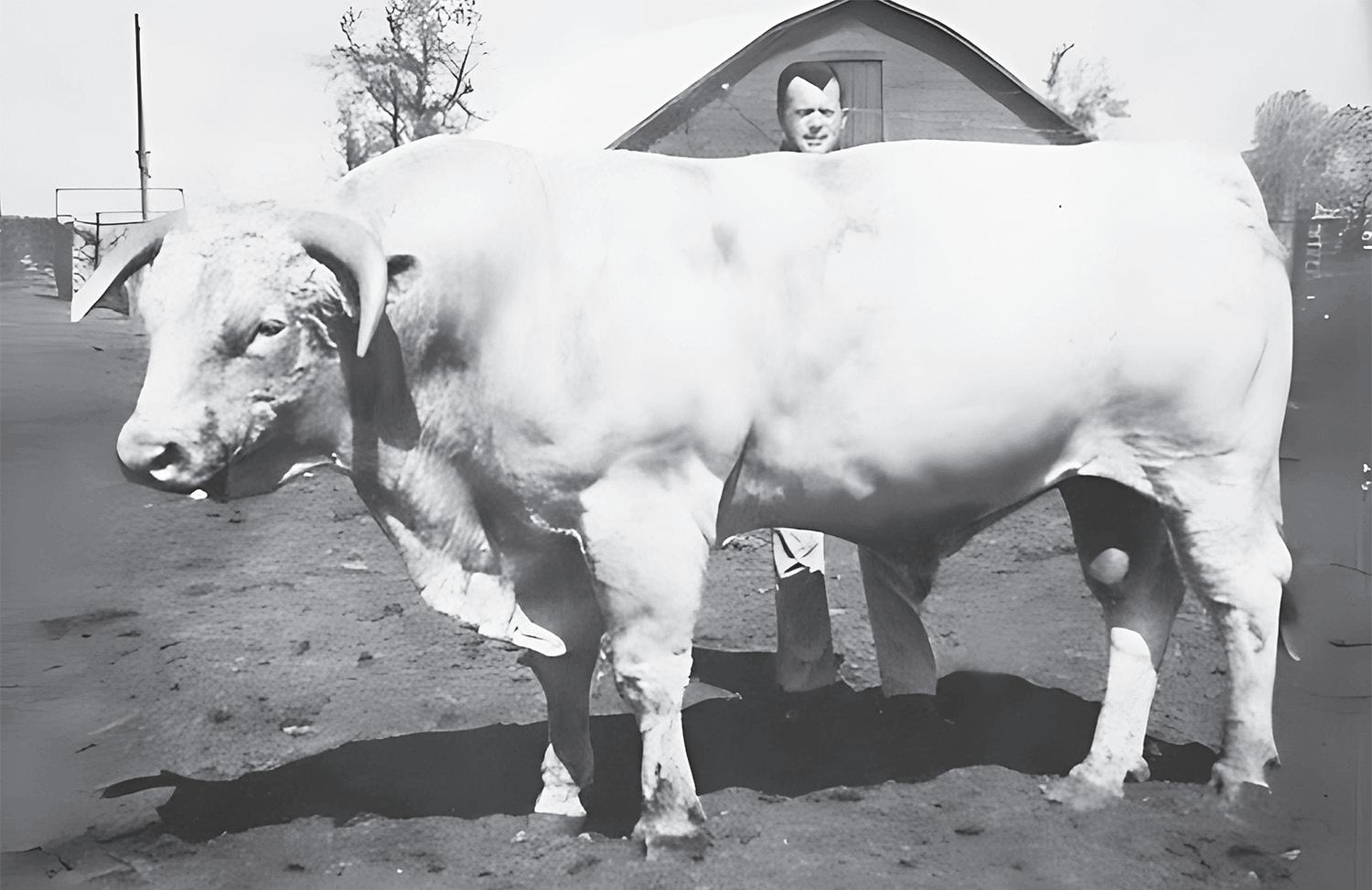
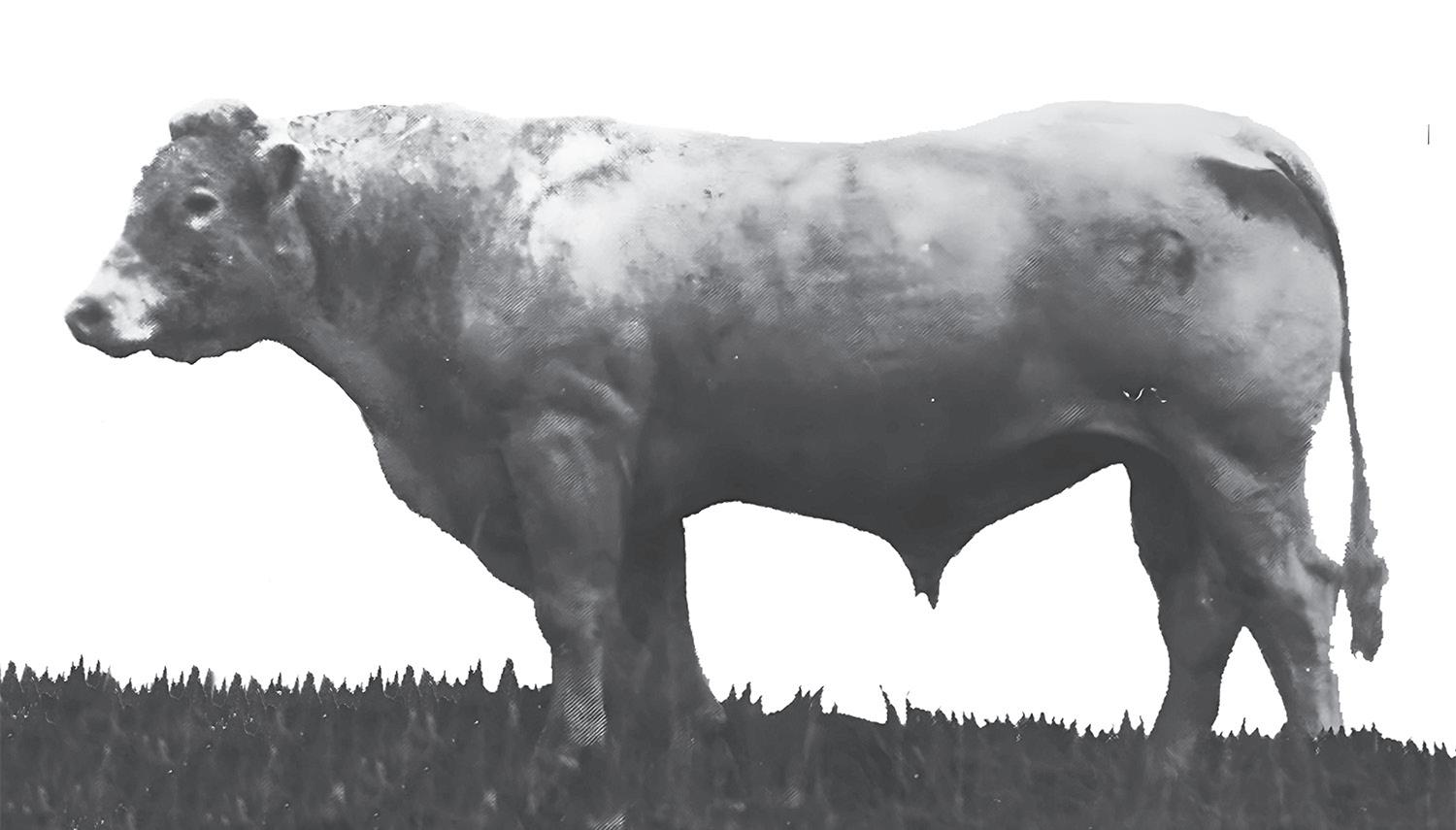
genetics and developed estimates of the heritability of these traits. Individual farmers and ranchers were starting to develop breeding programs based on performance and not on show ring appraisals. Central bull tests started in Texas in 1941. The “gift of Charolais,” as described by Thomas King, came then, showing breeders of all breeds that extra growth was possible, and giving other breeds a performance target to aim for. This was the beginning of modern performance testing in beef cattle.
One of the early efforts at promoting performance based beef cattle genetics was Performance Registry International (PRI). PRI set standards for cattle progeny evaluations. The program identified sires that were superior at producing progeny that were evaluated for growth and carcass traits as compared to standards. PRI existed for many years, and a decent number of early Charolais bulls were proven to be outstanding on the PRI program, earning the designation of “Certified Meat Sire,” with various categories describing the best ones. For example, Avignon 1106 — a full French bull whose bloodlines still flow strong throughout the breed in the U.S. — was a PRI Golden Certified Meat Sire.
PRI came to an end in the 1970s, and beef cattle performance evaluation focused largely on bull tests. The Charolais breed did

very well on these tests, including producing many bulls that gained in excess of five pounds of bodyweight per day over the entire test period. Cattle that stood out as being particularly strong in these tests were often fairly large framed cattle that were lean in their type. Growth is, after all, positively correlated with mature size, and gaining in lean muscle is more efficient than gaining fat. A few bulls that sired a large number of high performance cattle in the 1970s and 1980s included GCR Supreme 141, Cardinals Reflection 286, CCC Eleuthera’s Nulook, and HBR Performer 181.
North Carolina and South Carolina Charolais breeders were not left behind when it came to producing high performing bull test winners. Grassy Forks Farm in Catawba, N.C., had one of the highest gaining bulls ever in North Carolina with a bull called Grassy Forks Junker. In South Carolina, the 1986 Edisto Bull Test was won by THE HHP Monte Carlo 1ST, bred by Horace Porter of Lancaster, South Carolina. The Monte Carlo bull is still very important today.
While all this was going on, the American International Charolais Association was working through initial efforts to develop breeding values for Charolais cattle. Early on, the association had a Sire Evaluation Program (SEP), which involved directly comparing

progeny of a test sire with progeny of “reference sires” that were used in every group. By comparing to the common reference sires, the association could develop Expected Progeny Differences (EPDs) for the test sires. Prominent bulls who were successfully evaluated on the SEP included Nutmeg’s Avignon FR31.
The Sire Evaluation Program continued through the 1990s and was essentially replaced by the development of methods of computing EPDs using ratios of performance traits measured on individual farms, without the need for reference sires. This program continues today. Breeders can use EPD information to make mating decisions to improve a long list of traits. Recently, these EPDs were improved by including information on the DNA of the cattle themselves.
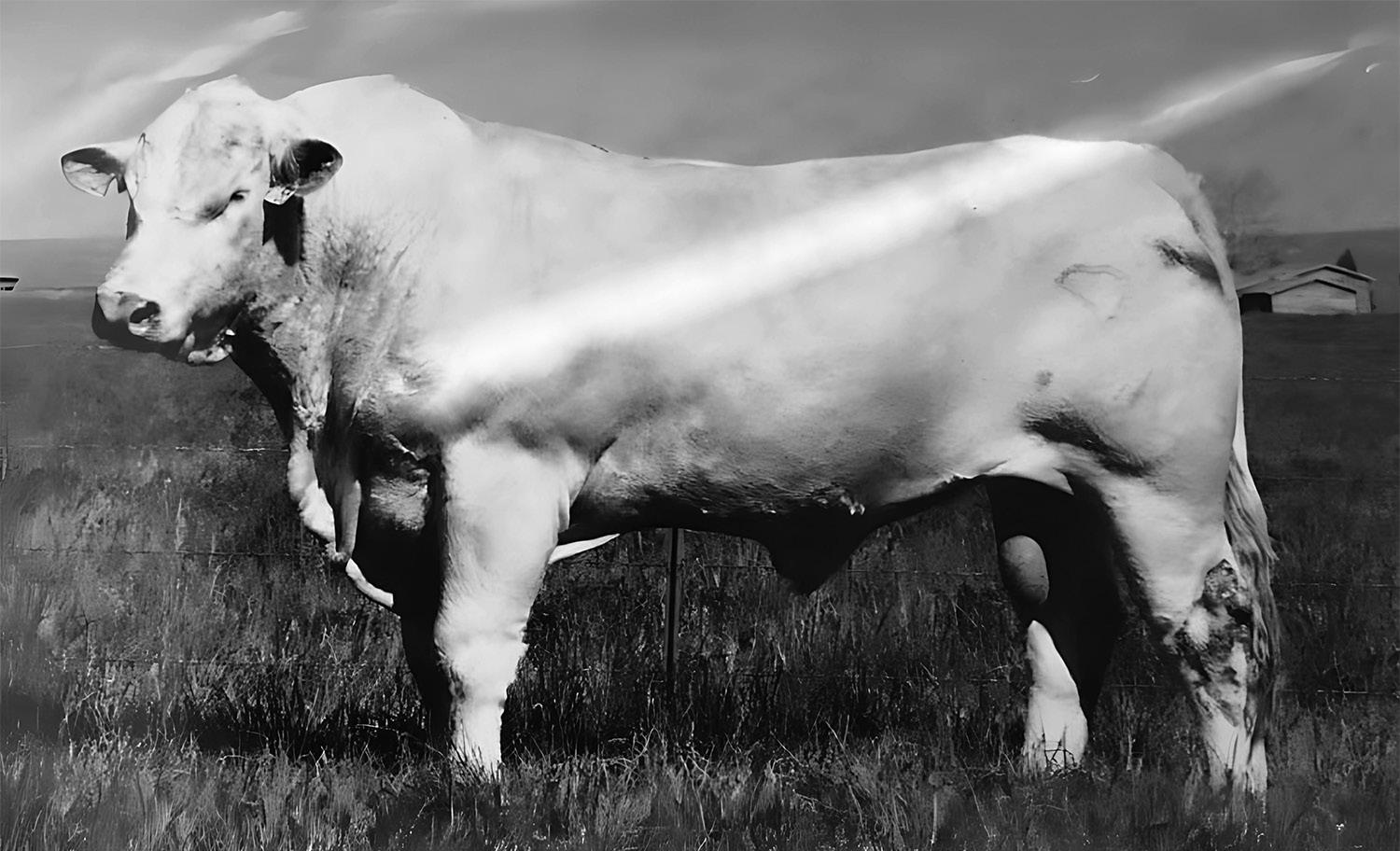
Throughout their existence, Charolais cattle have been well recognized as the true performance bred of cattle. Breeders have always worked hard to develop systems for identifying the best performing animals in order to continue to make progress in improving the breed.

By JOHN DELLINGER
When I’ve written about Charolais cattle, I’ve written mostly about influential cattle. But they tell me that the seedstock cattle business is just as much about people. So here are some stories about a few of the pioneer Charolais breeders in North Carolina and South Carolina. This is not a complete list, and I’m sure I’m going to miss some important folks and probably overemphasize a few people. And there might be some mistakes. My apologies for any errors, and feel free to let me know.
Arthur Schopenhauer was a German philosopher in the 19 th Century. A friend suggested to me that Schopenhauer’s observations on writers could be adapted to describe cattle breeders, and it’d go something like this:
Cattle breeders may be classified as meteors, planets, and fixed stars.
- A meteor makes a striking effect for a moment — the spectator looks up and cries “There!”, and then it’s gone forever.
- Planets last a much longer time compared to meteors. And they outshine the fixed stars, and inexperienced observers may confuse them for fixed stars. But that is only because they are closer. Before too long, they give up their place, and their only light is reflected light, and their sphere of influence is confined only to a few of their contemporaries. The path of planets is one of change and movement, and within a few years, their tale is told.
- Fixed stars are the only ones that are constant. Their position is secure. They shine with their own light. Their effect today is the same as yesterday. Their appearance does not change based on the different point of view of the observer. They belong to the universe, not just a small community. They are so far away that it can be many years before their light is visible to others.
The folks I’m going to mention will include some “meteors,” some “planets,” and a few “fixed stars.” I’ll leave the classification to the

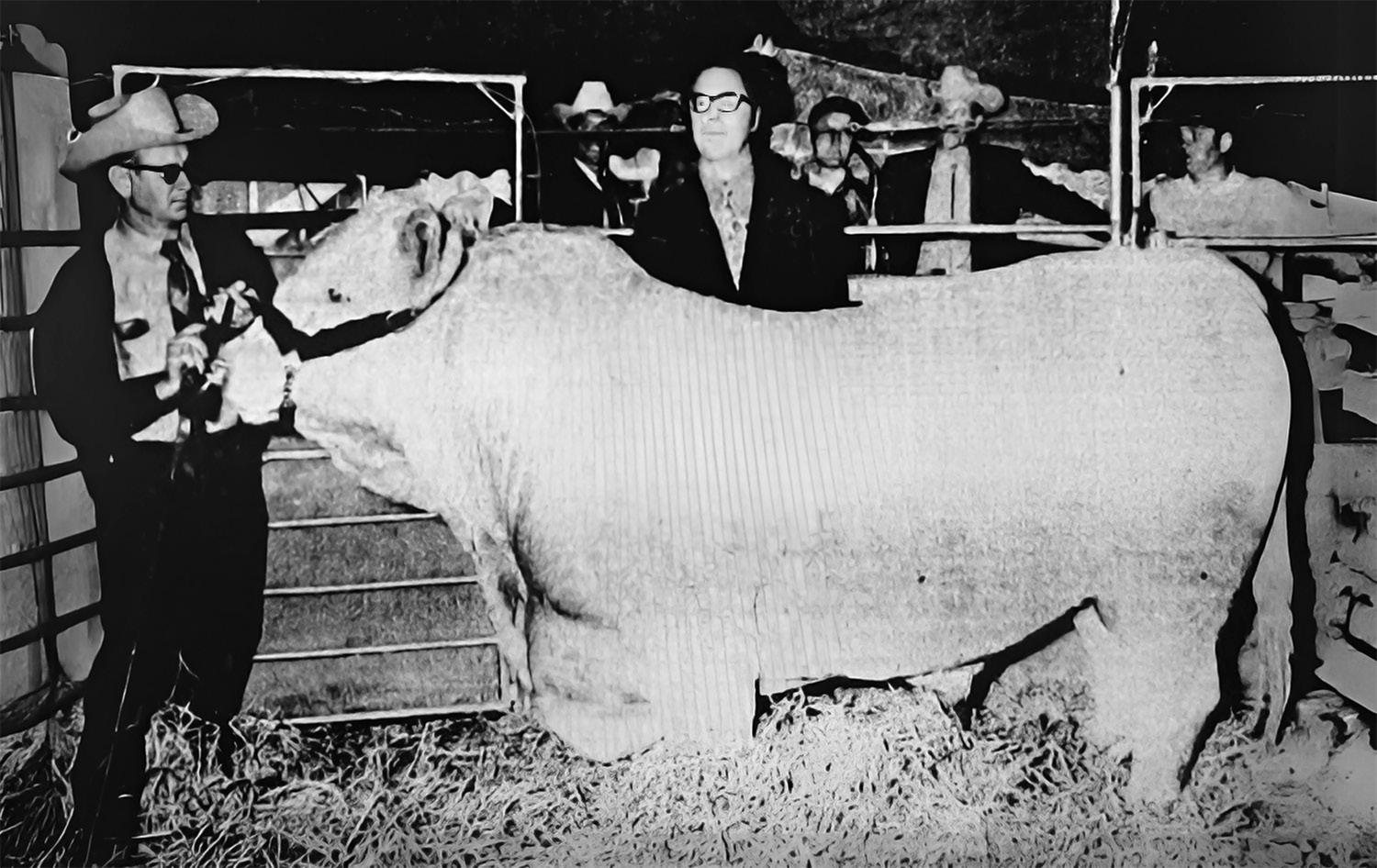
reader, though, and just tell the story.
In 1950, Charolais cattle were being bred in only three states in America — Texas, Louisiana, and Florida. There were a few bulls spread throughout the country earlier, with a few even in this general neighborhood. For example, Winston Guest, a relative of Winston Churchill and an heir to the U.S. Steel fortune, imported two bulls from Mexico to his farm in western Virginia in 1942. But by 1960, there were Charolais breeders in most of the country, including in the Carolinas.
I think the first sustained Charolais breeder in the Carolinas was John M. Jordan, Jr. in Saxapahaw, North Carolina. He was the son of Everett Jordan, a U.S. Senator from North Carolina. His family made their money in the textile industry, and John started breeding Charolais bulls to commercial cows in the mid-1950s. Jordan worked with French cattle and polled cattle successfully. In the days when French cattle were very valuable, he sold one female at auction for $40,000 and another for $60,000. He eventually developed what was thought to be the largest polled Charolais herd in the world, with locations in several states. He formed Jordan Charolais Enterprises, which was an effort at
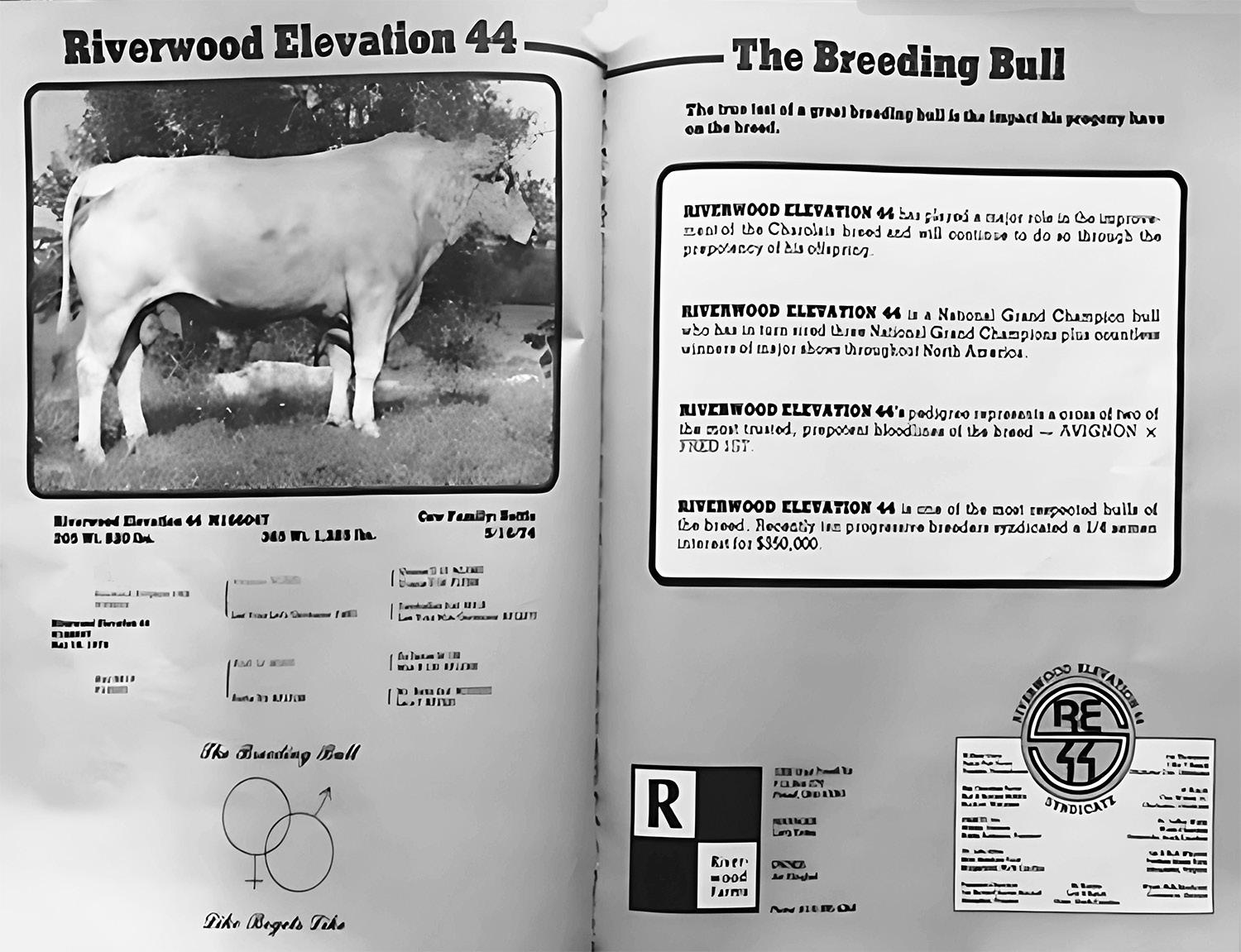
vertical integration, in which his ranches would raise the beef, his plants would process it, and eventually, his Jordan’s Le Charolais Steakhouses and his chain of burger restaurants would serve it. In May 1971, he sold that venture and largely left the Charolais business. He sold a bull, JCR Polled Dessauny 999 (known as Super Dess), for $130,000 for ¼ interest. Super Dess had a yearling weight of 1,685 lbs, a world record at that time, and his auction price was also a world record at the time.
It appears that the first sustained Charolais breeder in South Carolina was James McNamara in Greenville, South Carolina. He was a medical doctor. He had a Charolais herd from the late 1950s until the early 1970s. His cattle were identified with the “Isidore” suffix — for example, “Carl of Isidore.” The Isidore cattle were sold out to Bar U Ranch in Mississippi and Rabbit Hill in Florida around 1970. A few of his cattle became the basis for the “Muffett” family, which was very popular in the show ring for many years after that.
The Jordan and Isidore cattle went throughout the country and
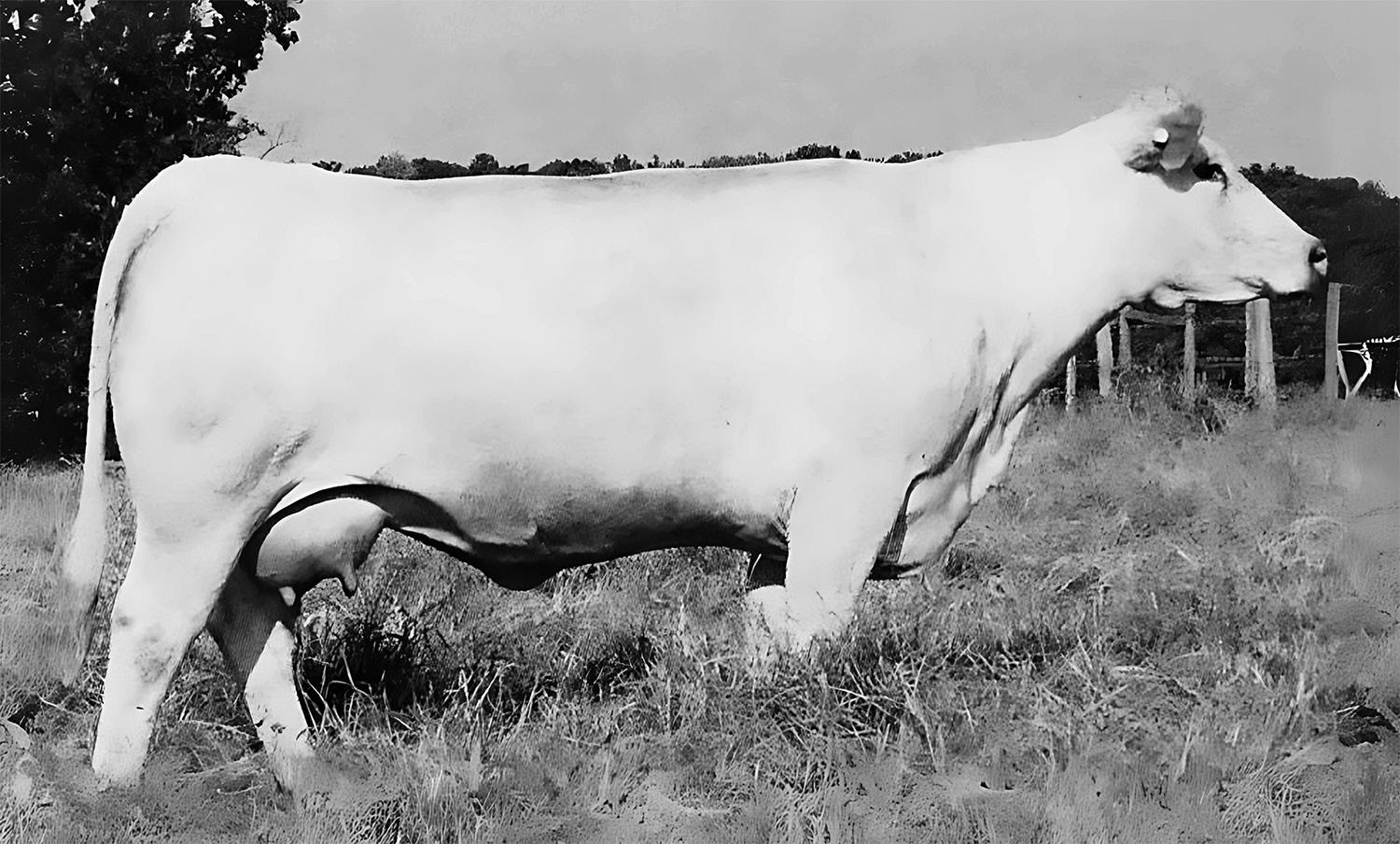
provided a strong base for others. In addition, Jordan and McNamara got together in November 1963 to help form the Virginia Carolinas Charolais Association. Other early breeders in the Carolinas who were involved in that association at the formation included Hoyte Causey of Chadbourne, N.C., Fred Mast of Valle Crucis, N.C., Scott Gardner of Warrenton, N.C., Paul Wallace of Wallace, S.C., Jack Sher of Inman, S.C., and John Ashmore of Greenville, South Carolina.
Besides being “first” or “early,” I think breeders can be interesting because of their “day jobs” or, obviously, because of the impact of the cattle through the years. Hanes Ranch was in Clemmons, N.C., and was owned by the Hanes family, now more famous for Michael Jordan’s underwear. The Hanes family had Charolais from about 1964 through fall 1968. Bowman Gray, Jr., the President and CEO of Reynolds Tobacco Co. bred Charolais at Brookberry Farm in Winston-Salem, N.C., from 1967-1969.
Grier Beam, the CEO of Carolina Freight, bred Charolais at Sunbeam Farm in Cherryville, N.C., from about 1971 to 1978. Some important cattle, including the parents of both JF Polled Addition and the foundation cow for the Three Trees Vanessa cow families, trace back to Sunbeam. It is unlikely that most folks knew that this was an important breeding program then.
The Carolina Charolais Ranch was in Lillington, N.C., in the 1960s.
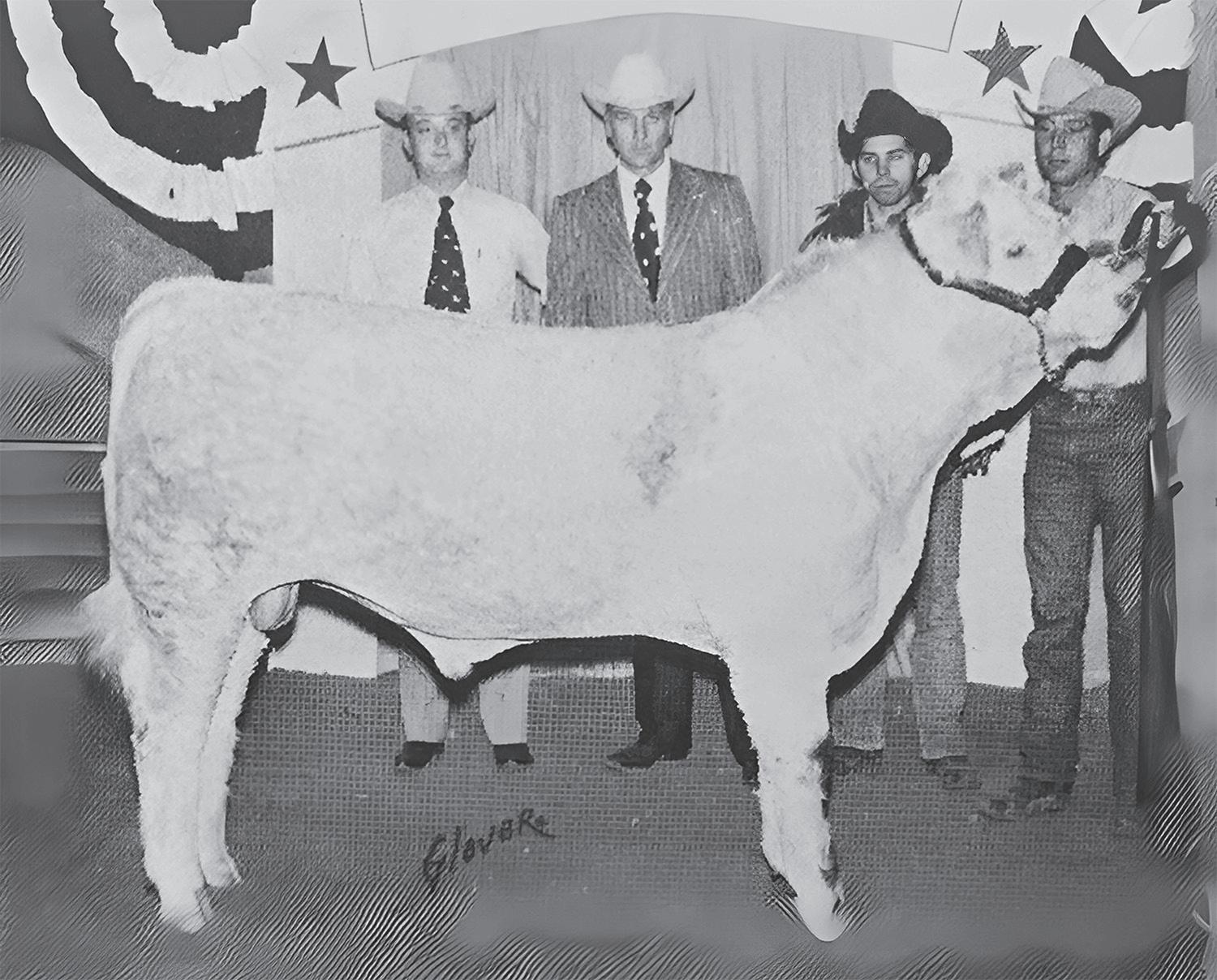
261, probably the most important bull in the breed in the United States.
Dr. Leroy Webb started his Charolais herd in Easley, S.C., in the late 1960s. In 1981, he was part of one of the biggest Charolais events ever in South Carolina when he joined along with a group of about ten other Charolais breeders to purchase a ¼ interest in Riverwood Elevation 44 for $350,000, making Elevation worth a total of $1.4 million. Two other Carolina breeders — Dr. John Giles of Morganton, N.C., and Ed Runion of Greer, S.C. — also joined into that group. Dr. Giles and Dr. Webb both used Elevation well. Dr. Giles left the Charolais business around 1990, but the Webb herd is still going strong in Easley.
The last folks I’m going to mention are Wayne Templeton and Gerald Barton. Wayne has been in the Charolais business at least since the early 1970s when he was herdsman for LH Bar Ranch in Newnan, Georgia. LH Bar was sort of a continuation of the Ayavalla Plantation breeding program in Florida, which was owned by the Phipps family from U.S. Steel. LH Bar used a bull called FCI B47, and they produced at least one National Champion bull, LH General Lee. General Lee would go on to be a foundation bull for Wesson Charolais in Missouri, a major herd from the 1970s to the 1990s.
They eventually became part of the Jordan herd, but before that, they produced a female named CCR Nancy Bayard. That cow would eventually make her way to Spain Charolais in Missouri, where she would produce Spains Quality Poll 871. He would be the paternal grandsire of BR Duke


Meanwhile, Gerald Barton, an attorney from New York City, struck up a friendship with another attorney, Perry Nichols, in the early 1970s. Nichols had a Charolais herd in Florida. That ended up with Barton starting a Charolais herd on Nichols’s ranch. That, of course, ended up with unpaid bills and unmet expectations and litigation, but, in short, Gerald Barton became a cattle breeder. In the Fall of 1975, Barton bought FCI B47. Around that same time, Barton hired Wayne Templeton to manage his herd in Abbeville, South Carolina. In the next few years, they built a nice herd of cattle, adding important bulls, Spains Polled Challenger and RCC Royal Standout 2973 to the mix. That herd dispersed in early 1982, and Mr. Barton went home to New York. But the genetics proved useful for years after that, and Wayne Templeton and his family have continued to breed Charolais cattle since then.
There are many others who probably should be mentioned. But you can see in the small sample that there are some “meteors,” some “planets,” and some “fixed stars” in the group. You can decide which ones are which, but I think it might be useful for cattle breeders to think about their own breeding programs and which category they want to be in.

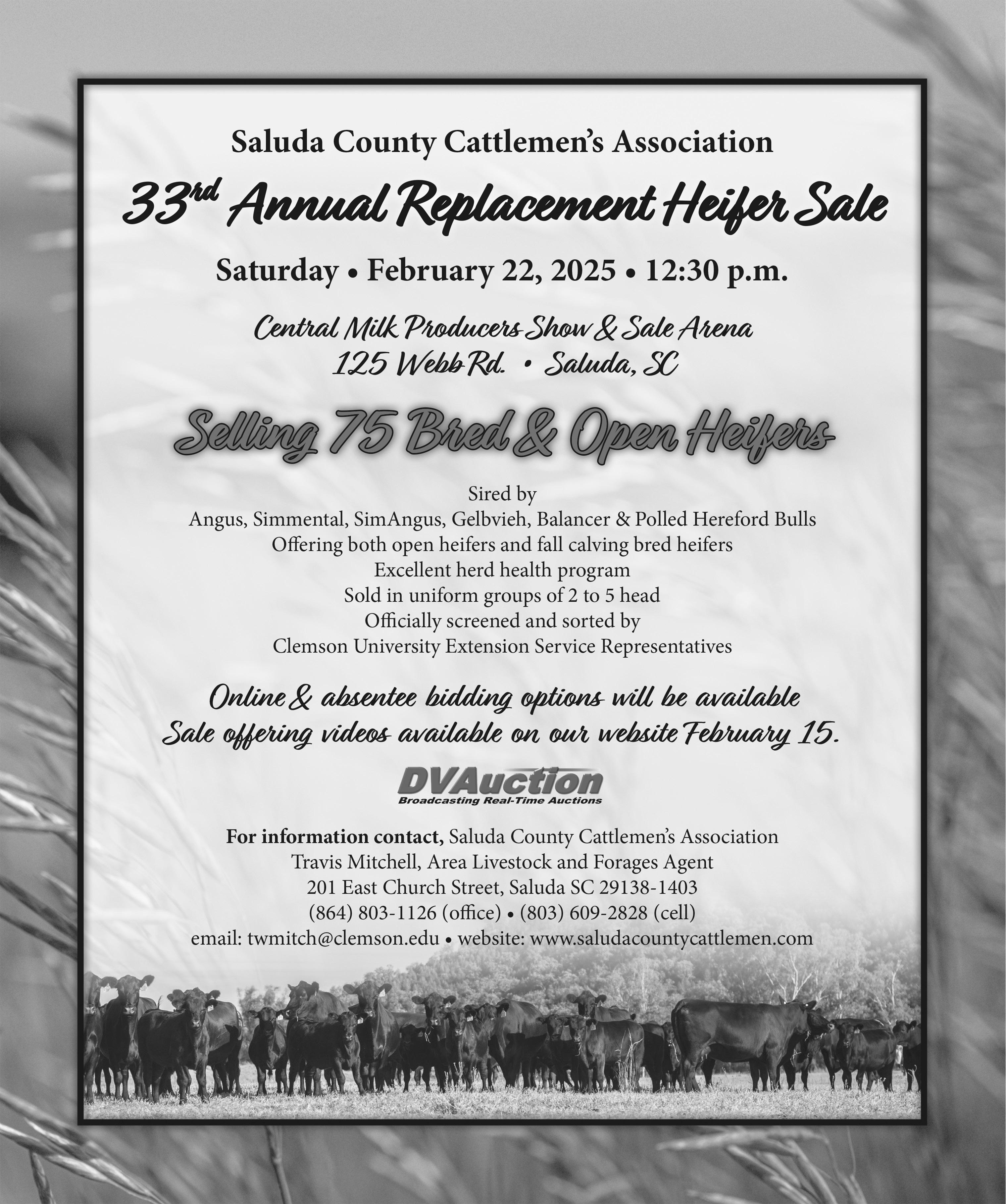
By ASHLEY HERRING, N.C. Cattlemen’s Beef Council
Last summer, we recognized an interest in bringing together beef and the health and wellness community of runners. With support from Felipe da Silva of NCSU’s beef extension team and a former Florida Team Beef member, we launched N.C. Team Beef.
We have runners of various ages and distances, which makes our community welcome to all. The beef nutrition information available from the Beef Checkoff provides a plethora of education for the team members themselves and as they share information with their peers. We think this is an excellent way to reach outside the agriculture world, a challenge we try to meet with our Beef Checkoff efforts.
Members of N.C. Team Beef are completing their Masters of Beef Advocacy, the training tool from the Beef Checkoff that helps everyone understand the beef industry and be more effective spokesmen and women. Team members will receive a certificate to our newly opened N.C. Team Beef online store to purchase gear with the logo. Everyone will take photos at races with their N.C. Team Beef gear that we will showcase in e-newsletters, social media, and here in The Carolina Cattle Connection
By bridging the gap between exercise enthusiasts and the beef industry, we will promote beef as a wholesome, nutritious choice to fuel active lifestyles. Since many of our team members are not from
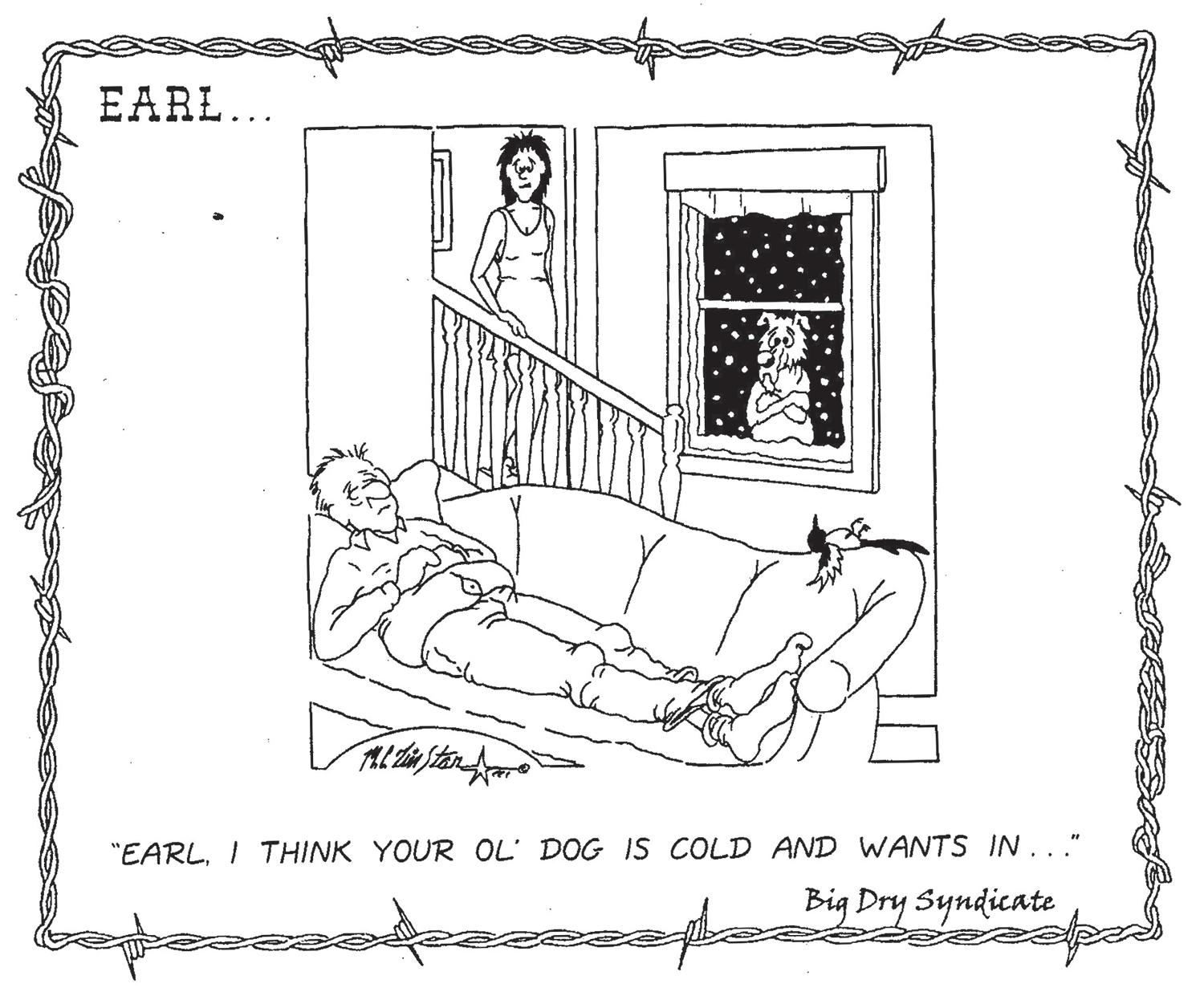

an agricultural background, in the future we will plan tours of farms and meat labs. Our hope is to multiply the effects of this shared information, especially with a previously unreached audience.
One goal in the coming year is to select a race that all team members can participate in to magnify our message and encourage others to participate. Everyone can purchase N.C. Team Beef clothing and goods from our online store at https://teamlocker.squadlocker. com/#/lockers/north-carolina-team-beef.
We are eager to get this new program going to help promote beef in a different way. By making our community larger and expanding the agriculture footprint on new pathways, we hope everyone will benefit.
Welcome N.C. Team Beef Members!
Alaina Cross • Youngsville
Chris Conser • Concord
Isaac Elks • Ayden
Wayne Galli • Raleigh
Rolake Okanlawon • Apex
Katelyn Stegall • Polkton
Felipe da Silva • Raleigh
Maresa Roney • Raleigh
Nicolas Alvernia • Raleigh
Seth Champion • Franklinton


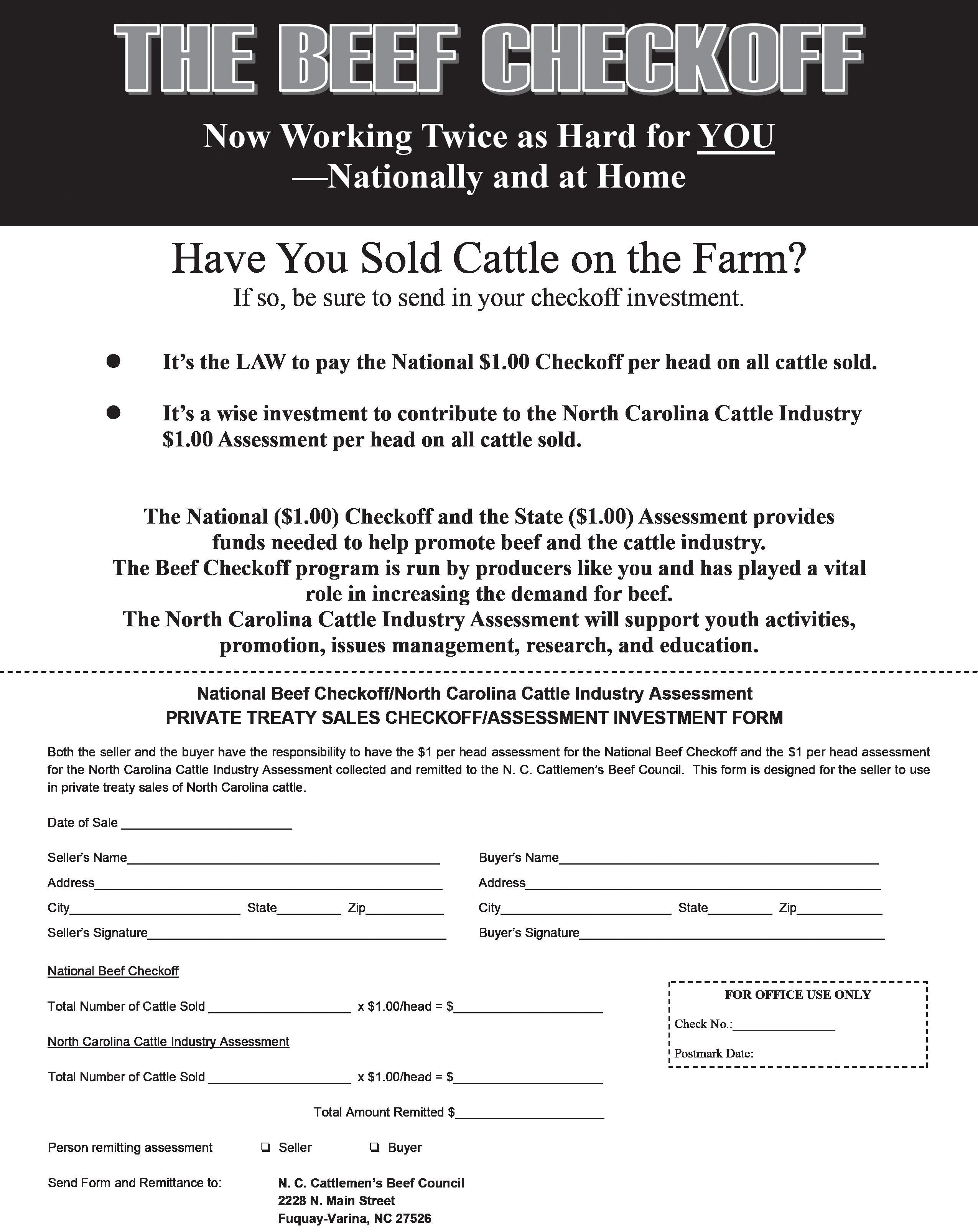
By DR. MATT POORE, N.C. State University
The last month has been very dry, and surprisingly, we were also hit by a very sharp cold spell with lows in the mid-teens. After zero rain in October, we had 1.4 inches of rain in November and none in December until this week. Our new novel endophyte tall fescue stands are up but very small and in need of rain. Fortunately, the forecast is for another inch of rain today and moderate temperatures for the next ten-day period.
Last Saturday, December 7, was a big day for us. Brandon, Tina, and I started extra early in the bitter cold doing all our chores because Dean Askew, our A.I. technician, was coming to help us put CIDRs in the heifers. The chores started with giving grass to our first calf heifer group in the front field. This group is grazing on stockpiled novel endophyte tall fescue, and they are in a fabulous 6 body condition (without any supplemental concentrate) and already cycling. Their A.I. (artificial insemination) sired calves are outweighing calves in the main herd! We move the fence ahead daily and have about 60 days of high quality, non-toxic stockpiled grass left for them.
Next, we went to the house to feed the cats, chickens, the two yearling bulls, and the blind cow/misfit group. After loading feed for the finishers, getting a bale on the Hay-B-Gone behind our Suzuki Sidekick, and two bales on the big JD tractor, we went to the back to finish up.
The first stop was the finisher group of 33 two-year-old steers and heifers we are developing for delivery in January and February. These are in a large pasture, getting 1 percent of their body weight in soy hulls/corn gluten feed and free choice hay using a bale grazing approach.
Next was a quick stop to feed a cow and calf in the pasture we use as a hospital pen, then on to the yearlings (86 steers and heifers) who were in need of hay. After putting those rolls out and checking that group, we headed on back to the mature cow group that is grazing stockpiled KY-31 tall fescue mixed with crabgrass, dallisgrass, and other warm season grasses. This group of 80 cows with calves is really fun to move… I love to see large groups of calves running and playing with their tails up! We are flip-flopping reels for this group and giving them about 1 acre each day.
Finally, we went back to the house to meet Dean. We got our working supplies together while Tina went to get the kids (Brandon/“Cowboy” and Lainey), and once Dean was ready, we headed back to the working pens.
The yearlings were still eating on the hay we had given earlier, so we had to work a bit to get them up. Brandon led them with a bucket of hay while Tina, Cowboy, Lainey, and I took a reel and stretched it out behind

them. Once we had them going, they moved smoothly to the pen, and, with only a little bit of trouble, they were in, and we were ready to work.
It was a pleasure to have such a great crew, and it reminded me of being at those working pens with my parents and siblings. Cowboy (12 years old) was working on his low stress working skills with his dad and learning to put CIDRs in from Dean. Lainey (15 years old) was running the headgate, I was giving Safeguard drench, and Tina was keeping up with the records. We processed everything in two and a half hours, and it was one of those really smooth cattle working experiences.
After cleaning up our supplies and saying goodbye to Dean, I loaded up my feed for the Pleasant Hills Farm group I take care of on my way home, while Tina and the kids built up the fire in the house. By 2:30 p.m., we were headed home after a simply great day!
I took care of my last group and arrived at my house on Mayo Lake near Roxboro (12 miles southwest of Virgilina) and got ready to do some work in the crawl space under the house. I crawled way back under there and got started, but at 4:00 p.m., I had a call from Brandon. That was very unusual, as we usually text, so I was wondering what could be up. “The Triple Creek house is on fire, and the fire department is on the way!” I came out from under that house in seconds and ran to tell my spouse, Jeannette. Then I headed up the road to Virgilina.
When I arrived, there were four fire trucks already on the scene, and they had the fire under control, although the left half of the house was very badly burned. I walked around and took some photos as the darkness gathered. The fire had burned the yard down to the edge of the woods. I saw a hose there and later learned that Tina and Brandon had stopped the fire from getting into the woods while they were waiting for
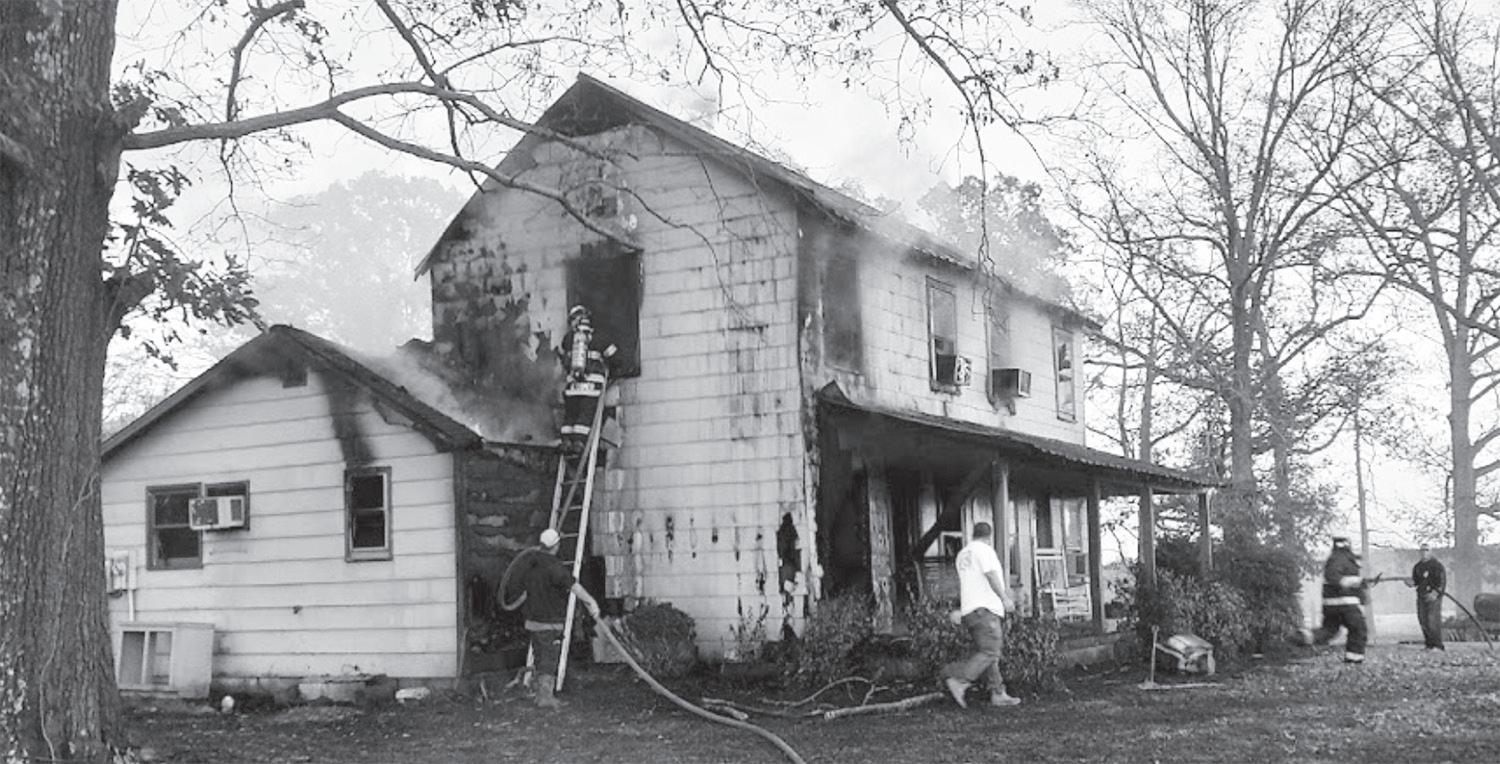
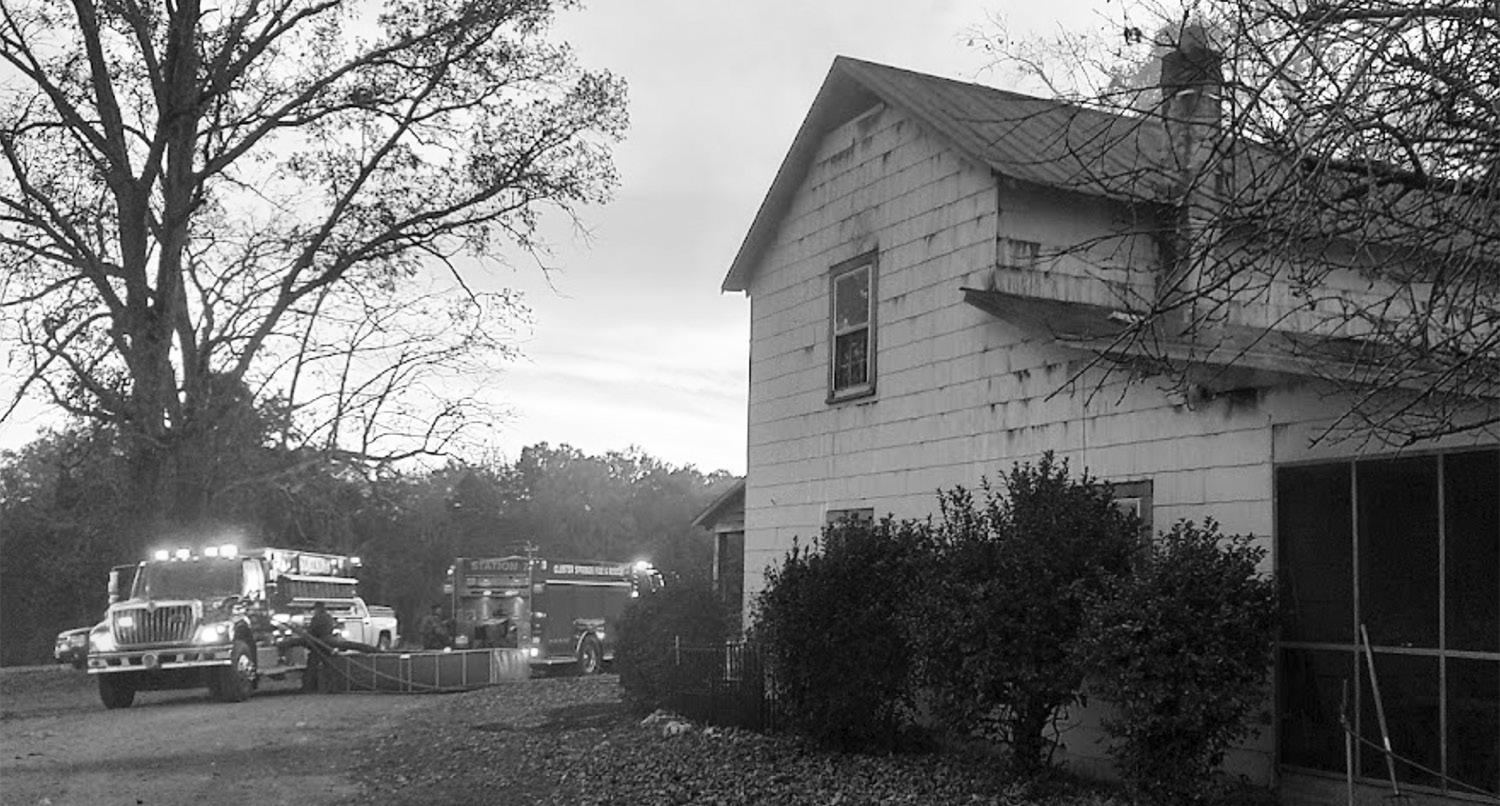
the fire department. This quick thinking probably saved all our other buildings and the big barn, which really would have been a terrible loss.
There was a large crowd there, including the entire families of many of the firefighters. Eventually, nine engines came from four volunteer fire departments in the area. It turned out many of them had been in the Christmas parade in South Boston, so many had their families on board.
After the fire was out, the firefighters helped us get any important stuff out of the right side of the house before they put all the rest of their water on it. We were able to save important items like Dad’s and Blake’s guitars, our guns and gun safe, and our cattle and business records. After that, they drenched the whole scene and then packed up.
I arrived back home at 8:00 p.m. in shock at what had transpired. Jeannette had sent photos to all my siblings, and my friend and colleague April had posted photos on Facebook. As I looked at my phone, I saw I had dozens of texts and missed calls from extended family and friends wishing us well and wanting to find out if anyone was hurt.
On Sunday morning, I gathered my wits and went to Virgilina to assess the damage. I was not sure how I would react, so, before going up to the main farm, I went to the front field heifer group by parking down on the highway and walking in to them. Tina and Brandon met me there, and I suggested we go around and “score” all our projects and enterprises on a 1-5 scale as we went through the day.
This first group was the heifers on novel fescue. They were synchronized, bred A.I. only, and produced 19 live calves from 26 inseminated heifers. The scores at this location were 5 on the heifer program and 5 on the novel fescue program.
Next up to the house. Probably a total loss. Tear dow and rebuild. Looking around, the big barn was good, and the other sheds and outbuildings were not damaged. Still, building infrastructure scores a 1 due to the loss of the house.
Next to the finishers. Dean also works with Firsthand Foods, who buys our cattle. He had told us our first two loads of eight were scored mid to high choice, and the remaining cattle are all nearing finish. We are getting paid well for these animals and will deliver 63 this year, 68 next year, and 70 the following. Tina still feels like we need to improve our uniformity and pointed out that I am not completely satisfied with how fat these animals get. Score 4.5 to leave room for improvement.
The yearling group represents both the beef program and the replacement heifers for next year, so they fit in with those other programs that are going so well.
Finally, to the main herd. These cows are in working body condition of 4.5–5.5. Most of them are doing well on marginal pasture and will improve when we start feeding cottonseed in a few weeks. We had a lot of “slick hair trait” calves born this year because we saved one of our own bulls a few years ago that has that mutation. We initially got this from some Senepol cross cattle we bought one time, and now it is increasing in our herd. These calves are really interesting. I will write more about that in a future column. For now, we still have progress to make here in the main herd, so a score of 4.
Through our rounds, we had been keeping our eyes open for wildlife. We didn’t see much that day, probably because of the excitement of the fire, but we did see a large group of killdeer, our resident turkey vultures, a red tail hawk, and a great blue heron. We regularly see two…one named Frank and one named Fred. We ended up scoring wildlife a 4 that day, knowing that on a typical day, it would be a 5 with turkeys, deer, and multiple species of hawks usually sighted. This winter, we have been seeing a pair of northern harrier hawks hunting mice in the stockpiled grass, and they are really fun to watch soar effortlessly ten feet above the ground.
Finally, we arrived back at the tragic scene of the house. I started to feel my blood pressure rise, and the feeling of heartache started coming back. Then, I remembered why I wanted us to spend this day scoring everything. By my calculations, things at the farm are very good, with an average of 3.7 on a 1–5 scale.
This week we will be working with the insurance company and starting the discussion of how we will rebuild. I know my folks would be devastated if they were alive, but it warms my heart to think of the outpouring of help we received from the community. I know we will continue to get the support we need from family, friends, and neighbors, and that we will build back to support the dreams and to create fond memories for future generations.
Author's note — This is my monthly journal that regularly appears in Novel Notes, the newsletter of the Alliance for Grassland Renewal. Because so many of The Carolina Cattle Connection readers knew my parents, I thought there would be widespread interest in this month’s edition. To receive this column each month, go to www.grasslandrenewal.org and sign up for Novel Notes.


By JULIA MAGNANINI, N.C. State University -- ANS 402 Beef Management
When searching the phrase “meat industry” in Google, you are greeted with an expert from Britannica
Kids highlighting “the largest segment of the food industry,” as seen in Figure 1. Next to the small quote are a variety of pictures of hanging carcasses and hamburger patties. While those who work in agriculture might not be fazed by what is presented, a consumer who wanted to know where exactly their beef came from might be startled when this is what they see. Additionally, the links that follow might not be helpful or accurate in depicting all that goes into the beef industry to produce the high quality meat that a consumer finds sitting on their table. This is why it is so important to have high quality, accessible resources at our consumers’ fingertips. To help stop the spread of misinformation about the cattle and meat industries, finding resources that go beyond internet articles or scientific journals is important in this fast paced social media driven society.

Finding pictures of cute, cuddly cows when searching for information on where your steak came from can be alarming to consumers who have never related the two. Coupling that with misinformation or fear tactics from websites like PETA, whose take on eating meat includes “Consuming flesh takes a terrible toll on human health, taxing your digestive system and increasing your risk of suffering from life threatening diseases,” can turn someone off beef for a long time.7 Reading Fast Food Nation in high school turned me off of ground beef for years after they described packing plants still processing cattle that arrived dead. Digital literacy also comes into play
when we are looking at consumer education. If someone doesn’t know where to look or how to judge if a source is reliable, they might end up reading and believing articles, such as one published by Vegnewsnow titled “Beef Burgers are Destroying the Amazon, and Here is Why.”8
Figure 2 shows the increase in demand for all types of meat across the world. While meat consumption in the last few years has been at an all time high per the USDA, it would be unfortunate to see it begin to decrease because of something that does not accurately portray the industry and the continued advancements the industry is making. Research out of Auburn University found that Gen Z and Millennials who had less knowledge of agriculture had a much higher chance of believing misinformation when given two sources.4
The Beef Checkoff is powering ahead with consumer education and contributing great amounts of time and resources to consumer education, including things such as working with influencers and teachers to help educate those with the most reach.3 Additionally, they have campaigns and articles for consumers, such as “Real Facts About Real Beef” or “Rethink the Ranch.” The Beef Checkoff is also investing in additional research to help get answers to questions consumers have and find
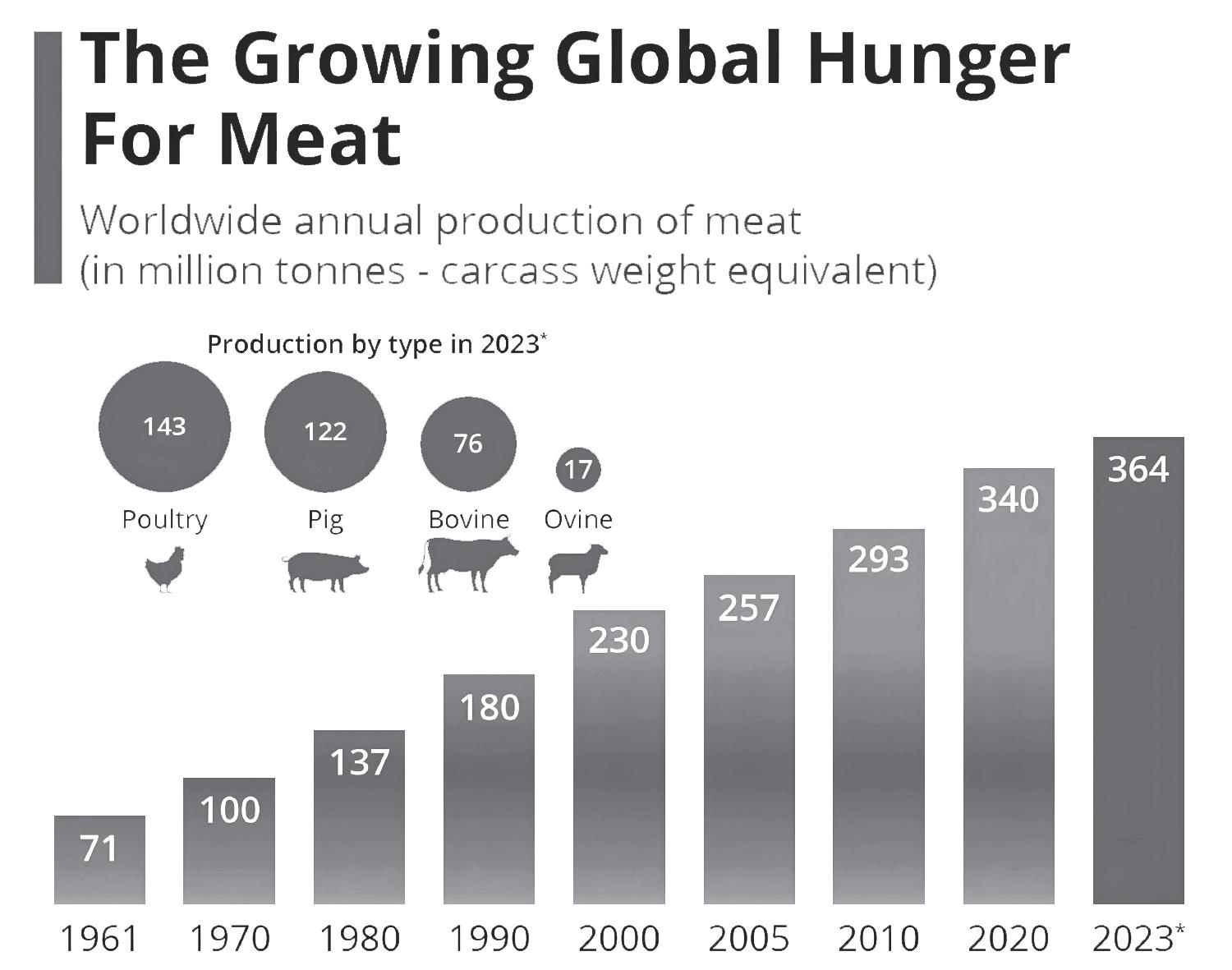
further reasons why beef and the industry as a whole are so important.
Having extension agents and universities who specialize and invest in agriculture, the cattle industry, and food science can be a game changer as well. In North Carolina, we have an extension agent in each county whose job includes helping educate the public about the industry. 6 Having agriculture education in schools can also be a game changer. The USDA reports that 5 million school aged students learn about agriculture in a classroom program. With 55 million students in the United States, that’s only 9.1 percent of students. 5 By continuing to add agriculture programs in schools, we could see a ripple effect, creating a population of students who know and appreciate where food comes from and can help educate family members and others in the community.
When people in the United States have a question, the first order of business is to pull out a phone and Google it. While Google can yield much information, consumers can also receive information from a variety of other sources, including local farmers, educational events such as state fairs, and social media. It’s important to make sure that all consumers have tons of reliable options they can turn to when they have questions so that they feel confident in the food they are eating and in the farmers caring for the animals.
Websites — A great first place for consumers to start is with their state beef council. The N.C. Cattlemen’s Beef Council website at www.ncbeef.org has tons of information about beef farming in the state, beef cattle’s life cycle, nutrition, cooking, and recipes, as well as spotlighting North Carolina cattlemen and farms across the state. Every state should have a similar website with facts and information that can be tailored to the practices and specifics of their state.
USDA continues to be a reliable resource for consumers in the United States. 10 With making sure food is prepared correctly and providing cooking times and temperatures, www.usda.gov also explains antibiotic and hormone uses in beef, as well as the inspection processes that take place.
Finding articles on extension websites, such as N.C. State University’s beef extension website at https://beef.ces.ncsu.edu, can show additional information and research being done. Extension websites are also a great place for consumers to see just how much goes into producing the food on their table.
Social media — Figure 3 shows how social media has continued to grow year over year. This has allowed it to be a powerful tool to spread awareness and information. TikTok is currently running a TV commercial about how its platform is connecting Texas ranchers, like the family from Bar 7 Ranch, with viewers to explain all they do on their farm.9 TikTok, Instagram, and Facebook offer live looks at the day-to-day experiences of life on the farm. Fellowship_Farms on Instagram offers a great look into their farm
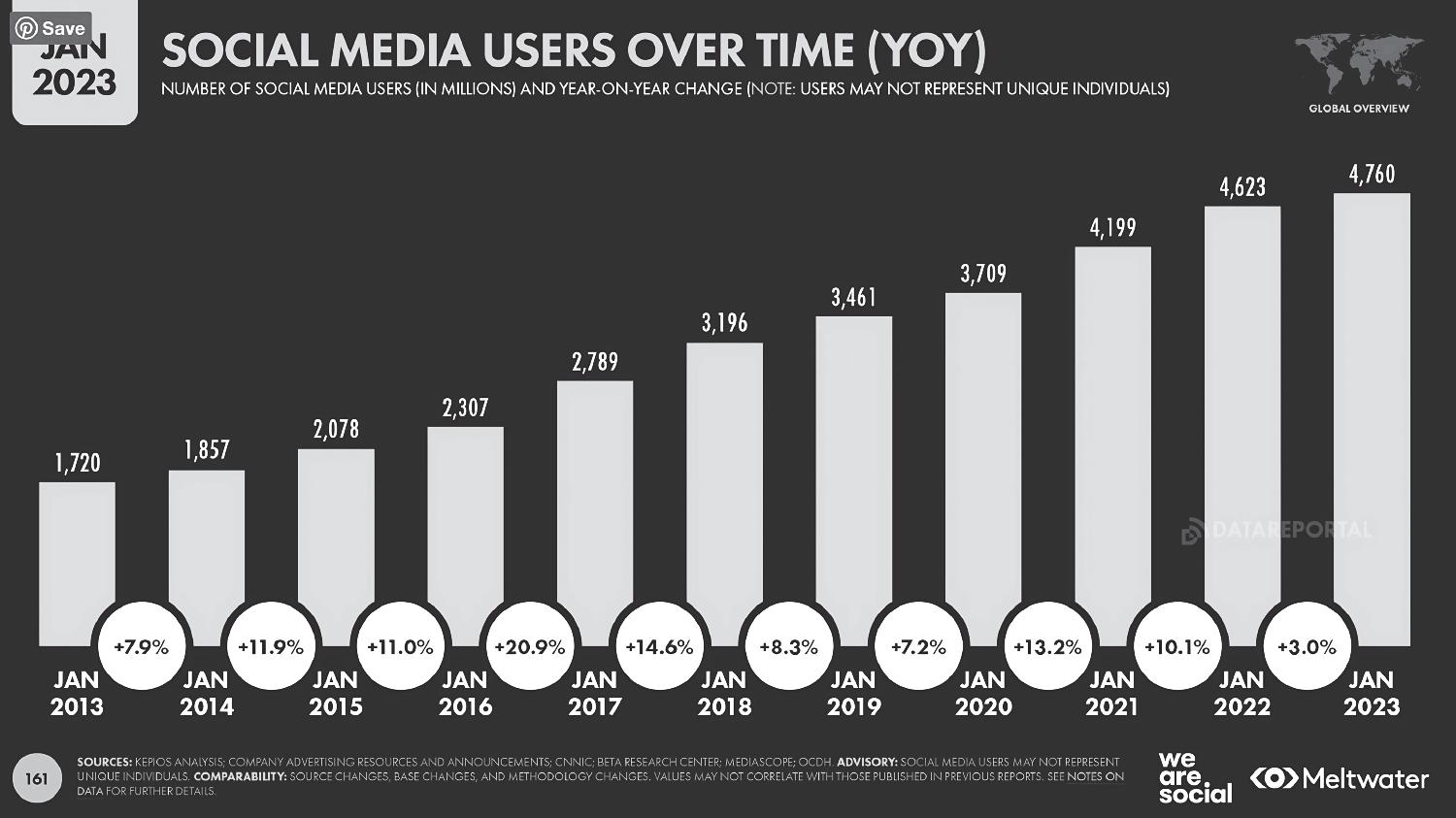
and the small business where they sell their meat. Increased use of social media platforms allows consumers to stay connected and informed about the beef industry and any new advances or news. Connecting with real farmers will also allow consumers to build relationships and respect for the farmers around the country.11 Most influencers and social media accounts can be found by the same name in multiple locations. For example, Bar 7 Ranch can be

Have You Herd continued on the next page
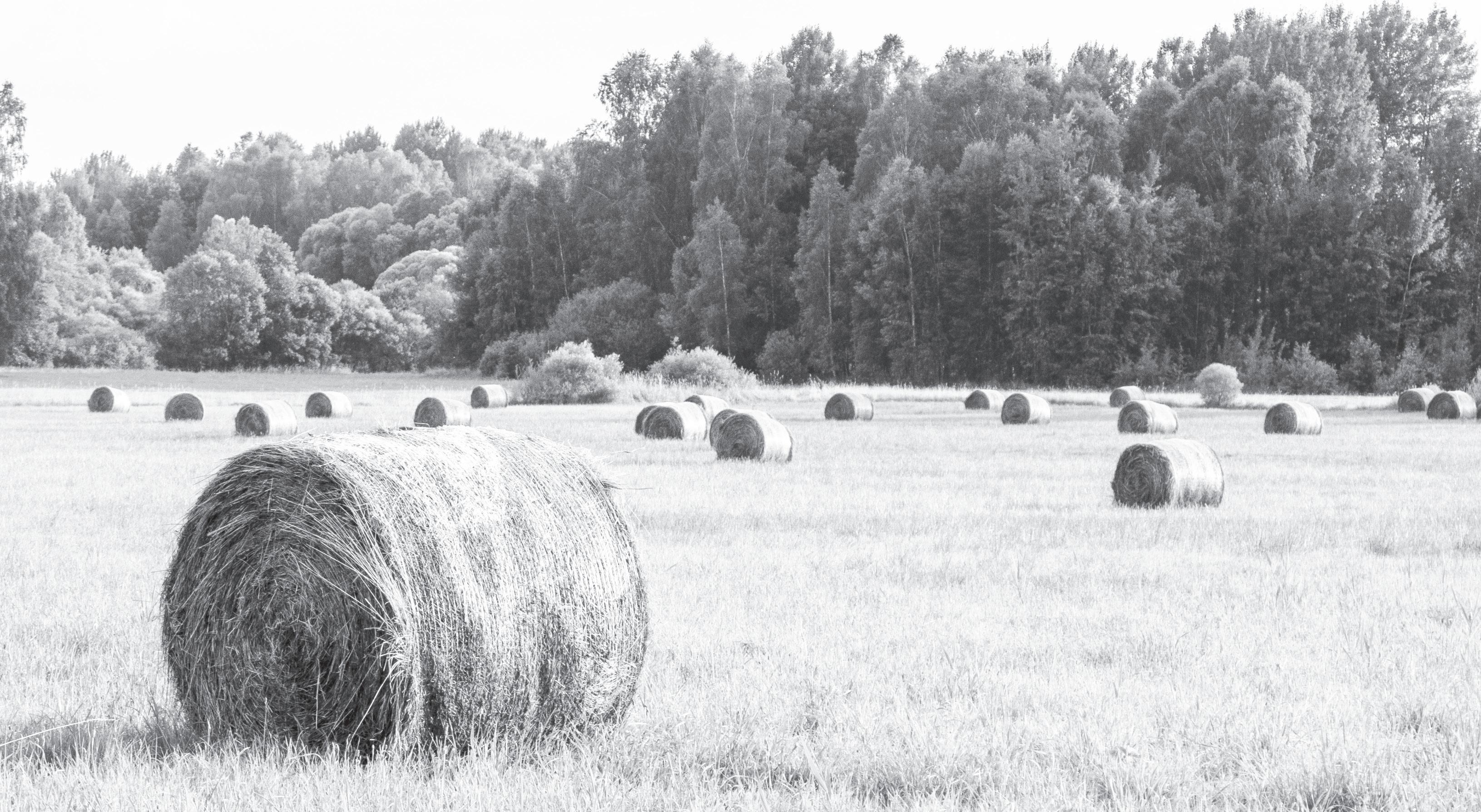

“As president of the Duplin County Cattlemen’s Association and a fellow cattleman, I encourage you to take five minutes of your time to speak with Donna Byrum. She introduced me to a program that I knew nothing about, and within six months she was on my doorstep with a check. The PRF program has been a blessing amid the changing climate and different extremes that all our farming operations have experienced.” ~ Joey Carter
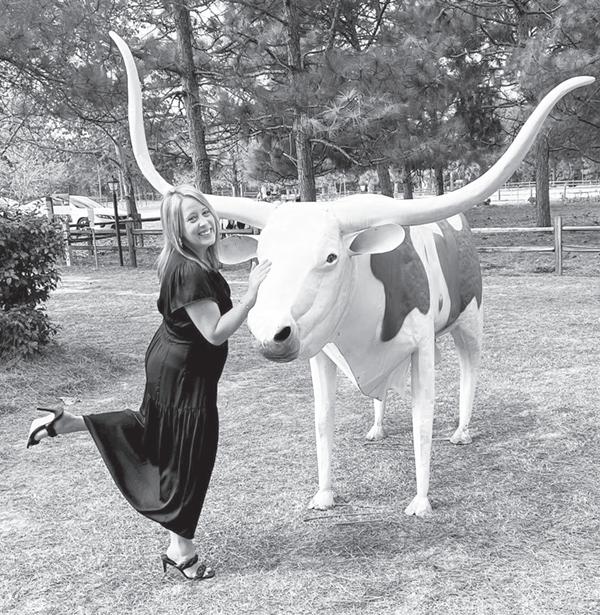
found under bar7ranch on TikTok and Instagram. Another valuable resource can be found in the bios of social media accounts, where links to websites and other helpful information are featured, as seen in Figure 4. Additionally, following beef information accounts, such as @eatbeefnc, @beefcheckoff, and @beefusa, will make other suggestions to consumers to keep in the loop.
Local events and outreach — Consumers can also find information about their meat and the beef industry through local events, such as state fairs, 4-H events, and school assemblies. College and sports teams also host ag days where spotlights are given to the community farmers.6
Making sure consumers have reliable, easy to find information, both about the meat they are eating and where it is coming from, can go a long way in preventing the misinformation of consumers. Additionally, creating knowledgeable consumers can help build a stronger connection to the cattle industry and farmers in general as they see the ins and outs of the industry.
1Armstrong, M., & Richter, F. (2023) “Infographic: The Growing Global Hunger for Meat.” www.statista.com.
2 Kemp, S. (2023). “Is social media really dying?” https:// datareportal.com
3 Beef Checkoff. (2020) “What is the Beef Checkoff?” www. beefboard.org
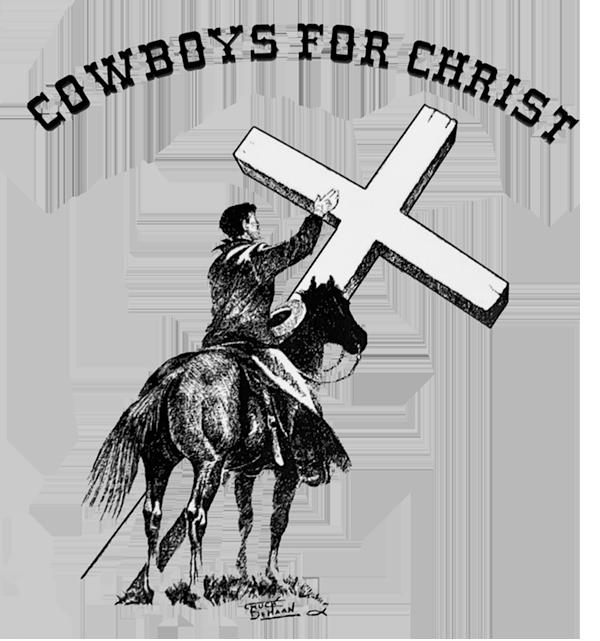
A4Hiltbrand, K. (2023) “Minding the Gap: An Examination of Susceptibility to Misinformation About Beef Among Generation Z and Millennials.” https://etd.auburn.edu.
5National Center for Education Statistics. (n.d.). “The NCES Fast Facts Tool provides quick answers to many education questions.” https://nces.ed.gov.
6N.C. Cooperative Extension. (2024) “Departments & Partners.” www.ces.ncsu.edu
7PETA. (2020) “Meat and your health: Animals are not ours to eat.” www.peta.org.uk
8Pointing, C. (2024) “Beef burgers are destroying the Amazon. Here’s why.” https://vegnews.com
9TicTok. (2024) “TikTok TV Spot — “Cody and Erika Archie.” www.ispot.tv.
10USDA. (2024) “Food Safety and Inspection Service.” www.fsis. usda.gov.
11 Varner, J. (2018) “Agriculture and Social Media.” https:// extension.msstate.edu.
Have You Herd is written as a portion of ANS 402 Beef Management course requirement at N.C. State University Department of Animal Science under the instruction of Dr. Carrie Pickworth. The opinions of Julia Magnanini are not necessarily those of N.C. State University or Dr. Carrie Pickworth.
By SANDRA BAKER, Cowboys for Christ Chaplain
few weeks ago, someone or several “someones” did some things that hurt my feelings really badly. It was one of those wake-up moments for me and for my husband, as he was hurt as well. Rather than go into all the details of what happened, who did it, etc. I decided to remain silent, as did my husband, but it still hurt the same, and we are now older and wiser.
One day, as I mowed, I talked to Jesus about it. I felt Him say, “Who was it that hurt you so badly?” It startled me because, I’m telling you, it felt like those times as a child when my father would gently ask, “What’s wrong? Who did this to you?” I started crying behind my sunglasses and began to tell Him what He already knew! I told Him about how our hearts have always been pure and truly loyal to those around us. I told Him how these individuals are not loyal to other people either! I told Him I felt alone in this and did not know how to be the same again. I told Him I was hurt by hearing hurtful talk about my husband and me from the opposite side of the door as I was about
to enter to feed them with the food meant for us that day. I told Him how hard it was to walk through that same door anyway and feed them as they acted the opposite of what my husband heard moments ago.
I heard Jesus say quietly to me, “I know how you feel. I went through the same thing.” He began to bring to my mind all the stories in the Bible of what people had done to betray Him. I was crying behind those sunglasses again as I said, “I’m sorry that happened to you.”
Although the past couple of weeks have really hurt us, it was at that moment I had to make a decision to forgive them. Tell me that isn’t hard! It was! We have since decided to do some things somewhat differently as we move around and regroup. Today I just wanted to say I am okay, and so is my husband. Jesus paid it all, so how can we not be okay? He really does know you and cares about how you feel! He is the reason we serve. 1 Peter 5:7 — “Cast all your anxiety on Him because He cares for you.” Forgiveness is a great way to start off the new year! These are my thoughts from the front porch. Happy New Year to all!
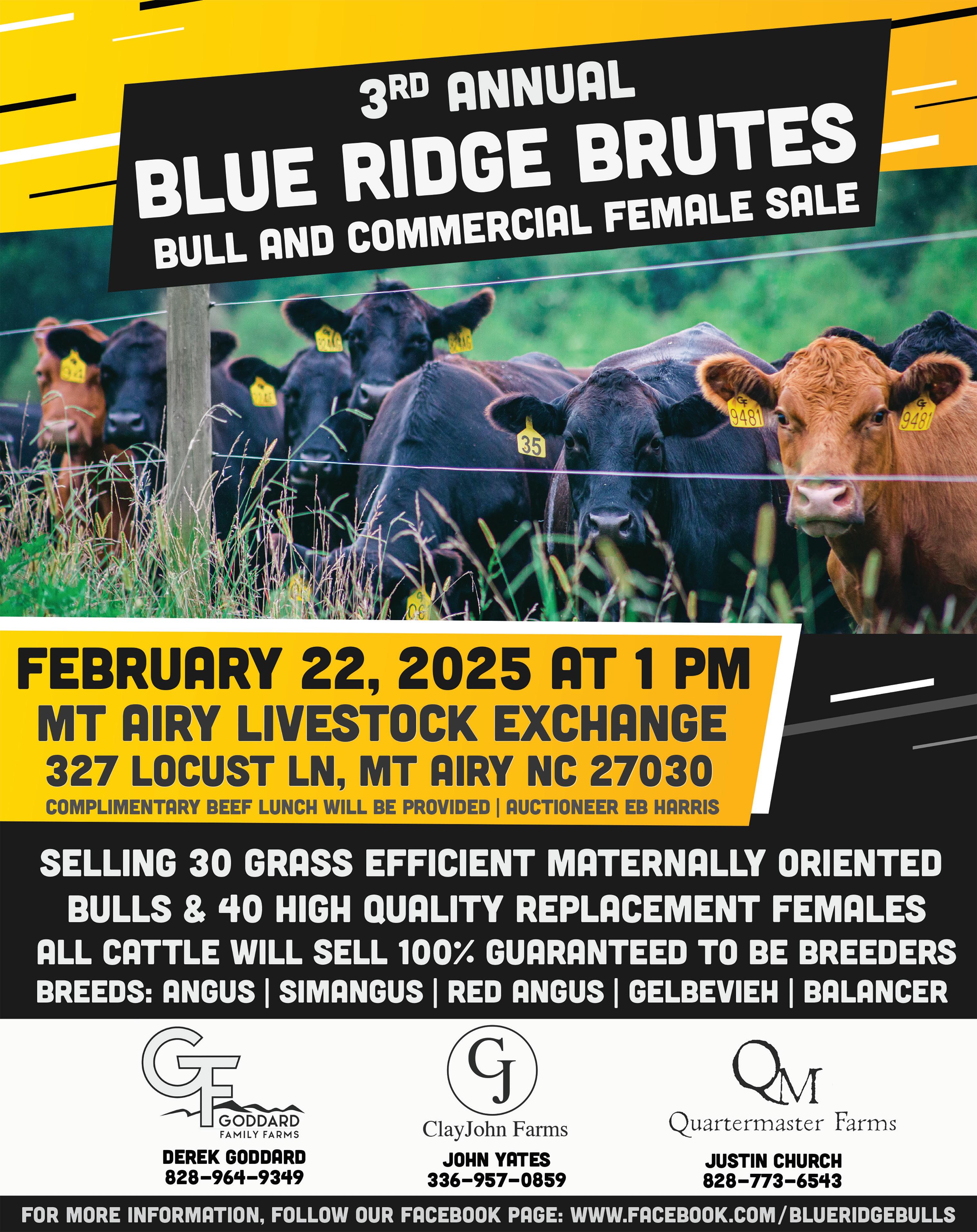
By DR. MIKE WALDEN, William Neal Reynolds Distinguished Professor Emeritus, N.C. State University
You Decide: Will Prices Decline? During the presidential campaign, both major candidates promised to lower prices if elected. Now that the election is over, will President-elect Trump be able to fulfill that promise? Before I address the question, let me remind you of some important terminology. There is a big difference between “inflation is falling” and “prices are falling.” Inflation measures how fast prices are rising. Hence, as long as inflation is occurring, prices are rising. It’s just a matter of how fast. In the last three years we’ve heard “inflation is falling.” This is correct. In the middle of 2022, prices rose 9.1 percent compared to the middle of 2021. In the year from October 2023 to October 2024, prices rose 2.6 percent. Importantly, these inflation rate numbers are based on all prices, including food and fuel. Have we had periods of time when most prices fell? Yes, we have,
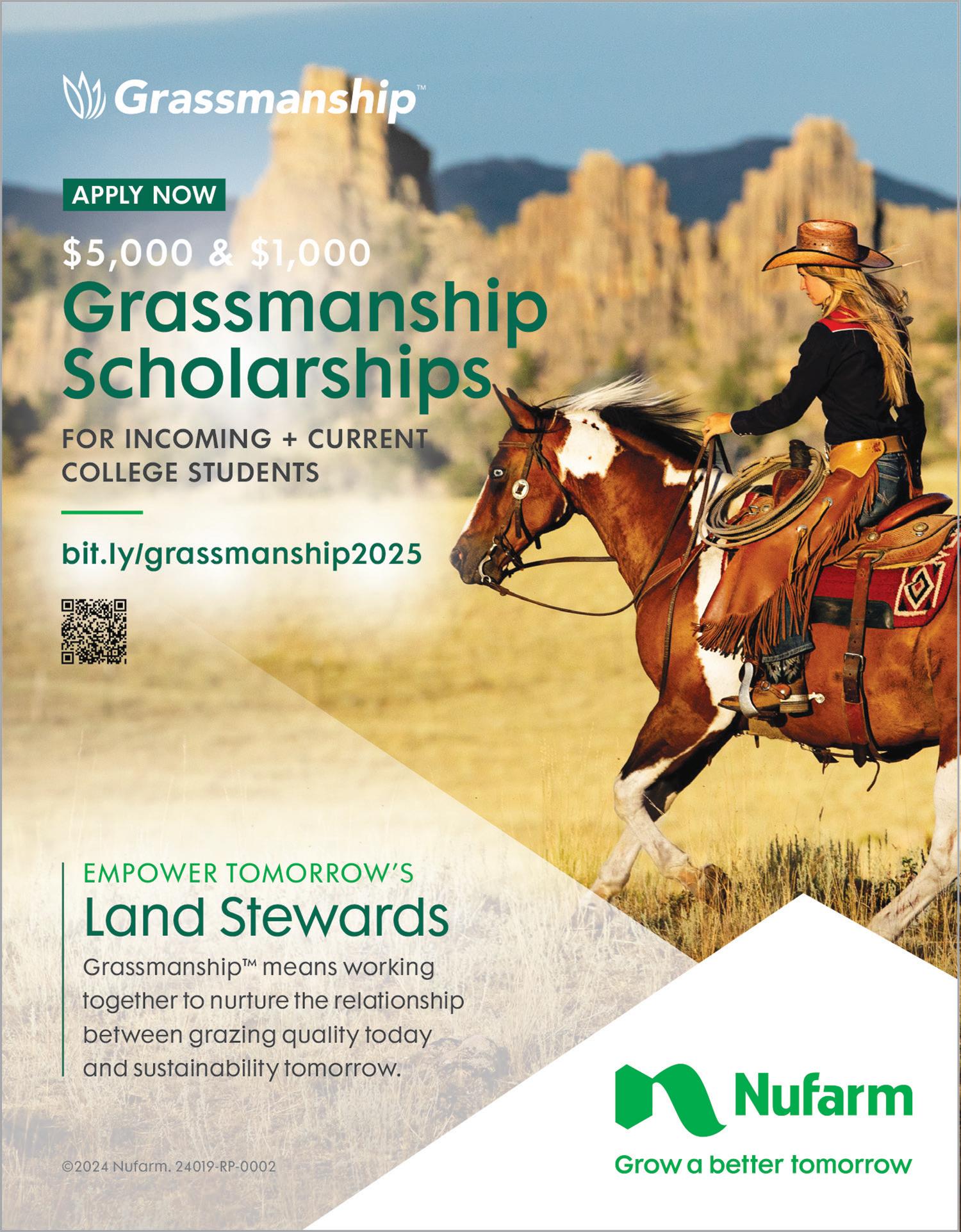
during the 1930s, the late 1940s, the mid-1950s, and most recently in 2008–2009 and in early 2020. What do these time periods have in common? They were all years when the economy was in a depression (1930s) or a recession (other periods). During the times when prices were dropping, unemployment was rising, incomes were falling, and consumers were buying less.
The real question is whether we can have prices fall during good economic times. One of the keys to answering this question is labor costs — that is, what workers are paid. As prices rise faster, it is understandable for workers to want higher pay so they can afford the higher prices. Especially with the labor shortage during the pandemic, many workers were in a good bargaining position. As a result, percentage gains in worker compensation almost doubled during the main years of the pandemic (2020–2022) compared to the two years prior to the pandemic (2018–2020). Understandably, workers don’t want to give back these gains even if the prices of non-labor inputs drop.
We can see the importance of labor costs for inflation by comparing price trends for services and for products. Labor costs are very important for services, where they account for almost a third of total costs. The share of labor costs for making products is much lower, at 10–15 percent, due to the greater use of machines and automation. This difference makes it financially easier for companies making products to slow their price increases and maybe even reduce them when the prices of non-labor inputs slow or drop.
This difference can be seen in the recent inflation rate data for products and for services. The latest consumer price numbers show product prices fell 1 percent during the year from October 2023 to October 2024. In contrast, prices rose almost 5 percent for services during the same year. So right now, the relative bargain is buying products instead of services.
What about the claim of “price gouging” as a tactic used by businesses to keep prices high even when their costs are falling? This claim has particularly been issued against grocery and supermarket prices that most consumers track on a weekly basis.
In evaluating the claim of price gouging, there are a couple of important facts to realize. First, wholesale prices (what the retailer pays) for any commodity tend to be much more volatile than the prices charged to consumers. Second, studies tracking the patterns of wholesale prices paid by food stores and the retail prices of those same products sold to consumers are very similar. This means the ups and downs of wholesale and retail prices move in a very similar pattern.
There is also the argument that the key to lowering prices is lowering energy costs. But while energy costs are certainly important to both producers and consumers, energy costs for both the average
household and average business are between 8 and 10 percent of total costs. Certainly, there are many households and businesses that pay a much higher share of their total expenses in energy, and energy is definitely a key component to almost everything we do in the economy. But if energy prices were the main determinant of inflation, we would already be seeing falling prices because both oil and gas prices have been dropping since the past summer. Energy costs help determine inflation, but they’re not the only determinant.
The big question is, if prices do not fall to pre-pandemic levels, how will households’ standards of living recover? The answer is: It will happen when household earnings rise enough to compensate for the higher prices, thereby restoring people’s purchasing power. Fortunately, households are getting close. The latest data show average household weekly earnings have increased 2 percent less than consumer prices since early 2021. However, a year ago, the gap was 5 percent. So households are getting close to being able to buy what they did prior to the takeoff of inflation.
Here’s the major takeaway. Prices typically don’t drop in good times. Instead, they decline in bad times, mainly in recessions and depressions. Obviously, sending the economy into a downward spiral is not a solution that helps households and businesses. An alternative solution is to have inflation moderate to a reasonable rate that allows the average person to keep up with prices by receiving sufficient pay raises. This has happened in the past. With the annual inflation rate in the mid 2 percent range and the typical yearly pay raise of near 4 percent, we may be close to a solution. But you decide.
You Decide: What Are the Impacts of Tariffs? I was introduced to the concept of tariffs over half a century ago when I took my first undergraduate economics class. While I remembered the definition for the next test, to be honest, I didn’t find tariffs all that interesting or important.
Who would have thought that 55 years later, tariffs would be one of the top topics of discussion? I’ve answered several media inquiries about them. I’ve talked about tariffs in my various public presentations, and attendees listen. Even people at the gym have asked me what I think about tariffs. Usually, something only economists talk about now seems to be the “talk of the town.”
First, what are tariffs? They are a fee — some call them a tax — the federal government charges on a product or service imported from another country. The domestic company importing the foreign product or service is responsible for paying the tariff.
Why are tariffs used? There are numerous potential answers. One is to raise revenue for the federal government. In fact, for the first 150 years of our country, tariffs were the major source of revenue for the federal government.
Using tariffs can help shield domestic producers from foreign competition and, thereby, encourage domestic companies to expand. Our first Treasury secretary, Alexander Hamilton, promoted tariffs to build up U.S. industry. A modern version of this goal is using tariffs to make imports more expensive so as to encourage “reshoring” of U.S. firms that moved to foreign countries.
A more modern reason for applying tariffs is to express displeasure — some say “punish” — a foreign country, for actions the importing country doesn’t like. For example, tariffs have been used by the U.S. against China for allegedly subsidizing companies that
sell products to the U.S., thereby making foreign trade unfair.
Recently, President-elect Donald Trump has also threatened to impose tariffs on Canada and Mexico if the countries don’t comply with some of his demands. Last is the notion of fairness. Some argue that since most countries use tariffs, the U.S. should also. Interestingly, among the countries with tariffs, tariffs used by the U.S. are some of the lowest.
My profession — economics — has long argued against tariffs. Economists’ point is simple: If a foreign country can make and sell a product to us at a lower price than required for that product to be made in the U.S., then why would we refuse that trade? Buying a foreign made product at a lower price would leave consumers with more money to spend on other things, many of which would be made in our country.
While, as a professional economist, I understand this logic, I also understand some counterpoints. Many people worry that in a world of free trade, the good paying jobs may be taken by foreign countries, leaving mostly lower paying jobs for U.S. workers. There’s also a viewpoint that our country should be self sufficient for national security purposes in producing the basics of life.
There are other important questions about tariffs. One is, who ultimately pays the tariff? Although initially the payment is made by the company importing the product, the issue is whether that company passes that cost on to other entities. Indeed, research shows importers do attempt to make others pay at least some of the tariff. One is the ultimate consumer of the product, who faces a higher retail price to help compensate for the importer’s tariff payment Another is the importer’s workers or other workers along the supply chain, who endure cost cutting measures to offset the tariff’s cost.
A key second question is whether tariffs result in making U.S. manufacturing stronger and more competitive. The existing research suggests the answer is perhaps not. Recent analysis looked both at the “heyday” of U.S. tariffs in the late 19th century and recently imposed tariffs. In both cases, the results showed that domestic manufacturing did not prosper under the tariffs. However, questions may be raised about the recent research because it examined a period that was still impacted by the pandemic.
Yet, the research does raise a concern about how foreign countries react to new U.S. tariffs. If, for example, foreign countries increase their tariffs and curtail buying U.S. exported products and services, there can be significant damage to the U.S. economy. United States exports account for over $3 trillion of revenue annually for U.S. companies, equal to 10 percent of total economic activity.
Some analysts argue that decision makers are aware of the potential problems with tariffs, implying the threats to impose tariffs may be a bargaining chip in trade and other negotiations. For example, the agreement governing trade between the U.S., Mexico, and Canada is set to be reviewed in 2026. Some experts think the incoming Trump administration is using talk about new tariffs as a tactic to be used in negotiations. Others have interpreted the tariff talk as leverage for making an agreement with Mexico and Canada over immigration.
Tariffs are a controversial economic tool with supporters and opponents and pluses and minuses. Tariff talk has increased in recent months, and the talk will likely continue into next year. Watch for the details and attempt to read the nuances so you can decide where you stand on this long used and debated economic tactic.
By E.B. HARRIS, Warrenton, N.C.
The other day I had the opportunity of running the turbotill and putting in some winter cover crop that was on some of the last bean land we harvested this fall. When you are doing tractor work, your mind has a lot of time to think and wonder about what’s happening, what’s going to happen in the future, and what’s happened in the past.
We are tenants on a farm a few miles from the house. On this farm are several hundred acres of crop land. We make hay on some of it, put beans on some, and, from time to time, we rotate it with corn silage for the cattle if we need it.
I was probably a mile off the road on the back side of one of the fields, working around an old house where tenants used to live. I got

to counting up the number of houses that I knew of on this farm. There were four right here; one across the road made five; another one down the road made six; the big house made seven; and the other house made eight. I knew there were eight houses that people who worked on the farm lived in. They all made a living on the farm. I am guessing there were at least 20 mules. Not counting the big house, if the households had a mother and daddy and four children on average, that was 48 people. Then you add nine people from the big house. That was 57 people that farm had to provide for each day.
I know in the ‘50s and early ‘60s, cotton was king and tobacco

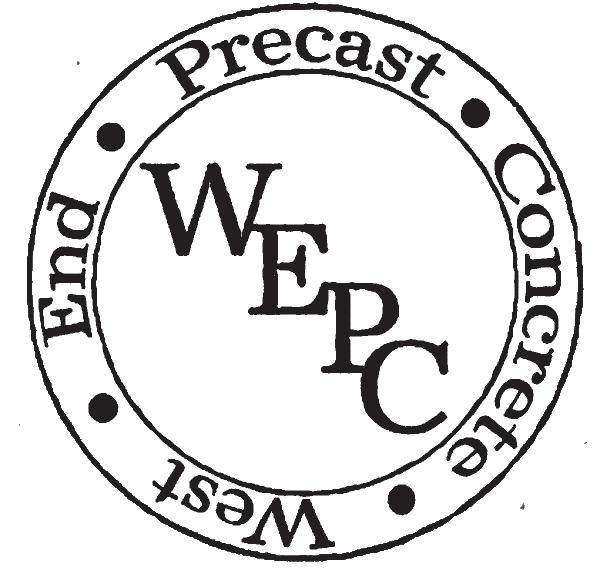


There is now a 300+ HP tractor with 25’ tillage where 20 mules used to trod with single plows.
and other crops came into play. I would say each homestead had a milk cow, a couple of hogs, and some chickens. Sometime in the late ‘60s, cotton moved out and cattle moved in. My daddy had a crop of cotton planted on our farm. I believe he sold our allotment to someone around Newton Grove. I am guessing the plantation we are working on now had the last cotton planted there about that time.
The change in crops led to the changing of tenants on the farm, while some stayed on as long as they were alive and helped with the livestock and the main crop of tobacco. It has still changed even more today because the family heirs wanted to do other things. The land is still there, and we are just fortunate to be tenants for the time being and able to work the farm into our operation.
All I can say is I am glad I don’t have to look after 57 people for their well being. I have not sat down and figured out how many we are feeding with the pounds of beef or the tons of soybeans we produce each year. But those 57 are not standing there looking at me every morning for their well being. I am just glad to be there for a little while doing what we enjoy — raising a rotation of cattle and soybeans.
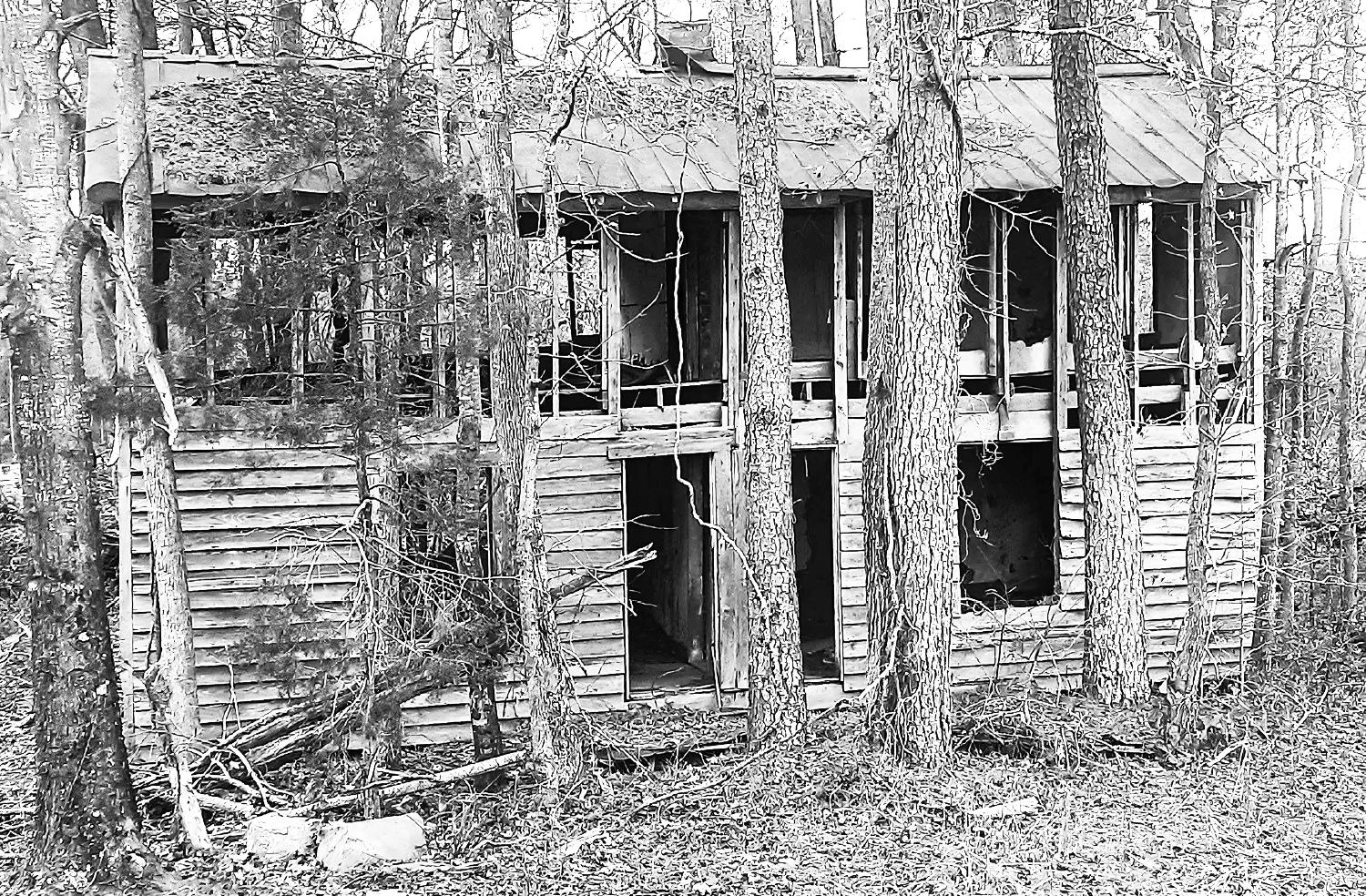
There were duplexes before folks called them such.

Most of the breed associations in North and South Carolina have stepped forward and renewed their contracts for Spotlight sections in The Carolina Cattle Connection for 2025. If your breed is not featured as a Spotlight section and you would like to inquire on any open months please feel free to contact me. Below is the tentative schedule for the upcoming year.
JANUARY CHAROLAIS FEBRUARY FORAGES MARCH ANGUS APRIL PIEDMONTESE MAY BRAHMAN
JUNE HEREFORD JULY
AUGUST SIMMENTAL SEPTEMBER SANTA GERTRUDIS
OCTOBER WAGYU
NOVEMBER ---------------------DECEMBER BRAUNVEIH
For more information about your breed’s Spotlight Issue, contact: The Carolina Cattle Connection 2228 N. Main Street • Fuquay-Varina, NC 27526 919-552-9111 • mail@nccattle.com
By ALAN FRANZLUEBBERS, USDA-Agricultural Research Service
Pedogenesis is the process of soil formation. This process manifests itself into the soils we know today after thousands or millions of years of weathering. The formation of soils is influenced by five key factors: parent material, climate, topography or relief, organisms, and time. In case you don’t have enough abbreviations on your daily calendar, these five factors are abbreviated by soil scientists as CLORPT. This stands for climate (CL), organisms (O), relief (R), parent material (P), and time (T). Pedogenesis describes the historical processes that ultimately resulted in the soil profiles typical within the Coastal Plain, Piedmont, and Blue Ridge regions of the Carolinas. The parent material of Coastal Plain soils is from marine deposits of sand and clay. The parent material of Piedmont soils is typically from weathered bedrock of saprolite, which is a Greek term for “rotten rock” since underlying rocks were chemically weathered over time into smaller fragments. The parent material of Blue Ridge soils varies depending on the presence of igneous, metamorphic, and sedimentary rock outcropping.
Pedogenesis is an important part of describing soil carbon because carbon provides a mechanism for rock weathering by feeding soil microorganisms that catalyze chemical reactions to disintegrate rocks. Soil microorganisms, plants, and a variety of soil dwelling animals are the organisms that help form soil over time. Carbon also accumulates in soil differently depending on the mineral features of soil profiles. The amount of carbon stored in your soil is partly due to pedogenesis and partly due to how you and your forefathers managed the land. The process of pedogenesis provides some limitations as to how much carbon can be stored in soil, mostly because of the type of mineral, their size (think clay, silt, and sand particles), and the overall climate (think warm and wet rather than cool and dry).
Management is what you do on the land over time. Planting a stand of tall fescue is a type of management. The type of livestock you have on your farm is a type of management. Whether forage is grazed directly by ruminant livestock or cut for hay and fed elsewhere differentiates two styles of management. Allowing cattle to occupy the same pasture the entire year or corralling them to graze on smaller parcels of land with electrified polywire fencing and frequently moving them to fresh forage is a differentiation of

management styles How long livestock have been on your farm is a duration of management, which has impacts on soil carbon too.
Now that we have some definitions and descriptions of pedogenesis and management, the story of soil carbon gets more complicated, but also a whole lot more interesting! Consider that pedogenesis took millions of years to result in the soil that you or your forefathers obtained and managed. You might think your relatively short presence on the land might not have much effect on soil carbon This speculation sets the basis for a lot of the agroecosystem research we conduct in the Carolinas, in this country, and around the world. Land based agricultural science often tests whether our intuitions are correct or not.
So, let’s test this notion that soil carbon can be separated by the influences of pedogenesis and management. There might be different ways of testing this hypothesis. An obvious one would be to deploy a standard type of management onto at least two contrasting soils with different climate, organisms, relief, parent material, and time — yes, I wanted to say CLORPT! We might consider planting tall fescue into fields at the Upper Coastal Plain Research Station in Rocky Mount, N.C., the Piedmont Research Station in Salisbury, N.C., and the Mountain Research Station in Waynesville, N.C., to put the same management on three different types of soils differentiated by climate. What was done to each of these fields for the past several decades might be an important consideration, and hopefully those
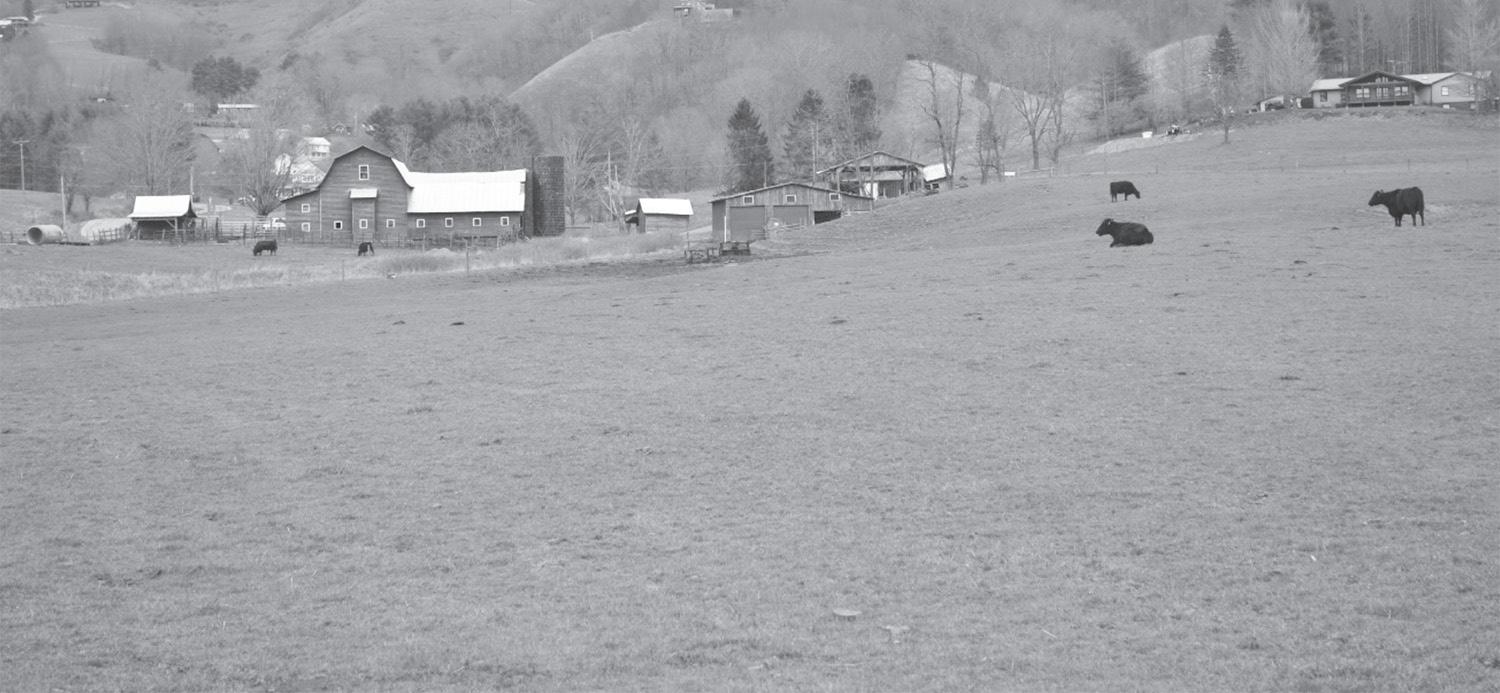
conditions were similar. We would want to sample soil today and then perhaps periodically every 5–10 years thereafter for up to 30–50 years until there would be no further change in soil organic carbon. We could then calculate which soil had the lowest and highest soil organic carbon at the beginning and end of the experiment. This might tell us which region allowed the greatest stock of soil carbon to occur, as a test of the pedogenesis effect. We could also calculate what the difference in soil organic carbon was between the ending and beginning of the experiment, and that could tell us which region allowed the greatest accumulation. This could also tell us what the effect of management was from the planting of tall fescue. This long term experimental approach would be considered typical for how land management would be evaluated. But we might only deploy one type of forage utilization strategy, such as cutting for hay, and have no information on what the effect of grazing might be under these conditions. If we wanted to know something about fertilization effects on soil, then we’d have to repeat observations at the same locations, and this would take more space and create more work. It takes time and resources to get good data. These are also the reasons why we don’t have much information on long term management effects on soil carbon; it takes time and money, as well as people dedicated to the process!
Let’s consider an alternative approach. By sampling deeper into the soil profile, such as 24 inches deep, soil analyses can reveal to us something about pedogenesis and management at the same time. The primary rooting zone of most plants will be the upper 12 inches of soil. When we sample deeper than 12 inches, there is often little detectable change in soil organic carbon over time. Using this information to our advantage, we could then use the carbon concentration at 12 inch depth to indicate the pedogenesis influence without management influence. The changes in soil carbon within the surface 12 inches can then be attributed to land management, as long as we account for the profile specific pedogenesis influence from the carbon concentration at 12 inch depth. This approach is what I call “root zone enrichment of soil organic carbon,” that is, the accumulation of soil carbon in the surface 12 inches (the primary root zone) minus that of a baseline condition dictated by pedogenesis.
Results for root zone enrichment of soil organic carbon are presented in the following using samples collected at depths of 0–4

inches, 4–12 inches, and 12–24 inches from paired grassland and cropland management at different research stations throughout North Carolina in 2021. Baseline soil organic carbon was not different between pairs of land use within a grouped location, as shown in Figure 1. Baseline soil organic carbon varied dramatically among the four groups, which can be assumed to have had different soil formation factors influencing these soil carbon levels.
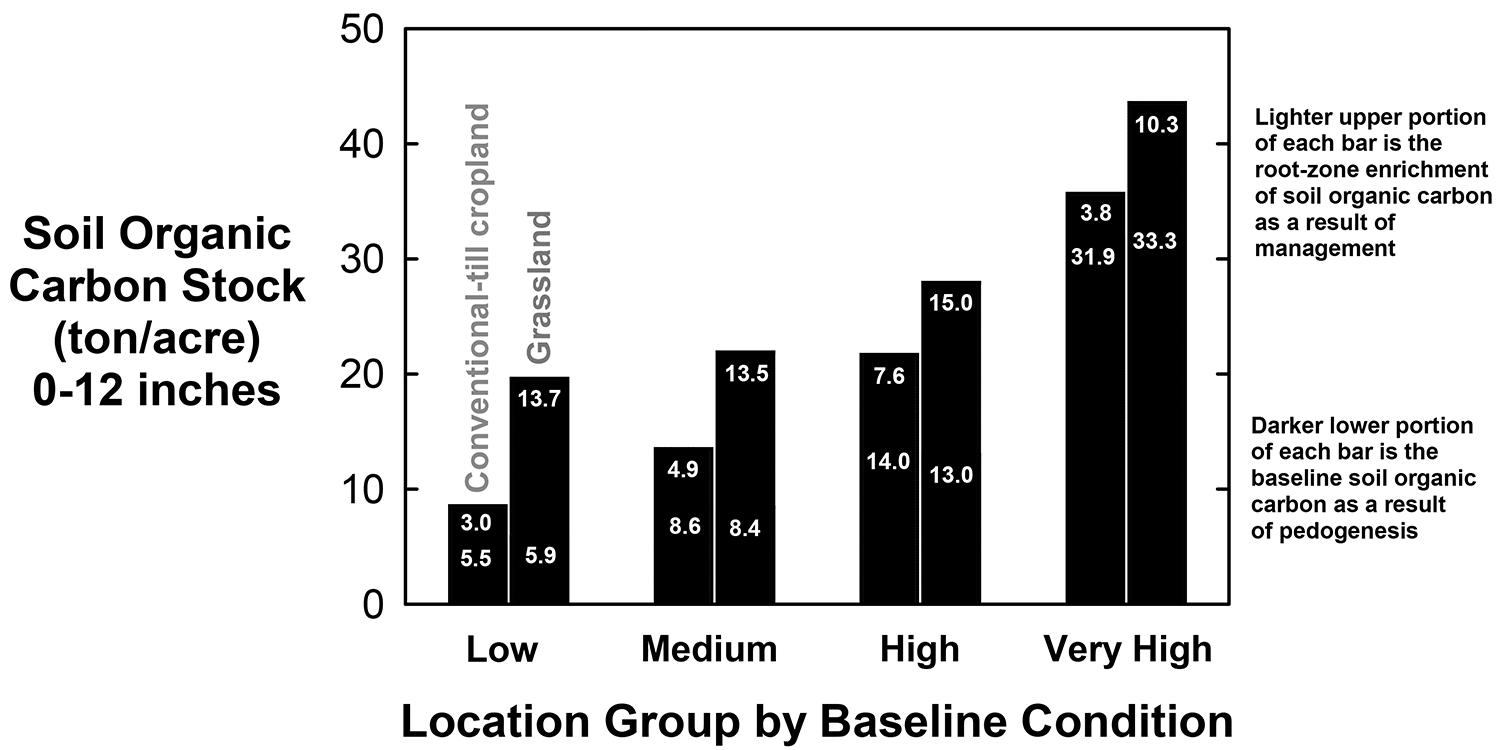
Root zone enrichment of soil organic carbon was greater under grassland than under conventional till cropland in each of the four soil groups. On average, root-zone enrichment of soil organic carbon was 13.1 tons/acre under grassland and 4.8 tons/acre under conventional till cropland. That’s an average difference of 8.3 tons/ acre. Root zone enrichment was not proportional to the total stock of soil organic carbon, but rather was a relatively constant quantity independent of baseline soil condition. Total stock of soil organic carbon would be equal to the sum of baseline soil organic carbon and root zone enrichment of soil organic carbon. Total stock of soil organic carbon averaged 14.1 tons/acre in the low group, 17.7 tons/ acre in the medium group, 24.8 tons/acre in the high group, and 39.6 tons/acre in the very high group.
These results of root zone enrichment illustrated that grassland could store more soil organic carbon than conventional till cropland, irrespective of the baseline soil condition. If you recall from the November issue of this series, total soil organic carbon across private forage and grazing lands in North Carolina averaged 22.3 tons/acre in the Coastal Plain region and 32.4 tons/acre in the Blue Ridge region. Therefore, could the lower total stock of soil organic carbon in the Coastal Plain region compared with the Blue Ridge region also be influenced by root zone enrichment? We’ll take a look at the results in the next article.
In summary, soil organic carbon is influenced by pedogenesis and management. We now have a way of determining how these factors can be separated. Results presented in Figure 1 indicate that grassland management on previous cropland could more than double the amount of carbon in the top foot of soil at one extreme, or it could increase the amount of carbon by only 20 percent at another extreme. The root zone enrichment calculation approach will be valuable for making more accurate estimations in the future of how various pasture management approaches influence soil carbon.

ensure the sample taken is an accurate representation of the entire bale. Many county extension offices have a coring probe available. For more information, please contact your local extension office.
By LEE VAN VLAKE & AMBER STARNES, Clemson University
With the holiday season ending, many cattle producers are extremely busy with the peak of calving season and feeding hay. During this time, producers are working to ensure nutritional needs are met to sustain a lactating cow, along with the challenge of ensuring that the cow is nutritionally sound to have a successful breeding season.
High quality hay is a top priority for both the producer and consumer. A forage analysis will determine the value, quality, and any potential toxicity of the forage. The analysis will help you to decide what, if any, supplementation needs to be included to ensure a successful breeding season and high lactation.
The accuracy of the analysis will significantly depend on the method used when collecting the hay, the harvest location, and the timing of cutting. Using a coring probe with a serrated edge will
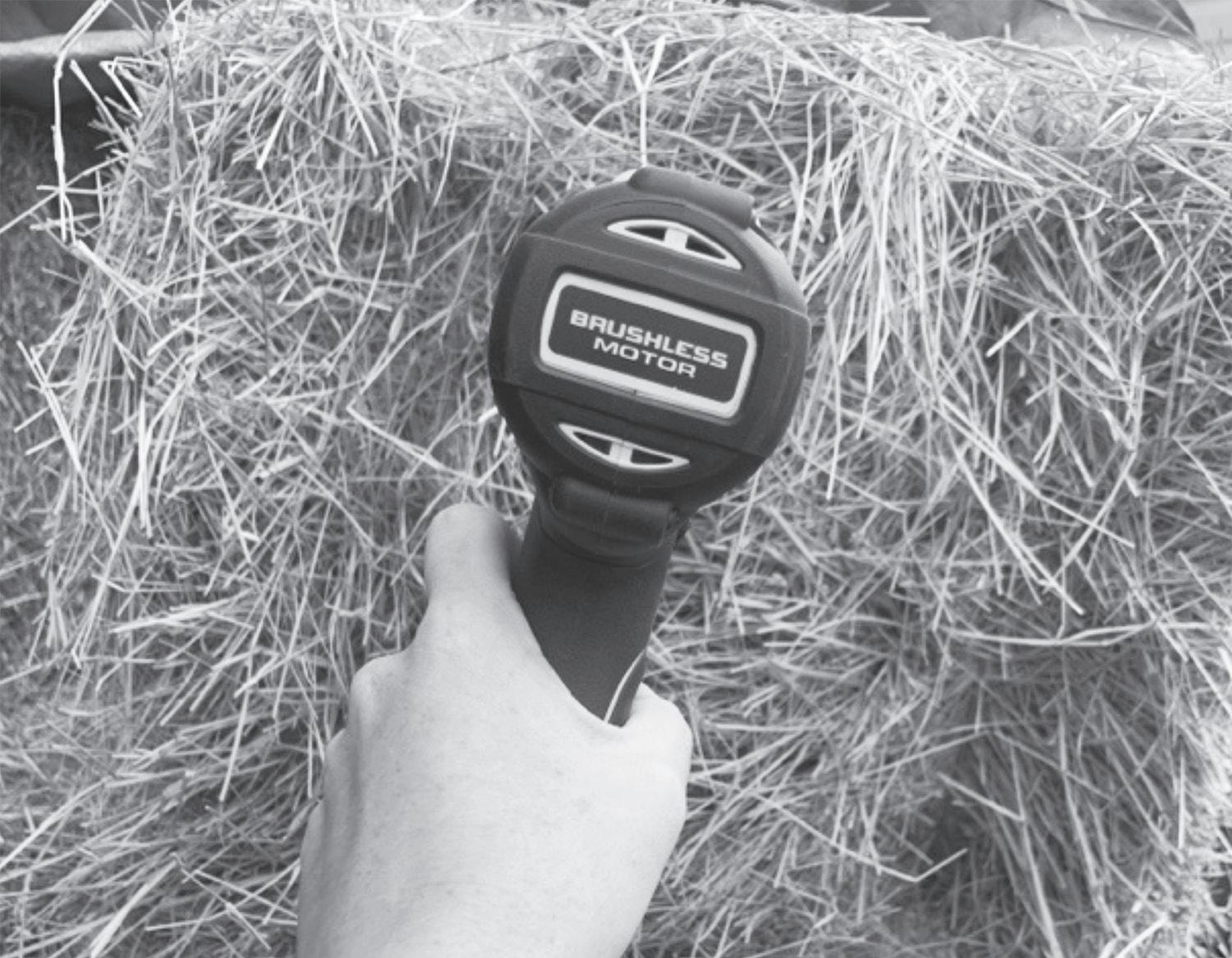
Sampling Procedure – Taking the core sample from square bales creates more of a challenge due to shape/size; however, the sample should be taken from the end of the bale towards the middle to collect an accurate sample. When core sampling a round bale, you should always collect samples from the rounded side, probing into the center. Pulling samples from the ends or bottom of the individual bales does not give an accurate representation of the hay quality.
To take a core sample, drill the probe into the bale 12–24 inches before removing the probe to collect the sample. The sample should be obtained randomly from multiple bales that represent the entire hay lot. While sampling, be sure to avoid only selecting the bales that look good or bad; remember, this is a random selection. To better define a hay lot, the samples need to be from the same cutting, the same field, and the same variety of hay.1

Most university and private forage testing labs offer forage analysis that can provide you with a detailed report on your hay. Some important nutritional factors include protein, energy, digestibility, and potential toxic levels of nitrates, etc. This gives an accurate measurement to take out all the guesswork for providing a sufficient and safe nutrition plan for your herd. Depending on the lab that you use, it typically takes 10–14 business days to receive the results.
Understanding and Using Your Results – To interpret your results, you will need to look at the column labeled 100% dry matter. This will give you an accurate description of your forage quality and value without the dilution of water.2 These results are to be used if the forage is going to be fed soon after sampling, since the nutritional quality of hay can change over time due to various reasons. Factors that can alter the quality of hay include storage methods, weather
The Carolina Cattle Connection
conditions, and temperature/humidity. If you have hay in storage from previous years, you will need to submit a new forage sample for analysis for accurate nutritional quality.
When considering your nutritional plan, it is also important to remember nutritional requirements vary with different production stages of cattle. Animal performance is always the best indicator of forage quality and a well balanced nutritional plan.2
References
1Putnam, D.H. 2002. Recommended principles for proper hay sampling. http://alfalfa.ucdavis.edu
2Ball, D.M., M. Collins, G.D. Lacefield, N.P. Martin, D.A. Mer tens, K.E. Olson, D.H. Putnam, D.J. Undersander, and M.W. Wolf. 2001. Understanding Forage Quality. American Farm Bureau Federation Publication 1-01.
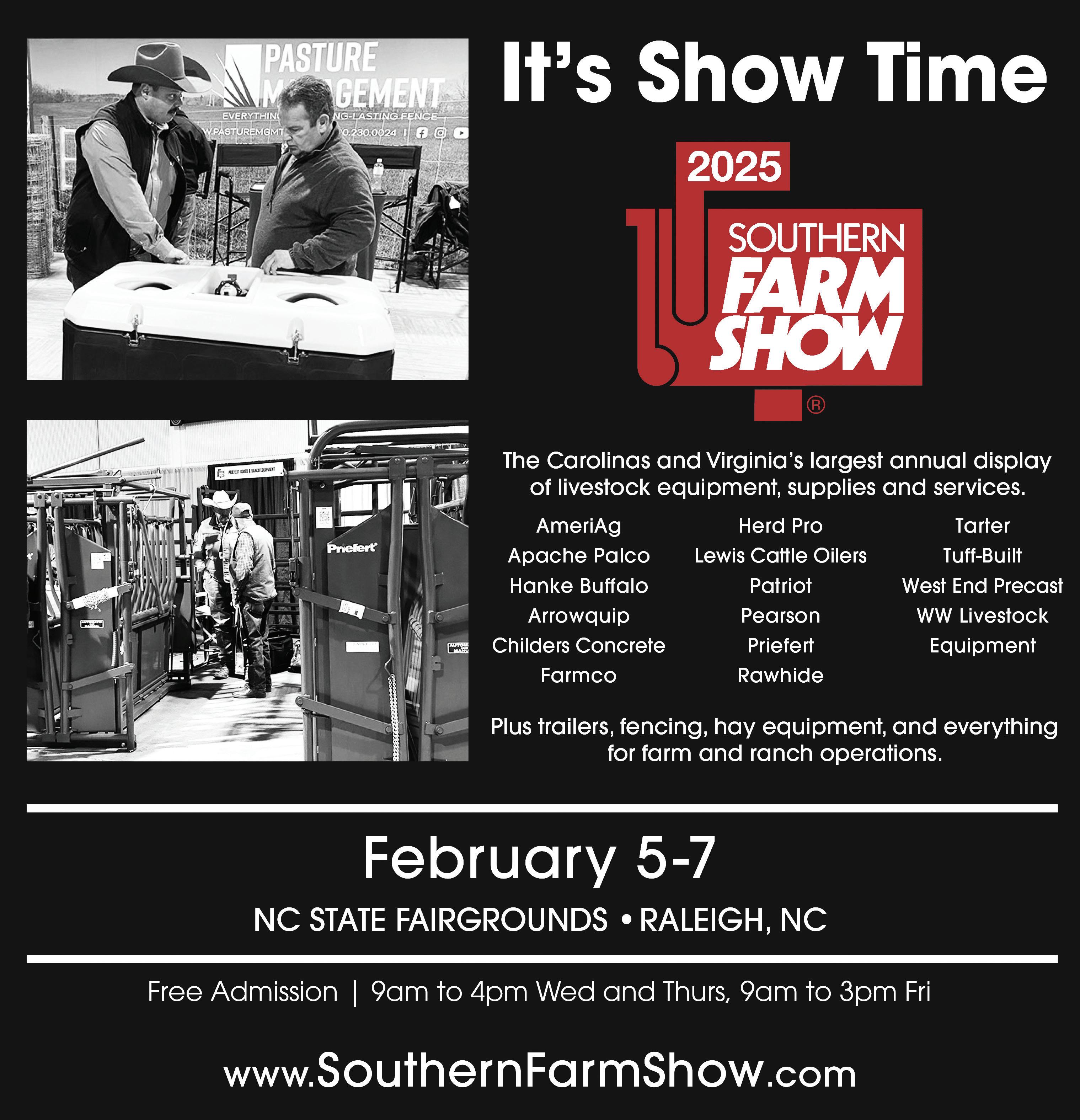

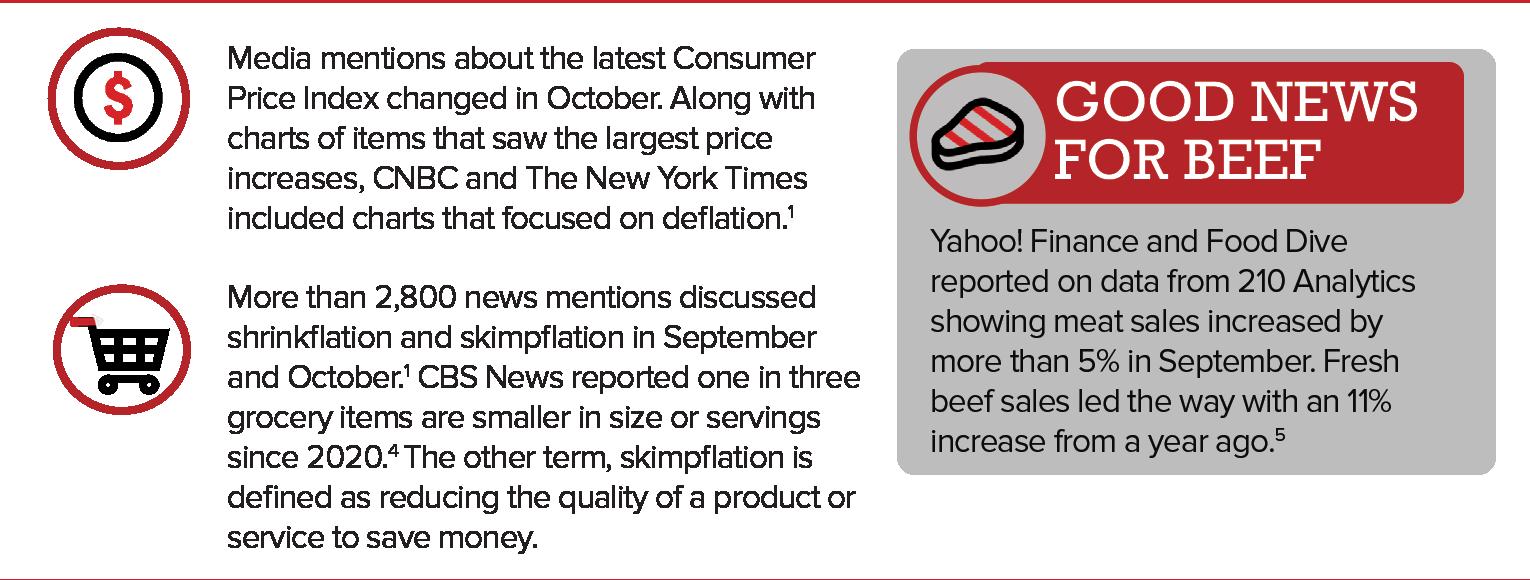
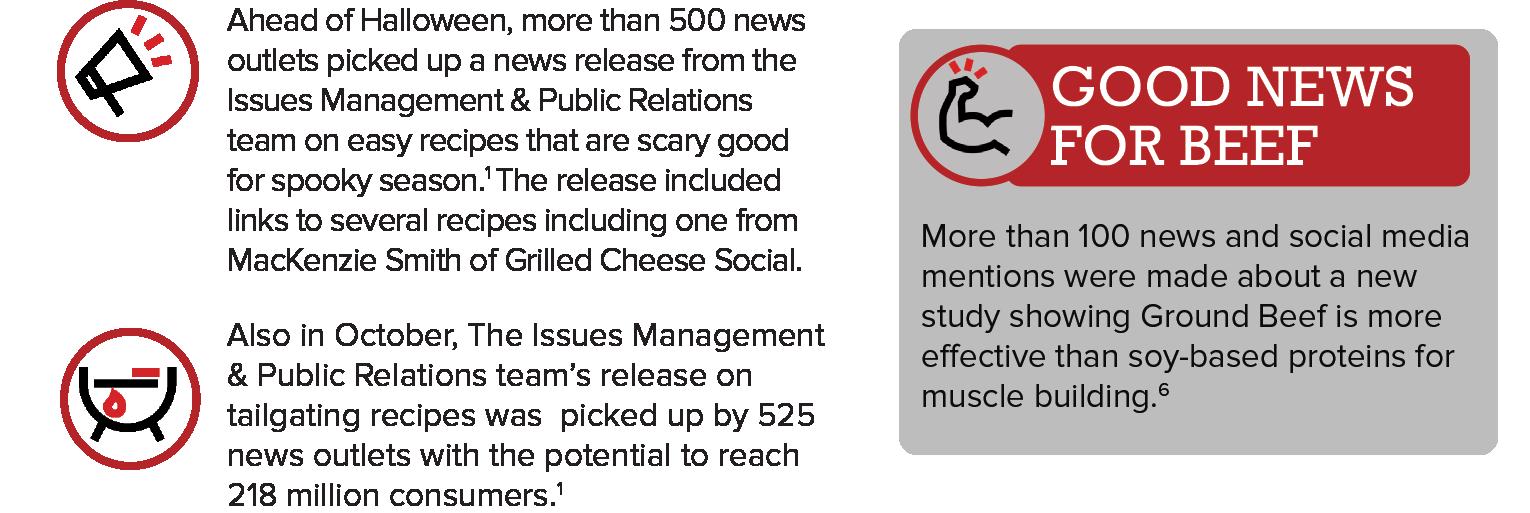
New Registry Service Features. We are excited to announce two new features that have been added to the registry service!
Feature 1 – Members are now able to apply their own A.I. sire and donor dam permits. A.I. sires and donor dams must have a GGP100k, be qualified to both parents, and be tested or free by parentage of the four genetic conditions. If an animal meets those three criteria, an option to apply or purchase a permit will appear at the top of the animal’s individual profile. Clicking the link will automatically apply the permit, and your account will be charged for A.I. permits only. Only the current owner and the original applicant of the animal have access to this feature and are allowed to apply permits. Feature 2 – To make viewing parentage exclusions more visible, a red bar across the top of the animal’s profile has been added to let you know the sire, dam, or sire and dam have been excluded from that animal. A green bar across the top of an animal’s profile lets you know the animal is verified to BOTH its sire and dam and has a confirmed mating. The animal will not have the green bar if it only qualifies to one parent, does not have a confirmed mating, has no parentage results, or has conflicting parentage results.

• Board moved to make the clarification changes from the rules/ bylaws committee as presented.
– Accept the recommendation to add the following to Rule 2.B.D A.I. Sires: “Can be requested by the original applicant of registration or the current owner.”
– Accept the recommendation for Rule 2.C.2 Donor Dam Requirements to read as “Donor Dam Permit on file with AGA. This permit is required for progeny of donor dams to be registered. A Donor Dam Permit may be requested by the original applicant of registration or the current owner and obtained from the AGA upon application.”
• Board moved to remove the CA from the list of genetic defects in DigitalBeef, to include registration papers.
(The AGA does not currently have a defect test that accurately
American Gelbvieh Association News continued on page 51


Board of Directors Highlights. On December 3, the Board of Directors and Executive Committee met, discussed, and decided the following:
• Board moved to accept the Rules and Bylaws committee recommendation to reduce the board of directors from 15 members to 11 members, while leaving the limit of BOD members to 3 per state as it is currently.
(This will have to go before the membership at the next annual convention to be approved.)



identifies CA; therefore, the CA potential carrier designation will be removed from pedigrees.)
• Board moved not to make mature weight phenotype data public within the registry.
(Mature weight phenotype will only be visible in DigitalBeef to the member that submits the data.)
• Board moved to take 66 percent of unrealized gains each year (from July–July) to use towards marketing for the following fiscal year.
(This is money raised from investments throughout the year and will be applied to marketing efforts of the AGA.)
American Gelbvieh Association Elects Board of Directors. Members of the American Gelbvieh Association (AGA) elected five candidates to the board of directors at the annual membership meeting held on December 6 during the AGA National Convention in Kansas City, Missouri.
Newly elected board members are Mark Stock of Iowa, Stuart Jarvis of Kansas, and John Sheare of Kansas. Re-elected to serve a second term were Zach Butler of Tennessee and Gregg Hartman of Colorado.
The AGA board of directors also elected individuals to serve in leadership positions on the executive committee for 2025. Dan Warner of Nebraska was elected president. Stuart Jarvis of Kansas was elected vice president. Brent Overmiller of Kansas was re-elected secretary. Tom Vehige of Missouri was elected treasurer.
Other members of the board include David Larson of Minnesota, William McIntosh of Kentucky, Troy Forbes of South Dakota, Justin Taubenheim of Nebraska, Mark Covington of Colorado, Greg Anderson of North Carolina, and Cory Voss of Nebraska.
Retiring members of the 2024 AGA board of directors were Lori Maude of South Dakota, Gary Felger of Missouri, and Todd Bickett of Georgia.
Convenience Fees. To continue providing exceptional service, starting January 1, AGA will be implementing convenience fees related to DNA and data processing. Those include:
DNA Research fee – $60/hour. Includes but not limited to:
• Extra samples sent to the lab that are not assigned to an animal (base price minimum $30)
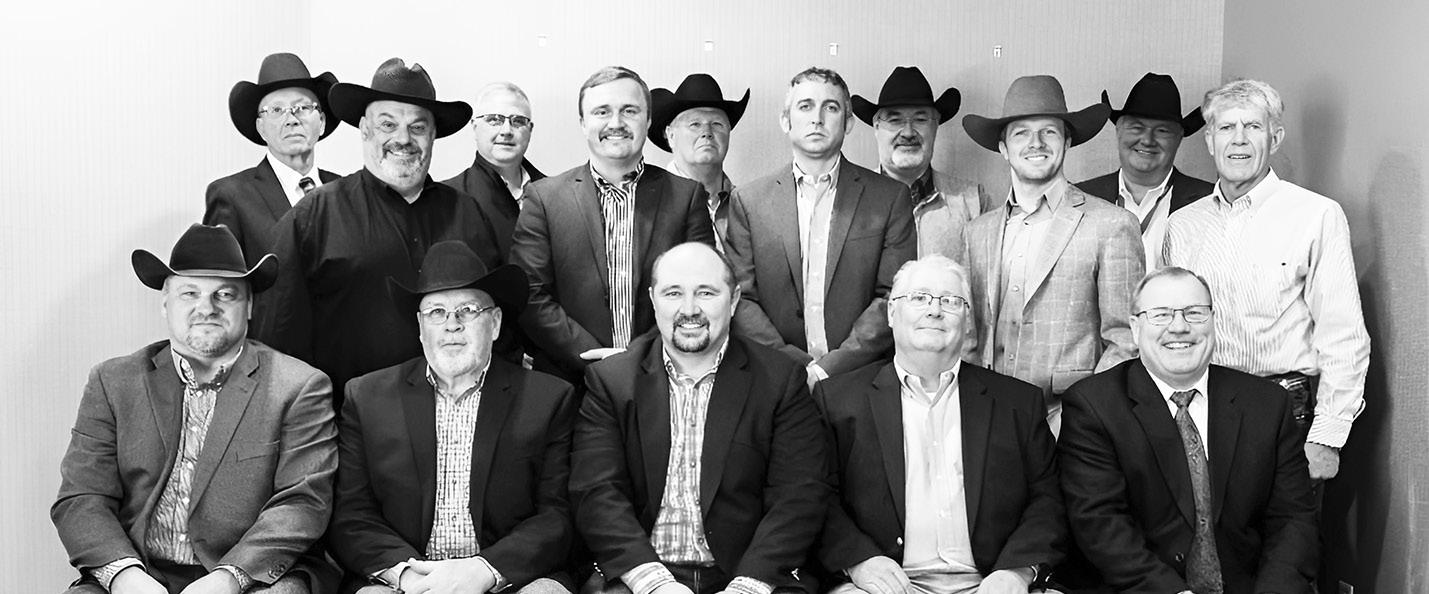
• Parentage investigations where excess time is spent to confirm parentage. This fee will come into effect after staff completes the items listed below:
i. Check any parents that are provided by the member via phone or email
ii. Check parents listed an updated quick sire list
iii. Database check
Priority Handling fee – $40. For data entry processing times, please allow up to 5 business days. Data entries requesting completion in less than 2 business days will incur a priority handling fee. Applies only to:
• Genetic waivers
• Membership applications
• Data entry: i.e., birth data entry, weaning data, yearling data, transfers, catalog pulls, importing foreign animal pedigrees, herd assessments
• DNA: parentage retries
About the American Gelbvieh Association. AGA, started in 1971, is a progressive beef cattle breed association representing approximately 1,000 members and approximately 45,000 currently active Gelbvieh, Balancer, and Gelbvieh influenced cows assessed annually in a performance oriented total herd reporting system. The Gelbvieh breed is well known throughout the industry for their maternal strengths and superior growth. With these attributes, Gelbvieh and Balancer cattle fit well into a crossbreeding system and provide genetics that work for the commercial cattle business. For more information, visit www. gelbvieh.org.
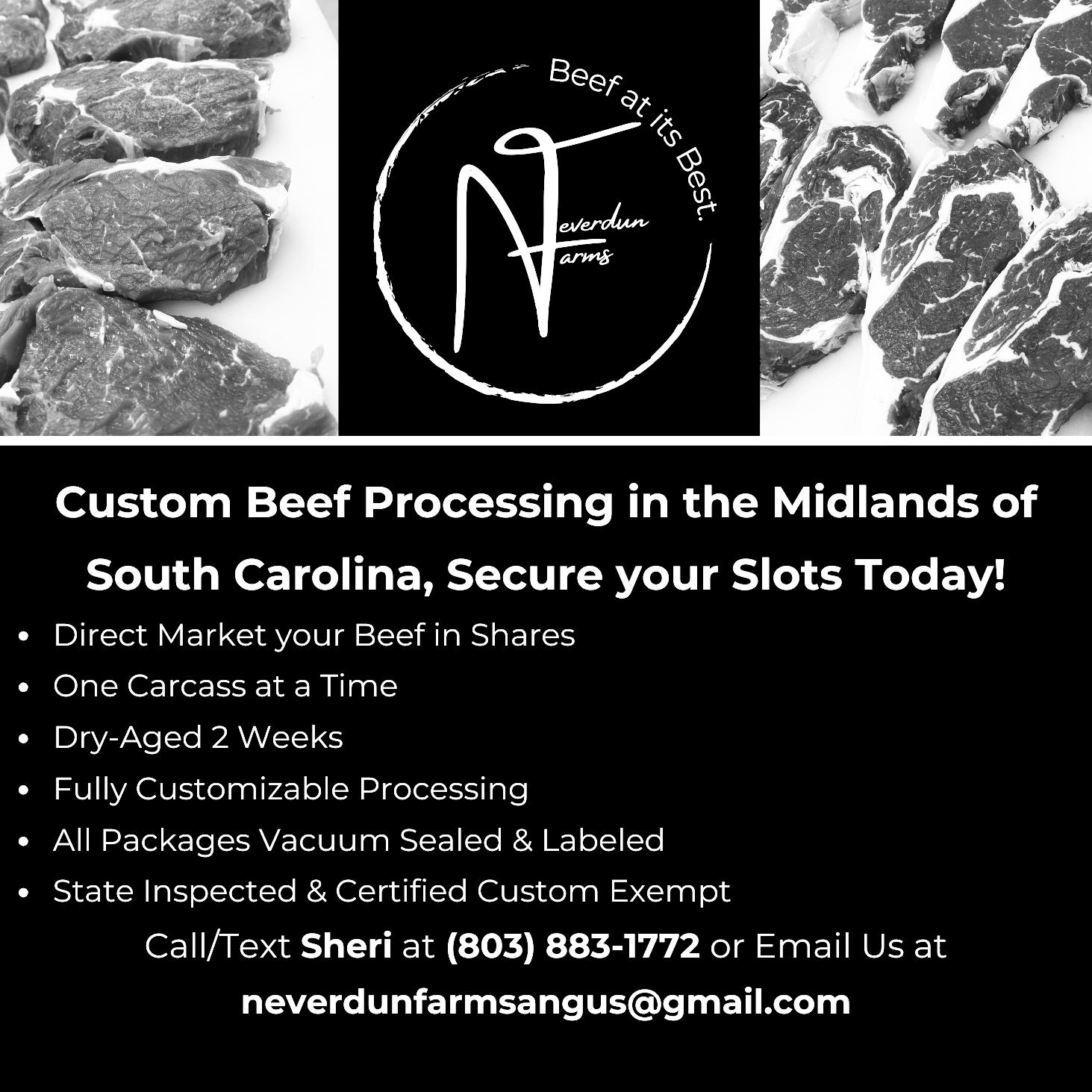

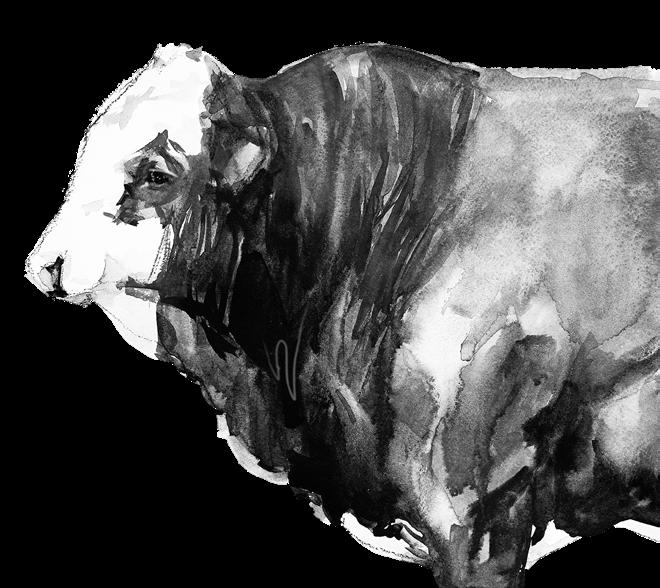
By JENNIE RUCKER, N.C. Simmental Association
N.C. State Fair Open Show Results. The N.C. State Fair Open Simmental and Percentage Simmental Shows were some of the very first shows on, October 17, the opening day of the fair. The grand champion Simmental heifer was TX Jemberly shown by Charlie Thomas of Winston-Salem, North Carolina. This heifer is a daughter of CDI Innovator 325D and was also the senior champion heifer. The reserve champion heifer was the calf champion, WHF Haley 301L, shown by Joines Cattle
Company of Blacksburg, Virginia. This heifer is sired by Next Level. The reserve calf champion was TX Rumors shown by Charlie Thomas and sired by LLSF Redstone J89. The junior champion heifer was CTJ Stop And Stare L357, shown by Joines Cattle Company and sired by JSUL Something About Mary 8421. The reserve junior champion was Edith L024, shown by Montana Boatwright of Franklin, N.C., and sired by Twin Oaks Troubadour. The reserve senior champion heifer was NBSC Poppy 213K, shown by Nate Bowman of King, North Carolina. Poppy is a daughter of OMF Epic E27.
In the purebred Simmental bull show, the judge selected the junior champion bull, Virginia Tech Stockade L355, as his grand. This bull went on to be named the reserve supreme overall bull and is sired by Rocking P Private Stock H010.
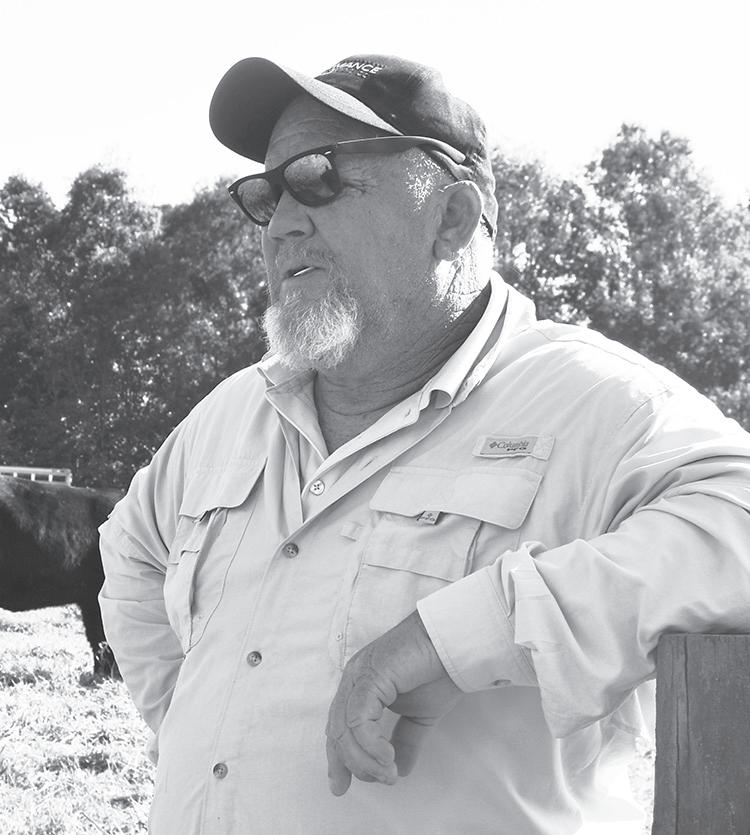
Philip Watson would rather spend his days at a cattle sale than doing other chores.
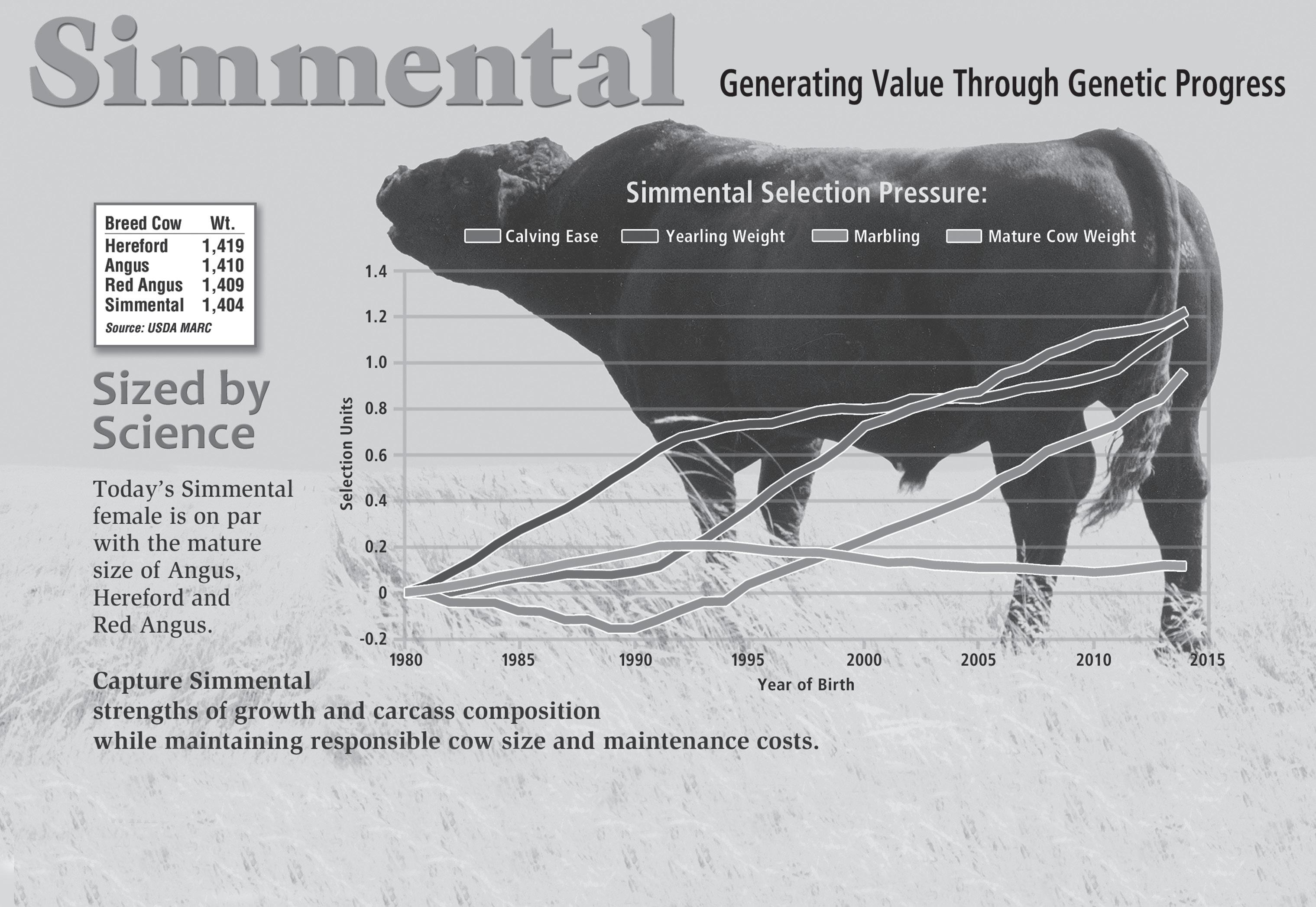
Simmental Association 1 Genetics Way • Bozeman, MT 59718 406-587-4531 • www.simmental.org N.C. Simmental Association 1341 US Hwy 21 • Hamptonville, NC 27020 336-468-1679 • www.ncsimmental.com • NCSA@yadtel.net Like us on Facebook!
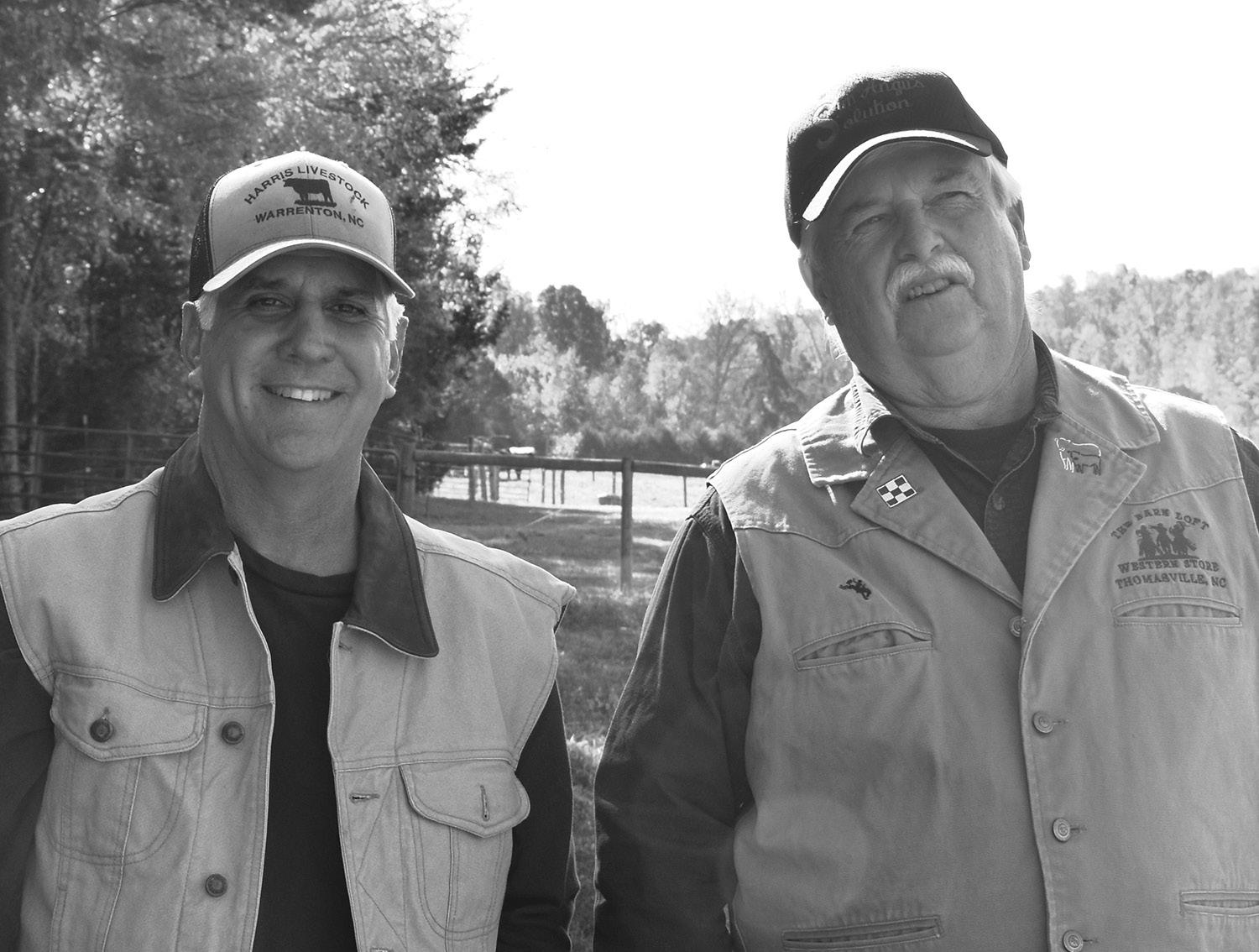
The reserve champion bull was the calf champion, TX Atticus M509, shown by Charlie Thomas and sired by W/C Bank On It 273H. The reserve calf champion bull was CSFS Randy Red Roscoe M003, shown by Cayte Mitchell of Hiddenite, N.C., and sired by CSFS Blue Sandy Randy J002. In the group classes, Cayte Mitchell won junior get-of-sire, and Charlie Thomas was premier exhibitor.
In the open Percentage Simmental show, the judge selected the junior champion heifer, SUD Murphy, as his grand champion Percentage Simmental. Murphy was shown by Rylea Suddreth of Catawba, N.C., and is a daughter of WHF Point Proven H45. The reserve champion Percentage heifer was the senior champion, TX Desert Rose, shown by Charlie Thomas and sired by W/C Bank On It 273H.
The calf champion heifer was CRJ Shadoe L331, shown by Joines Cattle Company and sired by LLSF Redstone J89.The reserve calf champion was Jill 18M, shown by Alana McDaniel of Kings Mountain,

N.C., and sired by PMW Jackpot G102. The reserve junior champion heifer was RJ Wedding Bells 313L, shown by Chad Holloman of Selma, N.C., and sired by Primetime. The reserve senior champion heifer was FGS Lady May 736L, shown by Lathan Blankenship of Castalia, N.C., and sired by HILB Oracle C033R. The grand champion cow/calf went to Kathryn Russell of Marshville, N.C., with Devil Went Down To Georgia and sired by MR SR Highlife G1609.
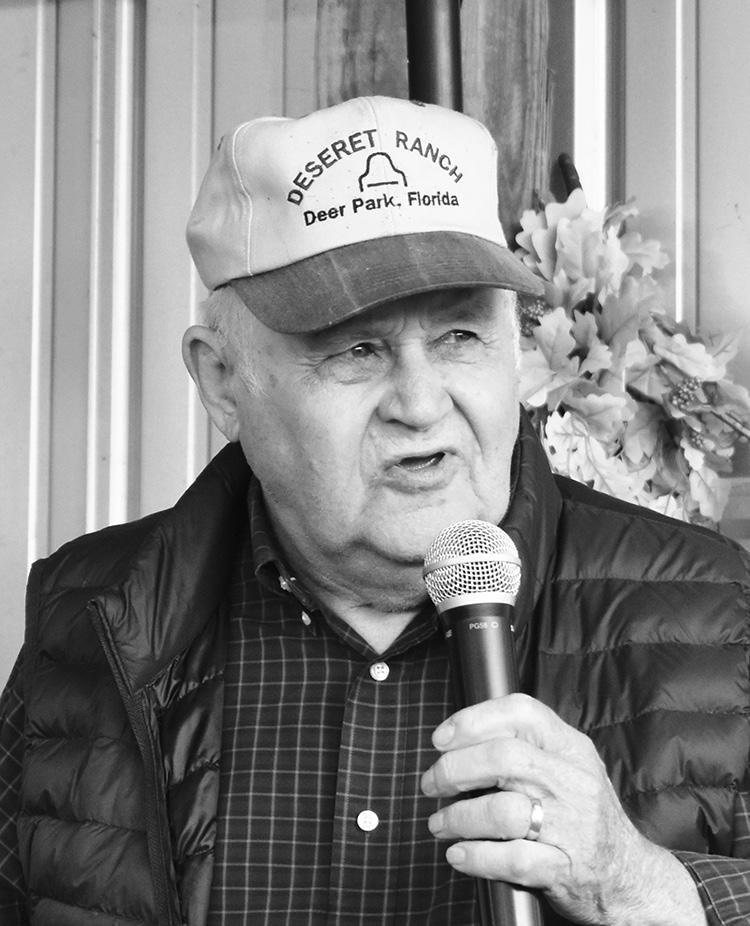
was also the calf champion. The reserve champion was the reserve calf champion, CSFS Randy Patrick Eugene, shown by Cayte Mitchell and sired by CSFS Blue Sandy Randy J002 Congratulations to all these exhibitors.
SimAngus Solution Sale.
In the Percentage Simmental bull show, the judge selected TX Hidalgo as his grand champion. This bull was shown by Charlie Thomas and sired by LLSF Redstone J89 and
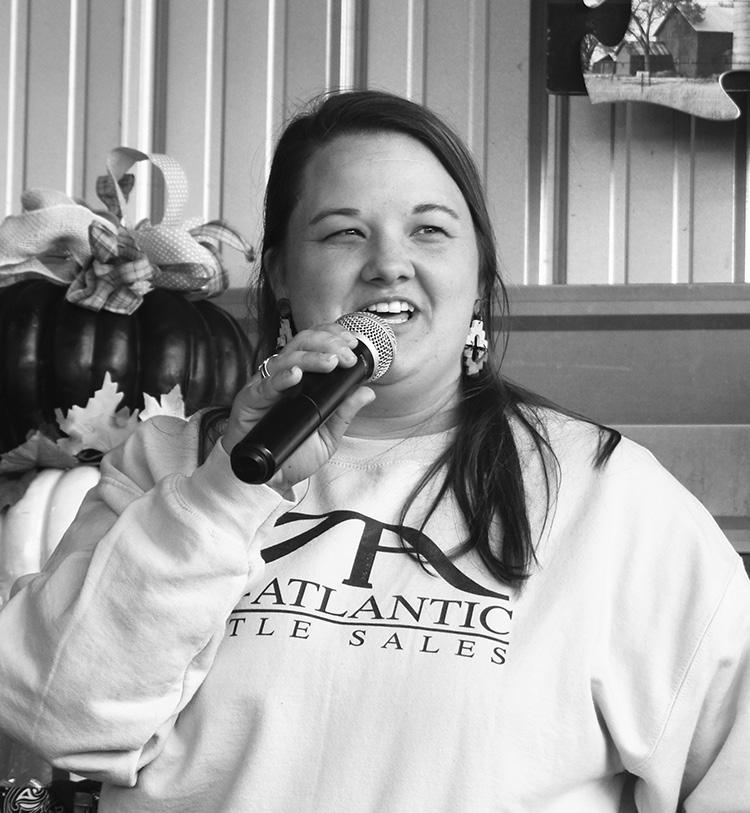
Brooke Harward shared how MACS can help buyers market their feeder calves.
The 16 th Annual SimAngus Solution Sale was held on November 2 at Circle M Cattle Farm in Burlington, North Carolina. Jonathan and Melissa Massey and Johnny Massey always put on a good sale with plenty of good
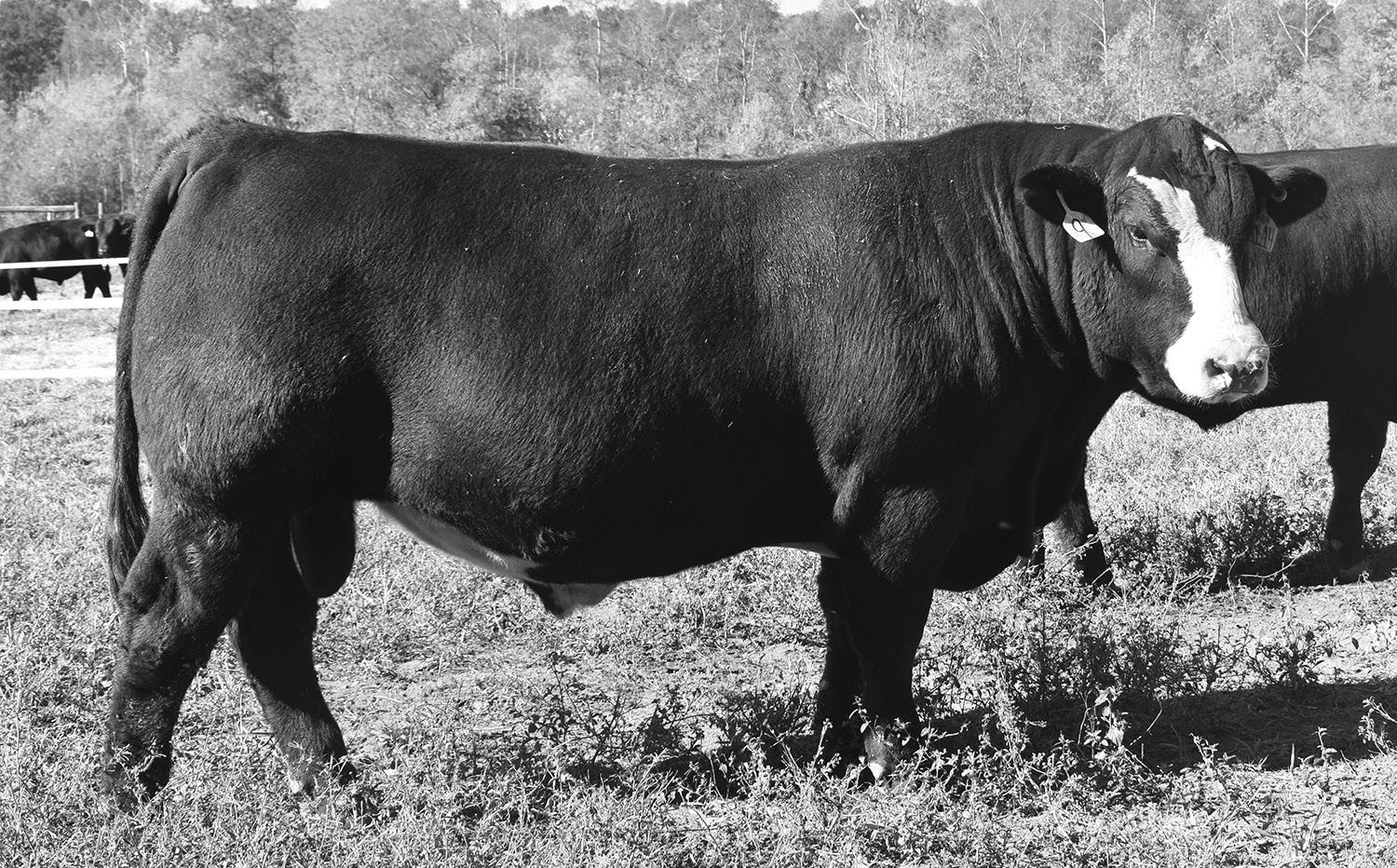
food and some really good cattle. This year was a beautiful day with plenty of buyers in the seats. The top selling bull was Lot 9, a stout blaze faced bull that sold for $8,000. This bull is sired by Hooks Galileo 210G out of the great Cindy Lou cow. The next top selling bull was Lot 2, a GW Jailbreak 555J son that sold for $6,400. Another top selling bull was Lot 16, which sold for $5,100 and is sired by GW Triple Crown 018C. They had several bulls selling for $5,000, and when the bidding stopped and all bulls were sold, the average on bulls was $4,395.
The open females were also in demand. The top selling lot was a daughter of BGibbs Dirt Road 1J08, which sold for $3,600 to the Fred Smith Company Ranch of Clayton, North Carolina Another top selling lot was a daughter of FSCR Fast Forward G154 that sold for $2,800.
Another heifer selling for $2,800 was a daughter of GW Triple Crown 018C. When the bidding on the heifers was all done, they averaged $2,511. Thank you to the Massey family for putting on another excellent sale and allowing other producers to use your genetics.
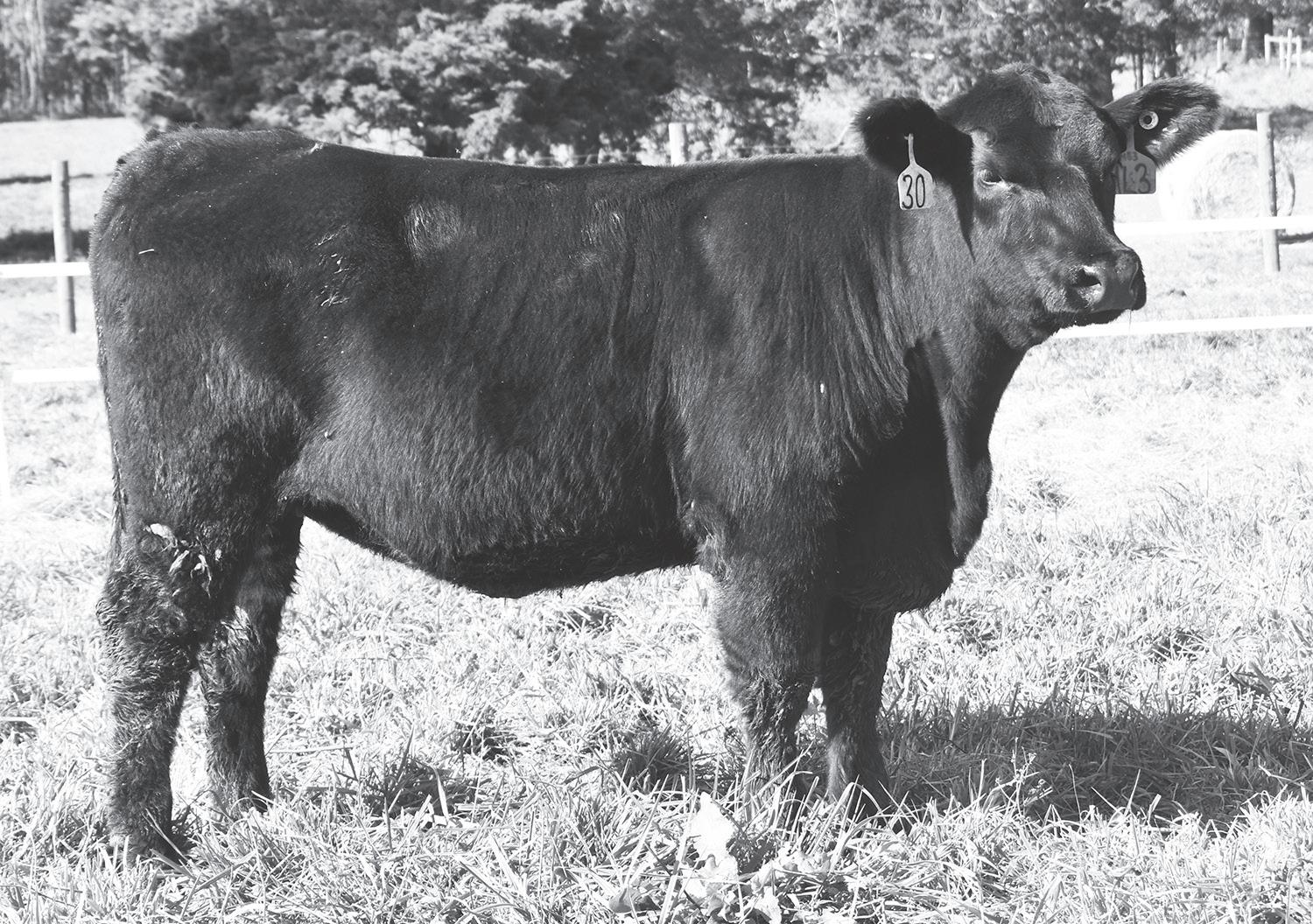
The strong attendance and enthusiasm on October 19 underscored a prevailing message among producers — selecting for genetic potential is crucial. The 80 registered bidders recognize the value that can be added to their herds by the “EVERGREEN Breeding Philosophy.” The opportunity to select from their choice of offerings of 18-month-old bulls, 14-month-old bulls, fall pairs, bred heifers, and open heifers left something for producers of all kinds to look forward to. They had the opportunity to select from an entire offering of cattle specifically designed to have multi-trait excellence across the board, helping to set a new record for the highest grossing sale in FSCR history.
Starting off the sale, Cedar Lane Cattle out of Missouri purchased Lot 1, FSCR L018 Optimum, for $17,500. He bolsters tremendous EPD rankings across the board, including the top 3% for TI, top 4% for MCE and YW, top 10% for marbling and API, and top 15% for WW. This bull exemplifies EVERGREEN status, offering high docility, balance, and fleshing ability. Cedar Lane Cattle’s investment reflects their commitment to adding genetic quality without sacrificing the bull’s type.
Gibbs Farms out of Alabama is a repeat customer for FSC Ranch. They are known for managing cattle the “Gibbs way,” which means they want their cattle to be three things — cost efficient, resource efficient, and cow efficient. They made a fitting choice, selecting Lot 14, FSCR L038 Optimum, for $12,000. This EVERGREEN Optimum bull has potentially the most prolific genetic offering of the entire catalog. He ranks in the top 1% for YW and TI, top 2% for WW, top 3% for marbling and API, and top 10% for MCE. This bull is destined to improve the next calf crop at Gibbs Farms.
Lot 3, FSCR L035 Honor, sold to Matt Homandberg out of South Dakota for $10,500. He has superior performance with top 4% WW and top 10% YW and TI. He is a high percentile Simmental bull and comes from a great producing Dikeman’s Surebet dam. He quickly grabs your attention thanks to his extra mass, well defined muscle shape, and overall balance.
The female portion of the sale featured 17 fall pairs, 26 spring bred heifers — bred primarily to FSCR K243 Honor, FSCR K251 Honor, and FSCR L106 Copperhead — and 17 open heifers. Johnny Massey from North Carolina made Lot 112 the highest selling female, selling for $5,000. He also picked up Lot 114 for $4,750. Sidney Price rounded out the females by purchasing Lot 111, an Honor pair, for $4,750.
A total of 137 lots were sold to 54 buyers from 9 different states. There were 80 bidders registered in-person or online. There were 14 bulls that sold for $9,000 and above, a testament to the value buyers place on high quality genetics. The success of this sale is made possible by the producers’ commitment to high quality genetic improvement as they invest in FSCR cattle that will add value to their herd.
• 48 age advantaged bulls grossed $347,000, averaging $7,230
• 37 yearling bulls grossed $184,500, averaging $4,986
• 18 age fall pairs grossed $70,650, averaging $3,925
• 17 spring bred heifers grossed $51,600, averaging $3,035
• 417 open heifers grossed $38,500, averaging $2,264
137 lots totaled $692,250
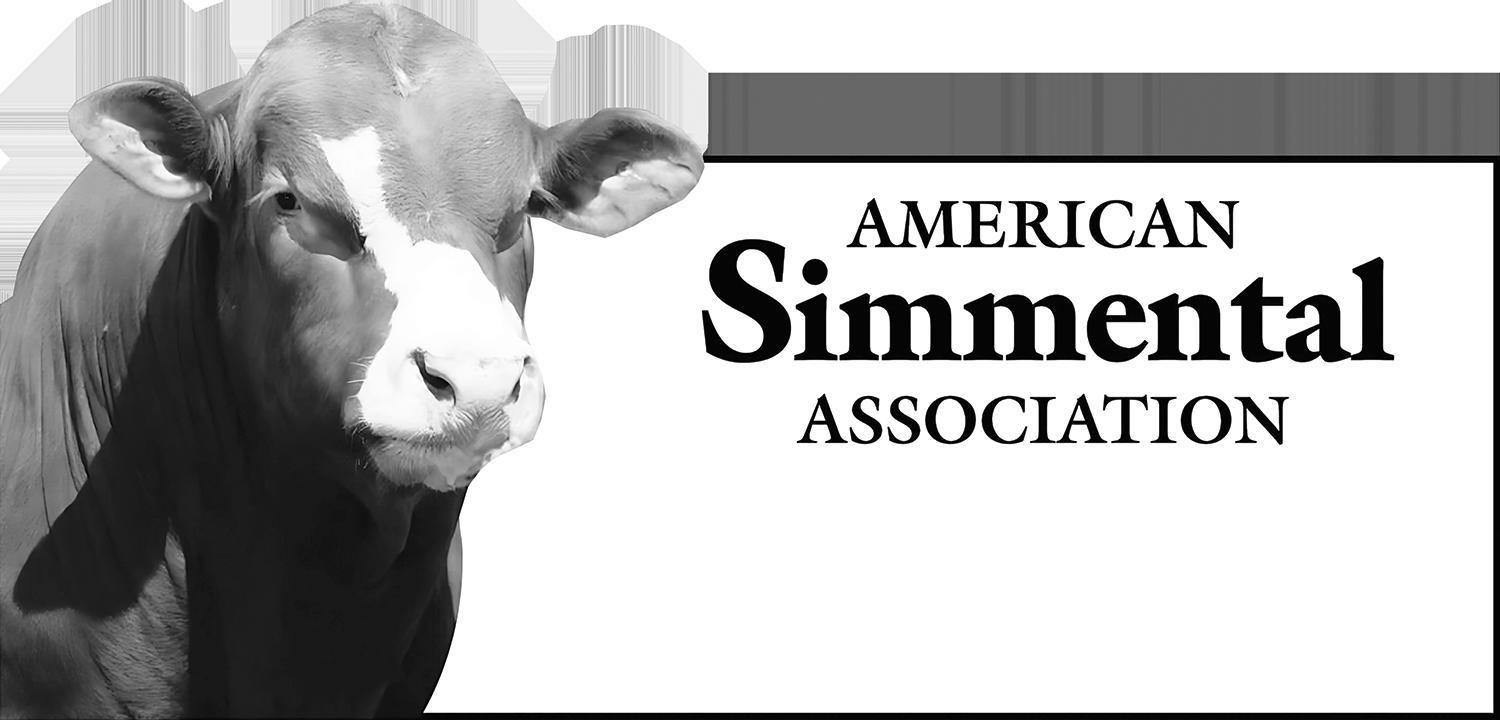
Dr. Jon DeClerck to Serve as Next American Simmental Association Executive Vice President. DeClerck will assume the position of EVP on July 1. Dr. Wade Shafer will continue serving as ASA EVP until his official retirement on June 30.
DeClerck is a forward thinking leader with extensive experience in the cattle industry and a lifelong passion for advancing animal science. Holding a Ph.D. in ruminant nutrition from Texas Tech University, he has excelled in technical consulting, education, and research. As a technical consultant for Purina Animal Nutrition, Dr. DeClerck has advised stakeholders across the beef production cycle in New Mexico, Texas, and Louisiana, combining innovative research with practical solutions to help producers maximize profitability. Previously, he served as a lecturer and livestock judging coach at Texas Tech and Iowa State University, mentoring students and leading multiple national champion livestock and meat evaluation teams. DeClerck has been recognized as a national champion team coach and is the recipient of numerous industry awards. Raised on a diversified farm near Aledo,


Ill., featuring a Simmental and commercial cow herd, Dr. DeClerck has a deep connection to the breed. A lifelong advocate for Simmental cattle, he is committed to serving the membership and advancing the scientific innovation and growth that have long defined ASA.
Chris Ivie, chairman of the ASA Board of Trustees, shared, “On behalf of the American Simmental Association Board of Trustees, we would like to welcome Dr. Jon DeClerck as our next Executive Vice President. He will work closely with Dr. Wade Shafer over the next six months; we look forward to working with Dr. DeClerck to continue the unprecedented success and growth we are experiencing here ASA.”
About the American Simmental Association. Founded in 1968, ASA is headquartered in Bozeman, Montana. ASA is committed to leveraging technology, education, and collaboration to accelerate genetic profitability for the beef industry. In keeping with its commitment, ASA, along with its partners, formed International Genetic Solutions — the world’s largest genetic evaluation of beef cattle. Learn more at www.simmental.org



2 pounds ground beef (93% lean or leaner)
1 can (10 ounces each) red enchilada sauce, divided
1 egg
¾ cup chopped bell pepper
½ cup chopped onion
½ cup ketchup
½ cup shredded Cheddar cheese
½ cup masa harina (corn flour)
1 tablespoon freshly ground black pepper
1½ teaspoons ground cumin
1½ teaspoons paprika
1½ teaspoons ground ancho chilies
1½ teaspoons ground guajillo chiles
1 teaspoon chili powder
1 teaspoon hot pepper sauce
1 teaspoon salt
Preheat oven to 350°F. Measure ¾ cup enchilada sauce into small bowl; set aside. Add remaining enchilada sauce, ground beef, egg, bell pepper, onion, ketchup, cheese, masa, black pepper, remaining spices, pepper sauce and salt; mix thoroughly but lightly. Shape beef mixture and place into 8 x 4½-inch loaf pan. Bake in 350°F oven 40 minutes. Spread reserved enchilada sauce over meatloaf. Bake an additional 5-10 minutes or until instant read thermometer inserted into center registers 160°F. Let stand 10 minutes before cutting. Cut into slices. Makes 8 servings
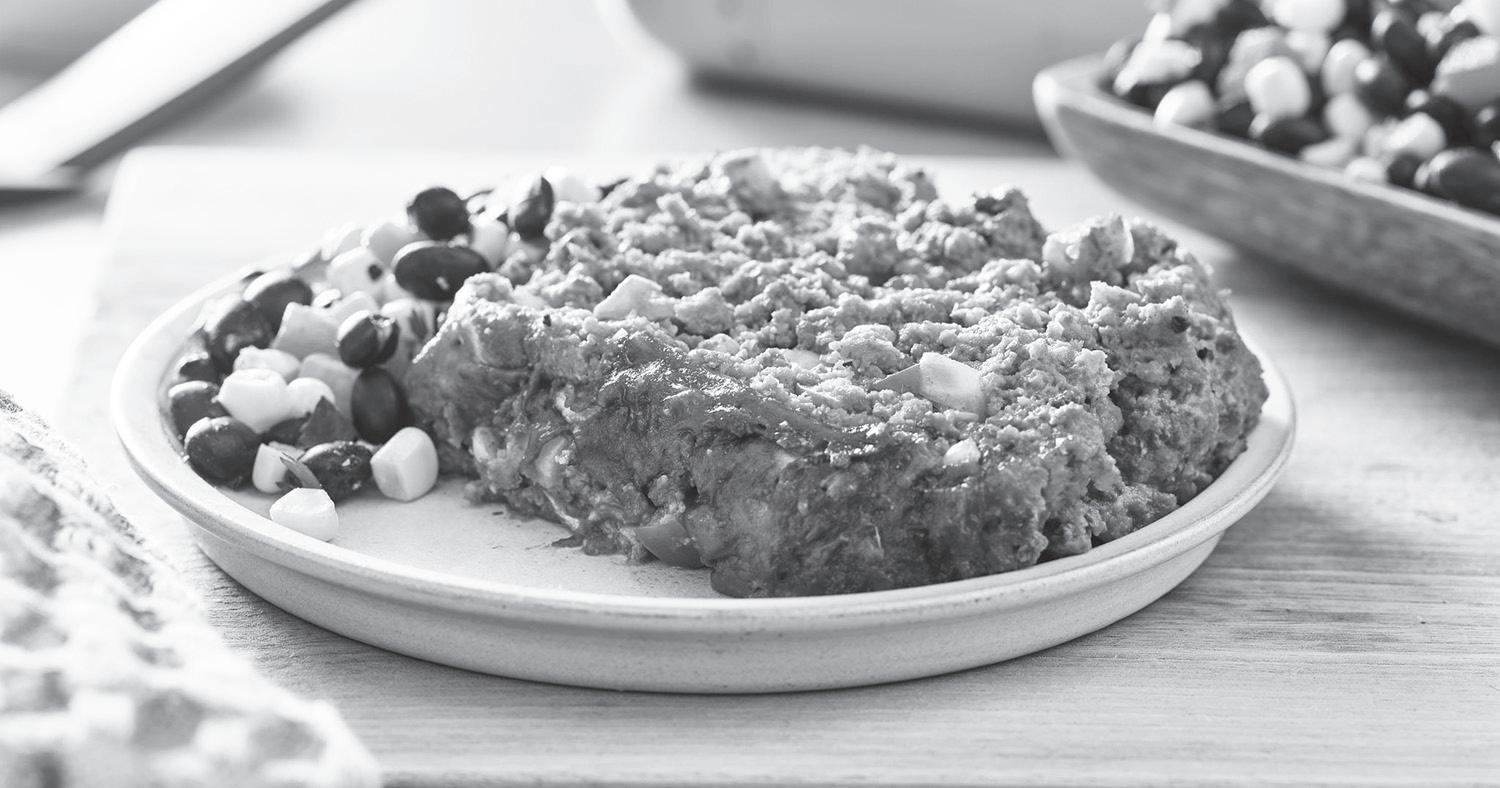


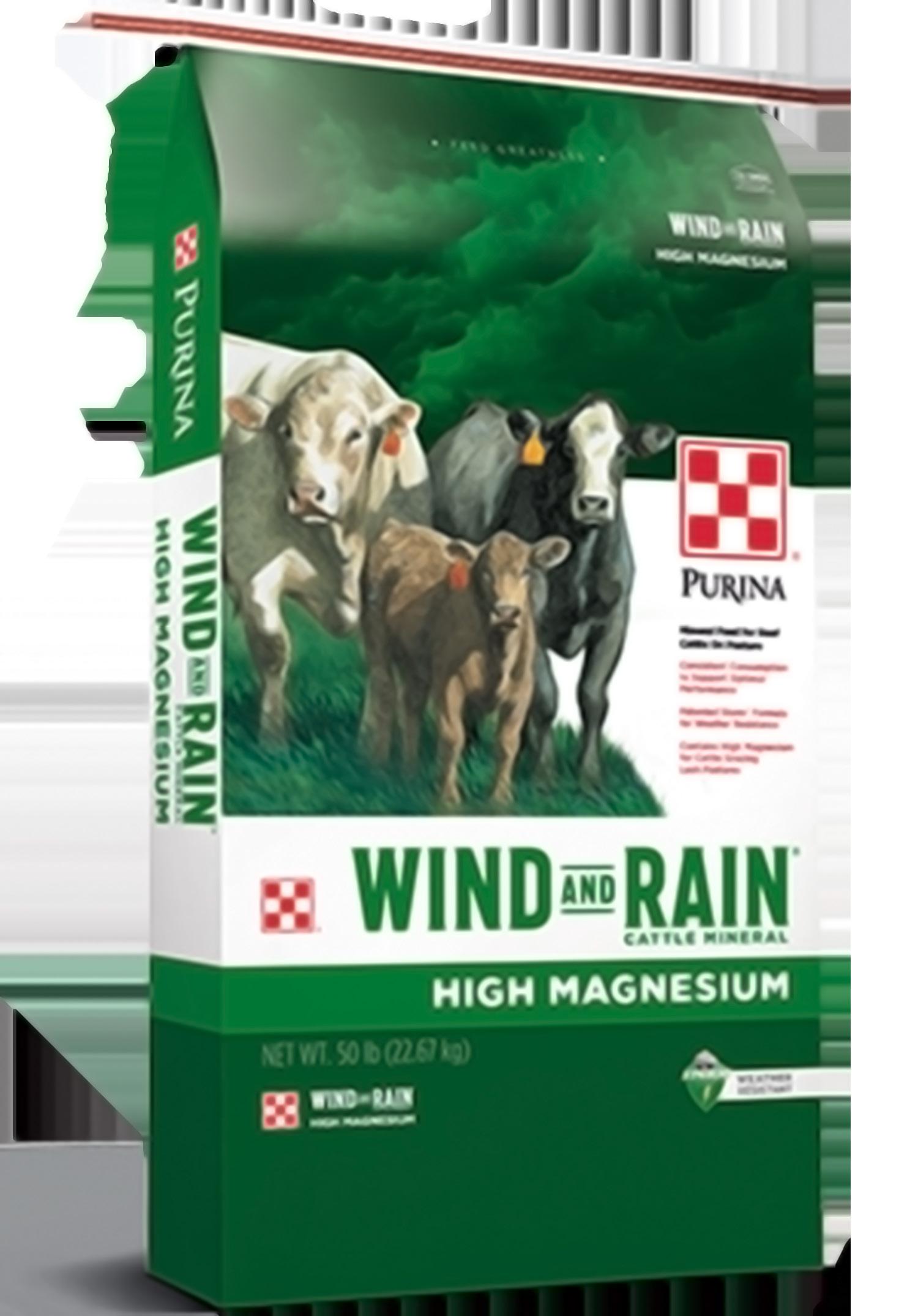
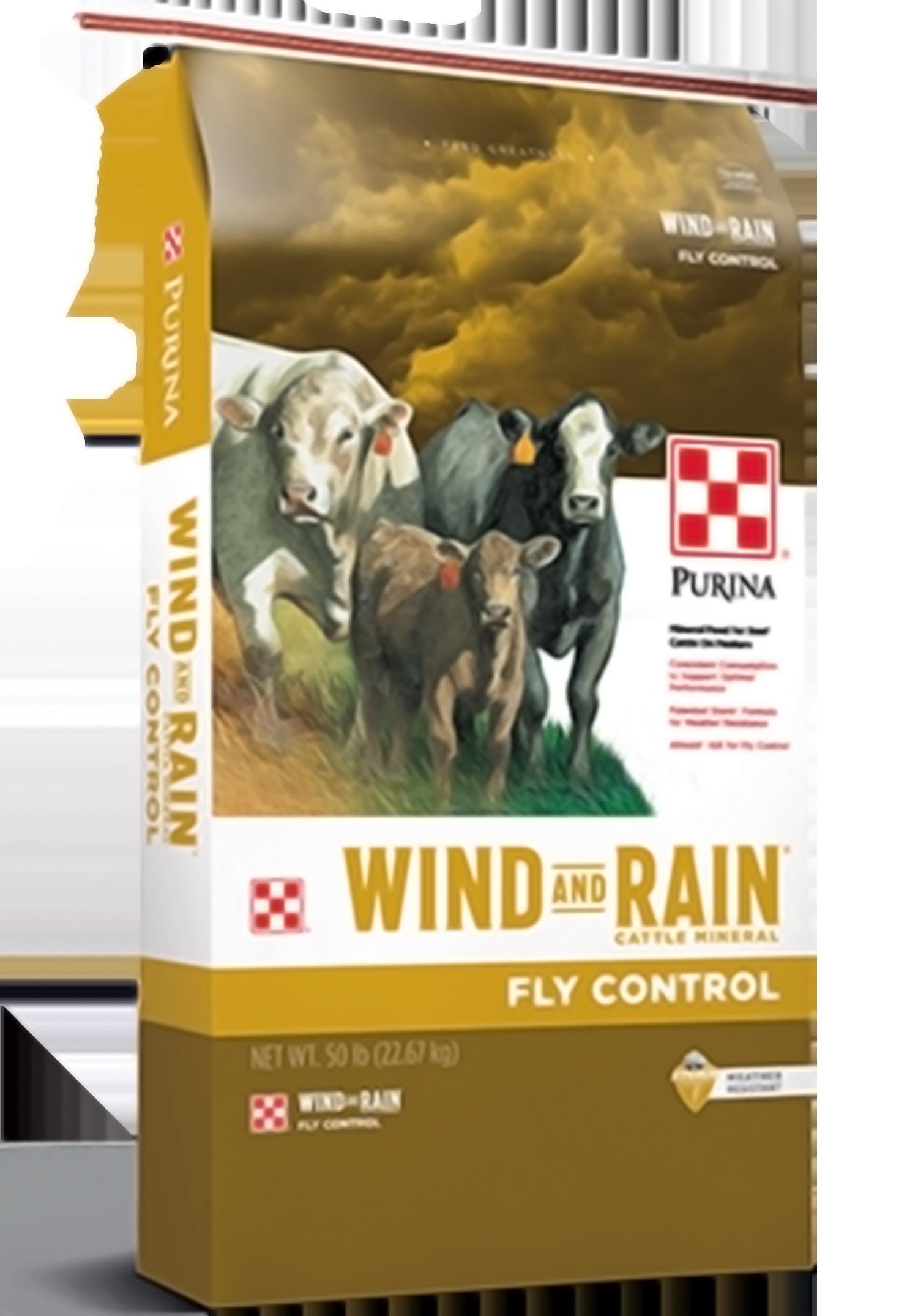





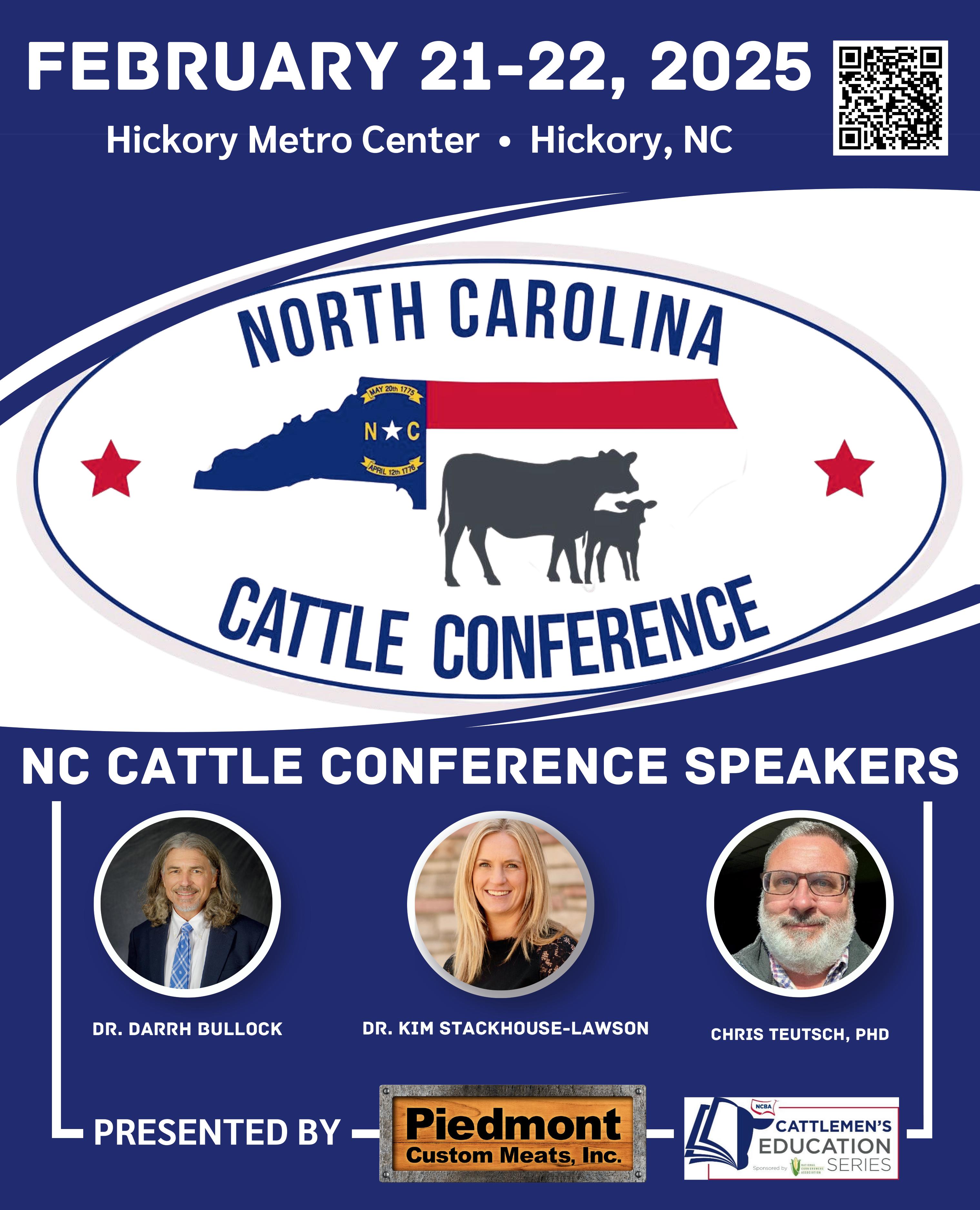

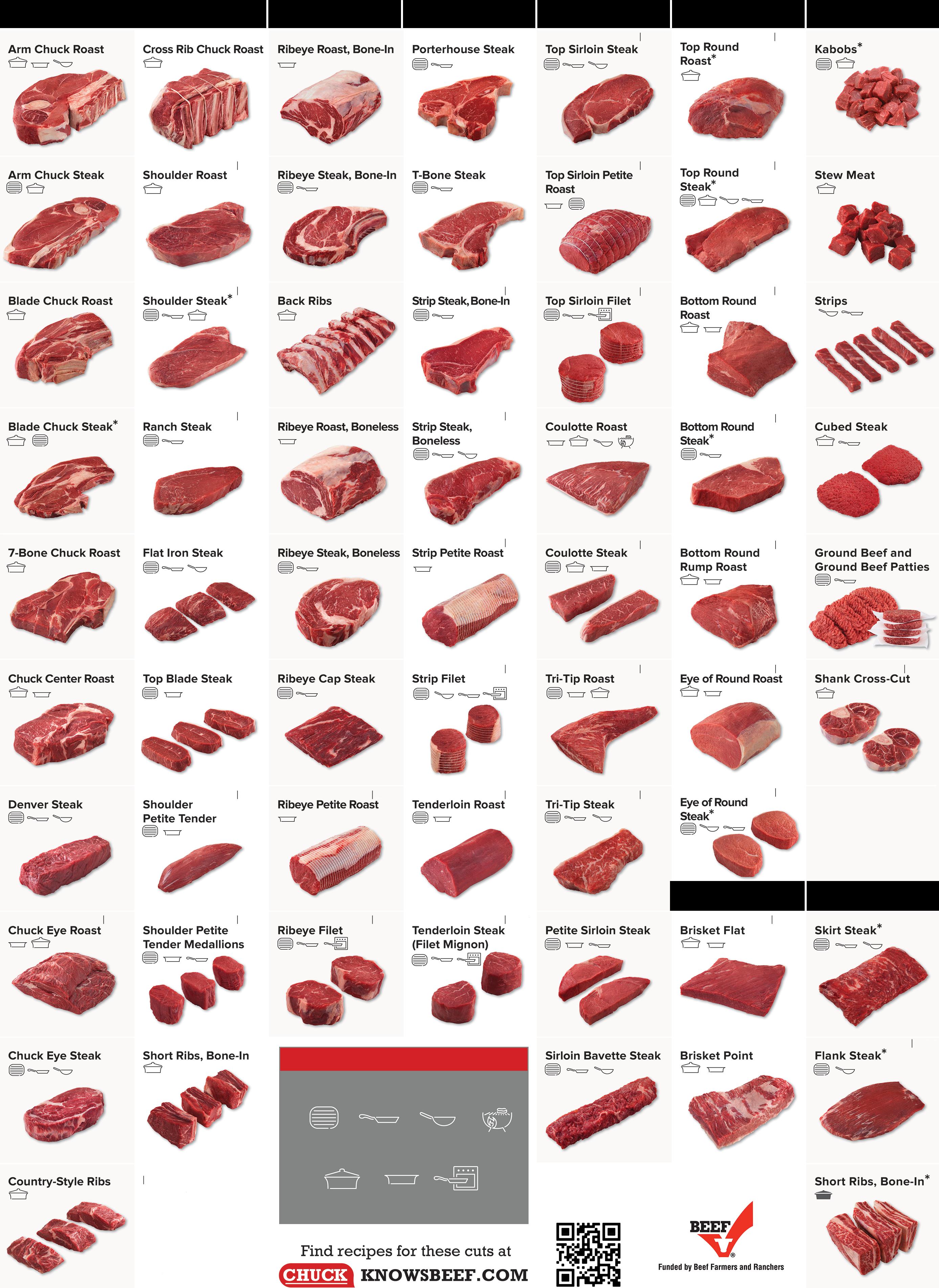
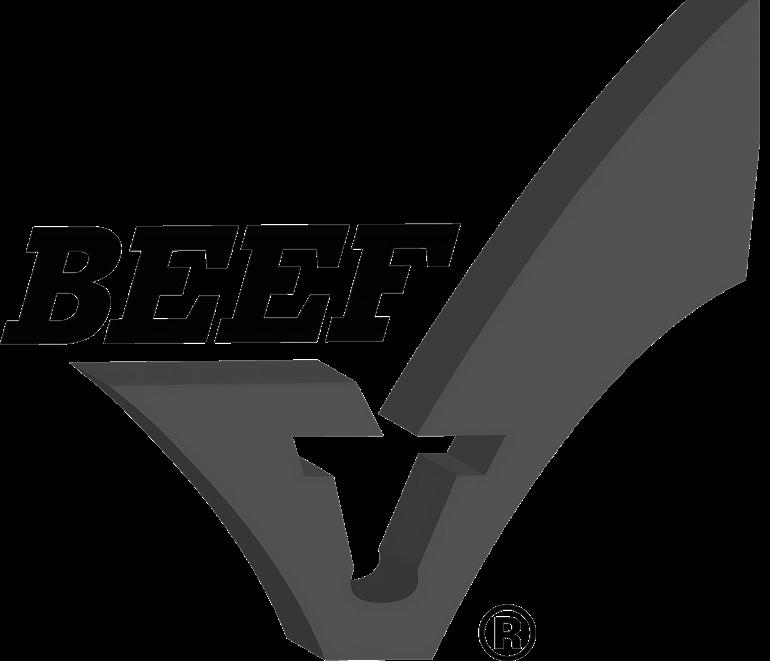
New
Age Groups. Recent Beef Checkoff funded research adds to a growing body of evidence reinforcing the important role beef plays in closing nutrient gaps for vulnerable populations. The three new studies looked at nutrient intake and adequacy needs during adolescence, pregnancy, and for those 60 years of age and older.
“Our analysis shows that people at various life stages — adolescents, pregnant and lactating women, and older adults — who eat about 2 ounces of beef a day, on average, consume more essential nutrients in their meals, helping them better achieve overall nutrient adequacy,” said Victor Fulgoni III, Ph.D., lead study author. “Meals with nutrient dense, lean beef may help improve health by delivering critical nutrients that support key life milestones.”
• Adolescents (14–18 years old) – Adolescence is a critical life stage with increased nutrient needs for optimal growth and development. A combination of greater nutrient requirements and a decrease in diet quality in this life stage leads to nutrient gaps and deficiencies, creating a public health concern. According to the 2020–2025 Dietary Guidelines for Americans, the nutrients lacking in adolescents’ diets put them at greater nutritional risk. However, adolescents who regularly eat meals with beef are more likely to meet daily essential nutrient recommendations and have a lower prevalence of nutrient inadequacies.
Beef’s nutrients, such as protein, zinc, B vitamins, and iron, are essential nutrients needed for proper adolescent development. Based on this analysis, adolescents who regularly eat meals with beef are more likely to meet daily recommendations for essential nutrients. As little as 1.7 ounces of beef per day in their diets led to increased intakes of calcium, iron, phosphorus, selenium, sodium, choline, vitamin B12, and zinc.
• Pregnant and Lactating Women – The importance of proper nutrition in supporting maternal and child health through pregnancy and lactation cannot be overstated. The study found that pregnant and lactating women who regularly eat meals with beef are more likely to meet daily essential protein and other key nutrient recommendations and have a lower prevalence of nutrient inadequacies. Based on this analysis, it is estimated that an additional 830,000 pregnant and lactating women would no longer have inadequate intakes of zinc if they incorporated as little as 1.7 ounces of beef into their daily diet.
• Older Adults (60 years and older) – A significant proportion of older U.S. adults consume less than the recommended amounts of key nutrients each day, which can have health consequences.
This study found that adults ages 60 years and older who regularly eat meals with beef have improved intake of 12 nutrients, including nutrients often lacking in this population, protein, and vitamin B12. Further, older adults who eat about 2 ounces of beef per day in their diet are more likely to meet daily essential nutrient recommendations and have a lower prevalence of nutrient inadequacies.
About the Beef Checkoff. The Beef Checkoff Program was established as part of the 1985 Farm Bill. The checkoff assesses $1 per head on the sale of live domestic and imported cattle, in addition to a comparable assessment on imported beef and beef products. States may retain up to 50¢ on the dollar and forward the other 50¢ per head to the Cattlemen’s Beef Promotion and Research Board, which administers the national checkoff program, subject to USDA approval.
N.C.
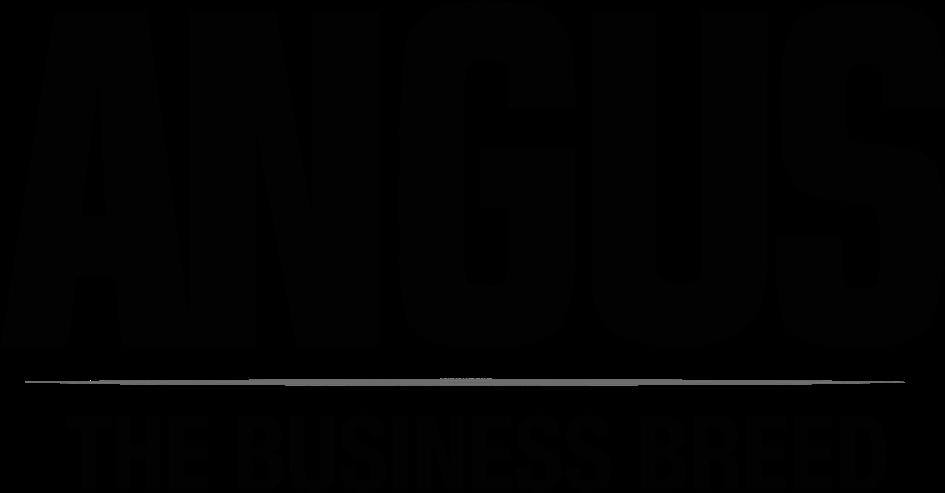
Panel talks capturing added value in cattle. Three industry professionals discussed value based marketing and changes in the beef cattle industry at the Angus Convention. Change is not ranchers’ favorite topic; but when change comes with potential increases in profitability and the preservation of their lifestyle, they are often willing to give it a try.
During one session at the 2024 Angus Convention in November, panelists discussed how value creation in the beef industry has changed and what the future might hold, focusing on areas like quality and sustainability.
“The wheels of change grind exceedingly slowly, but change is coming,” said Nevil Speer, an industry consultant who served on the educational panel. “It’s all about what’s at the end of the road. It’s consumers, and there’s going to be more and more questions.”
It’s not the first time producers have shifted their practices based on consumer demands. Bruce Cobb, executive vice president of production with Certified Angus Beef, said the early 1990s was a critical juncture for beef value and responding to consumer signals.
“We weren’t really connected at all with the consumer and what we were producing,” Cobb said. “We were producing what we wanted to produce instead of what the consumer was expecting and demanding.”
In 2024, Cobb said he feels excited about the opportunities afforded to producers willing to participate in value based marketing and to talk about the value they have created in their cattle.
“Here’s an opportunity for you to participate in something that can help you economically and also help build your business and build demand,” Cobb said. “When you have models that address cattle care all the way through the supply chain, there’s going to be a different demand for that product. When you have a model that drives quality all the way through the supply chain, there will be a different demand for that. We are no longer in the commodity

The panel of the Capturing Value educational session.
business in the beef industry.”
Current affairs – One place Speer, along with many cattle producers, looks for signs of change is by watching market prices.
Speer said that from April 2021 through early November 2024, most weeks have seen better prices year over year in the feeder cattle markets. He said he interprets that to be a sign of genetic progress and other long term efforts pushing the beef industry in the right direction — that is, in the same direction as consumer demands.
Speer said producers first need to maintain key characteristics of today’s cattle and beef, like palatability, carcass merit, and productivity.
In the same vein, Cobb predicted quality trends to continue.
“Whether that pace of change is driven by consumer demand or it’s driven by profitability or genetic technology, all of those things are working together in concert,” Cobb said.
The group told their audience there will continue to be a demand from consumers to know more about where their food comes from.
“[Sustainability is] not a new word at all, but it’s something we have really embraced in the last several years at Certified Angus Beef,” Cobb said. “It was something our customers were asking about, and asking is the key.”
He continued, “When your customers engage with you like ours do, and they see what you’re doing relative to sustainability, they walk away saying, ‘That label that you have — we need it in our store next week,’ those attributes are real.”
Panelist Leann Saunders, chief operations officer of IMI Global, a division of Where Food Comes From, said supply chains are being built to meet these consumer demands, so it is a growing area in which producers can capitalize.
“There is added value when you align the things that work for you and your operation with what the buyers also believe and want you to sell at the supply chain,” Saunders said.
New opportunities – So what’s next? Speer said he notices conversations changing in the industry around how value is shared. Grid marketing is not the only tool the beef industry has at its disposal for capturing value, and he sees this with a corporate feedyard that works with their customers to create win-win scenarios.
“I don’t remember having that conversation 20 years ago, or even 10 years ago,” Speer said. “That’s where we want to go because the conversations are more win-win than they used to be; because we can win, and we have the tools.”
Once genetic decisions have been made, “Then you also have to work at getting the value, and that means marketing them in the correct venue,” he said. “I think that’s oftentimes where people get very frustrated.”
Although producers can be frustrated by marketing and the time consuming nature of building those relationships, Speer said buyers are highly motivated to find the right kind of cattle for their value added supply chains.
“Now the cattle feeder is in a position where he is looking for those higher quality cattle from commercial cattle producers who historically have sold weight, health, and reputation. Now they can sell from a quality perspective,” Speer said.
Not done yet – While the business environment is a harsh one compared to historical conditions, the market is also ripe, providing
premiums for cattle that match consumer demands.
“What we see is more and more of that differentiation in the programs that we have continuing to grow, not lessen, over time,” Saunders said.
Panelists recognized that small producers might be feeling the economic pressure to capture value but struggling to find the marketing channels that are ideal for a smaller calf crop. Their advice was to look for opportunities to collaborate or create those opportunities with others facing the same hurdles. A tool like AngusLink’s Genetic Merit Scorecard evaluates the genetic potential of a group of feeder calves, regardless of group size.
“Buyers are beginning to recognize the [Genetic Merit Scorecard], and there’s an appetite for that data,” Cobb said. “[Their appetite] allows a small producer or a group of small producers to market those cattle collectively anywhere across the country to buyers who do have a value on what the genetic merit score is.”
Saunders said she has seen smaller producers succeed in capturing added value on their feeder calves by working with local livestock markets that host special sales for those types of cattle.
“With some of the other programs, there are a lot of livestock markets now across the United States that will schedule special days to sell verified cattle,” she said. “That enables smaller headcounts to go in and still receive the value.”
Video markets are still the most popular way to sell cattle with verified claims. Saunders said they often sell cattle as load lots. She has been encouraged by the growth of special sales among livestock markets to have more options.
“[The Livestock Marketing Association] has been very supportive of a lot of that effort, trying to get some of the smaller producers and buyers coming in that want those cattle,” she said.
Speer summarized the major challenge presented to cattle producers, with its antidote being greater collaboration.
“The supply chain part of this whole equation is critical because we have to coordinate those segments in our industry,” he said. “We really don’t have that luxury like all other industries do, where production is contained within a building or across a complex. Our production is contained across thousands of producers, 50 states, and different time zones, and we have to coordinate in order to hit that target for the consumer.”
Producers discuss tools, genetic progress in beef.
Colorado and Oklahoma cattlemen share lessons learned from data and genetic tools at Angus Convention. Breeding and raising cattle is big business with risk and seasons of opportunity, and a rebuilding of the industry’s cowherd will be one of those times producers have the chance to make gains from financial and genetic perspectives.
A series of educational sessions at the 2024 Angus Convention focused on the theme of herd rebuilding. Nevil Speer said the U.S. beef cow herd is expected to decline to around 27.8–28 million head by early 2025, as producers have been slow to move toward rebuilding the herd after the recent drought period.
“We are not building a cowherd today,” Speer said. “If we do get to the point where we’ve just started rebuilding like crazy and the market swings back the other way, guess who gets left behind? It’s the people who sell commodity cattle.”
Speer said he sees market trends continuing to shift toward cattle

and beef quality, transparency, and an appetite for data and efficiency in production.
“That’s really what’s driving the business,” he said. “So in the next wave of whether it’s herd rebuilding or business transition, that’s what becomes important.”
He added that he’s more interested in the business decisions producers are making to stay profitable or increase their profitability than he is in short term market conditions. Two commercial producers shared their stories with attendees and answered questions about how they made genetic improvements and increased their herds’ profitability.
Ryan Noble of Noble Ranch in Yuma, Colo., was one of those and is well known for his heifer development program. Unfortunately, his family had to rebuild their cow herd in 2019–2020, more recently than most due to drought.
“God had a plan for us, and we sold every cow for every dollar we asked for them,” Noble said. “It was an opportunity for us. We went out seeking high quality heifer calves. We knew what we wanted to raise.”
He said their ranch shifted to being a service provider, developing heifers and building back their herd, aiming for what he calls “an apology free cow herd.”
Noble’s ideal set of females would be docile; healthy with good feet and eyes; and fertile, calving once a year with a good udder.
“She’s got the appropriate amount of growth for your environment,” he said. “She is going to go garner premiums through the next two stages. You put her on feed, she’s going to get it done. You hang her on the rail, she’s going to get it done. That’s an apology free cow, and she’s going to do it with a minimal amount of inputs and a minimal amount of labor.”
In pursuit of this stockman’s dream of a cow herd, Noble has come to place great value on known genetics and strategic nutrition investment. He uses genetic testing tools and makes heifers prove they have what it takes to go work for him in his sometimes unforgiving environment.
“I figure by the time we end up with a bred heifer, she’s probably lived through five or six sorts on our range,” he said. “If she can make it through all that and become pregnant, that’s when we are ready to invest more money.”
Investing in the right females pays dividends, Noble says, because he expects them to have longevity enough “until you’re so old that everybody knows your number.”
Jimmy Taylor of Taylor Ranch in Cheyenne, Okla., has his own ideal cowherd, and he has dove into the data to help it become closer and closer to reality. The Taylor Ranch began transitioning to its current model of backgrounding their own calves on the ranch, retaining ownership through the feedyard, and selling them on the grid in 2005.
“I wanted something where I could get a bonus or premium on every calf,” Taylor said. “So I looked around and decided that the best route to do that would be raising carcass cattle while raising good replacement heifers.”
He said his first set of steers were 13 percent prime in 2012. Today, their range is typically 50–75 percent prime.
Taylor’s carcass data and 10 plus years of genetic data on his females shows his system is working.
“What really got us into high gear was when what I called enhanced GeneMax Advantage happened in 2016, where they had 10 traits and [percentile rankings for each animal] in those traits,” Taylor said. “Now I can target traits, and I can make rapid improvement doing that.”
Taylor said individualized data with trait-by-trait analysis has helped him use a more diverse pool of sires and “match specific females up to my bulls’ strong points and weak points.”
GeneMax Advantage now has 19 traits, and the American Angus Association continues to crank out expected progeny differences (EPDs) as tools for genetic selection with registered bulls.
Both Taylor and Noble said it is worthwhile work to get a handle on their own herd’s data and identify clear targets.
“What gets us from point A to point B are these tools,” Noble said.
Seedstock and commercial producers are not the only ones paying attention to genetics. Industry Insights powered by Angus Media and CattleFax summarizes survey data from cattle feeders across the United States, representing around 3.3 million head of feeding capacity.
“Some 60 percent of the feedlot respondents said that genetics play a bigger role in their purchase decision today than they did five years ago, and that’s going to continue to grow,” said Esther Tarpoff, the association’s director of performance programs.
Tarpoff says tools like GeneMax Advantage can help commercial producers find the females in their herd that are going to be the most profitable, and there are programs like AngusLink to assist with marketing their calves to build more margin into their herd.
These tools also help seedstock and commercial producers align their genetic selection goals and create a common language for marketing Angus genetics throughout the beef production system.
She says ultimately, the focus on genetic merit and quality at each of these levels continues driving value through the supply chain.
Exclusive Offerings from the Angus Foundation. Heifer package, donation lots, and live auctions to support Angus education, youth, and research. The month of January kicks off an exciting new year full of opportunities to support the Angus Foundation’s mission of advancing education, youth, and research. With numerous offerings available in conjunction with the Cattlemen’s Congress in Oklahoma
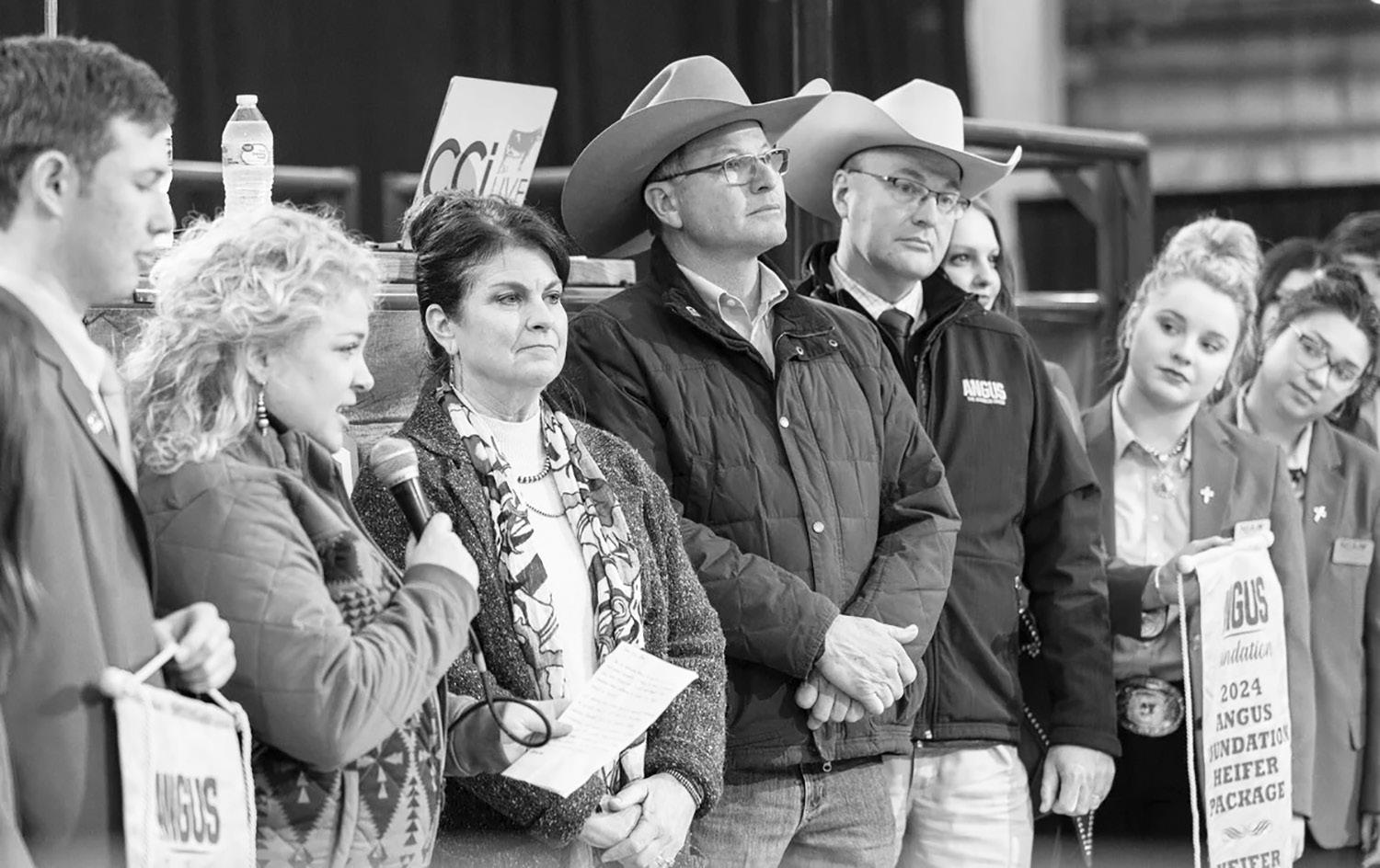
City, the upcoming month is set to inspire generous support for the Angus Foundation in 2025.
Angus Foundation Heifer Package – Each year, the Angus Foundation Heifer Package leads off the National Angus Bull Sale. The 2025 heifer package is donated by Pollard Farms of Waukomis, Oklahoma.
The heifer, POLLARD Rita 4012 (AAA* 20875621), is a daughter of EXAR Cover the Bases 0819B and out of a productive, young twoyear-old that is “on her way to the donor pen,” said Dr. Barry Pollard of Pollard Farms. She stems from PF W34 Rita 4139, a longtime donor in the Pollard Farms program.
Rita is an elite donor prospect. She exemplifies the phenotypic and numerical balance that Dr. Pollard and his crew strive to produce, ranking in the top 1% for $C, Marb, $G, $AxH and $AxJ; top 2% for $B and $W; top 5% for RADG; top 10% for WW, YW, and HP; top 15% for CED, BW, PAP, and $M; top 20% for RE; and top 25% for CW and $F.
The heifer package also includes an Advanced Reproductive Technology Package from Trans Ova Genetics; trucking to the buyer donated by Lathrop Livestock Transportation; and 30 days of mortality insurance donated by Jeanne Conover, Livestock Insurance Agent with Conover Auction Service.
The sale starts at 2:00 p.m. on January 10 at Cattlemen’s Congress in Oklahoma City.
To learn more about the Angus Foundation Heifer Package, visit bit.ly/2025HeiferPackage
Fund the Future Offerings – A special feature of the January events is the Angus Foundation “Fund the Future” donation lot that will sell. The Bases Loaded Sale, held January 7 at Heritage Place in Oklahoma City, will feature a heifer pregnancy donated by Riverbend Ranch with complimentary trucking included by Lathrop Livestock Transportation.
This headlining female of the Riverbed and Vintage Angus programs, sells as Lot A, with 100 percent of the proceeds benefiting the Foundation’s mission. The Fund the Future program allows
The Carolina Cattle Connection
breeders to donate proceeds from a designated sale lot to the Angus Fund, which provides unrestricted dollars to support the breed.
This Fund the Future donation lot features a heifer pregnancy from the $194,000 valued second generation Riverbed Ranch donor, Miss Belle 9209, and is sired by the American Angus Association’s Sire of the Year, Connealy Craftsman. The anticipated due date is February 24.
Angus Herdsman Social – The Foundation and Association will again host a celebration for the Angus family at the 2025 Cattlemen’s Congress. The Angus Herdsman Social serves as an evening of fellowship in Oklahoma City on January 10.
The doors of the Cattlemen’s Bar in Barn 3 will open at 3:45 p.m. following the National Angus Bull Sale. The social will feature the announcement of the 2025 Angus Herdsman of the Year, food, refreshments, and a group of auction and raffle items to benefit the Foundation’s mission.
Auction highlights include a men’s and/or women’s custom made cowboy hat from Greeley Hat Works, a set of whiskey barrel chairs and a custom cowhide bag from Holy Cow Couture. A 2025 National Finals Rodeo ticket package, among other exciting items and experiences, is available for bidding.
Angus Foundation’s Fund the Future Campaign Drives Impact for the Future. Angus Foundation celebrates support for Fund the Future Campaign in 2024. At the heart of the Angus family, there’s a deep rooted commitment to helping create a lasting impact by building something that will support the breed for generations to come. It’s this spirit of advocating for the future of education, youth, and research that drives the Fund the Future campaign.
Thanks to a dedicated group of 16 Angus breeders, in the 2024 fiscal year, the Fund the Future campaign garnered $36,400 for the Angus Fund, helping to support the Foundation’s mission and events like the Beef Leaders Institute and Young Cattlemen’s Conference.
The Angus Foundation is excited about the year ahead and the opportunities it brings. What makes 2025 even more special is a generous matching opportunity. In the new year, an anonymous donor has pledged to match the first $30,000 raised, effectively doubling the impact of every dollar donated.
“I’m thrilled to watch the campaign expand and see more breeders getting involved in 2025,” says Jaclyn Boester, Angus Foundation executive director. “The simplicity of participation has sparked excitement, with breeders eager to contribute, knowing their donations are making an impact on the Angus breed.
The Fund the Future Campaign offers breeders a unique opportunity to give back through their annual production sales, consignment sales, bull sales, or even private treaty opportunities. Whether it’s a live animal or a genetic offering, the choice is yours.
By consigning a lot to this campaign, you’re helping fund educational programs like Angus University and BEEF Academy; youth leadership development events like the Leaders Engaged in Angus Development (LEAD) and Raising the Bar Conferences; and helping to fund research that advances the beef industry and Angus breed.
“As we conclude our third year of the campaign, we are excited to have repeated breeders participating,” says Boester. “Their willingness to continue to support the campaign is incredible and
very much appreciated as we work to secure resources for the Angus Fund. Through those generous donations, we can continue funding the three pillars of our mission.”
Together, we can ensure that the future of the Angus breed remains bright, vibrant, and full of promise in the new year!
For more information on the Fund the Future campaign, visit www.angus.org/foundation/get-involved/giving-programs/fundthe-future or contact Jaclyn Boester at JBoester@Angus.org . To learn more about the Angus Foundation and its mission, visit www. angus.org/foundation
About the Angus Foundation. Established as a 501(c)(3) organization in 1980, the Angus Foundation remains focused on its mission to support Angus education, youth, and research. The organization has distributed more than $4.9 million in youth scholarships since 1998 and has also invested more than $1.4 million in beef cattle research in the past decade. For more information, contact the Angus Foundation at 816-383-5100.
ANGUS MEANS BUSINESS. The American Angus Association is the nation’s largest beef breed organization, serving more than 21,000 members across the United States, Canada, and several other countries. It’s home to an extensive breed registry that grows by more than 300,000 animals each year. The Association also provides programs and services to farmers, ranchers, and others who rely on Angus to produce quality genetics for the beef industry and quality beef for consumers. For more information about Angus cattle and the American Angus Association, visit www.angus.org \
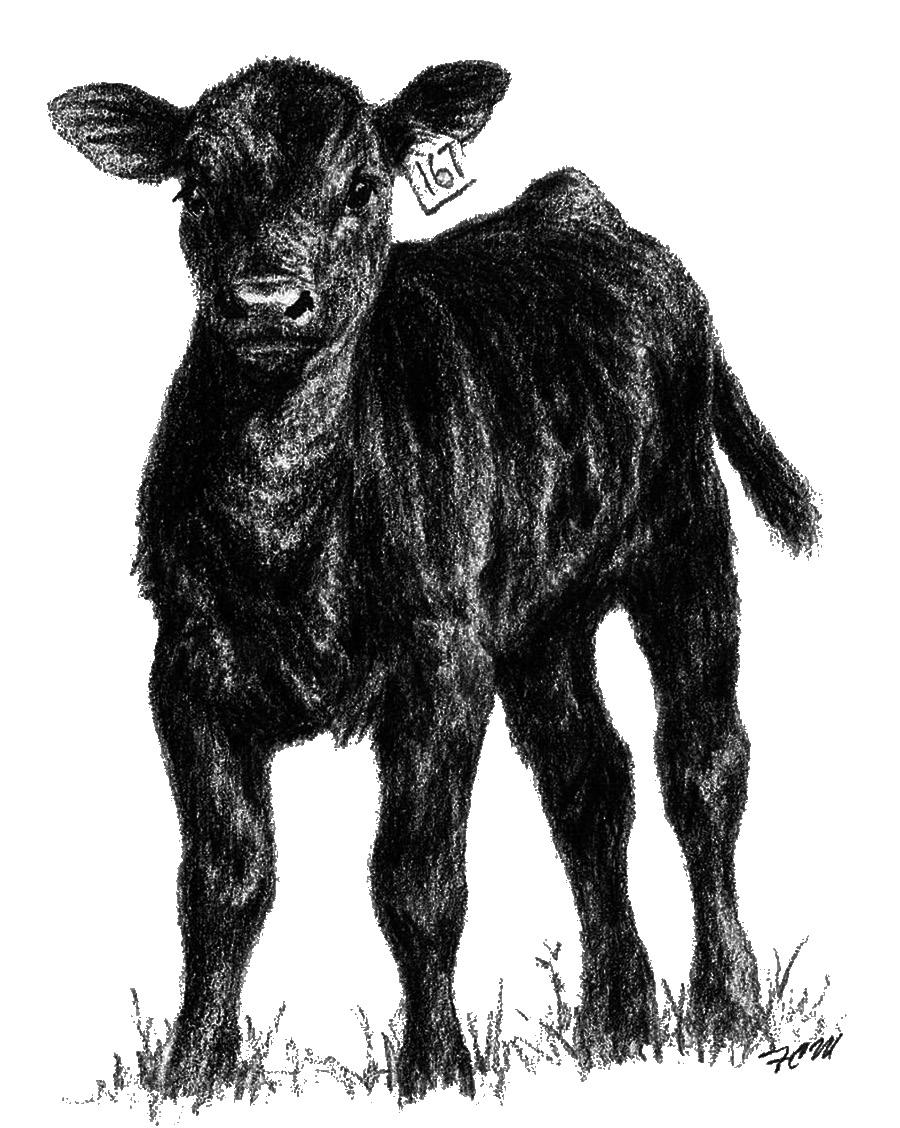
It’s an uncomfortable topic that nobody wants to discuss, but how will you respond when the next generation asks, “If something happens to you, what are we going to do with the farm?”
That’s exactly what started the conversation of succession planning for the Yon family in Ridge Spring, South Carolina.

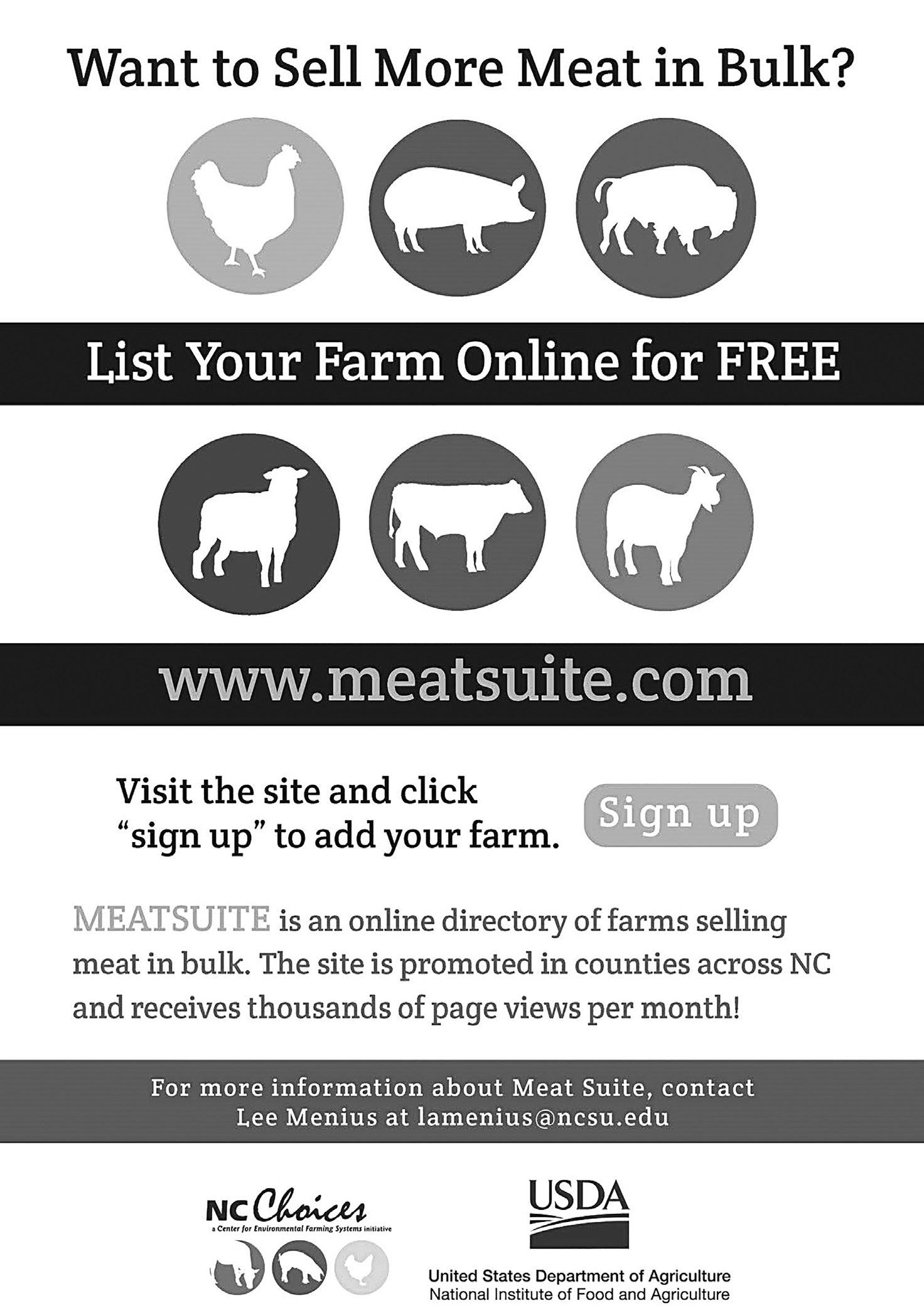
Kevin and Lydia Yon are first generation cattle producers who started their Angus seedstock business in 1996. With help from friends, they acquired land for their 100 cows and over the years diversified by growing pecans and operating a retail store featuring their beef, local produce, and pecan goodies.
Growing up, the Yon’s three children were involved with farm activities and learned early on about borrowing, paying off debts, and the business aspects of the operation in addition to caring for the cattle.
Kevin and Lydia required each of their children to move away from home following high school for four years, including summers, to gain new experiences. When the kids went to college, the Yons found out that it takes more than family to make the operation work. While land and capital are more readily available, finding good people is the most limiting resource.
“Finding people who had passion was key,” said Kevin. “We hire people who have a love of cattle and a love of the land.”
When the Yon children decided to return to the farm and start families of their own, Kevin and Lydia kept their employees too, so they needed to find ways to “grow the pie” and create opportunities for everyone to make a living. It also reinforced the importance of creating a succession plan.
“There are two mistakes cattle producers make when it comes to succession planning — they don’t talk about it, and they don’t do anything about it,” Kevin said.
The Yons recognize succession planning is a strenuous process that takes a considerable investment in both time and money. They found the right team to help them, including an estate planner, accountant, personal attorney, and lenders. It was a team approach from the beginning because they only wanted to do it once.
“We know our plan is a work in progress and needs to be reviewed regularly, but the bulk of the work we wanted to do right the first time,” explained Kevin. “No plan is perfect, and what works for our family doesn’t necessarily work for everyone.”
According to Kevin, communication is key to planning for the future, and unfortunately, not everyone is good at it. His advice is for each family member to make their desires known. For the Yon family, the priority is to keep the land intact. Cash can be divided, but they want the land to be available for future generations.
“We must communicate, and we must have a shared vision and plan,” said Kevin. “It’s also important to give grace and give the younger generation the reins to succeed and make mistakes.”
The Yons recognize that making decisions for the future can be difficult, and they remind other producers that often what is fair is not always equal.
“We all need to look down the road,” said Kevin. “While we need to live in the present, we need to look ahead and think about the future and how it impacts the next generation.”
Watch the Cattlemen’s Webinar Series recording of “Thinking Ahead: Succession Planning” to hear more from the Yon family, plus how another farming family in Michigan manages generational transfer.

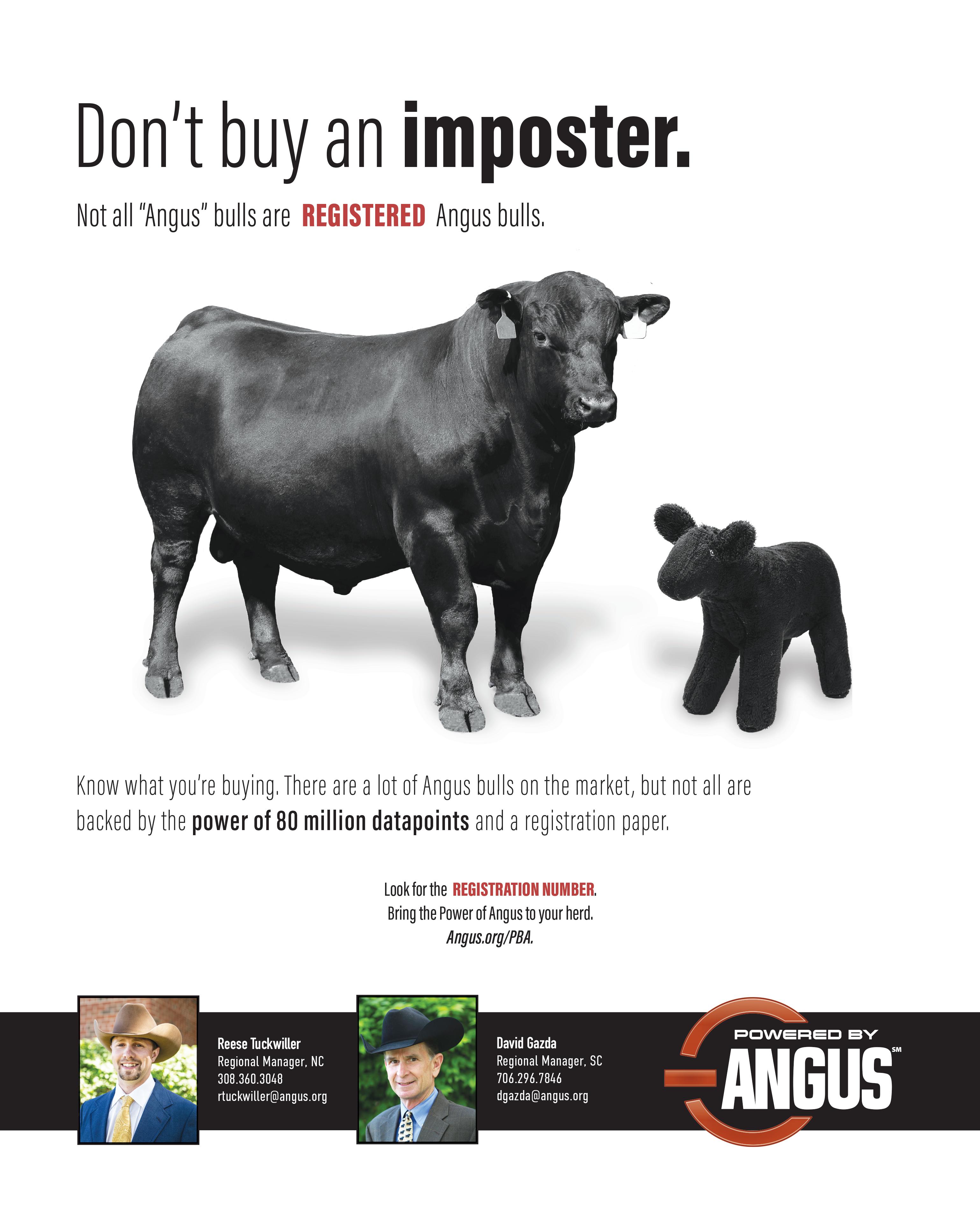

By MARK McCULLY, American Angus Association CEO
“As we look to the new year, I can’t help but be optimistic about the future.”
Fueling that optimism is a word I continue to hear from cattlemen of all ages: opportunity. I recognize raising cattle is not without significant challenges. But despite that, it’s a pretty incredible time to be in the cattle business, and I know of no other breed as full of opportunity as Angus.
I want to first recognize that the opportunity we have in front of us is only possible through God’s grace, the freedom we enjoy as a country, and the unbelievable amount of dedication, sacrifice, hard work, and vision of so many in this breed who have come before us. I never want to overlook the significance of our amazing heritage to the success we enjoy today.
Our opportunity starts with the product we produce. Demand for the Certified Angus Beef (CAB) brand is record strong. Consumers around the globe love your product. Even when faced with record high prices, they continue to vote with their pocketbook and purchase CAB steaks, roasts, and grinds. In 2024, 1.237 billion pounds of premium beef were sold under the brand, marking the second best year in the history of the program.
While our product and our Angus cattle are the envy of the industry, I believe we have the opportunity to make them both even better. The Angus toolbox for genetic selection has never been fuller for breeders and commercial cattlemen to identify deficiencies and make improvements. This past year, we added research expected progeny differences (EPDs) for functional longevity and udder quality to provide more tools to fine tune the Angus cow. For commercial cattlemen, the GeneMax Advantage genomic test now includes the Angus dollar value indexes ($Values) to better match their heifer selection to their registered Angus bull purchase. Using a balanced, commonsense approach that leverages the
strengths of our Angus breed, we can take care of the consumer, grow beef demand, and all the while maintain growth and performance in the feedlot and in a functional and profitable cow herd. The Angus breed has incredible diversity in scale, which affords our industry a powerful opportunity to keep improving regardless of the environment or market priorities.
While Angus enjoys a significant market share, we can distinguish ourselves even more. As a breed, we continue to differentiate registered Angus bulls from the many lookalikes in the marketplace. The Powered by Angus campaign drives home the advantages that come with the data, pedigree, and programs behind a registered Angus bull, and I encourage breeders to use this campaign to support their marketing.
To build your program and attract new customers, the team at Angus Media is equipped to help breeders of all sizes build a marketing plan that fits their operation and budget.
Also, the AngusLink program is proving to be an effective customer service tool for your commercial customers buying registered Angus bulls and looking for help marketing their calves.
For the young folks I visit with, opportunity is finding a spot in this business to get started. For others, it’s an opportunity to expand, grow, and build on their existing program. For some, the discussion is about the opportunity to transition and maybe hand off the reins to someone else.
Regardless of your angle, Angus is loaded with opportunities. Please lean on us at the association if you need assistance uncovering yours.
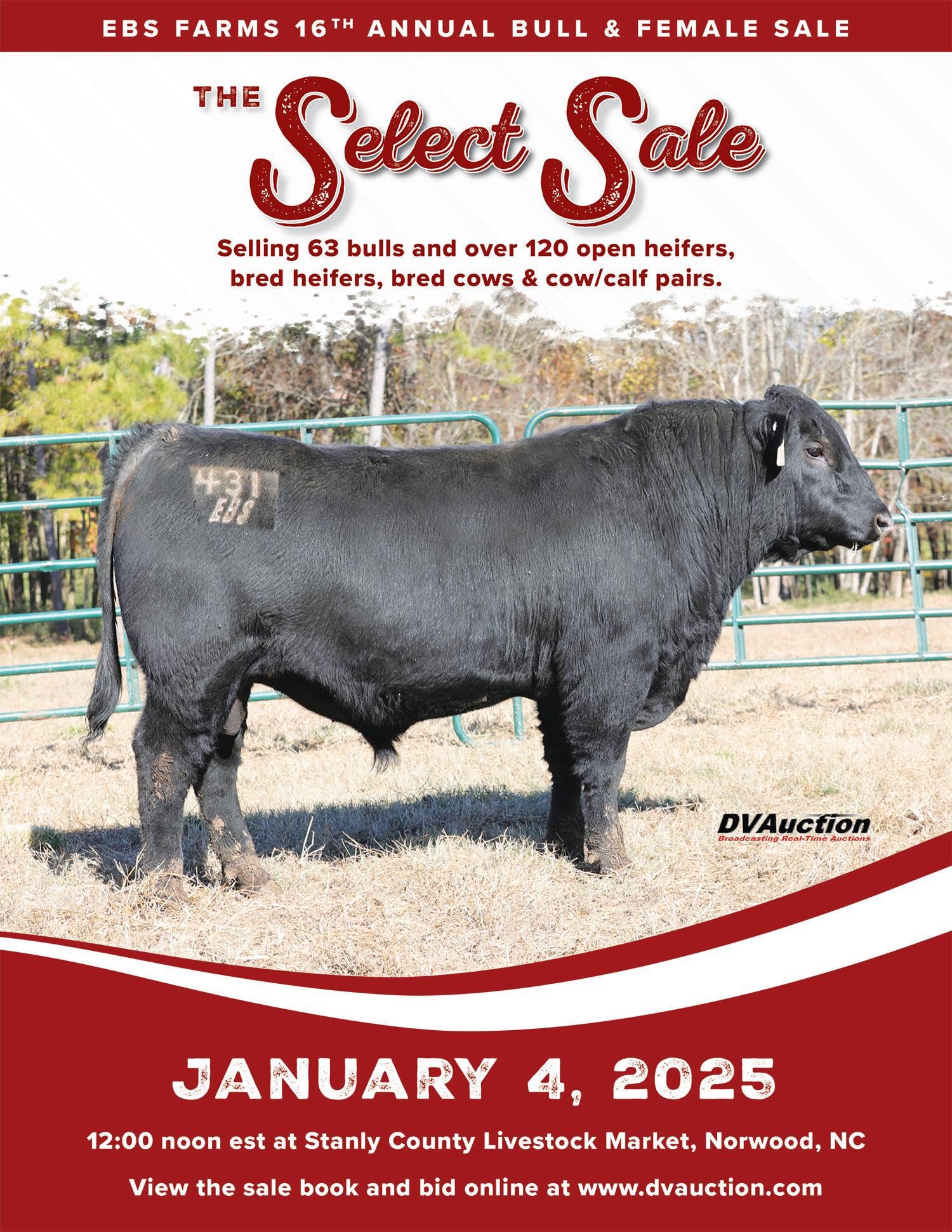


The N.C. Angus Association invites Angus breeders and cattlemen to the 80 th N.C. Angus Annual Meeting & Banquet, set for March 1 at the Yadkin County Agricultural Center in Yadkinville, North Carolina. This milestone event offers opportunities for networking, professional development, and celebrating 80 years of commitment to the Angus cattle industry.
The meeting will include two engaging educational sessions tailored to today’s Angus producers:
• Embryo Transfer Overview and Best Practices, presented by Vytelle, will offer practical insights into maximizing reproductive efficiency and herd improvement.
• The True Value of a Carcass, presented by Certified Angus Beef, will provide valuable knowledge on carcass quality and its impact on profitability.
These sessions are designed to equip cattlemen with tools and strategies for enhancing their business goals.
All Angus breeders and enthusiasts from North Carolina, South Carolina, and Virginia are encouraged to attend.

Tentative Schedule
• 1:00 p.m. – Educational Sessions
• 3:00 p.m. – Annual Business Meeting
• 4:00 p.m. – Social and Networking Reception
• 5:30 p.m. – Award Presentations
• 6:00 p.m. – Banquet and Keynote Speaker
Early bird registration begins in mid-January and can be completed at www.ncangus.org.
This special event combines networking, education, and celebration, offering a unique opportunity for Angus breeders and enthusiasts in the Carolinas to connect and learn. The N.C. Angus Annual Meeting & Banquet serves as the premier platform to share ideas and explore the latest advancements in the Angus cattle industry.
For more information, visit www.ncangus.org or contact NCAA Executive Secretary Cortney Holshouser at ncaa.sec@gmail.com or 919-796-2346.
About the N.C. Angus Association. The NCAA is a dedicated community of breeders and enthusiasts committed to advancing Angus cattle in North Carolina. Through education, collaboration, and support, the association strives to enhance the quality and sustainability of Angus farming in the region.

By KARA LEE, Certified Angus Beef
A look into the Angus database to see how marbling affects fertility and feet challenges.
In the more than 15 years of my business travel, the Chicago airport has gained a reputation for canceled and delayed flights more than any other connection. It is easy to blame the city and assert their airports just aren’t reliable. But when looking at the full scenario, it is usually an unrealistic connection time or simply bad weather.
When frustrated, it’s easy to place blame on the circumstances right in front of you — whether in air travel or breeding objectives.
In recent years, Angus breeders have voiced concerns about fertility and feet. Some have looked at the upward trajectory of marbling within the breed and sent up caution flags as selection pressures rise.
Overall, has our breed been so focused on marbling that we’ve lost sight of other valuable traits? Worse yet, has improving the marbling potential of a calf crop contributed to other challenges in the cow herd?
When studying the data, we inherently know correlation does not always mean causation. But it does lead one to wonder about coincidence.
A look into the data – One of the best tools touted by the American Angus Association membership is its database. Within that, the Angus Herd Improvement Records (AHIR) program offers valuable insights into disposal codes or the primary reasons cattle were removed from a herd.
In search of answers, Certified Angus Beef (CAB) worked alongside the association team to identify genetic trends between fertility and feet issues and the culled animals’ Marb EPDs. To do this, the association provided all disposal code records from the AHIR database for both fertility and feet from 2010 to 2023.
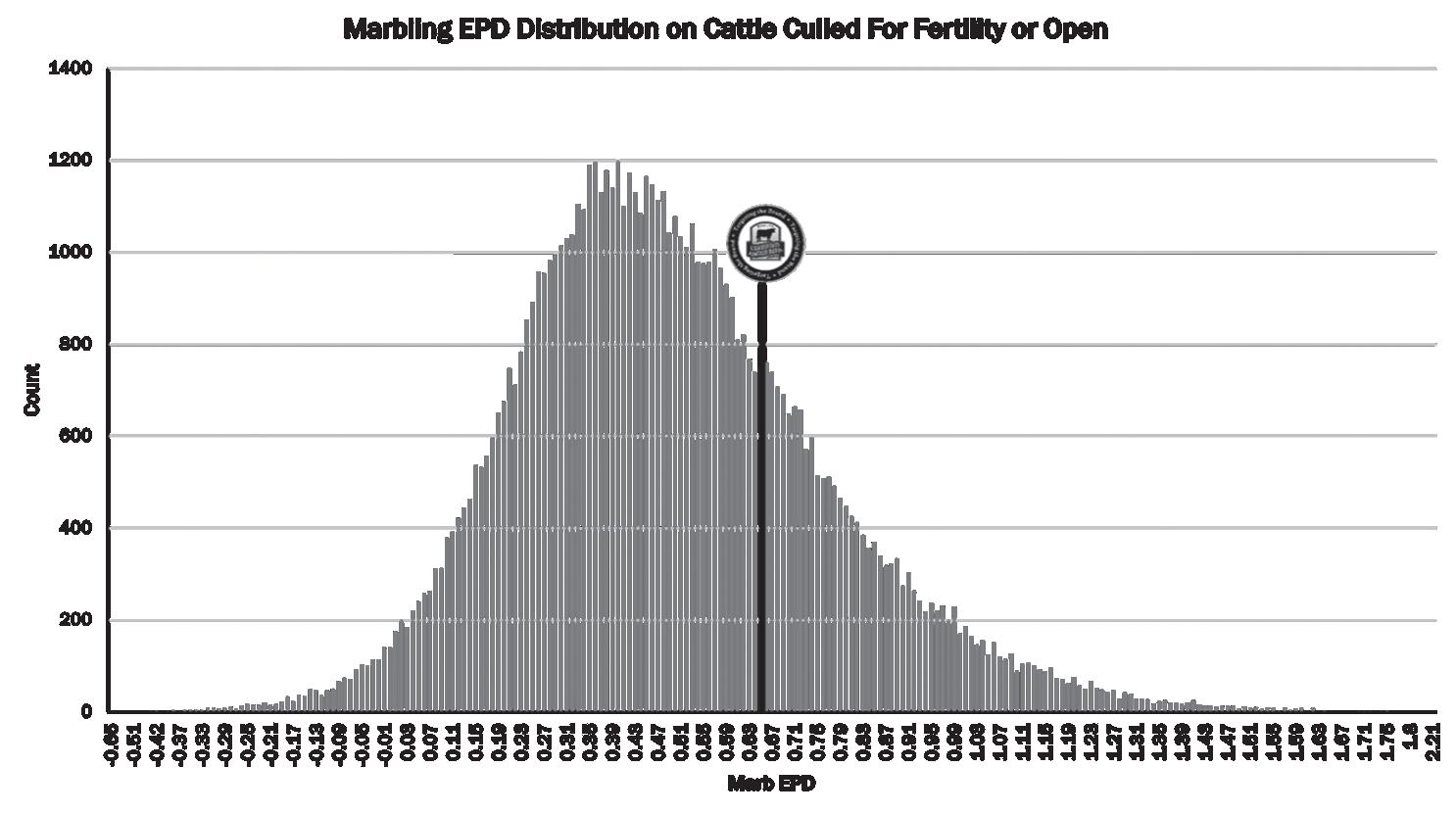
From 2010 to 2023, more than 72,000 females were culled due to being open or having other fertility issues.

This data was not limited to breeders participating in whole herd reporting (inventory reporting), so it gives a glimpse of disposal codes from a variety of cow herds.
In both cases, there is a normal distribution of animals culled, as indicated by the bell shaped curve. The real lessons become visible when we draw lines at the marbling threshold for Targeting the Brand.
For several years, CAB has published Targeting the Brand requirements for Marb EPD and Grid Value Index ($G) to help commercial customers easily identify bulls with added genetic carcass value. The Marb EPD requirement starts at +0.65.
The graphs depict a very clear perspective of where cattle culled for fertility and feet issues fall on the marbling scale. In both cases, most cattle culled fall below the +0.65 threshold. The same is true if you draw that line at the 2024 breed average for current sires (+0.60). Certainly, there are also cattle with very high marbling values culled from their herds due to foot or fertility problems. However, the whole picture shows many of those culled cattle are not considered elite for carcass quality.
In both graphs, the peak of the bell shaped curve lands around +0.40 for Marb. If you follow Angus genetic trends by birth year, the last time cattle averaged a +.40 for Marb was 2005. Since then, we’ve seen a strong upward trend in average Marb EPD values. Over that same period, CAB acceptance rates have more than doubled as breeders continue to pursue carcass traits, driven by a quality minded market.
Data based decision making – It’s been said that the Angus cow is the unsung hero of the Certified Angus Beef brand. Without her ability to perform at the cow/calf level, our industry would not have been able to pursue the long term improvements to carcass quality we’ve enjoyed for the last 45+ years.
Cattle producers have a responsibility to look critically at their own cow herd and determine the weakest areas that warrant improvement. Fertility should be a high priority. Critical evaluation
The Carolina Cattle Connection
of foot phenotypes should also be encouraged. Yet, neither of those must come at the cost of marbling potential.
The Angus breed has enough genetic diversity to allow breeders and their commercial bull customers to make progress across multiple traits simultaneously. One bloodline may be high in marbling but does not check the boxes you need for other traits. That does not mean marbling is the cause — it simply means your search for the ideal genetic pairing is not done.
Just as I may better evaluate flight schedules for successful connections, Angus breeders should consider all genotypic and phenotypic records for advantageous breeding decisions.
Originally published in the Angus Journal

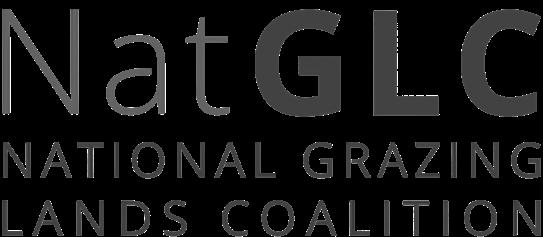
aking Over Tucson — Expanding Grazing Horizons. The 9th National Grazing Lands Conference is one we will never forget! The sold out event, held December 4-6 in Tucson, Ariz., brought together 545 attendees, including 244 first time participants, 145 expert speakers, and 39 trade show exhibitors. We were honored to host representatives from 36 states, 6 countries, and 21 grazing coalitions, showcasing the truly global importance of managed grazing.
The producer led event showcased testimonials from the field, with 70 percent of attendees identifying as producers. Bringing together industry leaders, government agencies, non-profits, and more, our collective voice for our nation’s grazing lands continues to grow stronger. Together, we sparked meaningful conversations and celebrated innovation.
Thank you for being part of this vibrant community. Your enthusiasm drives our mission to preserve and strengthen grazing lands for future generations. Let’s continue to collaborate and lead the way in agriculture!
About the National Grazing Lands Coalition. The NGLC is a collaboration of ranchers, researchers, conservationists, and industry partners working together to promote the sustainable management of grazing lands. Through education, outreach, and partnerships, NGLC advocates for the adoption of grazing practices that support the health of the land, improve water quality, and maintain the viability of ranching communities. The organization provides resources and expertise to empower ranchers to implement sound grazing management practices, fostering the long term sustainability of grazing lands in the United States. For more information, visit www.grazinglands.org
Backed by the world’s largest and most reliable genetic evaluation program.
Registered Angus genetics deliver better calving ease, more growth, and superior marbling.
4K FARMS
Richard D. Kirkman, DVM Siler City 919-742-5500 rdkirkman@spectrum.net
BACK CREEK
Joe & Robin Hampton Mt. Ulla
704-880-2488 (Joe); 704-880-3572 (Robin) robinbackcreek@att.net
Facebook: Back Creek Angus
BILTMORE ESTATE
Kyle Mayberry - Manager Asheville 828-768-1956 livestock@biltmore.com www.biltmorelivestock.com
CARSON FAMILY FARM, LLC
John, Callie, Isaac & J.R. Carson Laurel Springs
336-818-9087 • carsonfamilyfarm@gmail.com
Facebook: Carson Family Farm
CHAPMAN CATTLE COMPANY
Gary, Isaac & Bryant Chapman Bryant Chapman - Manager Taylorsville 828-514-0526 bryantchapman21@gmail.com https://.m.facebook.com/chapmancattleco
CHESSIE CREEK FARM
Andrew Agostini Scott Sell - Manager Walterboro, SC 912-3292411 scott@chessiecreek.com www.chessiecreek.com
FOUR S FARMS
Kim & Connie and Jason & Robin Starnes Luther Lyerly - Manager Salisbury 704-640-5875 kim-4sfarms@carolina.rr.com
GRAGG FARMS
Paul, Chris & David Gragg Boone 828-268-4136 (Paul); 828-268-4137 (Chris) 828-268-4135 (David) gragg_farms@hotmail.com
H&H FARMS
Buddy & Jennifer Hamrick - Owners Bly Hamrick - Manager Boiling Springs 704-472-1912 jennham@bellsouth.net
Cortney Holshouser
NCAA Executive Secretary 919-796-2346 ncaa.sec@gmail.com www.ncangus.org


HILL ANGUS FARM
Dr. Gary M. Hill Hendersonville 229-848-3695 gmhill@uga.edu
JACK KNOB FARMS
Karl, Janet & Logan Gillespie Franklin 828-371-2220 karl@jackknobfarms.com www.jackknobfarms.com
LANE ANGUS
Roger & Bundy Lane Bundy Lane - Manager Gates
252-398-7705 (Bundy); 252-398-7719 (Marinda) 252-357-1279 (Office) bundylane@gmail.com laneangusbeef@gmail.com www.laneangusbeef.com
N.C. State University - E. Carroll Joyner Beef Unit Matt Morrison - Manager Raleigh 716-720-0227 mdmorri8@ncsu.edu
SMITH ANGUS FARM
Randall Smith Snow Camp 336-516-4558 smithangusfarm@yahoo.com
SMITH CREEK ANGUS FARM
Marty & Lynne Rooker Norlina 252-213-1553 mrooker@mrookerlaw.com
SPRINGFIELD ANGUS
Phil Goodson Louisburg 919-880-9062 philgoodson2@gmail.com www.springfieldangus.com
TRIPLE LLL ANGUS Greg Little Monroe 704-219-1294 • greg.little@atimetals.com
UWHARRIE RIDGE FARMS Mark Wilburn Asheboro 336-465-2417 uwharrieridgefarms@gmail.com
VANDEMARK ANGUS
Keaton & Janie Vandemark Spring Hope 252-885-0210 keaton@vandemarkfarms.com
WINDY HILL FARMS, LLC Michael A. Moss Will Moss - Manager Ramseur 336-460-7451 • windyhillfarmsllc@gmail.com
WINSLOW GENETICS Ben & Kathleen Winslow Halifax 252-578-5487 bensbulls@gmail.com

Certified Angus Beef Giveaway.
Your commitment to cattle care deserves to be recognized. That’s why Certified Angus Beef and Sysco are giving away an All Weather Gator to someone with a current BQA certificate. The giveaway includes the XUV 845R Premium Cab Crossover Utility Vehicle by John Deere.
Enter by submitting the form linked below by February 14 because we’re randomly selecting a winner at 3:00 p.m. EST that day.
Everyone who enters will receive a gift from Certified Angus Beef. Even if you don’t win, we’ll keep your name in the bucket for a chance at the final giveaway that follows.
Not certified? Get BQA’d online in just a few hours.
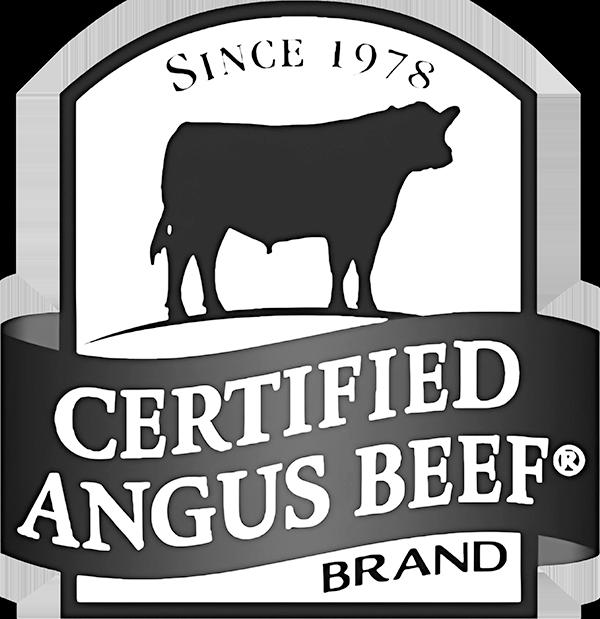
Review the sweepstakes rules. Must live in the contiguous U.S., be 18 years or older, and have a current BQA certificate to be eligible.
Follow this link to enter! https://forms.monday.com/forms/4870 8287ab9574b1d05a8f805e821d46?r=use1
This giveaway is sponsored by Certified Angus Beef and Sysco as part of their Raised with Respect campaign.
Focus on the Next Generation: Bringing Ranchers & Chefs
Together. At Certified Angus Beef, the Connecting the Culinarian and Rancher event brings together agriculture and culinary students to discover their shared values and passion for quality beef. Though they work at opposite ends of the industry, work at the ranch and in the kitchen is deeply connected.
The event began in our Meat Lab, where attendees explored underutilized cuts and their potential on menus. Open discussion followed, with chefs and ranchers diving into shared challenges like sustainability, consumer education, and the dedication it takes to craft quality beef.
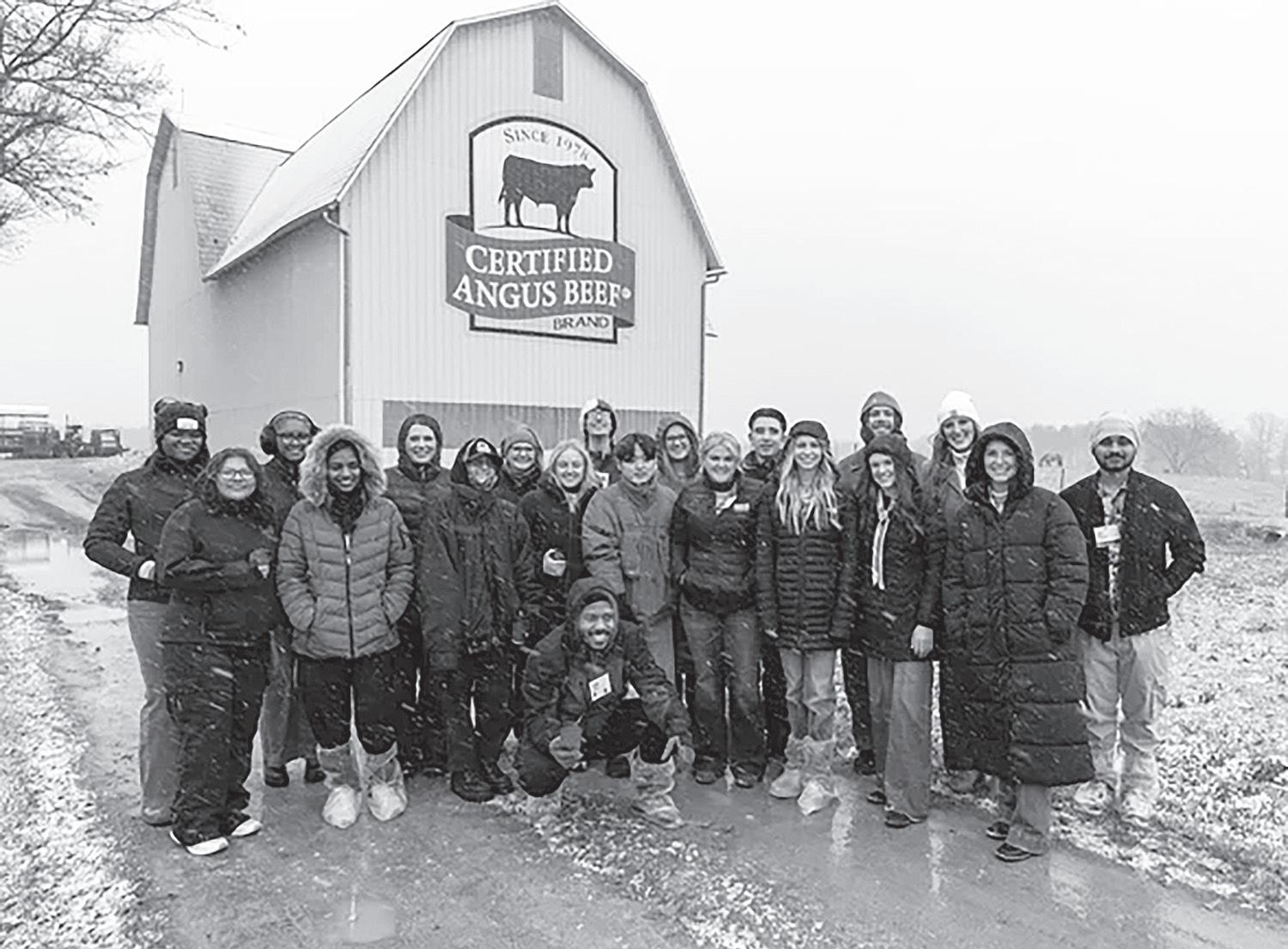
For many chefs, stepping foot on a ranch was a first time experience. They witnessed the knowledge, care, and dedication ranchers pour into raising cattle, gaining a deeper appreciation and respect for the work behind the beef they serve.
The event came to an end with a collaborative cooking session, where chefs and ranchers came together to prepare and share a meal.
Afterward, ranching students stayed for the Youth Beef Leaders Seminar, joined by even more young producers from the U.S. and Canada. This seminar equips students with industry knowledge for their future careers and provides invaluable networking opportunities with peers and CAB staff.
By investing in the next generation, CAB fosters an environment to strengthen relationships across the industry, ensuring chefs, ranchers, and future leaders work together to preserve the commitment of quality beef for years to come.
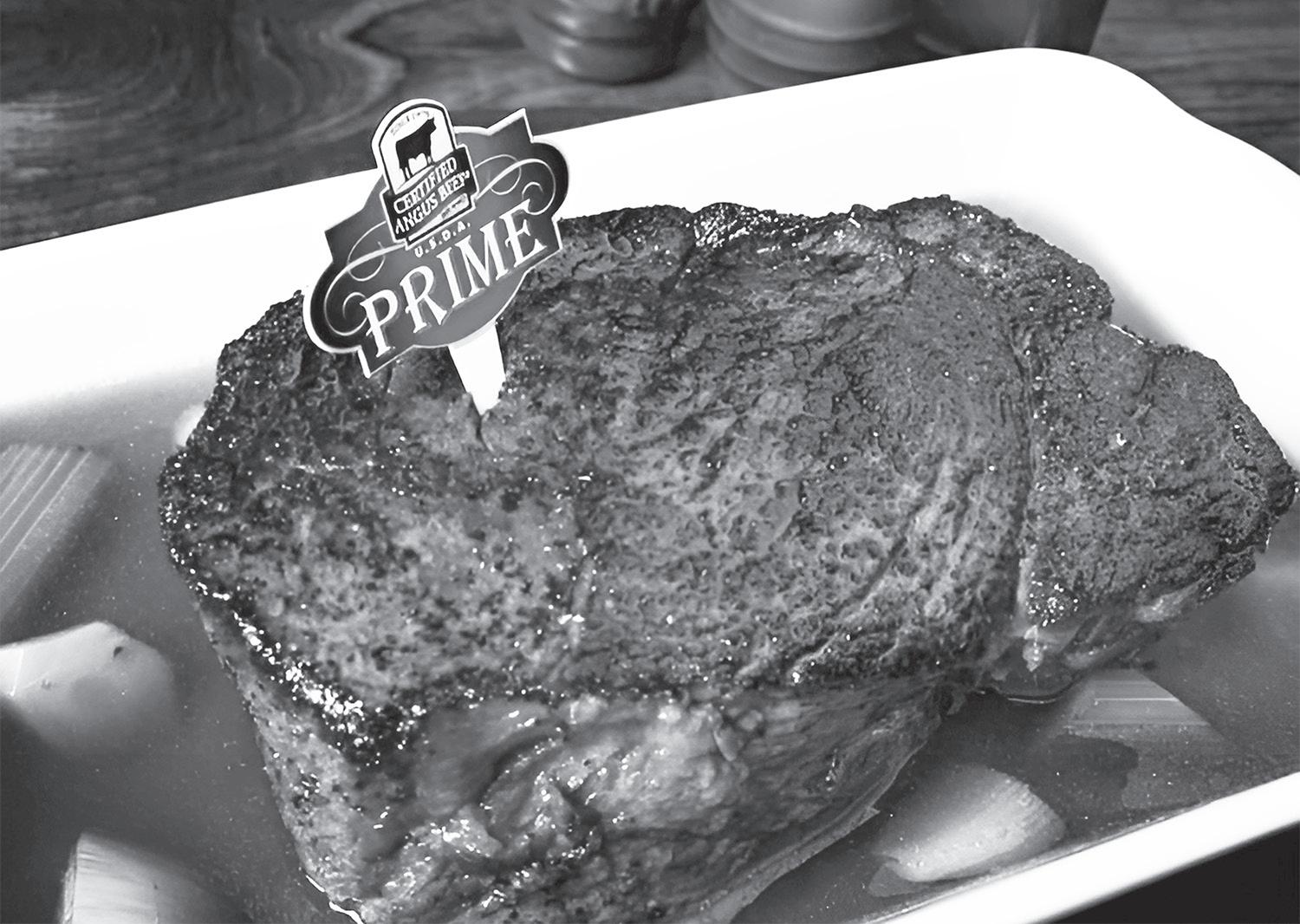
The cattle market’s been up, and so has Prime beef production. Thanks to genetic improvements and management practices, beef carcass quality has been on the rise. We last saw a similar upswing during the 2020 pandemic when supply chain disruptions caused extended feeding periods. In 2024, however, economic factors — rather than disruptions — have led to longer feedyard stays and increased carcass weights. What’s days-onfeed got to do with Prime production? More marbling.
Though fewer cattle were processed in 2024, heavier weights and a higher percentage of Prime carcasses resulted in record tonnage.
Looking ahead to 2025, Certified Angus Beef’s Paul Dykstra says we can expect to see more of the same: tighter cattle supplies and low grain prices. This will likely continue to benefit carcass quality. This past year, USDA Prime beef production hit a record 10.5 percent and
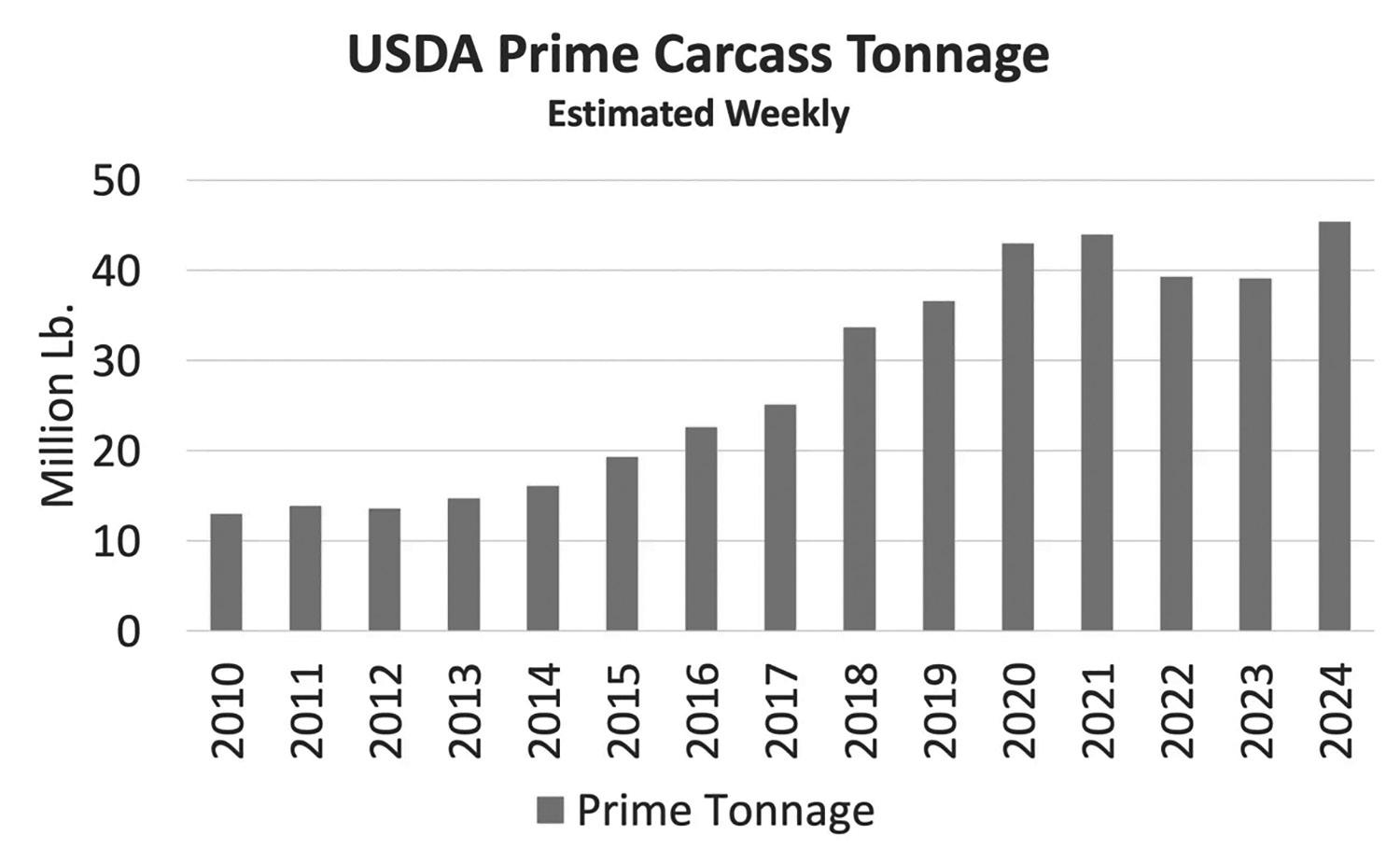
could push a half percent higher in 2025. That also means increased CAB supply. The CAB acceptance rate, already at a record 37 percent, could also go up.
AJourney to the Best Sourced Beef. What happens when 30 foodservice professionals step into the boots of cattle ranchers and feeders? They gain an unmatched appreciation for the journey of beef from gate to plate. That’s exactly what unfolded during the first week of Certified Angus Beef’s Master of Brand Advantages (MBA) Class 22. MBA is a three week course that builds brand ambassadors ready to sell more of the Certified Angus Beef brand.
Attendees, plus our staff, journeyed across Kansas, visiting Gardiner Angus Ranch to learn about seedstock operations, Giles Ranch to explore commercial cow/calf production, Shaw Feedyard to see cattle nutrition in action, and National Beef Packing Company to witness processing. These stops provided a powerful visual representation of how ranchers bring quality beef to the table. Along the way, they also enjoyed a meal at Dodge City’s CAB restaurant partner, Prime on the Nine.
Through hands-on learning and meaningful discussion, MBA participants gained a deeper understanding of what it takes to source the best. With greater authenticity and passion, they left equipped to share the story of ranchers’ dedication with customers across the U.S. and Canada.
Later, MBA will bring participants to Wooster, Ohio, home of the CAB Culinary Center, for their second week long session. Our Meat Lab offers hands-on beef fabrication and deep dives with meat scientists to understand beef cuts and their value, showcasing how the brand delivers an excellent eating experience. The class rounds out with a third week at the Culinary Center, diving into sales strategies that win.
Who is Certified Angus Beef? At Certified Angus Beef, we know people want to put great meals on the table. Our employees work across the beef supply chain to ensure chefs and home cooks find and prepare the best Angus beef. Led by our culinary, beef, and marketing experts, our team provides consultation, marketing materials, training, market insights, and tools that help businesses like grocery stores and restaurants thrive. Our team is also dedicated to sharing the story of family farmers and ranchers who supply the brand.

By COLIN WOODALL, National Cattlemen’s Beef Association
The 2024 election is one that will be studied for years to come. A former president comes back to run for a second term. An incumbent president is forced to back down to make room for his “more electable” vice president. An assassination attempt. Then another. Insanely wrong polling. More than $16 billion spent. This election was the stuff of movies, but the result was about as definitive as you could expect in American politics today. Instead of waiting days or weeks to see who would move into 1600 Pennsylvania Avenue, we knew on election night. Something that is increasingly rare. When the smoke cleared, former President Trump won 312 electoral votes, 42 more than the 270 needed to win and eight more than he won in 2016. He also won the popular vote by more than three million votes.
Now, President-elect Trump and his team are working feverishly to prepare for the transition. He is quickly nominating individuals to serve in his cabinet and in appointed positions throughout the federal departments. He is also working on his list of priorities to tackle as soon as he is sworn in on January 20. We are at the table with the transition team to ensure NCBA’s policy priorities are included. Leading that list is a push for quick action on the expiring tax provisions from the 2017 Tax Cut and Jobs Act. In particular, the improvements we secured in the Death Tax exemption levels and tax rates expire at the end of 2025. We need quick action on these expiring provisions, so you have time to plan and prepare. Waiting until the end of 2025 to act is unacceptable. Since he was president and signed the 2017 bill into law, we expect President Trump will act quickly. It is important to remember that these are no longer tax cuts; this is an extension of current U.S. tax policy.
Another priority will be getting the Trump administration to fix the 2025 Dietary Guidelines for Americans. Under President Biden’s leadership, Secretary of Agriculture Tom Vilsack has allowed agenda driven “science” to influence the Dietary Guidelines Advisory Committee to a point where they are recommending beans and lentils over beef. The new Trump administration will be able to reinsert evidence based, peer reviewed science to keep us at the center of the plate. Taxes and Dietary Guidelines are just two priorities we know the new administration will support. We have a long list of overburdensome rules and regulations we will work with President Trump to roll back.
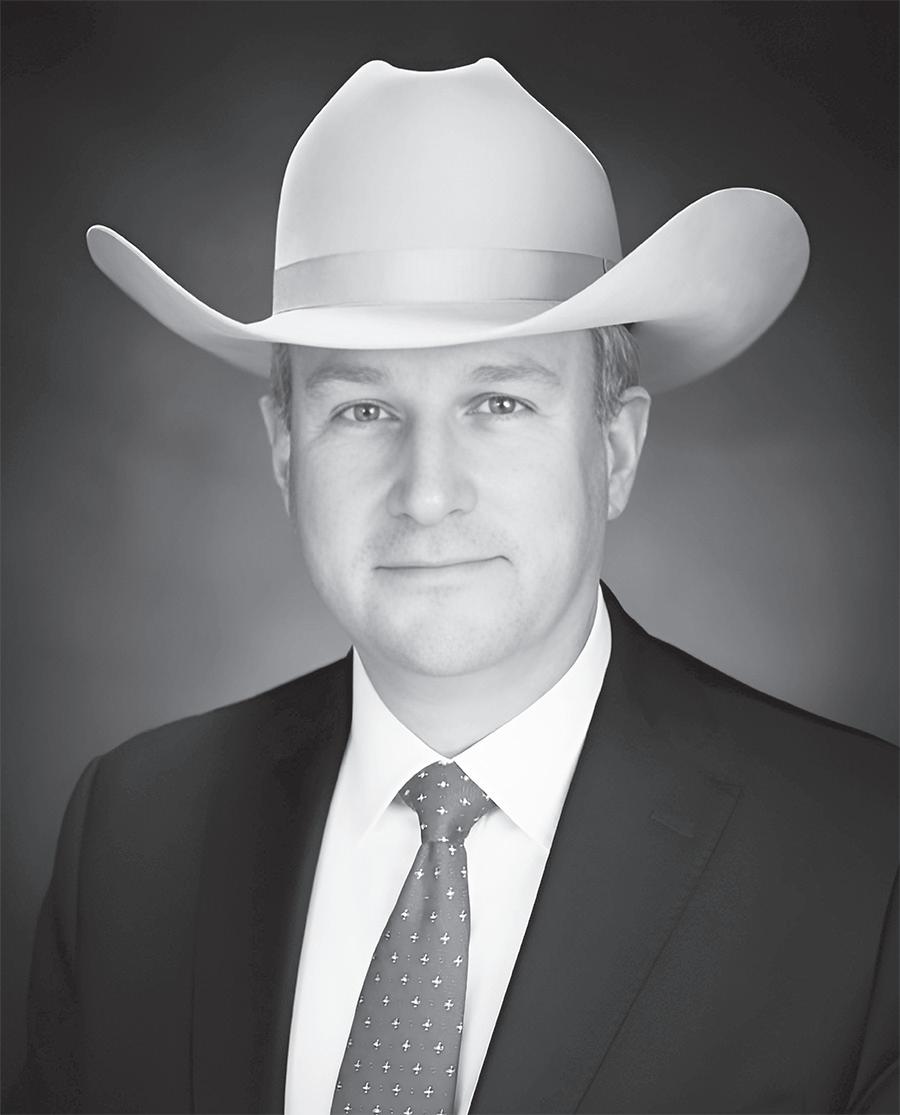
To help achieve his priorities, he will have a Republican led Senate. The Republicans gained four seats to have a 53 to 47 majority. While this gives them the opportunity to lead, they will still need to work with Democrats to reach that magic 60 vote threshold required in many instances to consider and pass legislation in the Senate. That won’t always be easy, especially since moderate Democrats like Joe Manchin from West Virginia are no longer in the Senate. Control of the House of Representatives will also go to the Republicans, but by a slim margin, with only a five seat majority.
We need Congress to fund the government for fiscal year 2025. Funding ran out on December 20, but President Biden signed a temporary funding bill the following day that will expire on March 14. We also need them to pass a Farm Bill, although a one year extension was also signed on December 21. Agriculture needs certainty, and the bill passed by the House Agriculture Committee last spring contains all of NCBA’s requests. It would be nice to allow the new Congress and administration to start fresh in January.
It is important to remember, though, that President Biden is still in charge and will be until Inauguration Day. That means he and his team are trying to finalize as many rules and regulations as they can. We have talked previously about the changes they are proposing to the Packers & Stockyards Act. These proposals would roll back 40 years of value added marketing programs. We continue to fight back against President Biden and Secretary Vilsack taking your marketing options away from you. The “Bidenomics” approach to cattle marketing will not be beneficial to your bottom line.
Regardless of the election outcome, we will be working on making friends among the new Trump team, the new Senate offices, and the new House offices. We need friends on both sides of the aisle to be successful in securing our policy priorities. Any organization or group that works with only one party will be sorely disappointed in what they can achieve. Washington, D.C., is still a place where faceto-face meetings make the most impact, and nobody covers Capitol Hill better than NCBA. This is why we have an office on Pennsylvania Avenue and a full time staff to build relationships and be your voice. We are ready to work with all members of the new Congress, and we will look at every opportunity to keep the government out of your business.

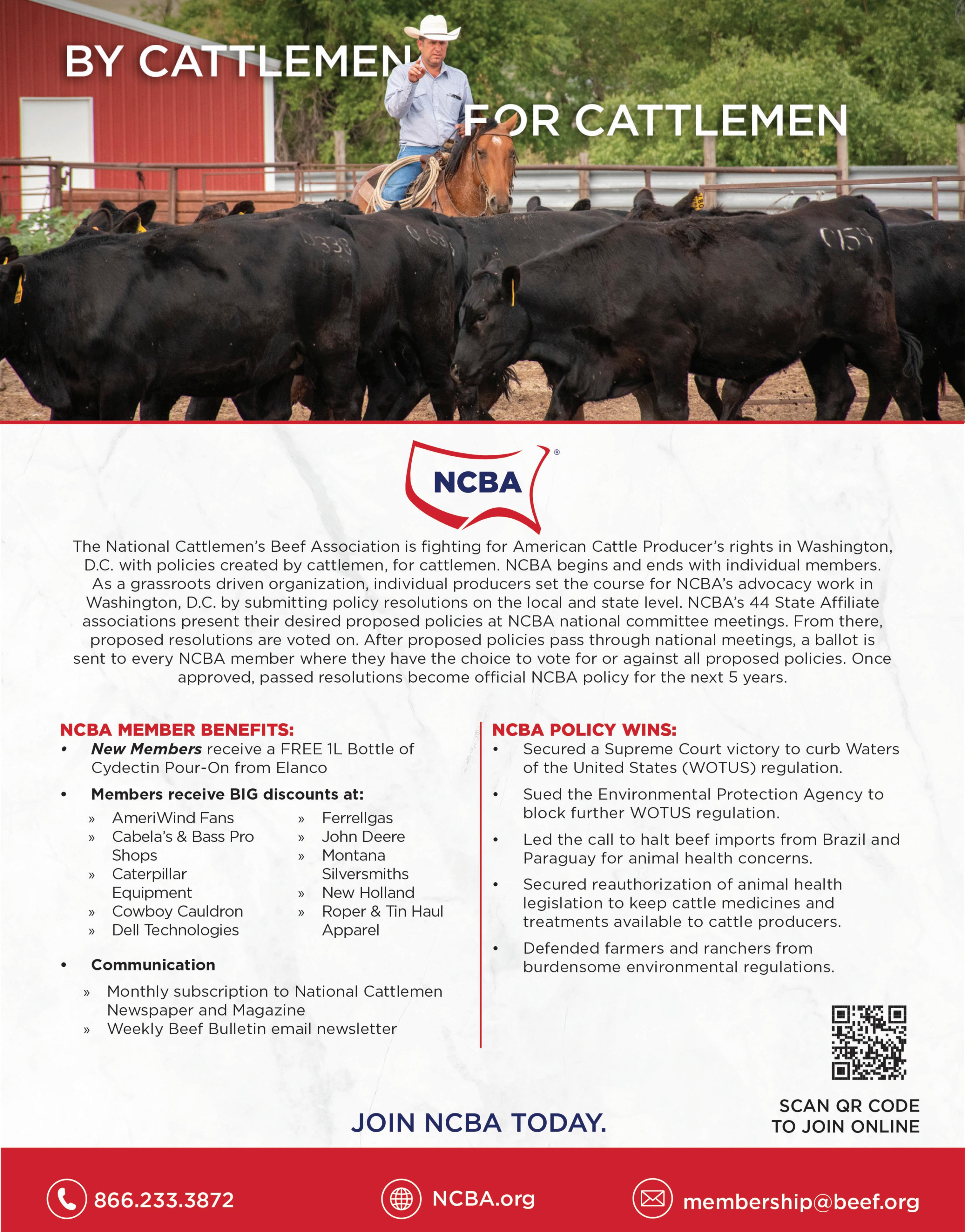
By MARK EISELE, National Cattlemen’s Beef Association
In the last issue, I shared my personal story of how the Death Tax almost killed my dream of ranching with my family. The Death Tax, and higher taxes as a whole, are some of the biggest threats facing our farms and ranches. That is why NCBA is leading the fight for lower taxes and making this issue our priority for next year.
Back in 2017, NCBA helped pass legislation called the Tax Cuts and Jobs Act. This bill reduced taxes on farms and ranches, limited the impact of the Death Tax, and helped cattle producers save more of their hard earned money. Unfortunately, this bill is set to expire at the end of 2025, and we cannot afford to lose these good tax provisions.
NCBA has already started meeting with policymakers to make sure Congress passes new legislation to reduce taxes. This fight is deeply personal for me because I know what can happen if the government sees our farms and ranches as a way to increase tax revenue.
One of the biggest challenges in this fight is ensuring policymakers actually understand our way of life. Too often, D.C. lawmakers think the value of our land and equipment means we have big bank accounts ready to pay tax bills. The truth is that assets like land and equipment might look like big numbers on a balance sheet,
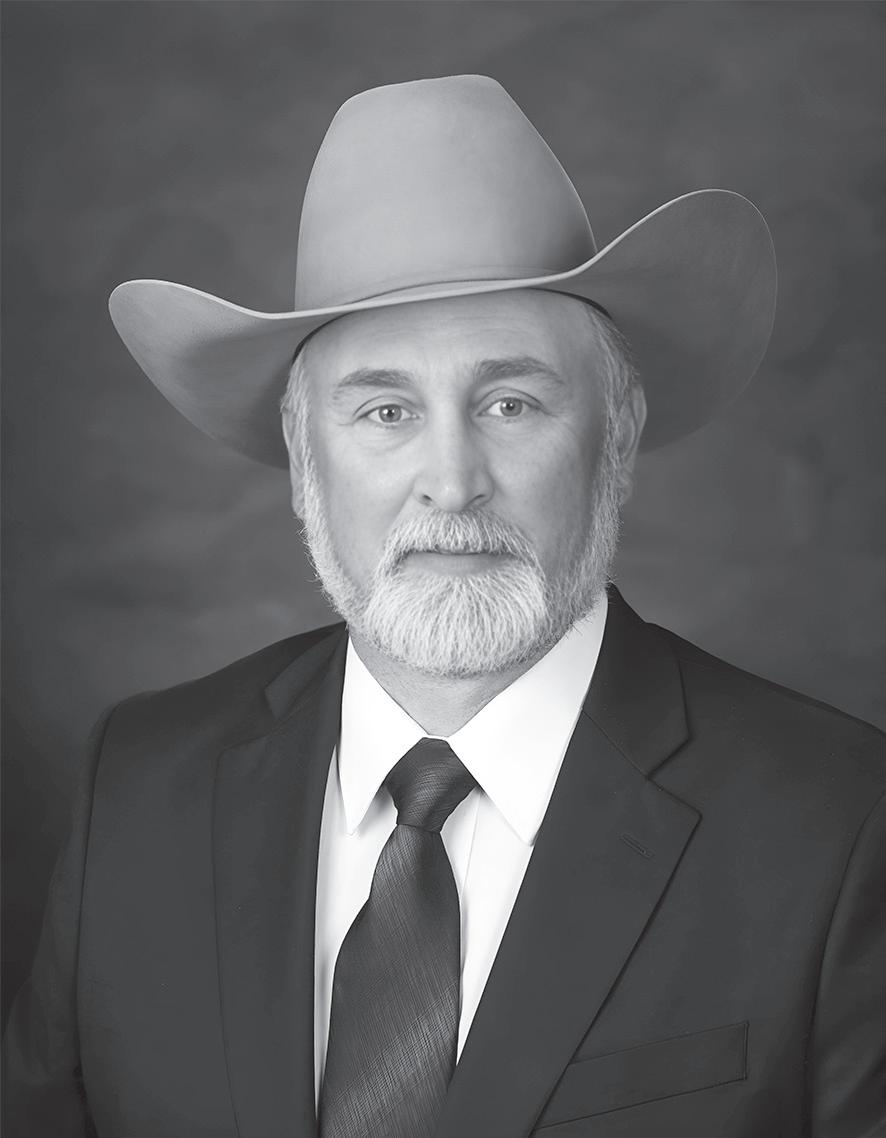
but those resources are not easily liquidated, and they are necessary for our operation to function.
To help educate policymakers, NCBA spent several months conducting a tax survey of cattle producers to give us accurate data on how tax provisions impact our businesses. The data showed that the cattle industry is clearly unique. We are a family driven industry, with 99 percent of respondents running family farms or ranches and nearly ⅔ being the third generation or more on the operation. That legacy is important to defend.
NCBA also noted that a third of producers have paid the Death Tax and, of that group, 35 percent have paid the Death Tax more than once. When a family member passes away and leaves the farm or ranch to the next generation, that is already a deeply challenging and emotional time. Imagine having to go through that process multiple times, and each time as you mourn a loved one, the IRS shows up to collect a bill.
What truly concerns me from our survey is the burden taxes place on the day-to-day management of your operation. According to the survey, 18 percent of producers sold land or other assets to pay a tax bill, 9 percent took out a loan or lien, and 25 percent were not able to invest in their operation because of their tax bill. A quarter of producers are also budgeting at least $10,000 annually just on tax preparation and filing, not even counting the tax bill.
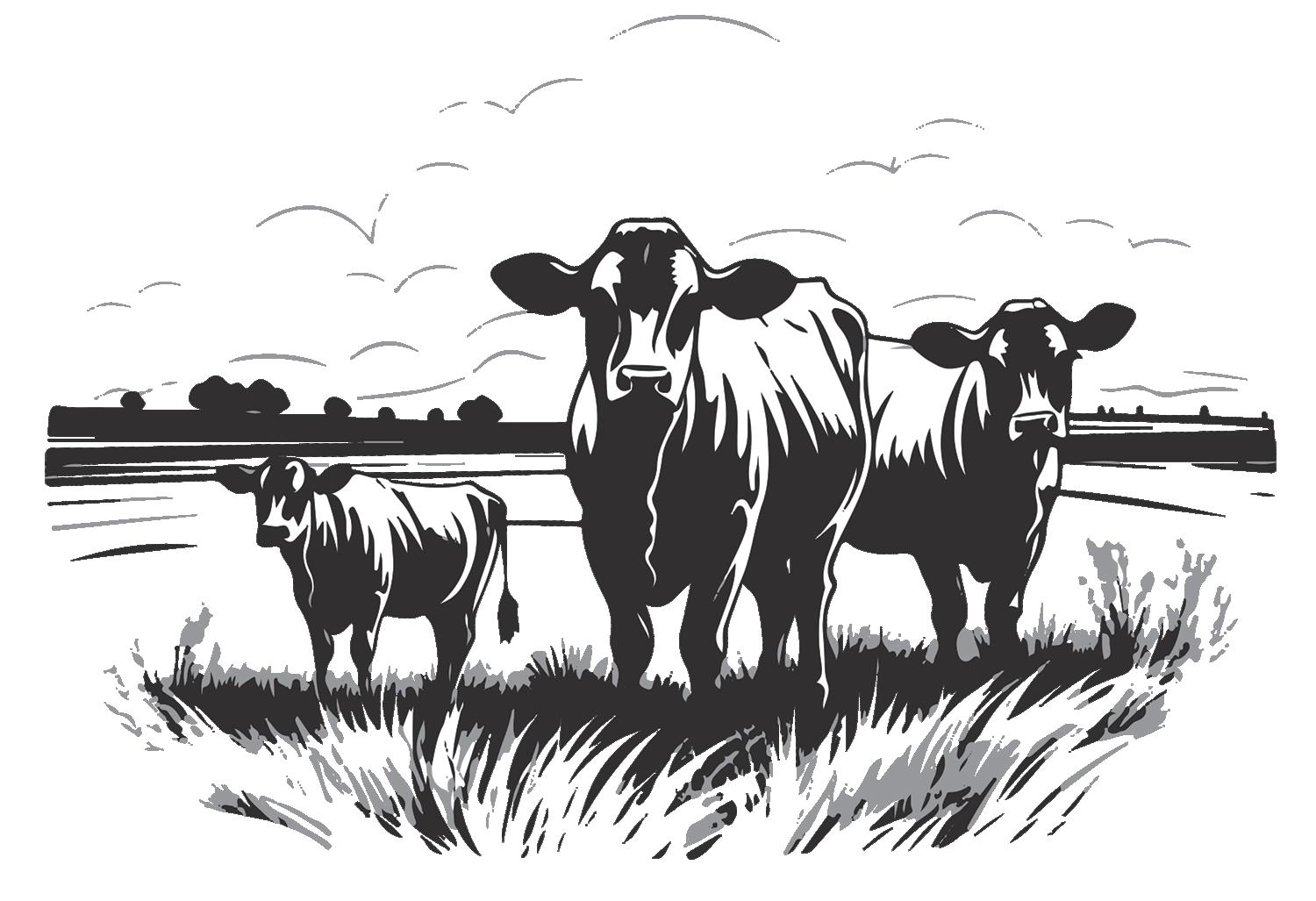
I never want to see a producer be forced to sell off assets, take on debt, or be unable to expand their business because of crippling tax bills. NCBA has always led the fight against taxes, and we will continue fighting to protect your farming and ranching legacy.
To win in Washington, D.C., we need two things on our side: data and a story. We have data from the NCBA tax survey showing the urgent need for tax relief to keep farms and ranches in business, and we have your story about the values, hard work, and dedication you bring to your operation every day. Together, that is the winning combination that will help us secure new tax relief for cattle producers in 2025.
NCBA Congratulates Brooke Rollins on Nomination as Secretary of Agriculture. Recently, the National Cattlemen’s Beef Association (NCBA) Vice President of Government Affairs Ethan Lane issued a statement congratulating Brooke Rollins on her nomination as Secretary of Agriculture:
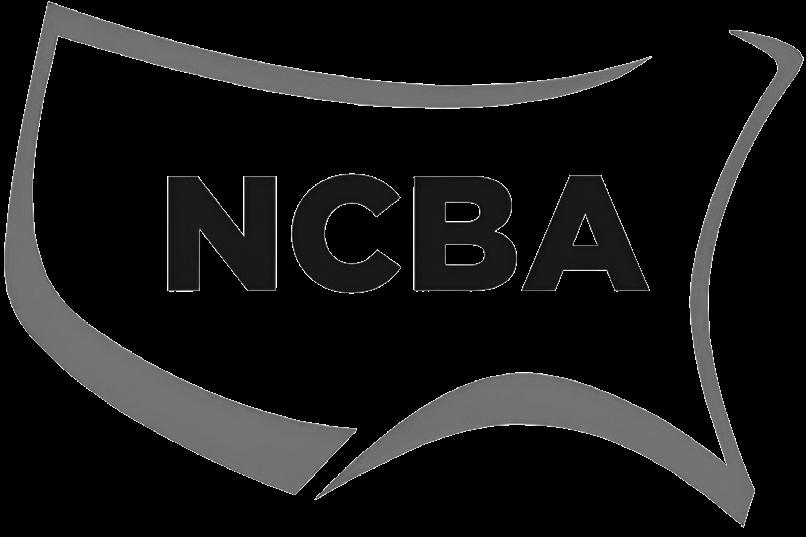
“From her time as a college student studying agriculture development to her distinguished career in Texas and Washington, Brooke Rollins has a history of fighting for Main Street and rural America. America’s cattle producers need a Secretary of Agriculture who will protect family farms and ranches, roll back crushing regulations, and stand up for rural values, and we look forward to working with Secretary-Designate Rollins to make it happen.”
NCBA Endorsed Disaster Tax Relief Bill Passes Senate. Bill Previously Passed House and Goes to the President for Signature. Recently, NCBA thanked the U.S. Senate for passing the Federal Disaster Tax Relief Act (H.R. 5863). In addition to providing much needed relief to victims of hurricanes, this legislation would provide tax relief for cattle producers who received payments due to wildfires. Previously, these payments counted as taxable income, meaning producers who already suffered from disasters were hurt again by having their relief payments taxed.
“It is heartbreaking to see your farm or ranch destroyed by a disaster, and it only adds to the pain when the payments meant to help you recover come with a tax bill,” said NCBA President and Wyoming rancher Mark Eisele. “With the devastating hurricanes and wildfires the cattle industry has suffered over the past several years, helping producers recover and stay in business is a top priority for NCBA. The Federal Disaster Tax Relief Act will prevent recovery payments from being taxed and be another tool for producers rebuilding their livelihood.”
The Federal Disaster Tax Relief Act addresses limitations in casualty losses and allows producers to take greater deductions for disaster related losses. Additionally, the bill excludes any payments received due to a “qualified wildfire disaster” from being counted as income for federal tax purposes. The bill also retroactively applies to any wildfire payments received in tax years 2020 through 2025. Producers will have the opportunity to file with the Internal Revenue Service (IRS) for relief payments received in these previous years.
“NCBA has fought to exempt disaster relief payments from being taxed, and we are thankful that the House of Representatives and Senate both passed the Federal Disaster Tax Relief Act to protect these payments from taxation,” said NCBA Executive Director of Government Affairs Kent Bacus. “We also thank Congressman Greg Steube (R-Florida) for leading the effort to get this bill passed. Now, NCBA urges President Biden to swiftly sign this bill into law.”
NCBA Responds to Dietary Guidelines Report and Reiterates Role of Beef in a Healthy Diet. NCBA recently reiterated the important role of beef in a healthy diet and responded to the questionable advice published in the Dietary Guidelines Advisory Committee’s Scientific
Report. Despite a wealth of high quality scientific evidence that beef has an important role to play in a healthy diet, the committee is advising the U.S. Department of Agriculture (USDA) and U.S. Department of Health and Human Services (HHS) that federal nutrition guidelines include a reduction in red meat consumption.
“Most Americans today already eat beef within the Dietary Guidelines for Americans (DGA) recommended levels for a healthy diet. This reduction is a solution in search of a problem,” said Mark Eisele. “Public health advice should be based on the totality of scientific evidence. The Dietary Guidelines Advisory Committee ignored robust and rigorous scientific evidence about beef’s essential nutrients and the foundational, positive role it plays in health as a preferred protein food in a variety of healthy diets for all Americans.”
Obesity and chronic disease are critical health issues in our nation, and eating beef is a solution. With a single, 3 ounce serving of lean beef, Americans receive half of their daily protein needs, as well as 10 essential nutrients like iron and B vitamins — all in less than 170 calories. NCBA will continue working hard to ensure the wealth of evidence in support of beef’s positive role in health is available to the future secretaries and considered in the final guidelines over the coming months.
“Cutting back on beef isn’t going to ‘Make America Healthy Again.’ There’s irrefutable evidence about the valuable role of beef and its nutrients in promoting health,” said NCBA Executive Director of Nutrition Science and Registered Dietitian Dr. Shalene McNeill. “We’ve had 40 years of Dietary Guidelines, and during that time, beef consumption has decreased, yet Americans suffer more from obesity and chronic disease than ever before. Advising Americans to cut back on beef takes us even further in the wrong direction, putting our most vulnerable populations like women, children, teens, and the aging at risk. This advice detracts from the real and most basic challenges we face with eating healthfully. Nutrition guidance should encourage Americans to have the flexibility to choose nutrient dense foods and dietary patterns they enjoy within calorie goals.”
Background — Every five years, the federal government formulates the Dietary Guidelines for Americans, a foundational document on nutrition that helps inform federal nutrition policies and programs like school lunches.
Now that the Advisory Committee has completed its report, the agencies will evaluate the committee’s recommendations and translate that information into the final guidelines.
Lean beef is a proven nutritious choice in a balanced diet. Beef provides essential nutrients and protein with fewer calories than non-meat alternatives. Additionally, research shows that beef is more effective in promoting muscle health than soy based options. Beef is compatible with heart health, plays an important role in managing weight, and supports the nutritional needs of at-risk populations, including adolescents, pregnant women, and older adults.
NCBA and PLC Call on USFWS to Partner with Producers on
Monarch Conservation. Recently, the U.S. Fish and Wildlife Service (USFWS) released its plan to list the Monarch butterfly as threatened under the Endangered Species Act (ESA) with section 4(d) flexibilities. The agency will accept public comments on the proposal until March 12. NCBA and the Public Lands Council (PLC) call on USFWS to partner with livestock producers throughout this process.
“USFWS must increase partnerships with livestock producers throughout this process recognizing their work managing the landscape. As stewards of the land, ranchers work tirelessly to implement sustainable management practices to ensure the longevity of the lands they utilize. Recent studies have shown that grazing and animal agriculture in general, builds robust habitat, increases insect populations, and manages invasive species on America’s pastureland,” said NCBA Director of Government Affairs and PLC Garrett Edmonds. “The USFWS management plan must recognize the voluntary conservation work that ranchers do every day to care for America’s vast natural resources providing the regulatory certainty necessary for ranchers to manage their operations.”
Follow NCBA’s converage of the continuing developments with the Corporate Transparency Act below:
Cattlemen Relieved by Court Decision to Halt Corporate Transparency Act. On December 4, NCBA hailed the issuance of a nationwide preliminary injunction blocking the Corporate Transparency Act from being enforced on January 1. This ruling from the U.S. District Court for the Eastern District of Texas protects millions of family farmers and ranchers from onerous reporting requirements imposed by the Financial Crimes Enforcement Network (FinCEN), a division of the U.S. Department of the Treasury.
“The Corporate Transparency Act requires millions of family farmers and ranchers to file complex paperwork and disclose beneficial ownership information with the federal government under penalty of severe fines and jail time,” said Kent Bacus. “Across the country, cattle producers are relieved that this mandate is on hold while the law is being considered by the courts. NCBA will continue working with Congress to provide a permanent fix to the Corporate Transparency Act that protects family farmers and ranchers.”
This preliminary injunction prevents the Corporate Transparency Act from taking effect until the outcome of the case Texas Top Cop Shop, Inc. v. Garland is fully decided by the courts. This case was brought by a Texas small business that challenged the legality of the Corporate Transparency Act. For the time being, the injunction prevents FinCEN from enforcing the act and delays the deadline to file beneficial ownership reports. This is not the first constitutional challenge of the Corporate Transparency Act, and the difference in court decisions could lead to further consideration by higher courts.
While the preliminary injunction is a relief for cattle producers, we must continue fighting for a long term solution. NCBA will continue working with policymakers to protect cattle producers from onerous reporting requirements like the Corporate Transparency Act. Every producers’ situation is different, and this information should not be construed as professional advice. Always consult your attorney and/or tax professional to determine how the Corporate Transparency Act impacts you.
NCBA Warns Cattle Producers That Corporate Transparency Act Reporting Requirements Will Return Due to Court Ruling . On December 24, NCBA warned cattle producers that Corporate Transparency Act filing requirements are back in effect following a court decision that reverses the injunction that previously halted this mandate.
Kent Bacus said, “FinCEN should do the right thing and provide a realistic delay to the Corporate Transparency Act until Congress has an opportunity to provide a permanent fix that protects family farmers and ranchers.”
The Fifth Circuit Court of Appeals lifted a nationwide preliminary injunction on the enforcement of the Corporate Transparency Act, holding that the government is likely to prevail in a constitutional challenge. This decision places many small businesses in jeopardy that have not yet filed Beneficial Ownership Information with the Financial Crimes Enforcement Network (FinCEN), a division of the U.S. Department of the Treasury.
In light of the Fifth Circuit’s decision, FinCEN announced it will delay enforcement of the Corporate Transparency Act until January 13. This delay does not allow enough time for millions of small businesses to comply with the law, and it is deeply concerning that FinCEN will proceed with enforcing this law when it has failed to give adequate notice and instructions to law abiding family business owners.
NCBA will continue fighting for a permanent solution that protects cattle farmers and ranchers from this overreaching mandate. In the meantime, cattle producers are advised to consult their attorney and/or tax professional regarding this new development.
NCBA Statement on New Temporary Relief from the Corporate Transparency Act. On December 28, Kent Bacus issued a statement following the latest court development that has once again put the Corporate Transparency Act reporting requirements temporarily on hold:
“In a new decision, the U.S. Fifth Circuit Court of Appeals reversed a previous ruling they issued before Christmas and has instead decided to uphold the injunction blocking the Corporate Transparency Act from taking effect. This means that cattle producers have another temporary reprieve from filing beneficial ownership information with the U.S. Treasury. These court rulings have gone back and forth and continue to add to confusion. NCBA urges all cattle producers to consult with their attorney and/or tax professional for the latest information.
“On Christmas Eve, NCBA sent a letter to Secretary of the Treasury Janet Yellen urging a delay in enforcing the Corporate Transparency Act. NCBA is also continuing to urge Congress to pass legislation that will permanently protect cattle farmers and ranchers from this burdensome mandate.”
About the National Cattlemen’s Beef Association. NCBA has represented America’s cattle producers since 1898, preserving the heritage and strength of the industry through education and public policy. As the largest association of cattle producers, NCBA works to create new markets and increase demand for beef. Efforts are made possible through membership contributions. To join, contact NCBA at 866-BEEF-USA or membership@beef.org



4B FARMS, LLC
Shelby, NC
Bryson Westbrook
Ed Soto (Manager)
980-230-4868 - Bryson 704-974-1407 - Ed brysonw@thewestbrookco.com
BLINSON
POLLED HEREFORDS
Lenoir, NC
Keith & Peggy Blinson - 828-310-4526
Bryan & Beth Blinson - 919-422-9108
DOUBLE J FARM
Traphill, NC • Earlysville, VA
John Wheeler 910-489-0024 doublejfarmllc@yahoo.com www.doublejfarmllc.com
E. CARROLL JOYNER BEEF UNIT
Raleigh, NC
Matt Morrison 716-720-0227
FIVE J’S BEEF & CATTLE COMPANY
Clayton, NC
Jody & Angela Standley 828-320-7317 - Kim jodystandley@gmail.com
HEREFORD HILLS
Greensboro, NC
Bill Kirkman III 336-382-9635
ST Genetics Representative
McCOY CATTLE FARM
Cove City, NC
Myron & Charlie McCoy
252-229-4602 mccoycattlefarms@gmail.com
MITCHEM’S FARM 3C Vale, NC
Wayne, Crystal, Regan & Jordan Mitchem 704-472-4369 mitchemsfarm@bellsouth.net
NORTH PINO LAND & CATTLE COMPANY
Mocksville, NC
Kevin Robinson 336-399-9884 kevrob1@aol.com
LOVE FARMS
Blowing Rock, NC Jim Love 828-266-1458 cell • 828-295-4236
P and J FARMS
Monroe, NC
Andy Smith 704-400-3436 pandjfarmsherefords@gmail.com
PRESTWOOD BEEF CATTLE Lenoir, NC
Kim & Lori Prestwood 828-320-7317 - Kim 828-432-7434 - Lori brownloriclyde@yahoo
QUAIL RIDGE FARM
Rutherfordton, NC
Mark Brewer 828-329-2074 markbrewer65@gmail.com
doublejfarmllc@yahoo.com
- www.doublejfarmllc.com

TAYLOR’S MILL FARM
Zebulon, NC
J. Brent Creech 919-801-7561 tmfherefords@icloud.com
TERRACE FARM
Lexington, NC
Jim, Linda & Chad Davis 336-247-1554 terracefarms@gmail.com
TRIPLETT POLLED HEREFORDS Statesville, NC
James Triplett 704-902-2250 triplettmarble@bellsouth.net
W&A HEREFORD FARM
Providence, NC
George, Tammy, William, & Andy Ward 434-251-3637 gwwardjr@comcast.net
WHITEHEAD CATTLE COMPANY
Lewiston Woodville, NC
Austin & Jodie Whitehead Austin - 252-370-5647 Jodie - 252-642-3435 austinlwhitehead@yahoo.com
WILL-VIA POLLED HEREFORDS Mooresville NC
Lavette Teeter 704-662-5262

Aegerter Named Director of Seedstock Marketing. Kane Aegerter of Kansas City, Mo., joined the American Hereford Association (AHA) and Hereford Publications Inc. (HPI) staff as the director of seedstock marketing on December 11. He assumes the role of Joe Rickabaugh, long time AHA director of seedstock marketing, who is
retiring February 1.
A Nebraska native, Aegerter studied animal science with a business option at Oklahoma State University, where he was a member of the livestock judging team and graduated in 2021. He also holds minors in agricultural economics and real estate appraisal.
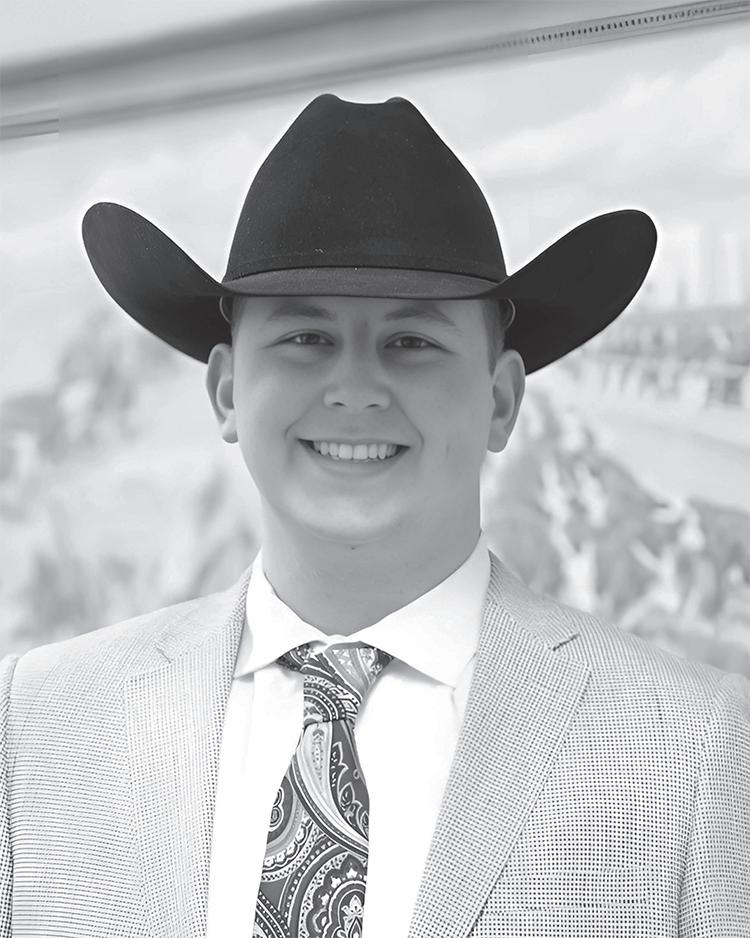
Aegerter served as a beef sales specialist at Boviteq for more than three years and completed two summer internships with the company. He was named the hiring manager for the summer internship program during his tenure and joined the organization’s international committee in 2023, helping oversee the development of opportunities abroad. At Boviteq, he was heavily involved in client recruitment and retention, creating strategies and
American Hereford Association News continued on the next page

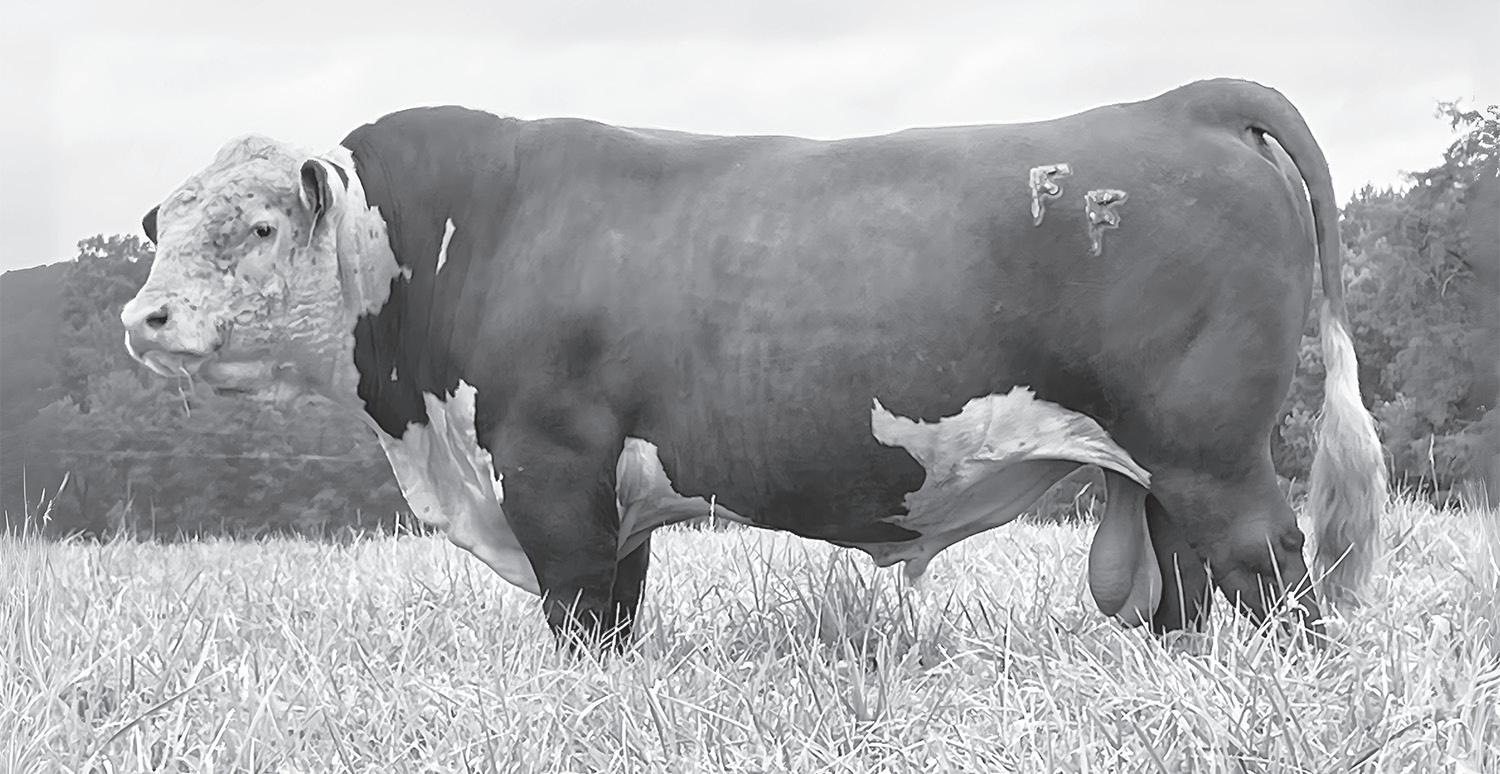
budgets, and traveling to stock shows and trade shows.
He is no stranger to the livestock industry. Aegerter has helped manage Aegerter Cattle Co., a seedstock Shorthorn operation, and Aegerter Marketing Services, a family owned sale management
On November 19–20, Clemson hosted an artificial insemination school at the T. Ed Garrison Arena. We had 16 participants in the intensive two day school. We had producers from all over the state and from a variety of backgrounds and operations.
The class involved presentations and hands-on portions that allowed participants to gain firsthand knowledge of breeding cattle, semen handling, heat detection, and managing cattle for reproduction. Henry Mitchell with Select Sires provided the hands-on instruction and his expertise in setting up cattle for a successful breeding season.
We plan to continue offering these A.I. classes every year. If you are interested in being added to our wait list, please reach out to Lindsey Craig at lcraig@clemson.edu or 864-934-6443.
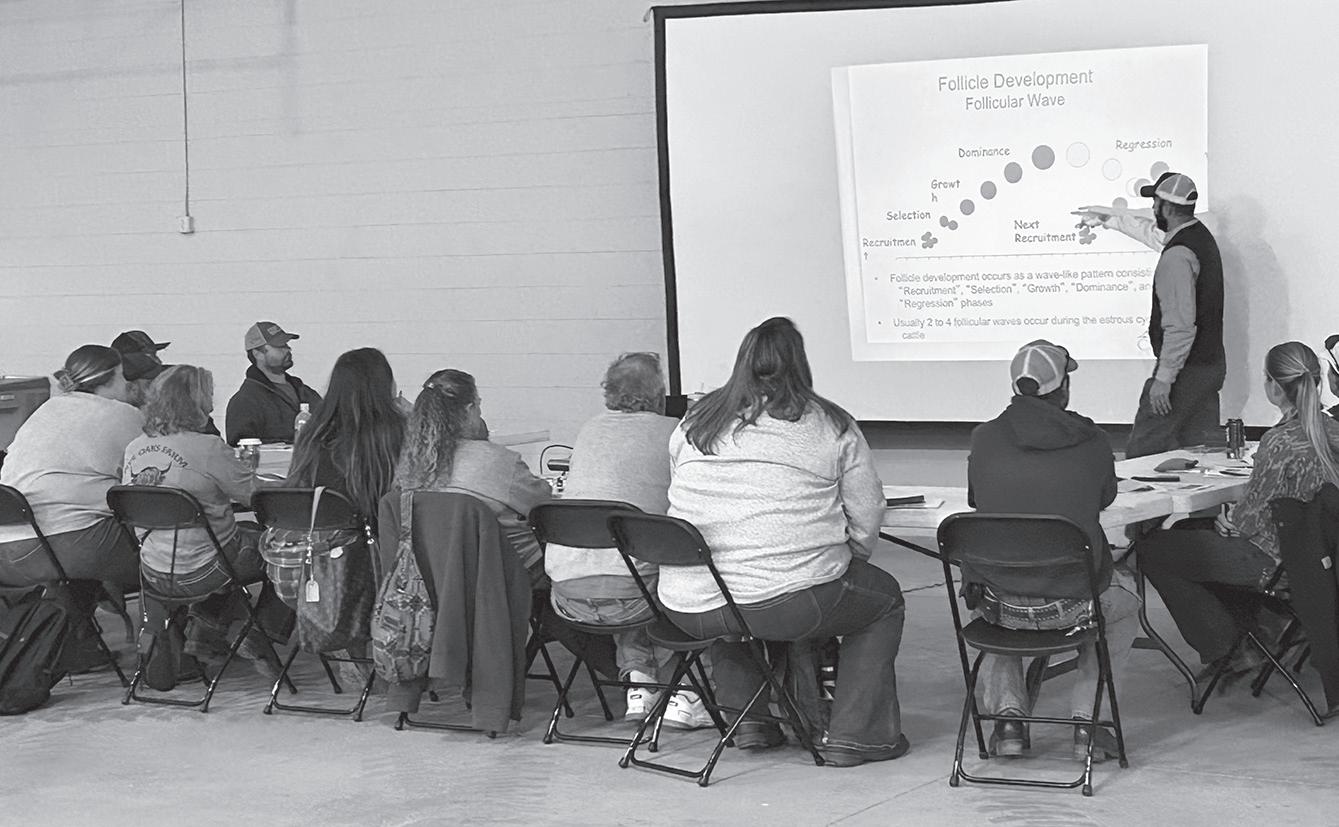
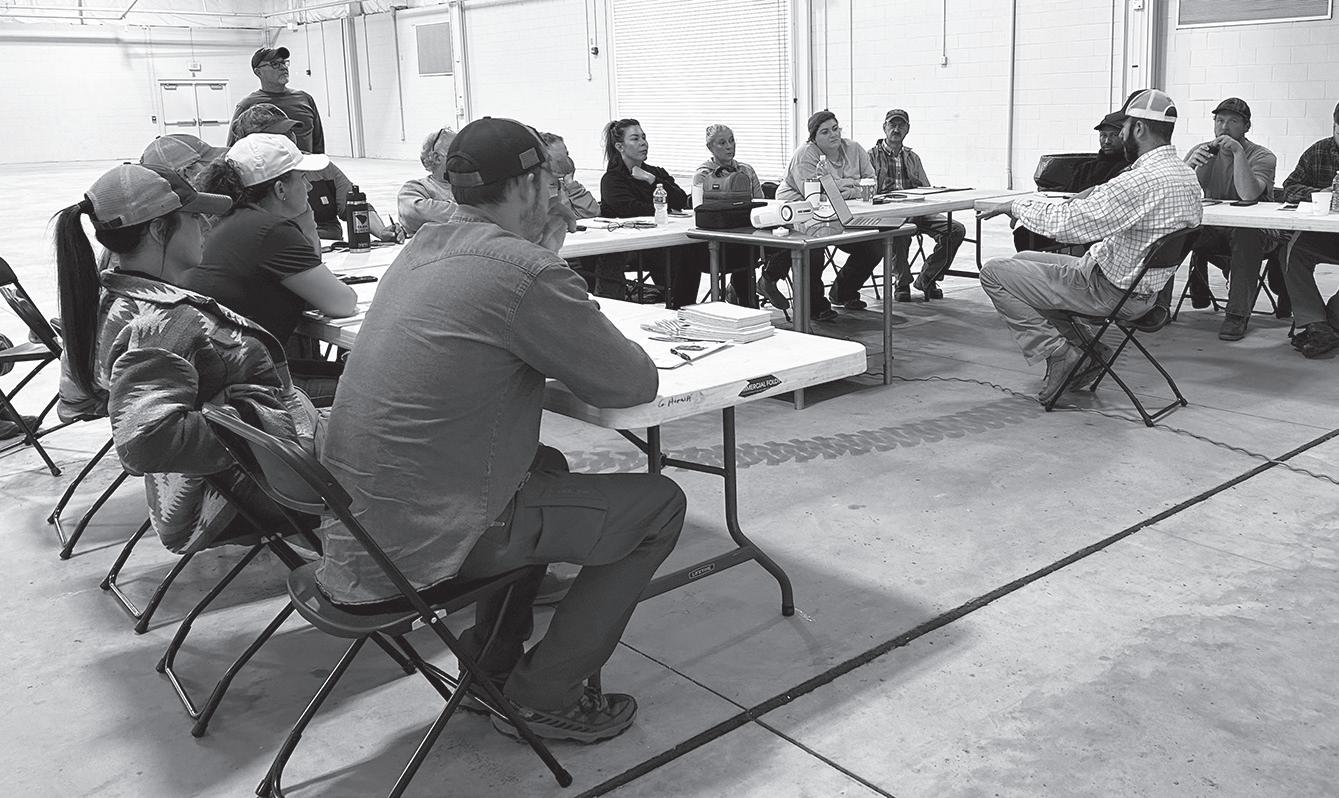
business, since 2014. He also grew up exhibiting cattle and served on the American Junior Shorthorn Association board of directors.
“I am thrilled to join the rich legacy of the AHA, representing a breed with such a historic impact on the cattle industry,” Aegerter says. “The dedication, expertise, and passion of the ranchers and breeders who have built and sustained this historic breed are truly inspiring. I am equally grateful to work alongside such a talented and committed staff, and I look forward to collaborating with this exceptional community to support their efforts and advance the continued success of the Hereford breed.”
In his role as the director of seedstock marketing, Aegerter will serve as the manager of HPI and be responsible for providing strategic, financial, and operational insight while working closely with AHA staff to develop consistent branding across all AHA entities. He will build customer relationships and work with AHA staff to coordinate and manage the National Hereford Sale and other events.
“We are excited to welcome Kane to the team,” says Jack Ward, AHA executive vice president. “Having spent his entire life in the cattle industry, he brings a wealth of knowledge and experience to the position. His understanding of the industry, paired with his background and experience in promotion and marketing, will be an invaluable asset to HPI and the AHA.”
Aegerter can be contacted at kaegerter@hereford.org or 402-6418699.
About the American Hereford Association. AHA, with headquarters in Kansas City, Mo., is one of the largest U.S. beef breed associations. The not-for-profit organization, along with its subsidiaries — Certified Hereford Beef (CHB) LLC, Hereford Publications Inc. (HPI), and American Beef Records Association (ABRA) — provides programs and services for its members and their customers while promoting the Hereford breed and supporting education, youth, and research.

I got a great buy in the Classifieds in The Carolina Cattle Connection!
Check out the expert A.I, superior genetics, fine purebreds and terrific farm supplies offered!

The Union County Performance Tested Bull Sale consignors would like to thank the following bidders and buyers as well as those who attended the 49th Annual Sale held December 7, 2024.
Hayden Allen • Polkton, NC
Bill Caldwell • Chester, SC
David Carter • Concord, NC
Circle A Ranch • Lancaster, SC
Tim Coley • Marshville, NC
Willie K. Crawford • Wadesboro, NC
Sam Davis • Concord, NC
Kenneth Dellinger • Maiden, NC
Jeff Elmore • Claremont, NC
Josh Eudy • Marshville, NC
Caleb Gooden • Chester, SC
Ben Hardin • Columbus, NC
Mike Harkey • Mt Pleasant, NC
Frank Howey • Monroe, NC
Brandon Lee • Peachland, NC
John Lewis • Chester, SC
Chester Lowder • Norwood, NC
Fincher Martin • Wadesboro, NC
Patricia McAulay • Lancaster, SC
McDonald Farms • Blackstock, SC
Joe Medlin • Monroe, NC
M&M Stables • Vale, NC
Mike Preslar • Norwood, NC
Glen Pruitt • Pinnacle, NC
Jose Sanchez • Waxhaw, NC
Neal Russell • Marshville, NC
Ronald Shoffner • Hamptonville, NC
Michael Smith • Oakboro, NC
John Tate • Richburg, SC
Darrell Thomas • Concord, NC
Lynn Thomas • Marshville, NC
T&T Farms • Wadesboro, NC
Bill Walker • Olin, NC
David Wheeler • Gaffney, SC 4J Cattle Company • Shelby, NC
M&M Stables • Frank Howey Ronald Shoffner
We invite you to join this list of performance oriented progressive producers in 2025!
Annual Union
December 6, 2025 • Simpson Special

Information is required by (7 CRF 1260.201). Failure to report can result in a fine. Information is held confidential (7 CRF 1260.203).
Today’s Date: ________________
Seller’s Name: ____________________________
Address:

Buyer’s Name: ____________________________
Address:
City: ________________ State: ____ Zip: City: ________________ State: ____ Zip: ______
Seller’s Signature: _________________________
Buyer’s Signature: _________________________
Both the seller & the buyer are responsible for making sure that the $1.50 per head assessment is collected and remitted to the Beef Promotion & Research Board.
Total Number of Cattle Sold: ___________________ x $1.50 Per Head = $
* State of Origin of Cattle: * If the cattle purch ased came from another state within the last 30 days, indicate from which state the cattle were purchased.
We are excited to introduce Paul Maulsby, who took the reins as Executive Vice President of the American Brahman Breeders Association (ABBA) on October 15, 2024. Paul brings a wealth of experience, passion, and a vision for the future of the Brahman breed. Let’s dive into his background and plans for ABBA.
Background & Experience – Paul’s journey in the cattle industry began on his family’s commercial ranch in the high sierras of New Mexico. Growing up immersed in ranch life gave him a deep understanding of what it takes to succeed in the cattle business. He furthered his knowledge with a degree in animal science and a minor in business from Oklahoma State University, where he excelled in livestock and meats judging.
After graduation, Paul managed a purebred and commercial cattle operation, transforming it into a nationally competitive program. Later, he served as the director of beef cattle operations at Texas A&M University, where he managed herds, taught undergraduates, organized major programs, and completed a master’s degree focusing on stress in Bos Indicus cross cattle.
In addition to his roles at Texas A&M, Paul has also been involved with the Texas Junior Livestock Association, overseeing membership, programs, and shows. Throughout his career, he has maintained a consulting business that has guided numerous commercial and purebred operations to success.
A Passion for the Brahman Breed – Paul’s first exposure to Brahman cattle came early when his family grew out Brahman and Brahman cross yearlings. He quickly saw their performance and efficiency, sparking a lifelong interest. Years later, at Texas A&M, he saw firsthand the breed’s influence in the Gulf Coast’s commercial cattle sector, where Brahman cattle consistently excelled.
Paul has judged Brahman shows across the U.S. for over 20 years, including the International Brahman Show. “The more I learned, the more I admired their quality and importance,” he shares. “I’m excited to be a part of this breed’s future and to help shape its impact.”
Vision for ABBA – Paul is enthusiastic about his new role and the opportunity to make a difference. “Every stage of my career has led me to this point. I am committed to making a positive impact for the breed and our members,” he says.
In the short term, Paul plans to listen, observe, and evaluate the strengths and areas for improvement within ABBA. “My goal is to ensure that all our members have the tools they need to succeed with Brahman cattle.” Long term, he envisions ABBA being recognized as a leader both domestically and internationally, highlighting Brahman cattle as a key player in the global beef industry.
Advancing Brahman Cattle in the U.S. and Beyond – Paul sees great potential for Brahman cattle, not just in the U.S. but worldwide. Domestically, he believes ABBA can do more to collaborate with other breed associations, especially those in the Bos Taurus sector, to promote the value of Brahman genetics in crossbreeding programs.
“Brahman cattle create the ultimate crossbreed female of the south and deliver high performing offspring that make a difference for producers,” he explains. Internationally, he is committed to strengthening ABBA’s global presence by advancing research,
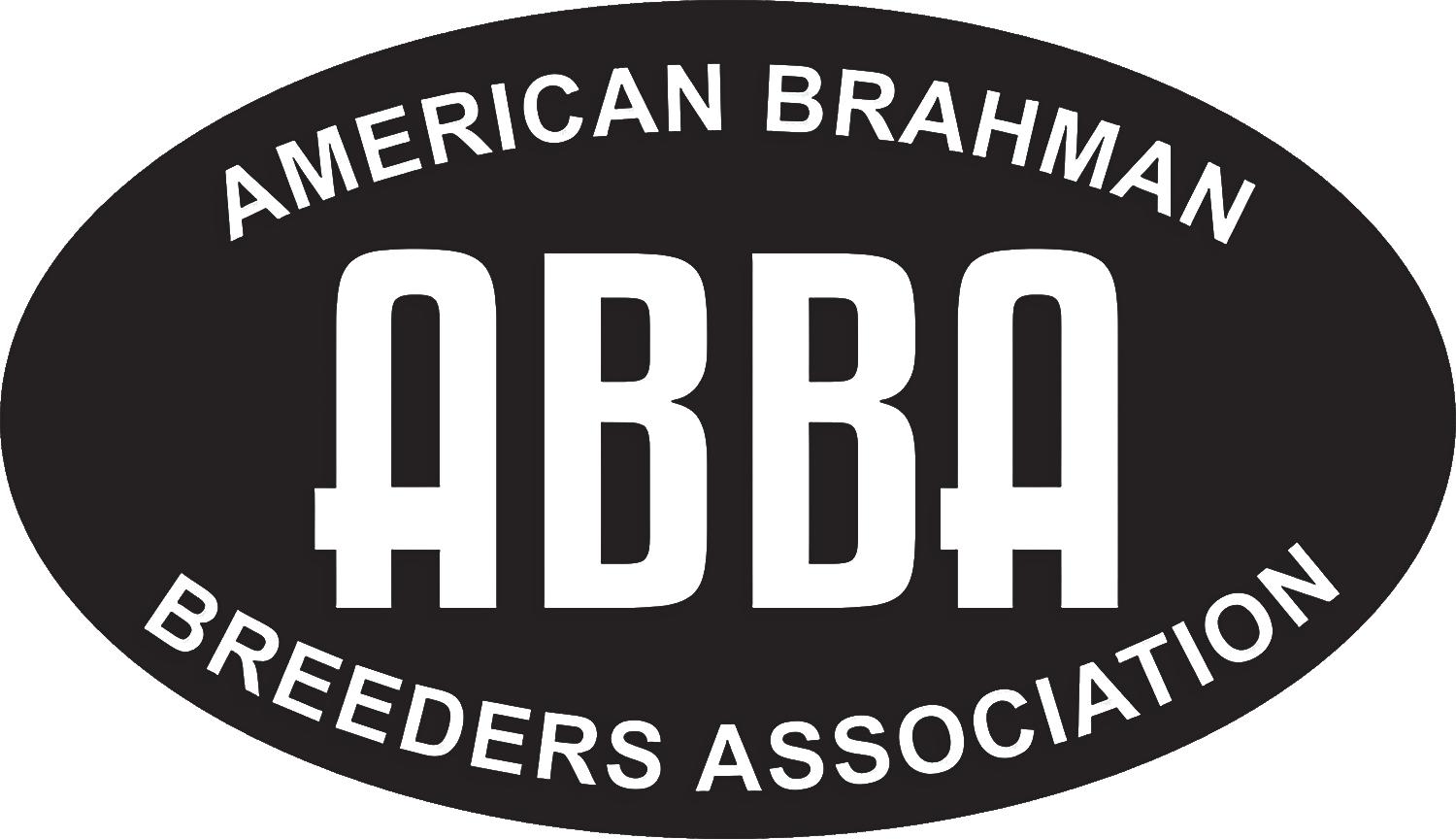
improving genetic quality, and positioning Brahmans as an essential breed in cattle production.
Personal Insights – Paul’s diverse career has equipped him with the skills needed to drive ABBA forward. “My experience ranges from managing large scale cattle operations to teaching, developing programs, and consulting with cattle owners of all sizes. This background will help me understand our members’ needs while growing the breed’s global presence,” he says.
Reflecting on his journey, Paul shares, “When I was asked as an undergraduate what my ultimate job would be, I said I wanted to lead a breed association. It’s humbling and exciting to be in this role now.”
Transition & Future Outlook – Paul acknowledges that change isn’t easy, but he’s committed to making the transition smooth for ABBA members, staff, and the board. “I will always listen objectively and make fair, informed decisions to guide ABBA in a positive direction.”
He credits mentors like Dr. Chris Skaggs, Dr. Larry Boleman, and his father, Richard Maulsby, for shaping his career. Paul is excited to explore new research opportunities and plans to make the most of his engagement with the worldwide Brahman community at the 2024 World Brahman Congress in Bryan, Texas.
Looking Ahead: Opportunities for the Brahman Breed – Paul believes the Brahman breed is a “must breed” on the global stage due to its adaptability, versatility, and maternal strengths. “It’s my mission to ensure the American Brahman remains a leader in the beef industry. We need to remind everyone that Brahman genetics are essential, especially in crossbreeding.”
Globally, Paul sees opportunities for ABBA to collaborate on genetic improvements, assist with business models for registrations, and facilitate research partnerships. “We need to promote our breed’s strengths on a larger scale, both at home and internationally.”
Paul’s experience, passion, and vision are set to take ABBA and the Brahman breed to new heights. We’re excited to see what the future holds under his leadership!
About the American Brahman Breeders Association. The American Brahman Breeders Association is the world registry for Brahman cattle, the #1 beef breed for efficiency, hybrid vigor, and environmental adaptability. ABBA provides an array of member services, educational opportunities, and a wide array of programs to assist the profitability of its members. For more information about the American Brahman breed or the many opportunities offered by the ABBA, visit www.brahman.org
By PAUL MAULSBY, American Brahman Breeders Association
Dear Members of the American Brahman Breeders Association,
It is with great honor and excitement that I reach out to you after my first few months as Executive Vice President of the American Brahman Breeders Association. For those who may not know me, my name is Paul Maulsby. Throughout my career, I have been deeply immersed in the cattle industry, working in the purebred and

Virginia Herd Health Management Services, PC
In Vitro Fertilization (IVF) & Embryo Transfer (ET)
* On-farm aspiration of oocytes via Ultrasound Guided Ovum Pick-Up (OPU).
* Embyos come back in 8 days for placement or direct thaw freezing on-farm.
* Can do on donors aged 8 months and older, up to 120-150 days pregnant Doesn’t interfere with pregnancy.
* Pregnant cows work really well, so the cow doesn’t get out of her production group.
* Can do a donor every 2 weeks.
* NOW AVAILABLE * Small Ruminant Laparoscopic Artificial Insemination (AI) & Embryo Transfer (ET)
Oocytes fertilized at BoviteqUSA in Madison, Wisconsin. www.boviteq.com

For more information, contact: PAT COMYN, DVM
P.O. Box 555 Madison, Va. 22727 540-829-3625 (cell) • 540-948-5238 (office/fax) pcomyn@verizon.net
Visit us online at www.vhhms.com.
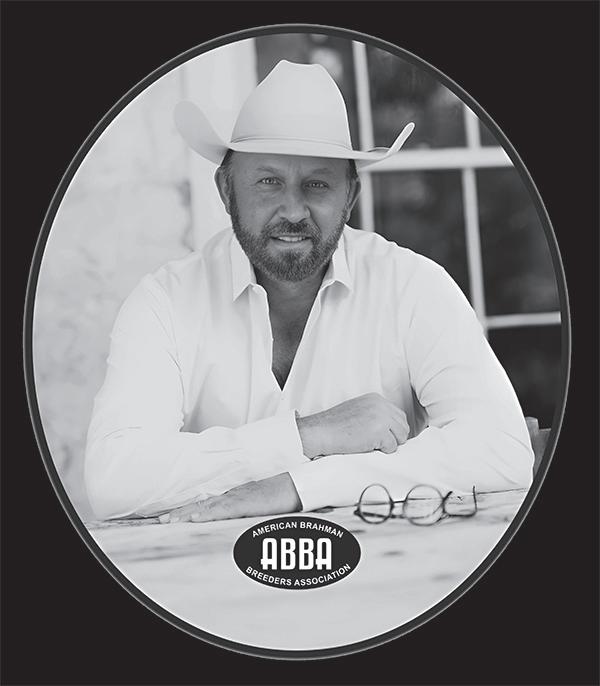
commercial sectors, academia, and youth organizations. I aim to bring my well rounded experience to the ABBA, working diligently for the success of this association. Representing the ABBA is both a privilege and a responsibility that I deeply value.
As part of my vision for this role, I am committed to enhancing communication and fostering relationships across our community. To this end, I will be providing monthly newsletters to the membership, as well as updates to the Board of Directors, the International Community, and the AJBBA. These updates will share news, research, and insights into the cattle industry, with the goal of fostering stronger collaboration on all fronts. I welcome your feedback and engagement as we work together to advance our shared passion for Brahman cattle.
One of my first major experiences in this role was being part of the team that hosted the 2024 World Brahman Congress in Bryan, Texas. This event underscored the global impact of the Brahman breed and the importance of thinking on a larger scale. I had the privilege of meeting passionate breeders and advocates from around the world. Listening to their stories highlighted the shared challenges we all face and the vast opportunities we can embrace as a global cattle community.
This experience reinforced the vital role Brahman cattle play in shaping the future of beef production — a symbol of resilience, adaptability, and a foundation for innovation and growth.
Domestically, I aim to expand networks and collaborations with various sectors of the cattle industry to ensure Brahman genetics are part of the conversation and the first choice in creating crossbred cattle. The unparalleled value of Brahman genetics in crossbreeding programs is well documented and widely experienced. Brahman cattle produce the ultimate crossbred female for the Southern United States, but I believe there is significant growth potential across all regions. Commercial females with any percentage of Brahman influence are valuable and thrive in diverse environments, not just tropical ones.
Representing all segments equally is imperative for success and growth. It takes contributions from the purebred, commercial, research, and youth sectors to make an association thrive. Diversity is essential for success in the cattle industry, and I want to ensure
that the ABBA provides the tools for all to succeed, regardless of the sector their operations represent.
Internationally, my commitment includes:
• Supporting advanced research initiatives.
• Enhancing genetic quality to meet global demands.
• Solidifying Brahman as a cornerstone breed in global cattle production.
Recognizing the increasing importance of DNA for parentage verification and genetic markers, ABBA is devoted to assisting communities in navigating this process. We encourage international
The 2024-2025 Clemson Bull Test has wrapped up, and the bulls have been moved out to pasture to continue developing and preparing for the bull sale on February 1. The bulls continued to impress through the final weigh day. The final 28 day weigh period had an average daily gain of 4.8 lbs for the entire group. This brings our final average daily gain to 4.2 lbs for the full 84 day test.
The quality of bulls continues to impress us, and we are excited about the upcoming sale. We currently have black Angus, Red Angus, Hereford, Simmental, SimAngus, Balancer, and Ultrablack bulls in our test. The bulls will go through breeding soundness exams and videos will be ready early this month. Our catalog is in development now and will soon be available online. All information can be found at the Clemson Bull Test website at www.clemson.edu/extension/ livestock/programs/cattle/clemson-bull-test.html.
If you are interested in receiving a catalog, please reach out to Lindsey Craig at lcraig@clemson.edu or 864-934-6443.

breeders to utilize reciprocal registration services with ABBA to validate their cattle in the ABBA Herd Book, strengthening global pedigrees and ensuring accurate records for future generations.
Office Communication Enhancements: To improve efficiency and professionalism, we are implementing a digital answering system to route calls directly to the appropriate personnel or department when someone cannot be reached. We experience high call volumes each day, and I encourage you to leave a message so we can get back to you in order of the queue. This system is expected to be in place by January 1.
Website Revamp: We are in the initial stages of the ABBA website revamp. The new website is slated to launch by March 1 and will serve as a hub for information and resources. Up-to-date information will be shared regularly as part of our commitment to provide news and tools for our membership.
DNA Information and Updates: The increasing demand for DNA testing across all breeds has presented challenges with turnaround times due to larger sample volumes for all testing labs. We encourage you to plan accordingly if deadlines are imperative.
In response:
• Zoetis and Neogen are implementing internal improvements, and we are collaborating to streamline operations for our members.
• Trainings and conference calls with Zoetis and Neogen are scheduled to aid in the sharing of information and implementation.
• Training resources and detailed information will be added to the new website as a tool for members to reference.
Year 3 (2025) of the 5 Year DNA Plan:
• All A.I. sires, walking sires (sires used to cover cows in pastures), and donor dams producing calves in 2025 must have a genotype on file prior to calf registration.
• All A.I./ET calves participating in ABBA sponsored events must have a DNA profile on file.
2025 Houston Stock Show: The Houston Livestock Show and Rodeo is a global highlight for the ABBA and the Brahman community. This year’s event will take place March 3–8 in Houston, Texas. This show offers a unique opportunity to showcase the excellence of Brahman cattle while celebrating the breed’s international impact. It is more than just a show; it’s a platform for annual meetings, elections, and collaborations with breeders and the international community.
I look forward to meeting many of you there and strengthening the relationships that unite our global Brahman community.
Looking Ahead– As I settle into this role, I am inspired by the passion, dedication, and innovation I have witnessed across our global community. Together, we can navigate industry challenges, maximize the strengths of Brahman genetics, and ensure that this breed remains essential to sustainable cattle production worldwide.
Thank you for the warm welcome I have received thus far. I am excited to build connections, share knowledge, and work alongside you to promote and advance the Brahman breed.
*Read the ABBA News section on the next page for a more in depth introduction of Paul Maulsby as the new Executive Vice President of the American Brahman Breeders Association!

FDA, USDA Studies. NMPF staff is providing key input into federal mitigation efforts and leading farmer-dairy response as the H5N1 situation evolves. NMPF has participated in federally led planning groups that have been meeting daily for months, and the NCIMS Executive Board is heavily engaged with those planning groups as well.
FDA has finished its milk silo testing study, which began October 28. Through the six week study, FDA has collected samples from raw milk storage silos at dairy processing facilities in participating states. This voluntary, double blind study is designed for data gathering purposes only, with no way to trace back to individual farms. In the first three weeks of FDA’s study, only one sample tested positive for H5N1.
USDA hopes to begin its monitoring effort now that FDA’s study has concluded. The USDA monitoring effort is different from FDA’s and will be ongoing. Under USDA’s monitoring effort, samples will be taken from each raw milk silo at processing locations on a periodic basis. When a silo is determined to be positive, state animal health officials will be notified, who will, in turn, assist farms associated with the positive sample.
Several states have implemented their own programs with



mandatory bulk testing of milk to reduce the spread of H5N1, including California, Colorado, Michigan, Oklahoma, and Pennsylvania. These individual state testing programs are separate from the testing conducted by FDA and the upcoming USDA testing program.
The Pennsylvania Department of Agriculture announced on November 20 that it would begin mandatory testing of milk from Pennsylvania dairy farms. Though no cases of H5N1 have been detected in Pennsylvania cattle, the commonwealth is implementing this program to help with early detection.
Any cooperative or milk processor marketing milk from a Pennsylvania dairy farm must collect samples of raw milk taken from each compartment of each milk tanker from every pickup route once every 14 days to ensure that all farms supplying milk to those plants are covered. Samples must be taken by trained, certified personnel and submitted to a Pennsylvania Animal Diagnostic Laboratory System lab within 48 hours of collection. All testing will be handled with no out-ofpocket cost to the farmer, milk processor, or hauler. If milk from a tanker truck tests positive for H5N1, the Pennsylvania Department of Agriculture will work with the processor to determine which farms supplied milk to that tanker. From there, the Bureau of Animal Health will take samples from individual farms to determine the source and work with those farmers on biosecurity measures to prevent further spread.
FARM Showcases Sustainability Progress. The National Dairy Farmers Assuring Responsible Management (FARM) Program highlighted the launch of FARM Environmental Stewardship Version 3 at the Fall Meeting of the Dairy Sustainability Alliance, highlighting progress in dairy sustainability and stewardship.
Nicole Ayache, NMPF’s chief sustainability officer, took the main stage to talk about the recent kick-off and its incorporation of the Ruminant Farm System (RuFaS) model, a whole farm model that simulates dairy farm production and environmental impact. Vermont dairy farmer Brian McGarry joined Ayache, sharing insights and opportunities for farmers and their cooperatives to evaluate potential technologies and measure progress.
FARM’s Senior Director of Animal Care, Beverly Hampton Phifer, led animal care evaluators through Version 5 training in Green Bay, WI. Evaluators must be recertified every updated version cycle and attend a recalibration training annually.
NMPF Builds on Strong China Relationship. NMPF Executive Vice President for Policy Development & Strategy Jaime Castaneda traveled to Shanghai and Beijing the week of November 4 as part of NMPF and the U.S. Dairy Export Council’s ongoing efforts to grow U.S. dairy’s market share in China.
Joined by USDEC President and CEO Krysta Harden, Castaneda presented at the China International Import Expo and the Global
Dairy Conference, highlighting U.S. dairy’s commitment to being a reliable supplier of high quality, safe, and sustainable products.
While in China, Castaneda and Harden delivered a new proposal to lower China’s most favored nation tariffs for cheese to Madam Yu, the Vice President of the China Chamber of Commerce of Foodstuffs and Native Produce. Like U.S. dairy’s successful tariff reduction effort in 2017, the proposal would improve market access for U.S. dairy producers to the top dairy importing country in the world.
The trip to China is just the latest NMPF and USDEC effort to grow the dairy relationship between the two countries. In September, Castaneda spoke at a U.S.-China Bilateral Agriculture Industry Roundtable on the opportunities for American ag companies in China. That came on the heels of a USDEC-USDA Foreign Agricultural Service business development mission to Beijing and Shanghai in June, which helped to fortify relationships between U.S. dairy suppliers and Chinese buyers and strengthen ties with Chinese trade associations and government agencies.
NMPF Statement on Dietary Guidelines for American Advisory Committee Scientific Report. From NMPF President & CEO Gregg Doud:
“NMPF thanks the Dietary Guidelines Advisory Committee for recognizing dairy’s important role in a healthy diet and its continued recommendation of three servings of dairy for Americans two years and older.
“Throughout this process, the committee looked carefully at the nutrition dairy products provide. The committee’s scientific review showed that reducing or eliminating dairy from the diet leads to undernourishment in key nutrients for millions of Americans. The review also made clear that expanding the food group to include additional plant based alternative beverages outside of fortified soy is not supported by scientific evidence. Specifically, the committee noted, “The direct substitution of plant based milk alternatives for cow’s milk within the patterns may introduce unintended consequences for meeting other nutrient recommendations and may vary by product selected.” This is especially important as the dietary guidelines greatly affect the food options available to children through school meals and other nutrition programs.
“NMPF also thanks the committee for acknowledging that dairy is an equitable option that provides accessible and affordable sources of essential nutrients to everyone and that lactose free and lactose reduced dairy foods can provide those same nutrients for people who may not be able to tolerate regular dairy.
“We are disappointed that the committee only recommends consumption of unflavored milk, especially as they acknowledged that flavored milk contains beneficial nutrients and did not explicitly conclude any connection between flavored milk consumption and obesity risk.
“It is reassuring that the committee came to multiple conclusions supporting dairy that are backed by decades of scientific evidence. We encourage the agencies to look further into recent science supporting the benefits of whole milk in the diet. The committee found evidence that substituting higher fat dairy with lower fat dairy showed no association with cardiovascular disease morbidity, and it also found evidence of positive benefits for growth and bone health specifically related to whole milk consumption by young children. We see these conclusions as positive steps. We will continue to advocate for consideration of full fat dairy in the final dietary guidelines expected to be released next year.”
About the National Milk Producer’s Federation. NMPF was organized in 1916 to provide a forum for dairy producers and the cooperatives they own to participate in public policy discussions. NMPF advocates policies to Congress, U.S. and foreign government agencies, industry organizations, the news media, and the public.
We use our unique resources to harness the ever changing climate in the politics and marketing of milk and dairy products from farm to table to promote the economic well being of dairy producers and their cooperatives through coordinated industry efforts.
NMPF addresses policies concerning milk pricing, domestic and international market development, agriculture credit and taxation, environmental issues, food safety and health, animal welfare, product standards and labeling, and research and biotechnology.
Our mission is to foster an economic and political climate in which dairy producers and the cooperatives they own can thrive and prosper. Achieving such success assures consumers of adequate supplies of wholesome and nutritious dairy products at affordable prices.
This helps improve the bottom line of the associate members who provide services to dairy producers and cooperatives that they represent. For more information, visit www.nmpf.org.
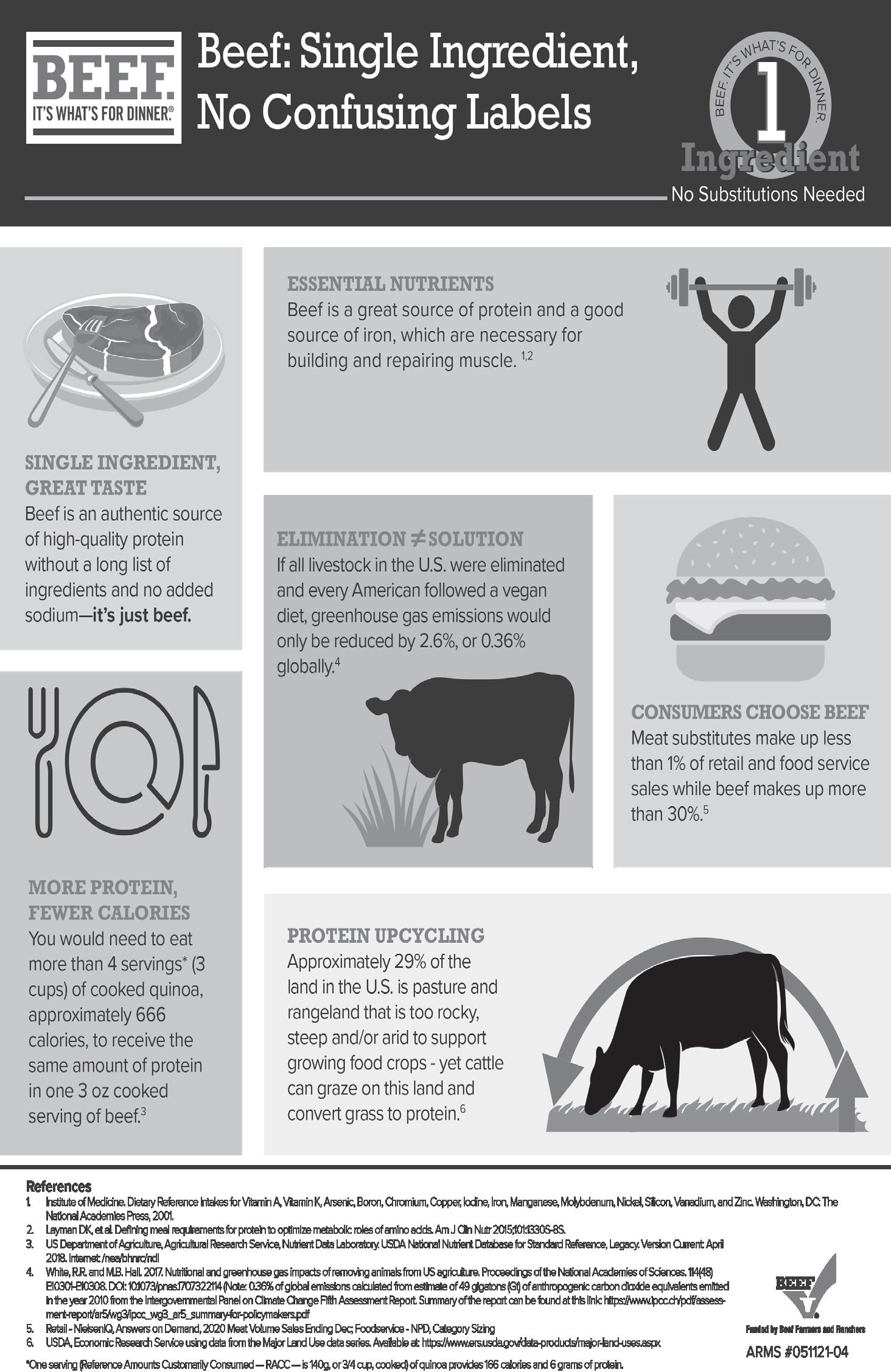
By BRYAN SANDERSON, Alltech
Weaning can be stressful for both calves and producers. A good diet can help, supporting the calves’ growth and productivity throughout the feeding period. Importantly, such a diet can also guard against illness and bacterial infection, both of which can gain a toehold at this transitional time.
Respiratory disease is the most common ailment during the weaning period. For example, a calf is most susceptible to bovine respiratory disease (BRD) during its first four weeks post weaning. BRD costs the beef industry over $1 billion annually, and prevention is key in reducing treatment costs and preventing performance losses.
Gut health is crucial – Since an animal’s digestive tract contains approximately 70 percent of its entire immune system, rumen development and gut health should be at the top of the list when weaning and receiving calves and getting them started on feed.
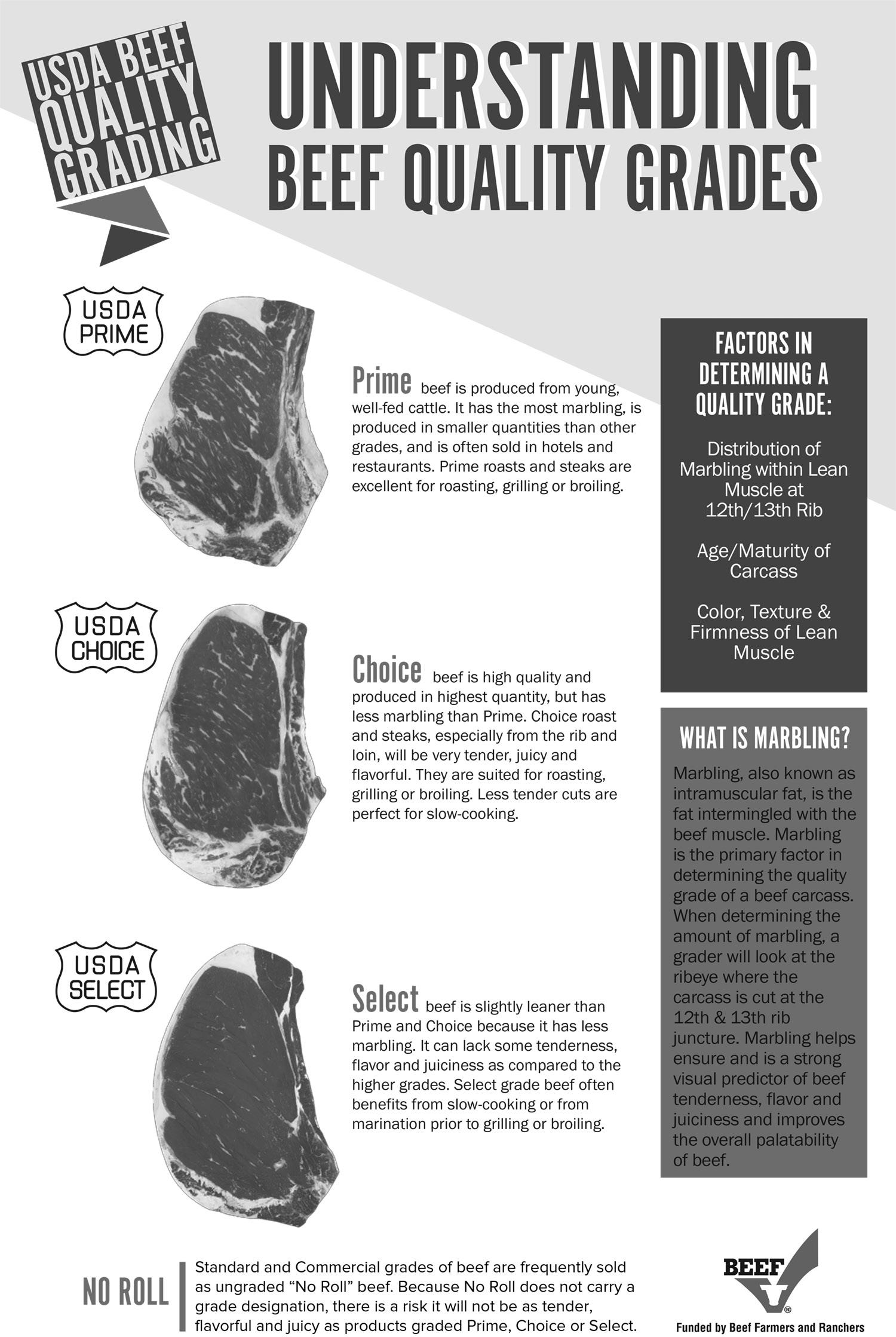
Gut health refers to an animal’s ability to efficiently absorb and utilize nutrients and to keep harmful microbes and pathogens contained. If the lining, or barrier, of the digestive tract is weak, these microbes and pathogens can escape into the rest of the body, causing numerous diseases, including BRD.
Because cattle stressors — not only weaning itself, but transportation, commingling, changes in diet, and diet restriction — can harm the gut lining, continuous support for gut health is essential. Feeding strategies that focus on this are vital to increasing performance and reducing treatment costs, leading to more profitable production.
Vitamins and minerals – Many good articles and blogs are available to provide tips for successfully weaning calves and adapting them to feed. A good rule of thumb is that calves should be consuming 2.5–3 percent (on a 100% dry matter basis) of their body weight within the first 30 days post weaning. Gradual increases in feed quantity, along with gradual diet or ingredient changes, will aid in the proper adaptation of rumen microflora, improving gut health.
However, feed quantity is only part of the puzzle. Microbes within the digestive tract have vitamin and mineral requirements for proper function and nutrient digestion. Supplementing these in the weaning ration is crucial to gut health, not only supporting nutrient uptake overall but enhancing immunity and improving response to vaccines and treatments.
Vitamin and mineral supplements vary widely and should be chosen carefully for maximum benefit. For example, organic trace minerals are considerably more bioavailable to calves during weaning, which aids in nutrient absorption, bolsters gut health, and reduces harmful excretions of excess minerals into the environment.
Beneficial bacteria – Prebiotics and probiotics are also gaining ground in today’s feeding and supplementation programs. Both are excellent options to improve gut health at weaning.
Prebiotics are non-digestible feed ingredients that selectively stimulate the growth and activity of bacteria within the digestive tract, providing “food” for the beneficial microbes already existing there. Research shows that prebiotics enhance rumen fermentation, improve digestion, aid in nutrient absorption, and contribute to immune system development.
Probiotics are specific types of live microorganisms, including bacteria from the Bacillus, Lactobacillus, Bifidobacterium, and Enterococcus groups, as well as mannan oligosaccharides (MOS) derived from yeasts such as Saccharomyces cerevisiae . They help shift the gut microbiome in favor of helpful microbes that are known to improve health and performance. Probiotics also naturally produce metabolites such as short chain fatty acids (SCFAs), vitamins, enzymes, and antimicrobial compounds, which play important roles in building gut health and integrity and reducing harmful inflammation.
Weaning is an especially tricky time, but a smart diet strategy can turn it into an opportunity. By providing good nutrition to your calves, you can promote growth and productivity, prevent illness and infection, and maximize profitability.

By GREGG DOUD, National Milk Producers Federation
Voters spoke clearly on November 5 — they want change in Washington. President-elect Donald Trump’s convincing victory, combined with Republican control of both houses of Congress, provides a clear path for important changes in a wide range of policy, both domestic and foreign.
It’s only natural during a time like this to begin playing whatifs, taking past statements, genuine policy concerns, and anxieties about the road ahead and mixing them into reactions that may or may not be useful as developments occur. The reality is that much remains unknown about what lies ahead in Washington. For dairy, like everyone else, the prudent path is to focus on what’s known, remember first principles, and keep energy from becoming exhausted over speculations that, at this moment, are only that — speculation.
One example of focusing on what’s real is tax policy. Current tax provisions enacted by Congress in 2017 are due to expire at the end of 2025. Congress will need to do something to keep those provisions from expiring. That’s a fact. Several of those provisions, such as the Section 199A Qualified Business Income Deduction, are important to dairy farmers and the cooperatives they own. We at NMPF are already engaged in conversations on policy that will help our members and are well positioned to advance this discussion in the year ahead.
The farm bill is another example. With current law already lapsed, an extension of the 2018 Farm Bill will pass this year to tee up a new law in 2025. We are urging lawmakers to make either type of legislation a vehicle to advance portions of our Federal Milk Marketing Order modernization plan that require congressional action, such as a mandatory plant cost study to help inform future discussions about a
proper make allowance. Regardless of what farm bill ultimately takes shape, we know there will be one — and we are prepared to make it work for dairy.
Along with the certainties, other issues that are important to dairy — and dominate headlines — have less certain paths. In these cases, it’s important to know where we stand and be prepared to inform and educate policymakers as always. But beyond that, the best course is to engage with actual events rather than the latest, breathless, but ultimately questionable, narrative.
We know, for example, that foreign workers are critical to the success of U.S. dairy and that we will work closely with members of Congress and federal officials to show the importance of those workers to the dairy industry, farm communities, and food security. We also know that we support long standing Food and Drug Administration policy on restricting the sale of raw milk due to public health and consumer confidence risks, and that we will work productively with anyone in federal leadership on these concerns. But neither of those issues — to cite only those two — has fully taken shape. Speculation makes good sound bites but may not encourage good, sound policy in the long run.
And good, sound policy is what we need to be about.
So, while some are excited — and some are anxious — about what may lie ahead in Washington in the year ahead, a deep breath and careful consideration are warranted. United States dairy, agriculture, and the nation are on the first steps of a journey. Let’s choose them wisely.


2024 Checkoff Highlights Drive Sales, Trust, Innovation for Dairy Industry. Dairy checkoff initiatives of 2024 successfully increased dairy access in schools, expanded market share for U.S. dairy products domestically and internationally, and supported the industry’s longstanding commitment to sustainability on behalf of U.S. dairy farmers and importers.
Dairy Management Inc. (DMI) President and CEO Barbara O’Brien pointed to a collective effort of national and local teams that delivered results this year.
“The checkoff is working, and we have achieved a lot in building the next chapter of our history,” said O’Brien, who outlined “now, next, and future” checkoff strategies at this year’s joint annual meeting. “This success was made possible by the dedication and hard work of everyone across the checkoff federation. This was a strong year of results as we continue to work with and through others to catalyze action against our trust and sales building priorities.”
Checkoff led highlights from 2024 include:
Increasing Dairy Access in Schools – A partnership provided hot chocolate milk to students during a pilot with Chartwells K12, which serves more than two million meals daily at 700 school districts. The National Dairy Council (NDC) and Chartwells launched the Hot Chocolate Milk program in 58 schools, which features hot chocolate milk — with toppings such as cinnamon and peppermint — served during breakfast and lunch.
Another school pilot offered lactose free chocolate milk and increased consumption and reached students who weren’t drinking milk because of real or perceived lactose intolerance. NDC and American Dairy Association Mideast worked with Cincinnati Public Schools (CPS) to offer the country’s first single serve, lactose free chocolate milk program. When compared to the rest of the district, the pilot schools experienced a 16 percent increase in milk consumption. The pilot was so successful that CPS is offering lactose free chocolate milk in all schools.
Partnerships Growing Sales
– The checkoff’s longstanding strategy of working with and through powerful partners
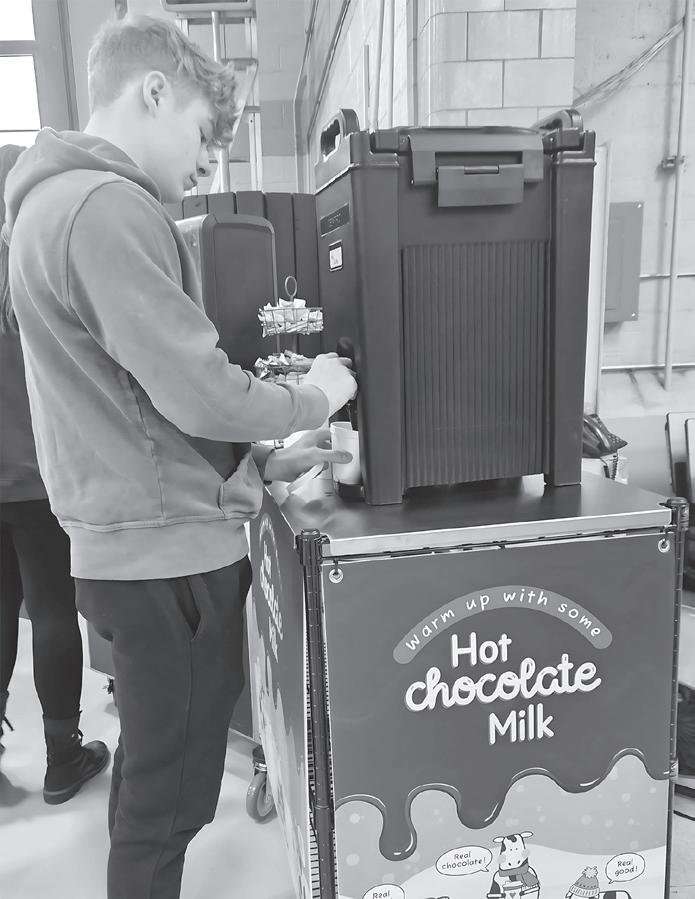
continues to deliver results. For example, the checkoff supported Domino’s with its launch of cheese centric items, including the New York Style Pizza and five cheese mac and cheese.
This strategy of working with pizza partners also continues to find success internationally, a key tactic to reach the 95 percent of the world’s population that lives outside the United States. DMI’s partnership with Pizza Hut Japan led to the chain announcing a permanent 30 percent increase in cheese use on all pizzas.
Other partnership innovations included working with General Mills to create YoBark, a yogurt based snack designed to give families a tasty option and expand yogurt’s presence in the snacking category.
Sharing the Science of Dairy – One emerging research area is dairy’s impact on the first 1,000 days of life — encompassing pregnancy through a child’s second birthday. This is a critical period for brain development, which is impacted by nutrition, and dairy can significantly support cognitive development, thanks to nutrients including iodine and choline. Checkoff organizations nationally and locally teamed with MilkPEP to elevate awareness and understanding of dairy’s contributions with expecting mothers and parents seeking nutrition guidance.
NDC also showed its ability to convene thought leaders when it hosted more than 100 national and international health and wellness experts for a two day scientific conference addressing the dairy matrix, the concept of exploring the unique nutrient, non-nutrient, and molecular compositions of dairy foods. Among the meeting attendees were representatives and speakers from major health professional organizations, leading universities, and organizations.
Supporting Dairy’s Sustainability Legacy – The checkoff is focused on deepening its knowledge and attracting the investment in research on practices and technologies that work from a mitigation standpoint, and tools and resources to support adoption. DMI is tracking more than $29 million in additional investment from partners for pilot projects and research that empower sustainability action. One example is the Greener Cattle Initiative, a collaboration that announced a second round, $5 million funding for enteric methane mitigation research.
The checkoff launched the Dairy Conservation Navigator, a resource hub designed to provide farm advisors, stakeholders, and conservation professionals with science-based information on sustainable practices and technologies. Checkoff scientists and others developed a list of more than 80 practices that have a positive environmental benefit.
Checkoff Sparking Innovation – The checkoff showcased dairy innovation and its nutrition package to 70,000 people attending Natural Products Expo West, the leading trade show in the natural, organic, and healthy products industry. DMI unveiled its www. InnovateWithDairy.com tool, which serves as a one stop shop for anyone seeking information about dairy innovation.
DMI also kept its focus on future innovators with its New Product Competition. A University of Minnesota team took first with a creamy Norwegian style, whey based cheese spread.
More checkoff results, including financial reports, can be found at www.dairycheckoff.com
Dairy Sustainability Alliance Meeting Highlights Innovations Driving Industry Progress. The 2024 Fall Meeting of the Dairy Sustainability Alliance emphasized the industry’s collective efforts to meet sustainability targets through the adoption of new technologies, best practices, and measurement tools. The meeting brought together
more than 350 representatives from the dairy value chain, including nearly 40 dairy farmers, to collaborate on advancing sustainability across the industry.
The Alliance is a multi-stakeholder member initiative led by the checkoff founded Innovation Center for U.S. Dairy. With more than 200 companies and organizations, including farmers, the Alliance provides a platform for sharing ideas, tackling common challenges, and accelerating progress on sustainability goals.
Sarah Hanson, executive lead for the Innovation Center for U.S. Dairy, underscored the importance of collaboration to advance solutions for a more sustainable world and a thriving U.S. dairy community.
“That mission is founded on the premise that we are stronger together,” Hanson said. “And it comes to life through the leadership of our board, our committees, and, most importantly, through this Dairy Sustainability Alliance, where we come to learn, share, and work together to advance U.S. dairy sustainability and the positive impact we know our products and industry have in people’s lives.”
Meeting presentations showcased innovative tools and resources that are shaping the future of sustainability in dairy, including:
Shopper Attitudes around Sustainability and Health and Wellness – New consumer insights to help inform how companies can communicate with audiences whose preferences and perceptions continue to shift.
FARM Environmental Stewardship Program – The updated program, powered by a new scientific model, allows farmers to run robust scenarios to assess sustainability and economic goals, measure progress with sound data outputs, and work together with cooperatives and processors to engage supply chain customers.
Dairy Conservation Navigator – An online platform for farm advisors that consolidates practical information about science based practices and technologies that can help reduce a farm’s environmental footprint.
Financial Models for Climate Mitigation – A report developed with the Environmental Defense Fund, detailing eight financial models for working with agricultural lenders to support climate mitigation strategies.
U.S. Dairy Materiality Assessment – An effort that is underway with robust stakeholder input to provide insights into the social responsibility topics that are crucial for the industry, helping identify areas for action and collective engagement.
These efforts complement other significant ongoing sustainability commitments across the U.S. dairy industry. Many organizations are
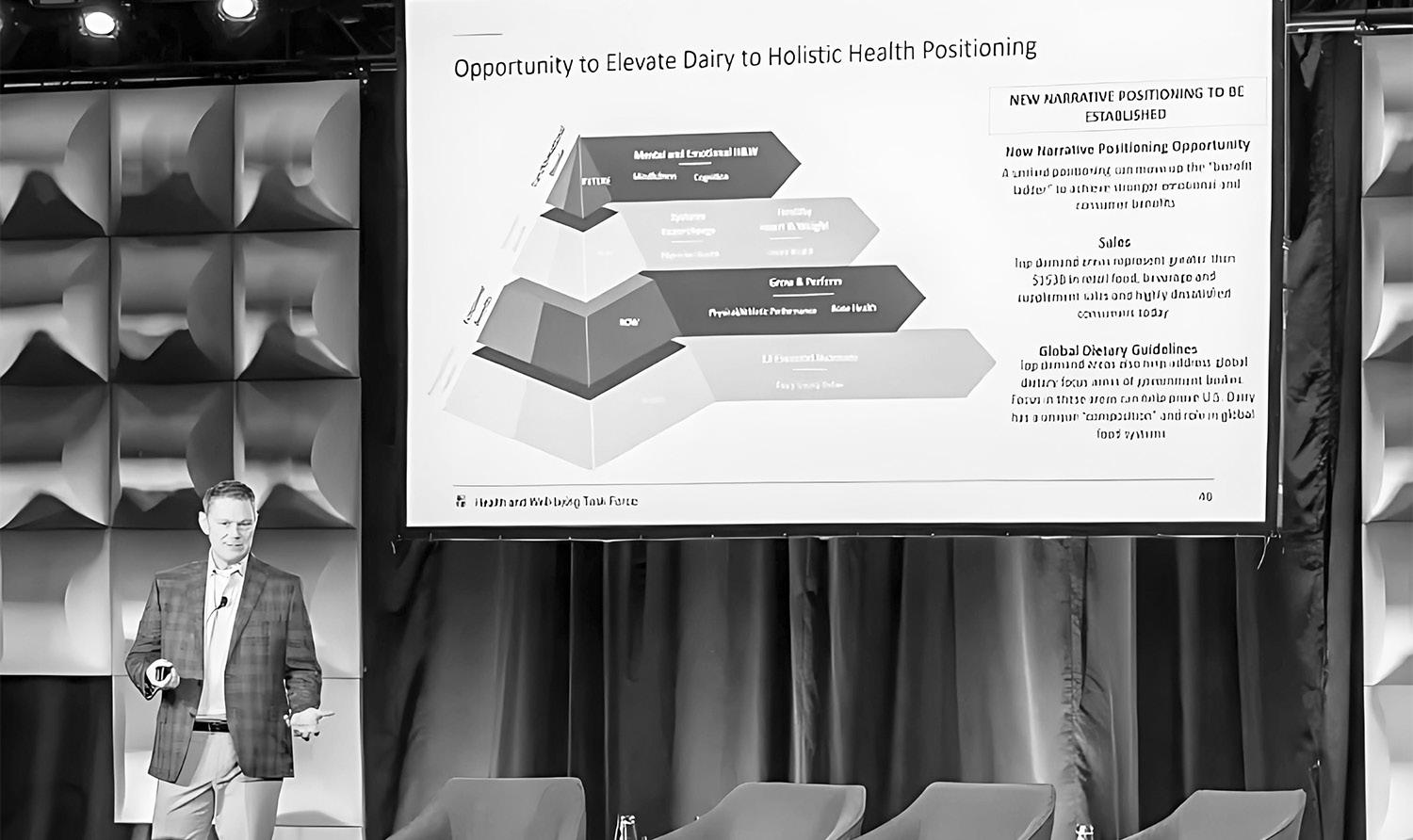
developing partnerships and making investments in new, efficient infrastructure, measurement capabilities, on-farm solutions and innovations, and marketplace opportunities that advance U.S. dairy sustainability in an economically viable and beneficial way.
“U.S. dairy truly is walking the walk with significant progress to celebrate and, importantly, continue learning as we know there is more work to do,” Hanson said. “With your ongoing engagement through the Alliance, we will continue to build our collective knowledge, navigate challenges, and activate solutions that help us build a thriving industry and a more sustainable world with our delicious, nutritious dairy products.”
The meeting featured 20 interactive sessions with diverse experts across the industry, including farmers, and academia, addressing topics of interest to dairy’s sustainability journey. Highlights include:
Sustainability in Action – Advancing Well Being and Effectively Showcasing Dairy’s Role as a Modern Health & Wellness Solution – Paul Ziemnisky, head of wellness science, innovation, and business development at Dairy Management Inc., presented insights into the growing opportunity for dairy in modern health and wellness.
Ziemnisky shared how in 2023, the Innovation Center’s Health & Well Being Committee identified a $150 billion opportunity in nutrition and modern wellness areas of growth and performance, healthy heart and weight, systems supercharge and mental and cognitive health, where dairy can emerge as a solution.
“We know one of the most important ways dairy positively contributes to people and to sustainability is in the unique and powerful nutrition and health benefits that our products provide,” Ziemnisky said. “But for consumers to actually benefit from these products, they have to choose them, so it’s our responsibility to ensure we’re communicating with consumers in a way that meets their modern health and wellness needs and makes sure that the products in the marketplace clearly speak to those needs.”
Breeding for a Greener Future – Genetic Innovation to Mitigate Enteric Methane Emissions – scientific and industry experts focused on how genetic improvements can reduce methane emissions in dairy cattle. Wisconsin farmer Mitch Breunig was among the participants, discussing the importance of genetics in mitigating methane emissions through programs such as the Greener Cattle Initiative.
“Methane reduction is real,” Breunig said. “It’s going to be solved through a variety of places, but genetics has an opportunity to be a good place to solve it. If we can breed for a cow that, just through her genetics, is able to produce less methane, it’s going to make the other things easier because the cow is the basis of all this.”
The Now, Next, and Future of U.S. Dairy Sustainability – Barbara O’Brien, president and CEO of Dairy Management Inc. and the Innovation Center for U.S. Dairy, led a discussion exploring the future challenges and opportunities the industry faces, emphasizing the need to stay ahead of an ever changing global environment. California dairy farmer Steve Maddox, who has been engaged with the Alliance since its creation in 2008, shared his perspective on how the organization fosters collaboration across the industry.

“The Alliance brings us together so we can learn from and share with each other,” Maddox said. “The industry has benefited from so many technologies and practices over the years that have been good for the environment and good for farmers’ bottom line.
“But the best part of our story is that it’s more than just being sustainable. It highlights the story of so many dairy families being active in their communities, and that is the heartbeat of the industry. Farmers truly care about our neighbors and the towns we call home.”
About the Innovation Center for U.S. Dairy. The Innovation Center
for U.S. Dairy was established in 2008 by farmers through the dairy checkoff to foster collaboration that progresses the industry’s goal of building a healthy and sustainable future for the dairy community, the people it serves, and the planet we all share. The Innovation Center convenes diverse stakeholders and leaders to advance the U.S. dairy community’s positive impact on shared social responsibility and sustainability priorities that include nutrition and health, food security, the environment, animal care, workforce, and food safety. Through these efforts, the U.S. dairy community contributes to a more sustainable world for future generations. For more information, visit usdairy.com/about-us/innovation-center
About Dairy Management Inc. DMI is funded by America’s more than 26,000 dairy farmers, as well as dairy importers. Created to help increase sales and demand for dairy products, DMI and its related organizations work to increase demand for dairy through research, education, and innovation, and to maintain confidence in dairy foods, farms, and businesses. DMI manages the National Dairy Council and the American Dairy Association, and founded the U.S. Dairy Export Council, and the Innovation Center for U.S. Dairy. For more information about the dairy checkoff, visit www.dairycheckoff.com.


By SARA WOODS, Virginia Commonwealth University Health System Dietetic Intern
GGrowing up on a third generation dairy farm in Northwest Pennsylvania, I gained a firsthand appreciation for agriculture and its critical role in delivering adequate nutrition to communities. This background has deeply influenced my decision to pursue a career in nutrition and public health, as I believe that understanding where food comes from is a vital component of offering sound nutrition advice rooted in real world knowledge. As health and environmental awareness grows across the country and as we increasingly emphasize disease prevention, this knowledge is more relevant than ever. For registered dietitians (RDs), who often address questions about the sustainability and health benefits of dairy, a basic knowledge of dairy farming is invaluable. Here are five key insights about dairy farms that RDs should know.
1. Dairy farming is highly regulated for safety and quality –Dairy farming in the U.S. operates under stringent federal and state regulations to ensure milk safety and quality. Protocols like the Pasteurized Milk Ordinance establish sanitation standards, and pasteurization processes eliminate harmful bacteria. Milk undergoes rigorous testing at each stage, from farm to processing, ensuring that all varieties are antibiotic free and safe for consumption. This rigorous oversight allows RDs to confidently reassure clients about the quality and safety of dairy foods.
2. Animal welfare is a priority – Animal welfare is a top priority on dairy farms. Healthy, well cared for cows produce better milk, making investments in quality nutrition, veterinary care, and comfortable living conditions essential. Programs like the National Dairy Farmers Assuring Responsible Management (FARM) initiative set high standards for humane treatment. Cows typically live in barns designed with ample space, good ventilation, and protection from extreme weather, with clean, comfortable bedding made from straw, sand, or padding. To further reduce stress, farmers maintain calm milking environments with gentle handling and hygienic equipment, supported by regular training in animal care techniques.
3. Sustainability efforts are ongoing and effective – Farming sustainably just makes sense for dairy farmers. Recycling water, using byproducts from other industries for feed, and investing in advanced technology like methane digesters that turn manure into energy are examples of ways dairy farmers are implementing sustainable farming practices. Between 1944 and 2007, the U.S. dairy industry reduced its carbon footprint by 63 percent, and moving forward, the dairy industry has committed to net-zero carbon emissions by 2050. RDs can highlight these efforts when discussing the environmental impact of dairy with eco-conscious clients.
4. Innovation is transforming dairy farming – Advances in technology have revolutionized dairy farming, making it more efficient and positively contributing to the industry’s sustainability goals. Many farms now use robotic milking machines, automated feeding
systems, and sensors to monitor cow health in real time, similar to a Fitbit or Apple Watch that humans use. These technologies not only improve efficiency but also enhance animal welfare by allowing for prompt, individualized care and reducing stress on the animals. Methane reduction systems are helping to lower the environmental footprint of dairy farms and advancing sustainability practices. These innovations are transforming dairy farming by enabling farmers to optimize resources while producing high quality milk.
5. Dairy farmers are committed to education and transparency – Today, many dairy farmers are committed to transparency and educating the public about dairy production in collaboration with organizations like the National Dairy Council and their local counterparts — such as The Dairy Alliance. Dairy farms often offer tours, and many farmers actively engage on social media or within the community to demystify dairy production. One way my family enjoys participating in this effort is by visiting the local elementary school to share insights about farming and allow children the chance to see a cow up close, which is always their favorite part! Additionally, RDs can participate in virtual farm tours or educational webinars to get firsthand knowledge of farm operations. This can be valuable for dietitians, who can build client trust by speaking confidently about dairy production and addressing common misconceptions.
Moo-ving Forward with Dairy Insights — As nutrition professionals and dietitians, having a deeper understanding of dairy farms can enhance our ability to provide evidence based guidance on dairy consumption. By staying informed about the dairy industry, we can better answer questions, address client concerns, and advocate for a balanced view of dairy as part of a healthy diet. No matter what point of your nutrition career you’re at, these insights can strengthen your practice and help you connect with clients in a meaningful, informed way.
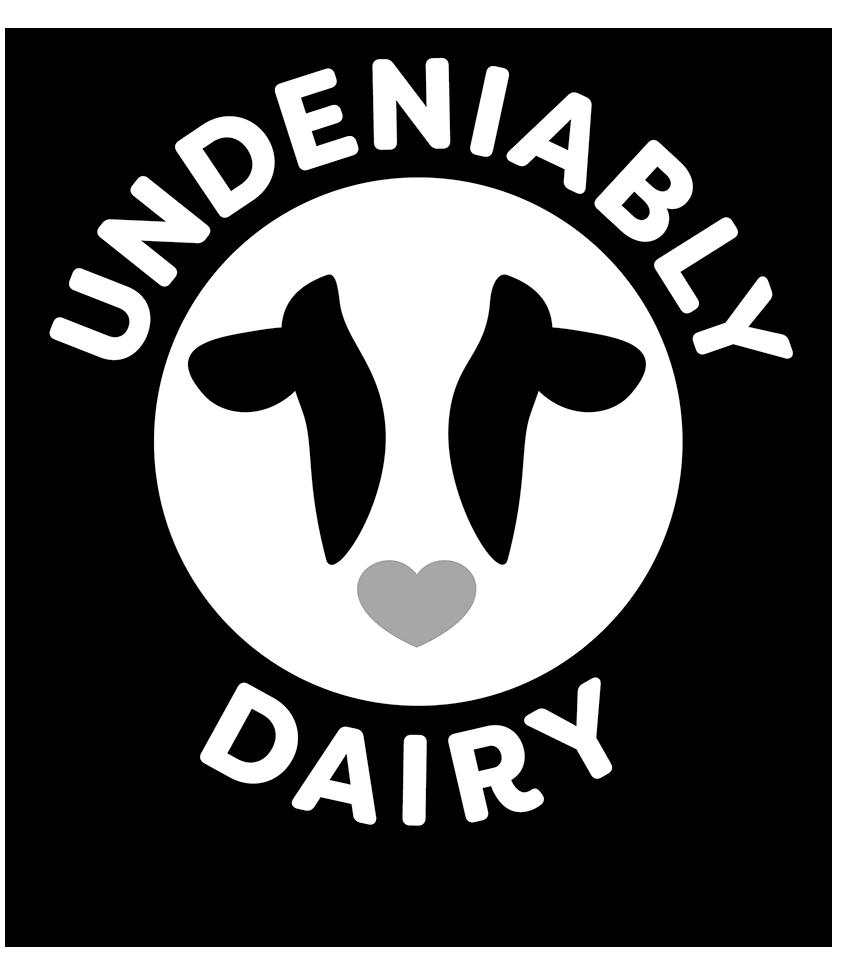
AgCarolina Farm Credit donates over $60,000 to support Hurricane Helene relief efforts. AgCarolina Farm Credit is proud to announce that over $60,000 has been donated to organizations dedicated to providing relief and support in the aftermath of Hurricane Helene. These contributions are aimed at aiding communities, farmers, and employees affected by the devastating storm.

“At AgCarolina Farm Credit, we believe in standing by our communities, especially in times of crisis. The impact of Hurricane Helene has been profound, and we are committed to supporting the recovery efforts,” said Evan Kleinhans, CEO of AgCarolina Farm Credit.
AgCarolina Farm Credit is honored to give a donation to the following organizations:
• Baptists on Mission Hurricane Relief — Baptists on Mission is a vital organization providing immediate and long term disaster relief. Their efforts include distributing essential supplies, offering shelter, and supporting the rebuilding of homes and communities impacted by Hurricane Helene.
• WNC Communities Hurricane Relief for Farm and Agriculture Efforts — WNC Communities focuses on supporting the agricultural sector, which has been severely impacted by the hurricane. The donation will assist in restoring farm operations, providing resources for farmers, and ensuring the sustainability of agricultural activities in the region.
• AgSouth Farm Credit Employee Disaster Relief Fund — The Employee Disaster Relief Fund at AgSouth Farm Credit is dedicated to supporting employees who have been directly affected by the Hurricane Helene. This fund will provide financial assistance to help AgSouth employees recover and rebuild their lives in the wake of the disaster.
Additionally, each department at AgCarolina Farm Credit has been allocated additional funds and paid volunteer time to support relief efforts, including an opportunity to participate in an organized trip through Baptists on Mission as Western North Carolina continues to rebuild.
These donations have been approved by the local lending cooperative board of directors with full support. As a local lending cooperative, our strength lies in coming together – in good times and in devastating times such as through this destruction.
AgCarolina Farm Credit remains committed to its mission of supporting rural communities and agriculture. Through these donations, we aim to make a meaningful difference in the lives of those impacted by Hurricane Helene.
AgCarolina Farm Credit partnered with local restaurants to honor over 350 veterans. AgCarolina Farm Credit proudly hosted a Veterans Day lunch to honor and celebrate the brave men and women who have served in the U.S. Armed Forces. The event took place on November 7 at Prime BBQ in Knightdale, N.C., and McCall’s BBQ & Seafood in Goldsboro, North Carolina. Veterans who attended lunch at either location received a complimentary lunch
with proof of a Veteran I.D. for themselves and a guest.
This Veterans Day lunch was an opportunity for AgCarolina Farm Credit, a local lending cooperative that provides loans for farms, homes, and land, to recognize and celebrate the men and women who have sacrificed so much for our freedom. AgCarolina was proud to partner with Prime BBQ and McCall’s BBQ & Seafood to feed over 350 veterans.
Worth Westbrook, co-owner of McCall’s BBQ & Seafood, stated, “We at McCall’s are very grateful to partner with AgCarolina Farm Credit to honor all the veterans. We’re proud to be an establishment where the sound of freedom and great BBQ meet.”
Christopher Prieto, owner of Prime BBQ, said, “We are passionate about honoring our veterans and know that our restaurant wouldn’t be possible without them. It was an honor to host our veterans’ lunch.”
As an organization, AgCarolina Farm Credit will continue to support our veterans and local communities.
AgCarolina Farm Credit awards $50,000 in grant funds to support rural communities. AgCarolina Farm Credit announces $50,000 in grants have been awarded to 16 organizations positively impacting 22 North Carolina counties through its corporate giving program. The grants will aid recipients in carrying out programs specifically benefiting farmers and rural residents in central, eastern, and southeastern North Carolina.
Grant funds up to $5,000 per organization were awarded, at a reception held at The Cotton Barn in Winterville, N.C., in one of the four focus areas of education, environment, technology, or quality of rural life to the following organizations:
• Apex Friendship FFA Alumni & Supporters Booster - Wake County
• Ayden Grifton High School FFA - Pitt County
• Ayden Grifton Interact Club - Pitt County
• Carolina Township Volunteer Fire Department - Beaufort, Martin, and Pitt Counties
• Coharie Indian Education - Sampson County
• Farmville Central FFA - Pitt County
• Hertford Grammar School - Perquimans County
• Inter-County Volunteer Fire Department - Pasquotank and Perquimans Counties
• Perquimans County School Foundation - Perquimans County

• Sleep in Heavenly Peace - Beaufort and Martin Counties
• Snow Hill Rural Fire Department - Greene County
• Suds of Love - Bladen, Columbus, Hoke, Robeson, and Scotland Counties
• Terra Ceia Christian School - Beaufort County
• The Veterans Farm of N.C. serving North Carolina veterans
• Trenton Volunteer Fire Department - Jones County
• Wayne County Cooperative Extension - Wayne County
AgCarolina Chief Executive Officer Evan Kleinhans states, “The AgCarolina corporate giving fund has awarded over $640,000 in grant funds to benefit the rural and agricultural communities of our North Carolina service area since 2005. AgCarolina is committed to partnering with organizations to enhance the quality of life and opportunities for rural residents of North Carolina.”
The application period for 2025 grants opens as of March 1.
About AgCarolina Farm Credit. AgCarolina Farm Credit is a member-owned financial cooperative with headquarters in Greenville, North Carolina. They are the leading provider of credit to full and part time farmers in central and eastern North Carolina. AgCarolina Farm Credit has nearly 6,000 members across their 46 county territory from 20 local branch locations. Federally chartered and a part of the national Farm Credit System, AgCarolina Farm Credit is locally owned by its members.
The ninth generation is now farming at Lane Farms in Gates, North Carolina. For the Lanes, a commitment to agriculture is important. That commitment is not just seen in their dedication and love of farming, but through their partnerships.
Lane Farms is a diversified operation, growing row crops of cotton, corn, soybeans, wheat, and peanuts. They also have a sow farm with Smithfield Foods, raise purebred Angus cattle, and sell their own brand of Angus beef.
The farm is currently being farmed by three generations — Bundy and Marinda Lane, Bundy’s parents, Roger and Rita, and Bundy and Marinda’s son, Tucker.
“It’s a family business. Family is everything. It’s the reason I’m here in the ninth generation. I’ve learned so much from my dad and my grandpa. That’s who I’ve grown up around,” said Tucker Lane.
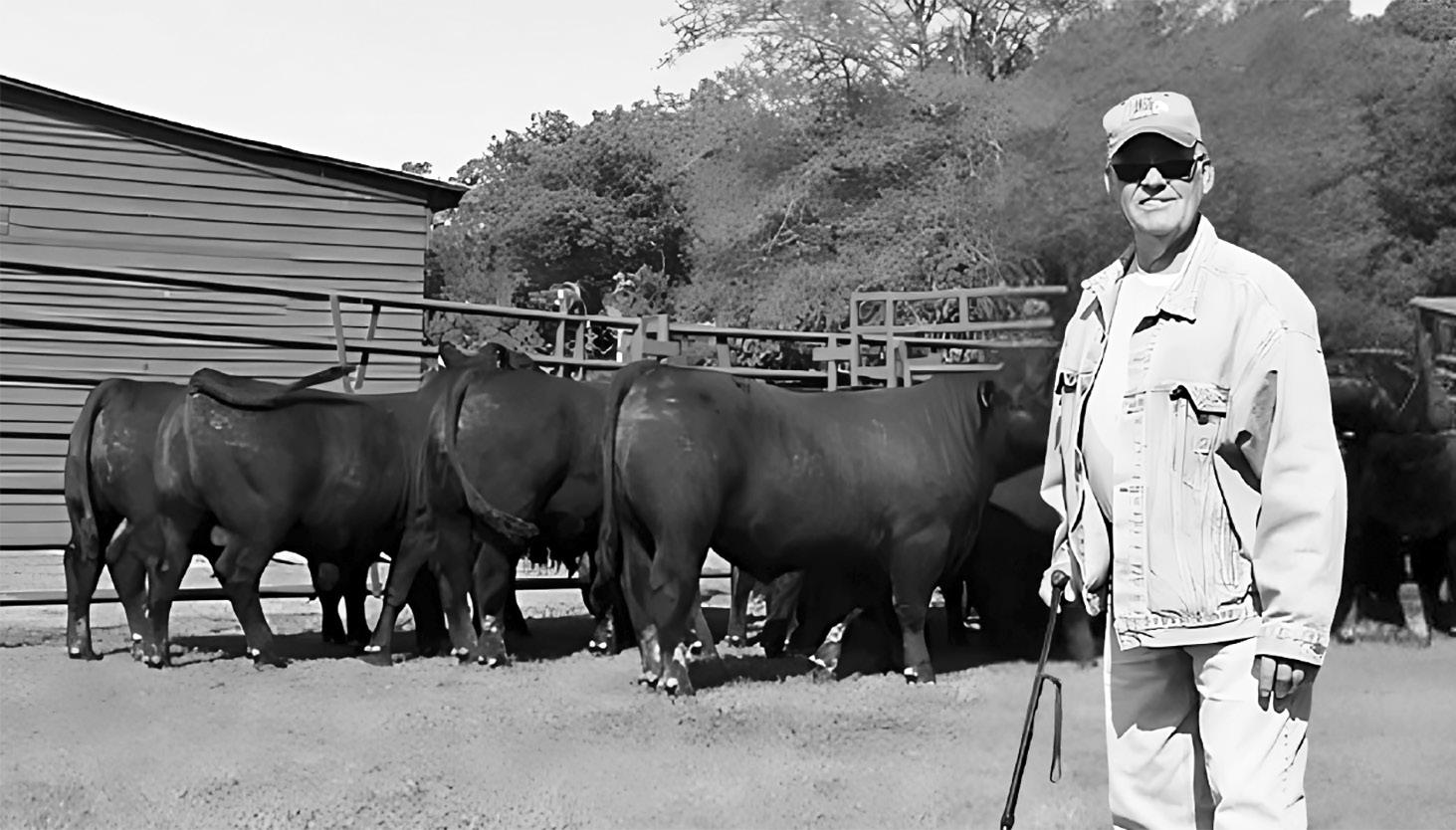

“They’ve worked 80 hour weeks and from the time I was little to now, I’ve always been right there. So, I’ve learned it from them.”
The Lanes are committed to agriculture and the success of the farm. They looked for that same commitment in their partnerships.
After their previous bank said they were considering getting out of agriculture, Bundy Lane decided to look at a lender that was committed to and understood agriculture. That’s where AgCarolina came in.
“I decided to get involved with somebody who’s dedicated to agriculture, who understands agriculture, understands the ups and downs because our banking is different from commercial banks and commercial businesses, and so we have to have that kind of connection — someone who’s committed to agriculture,” said Bundy.
A dedication to agriculture wasn’t the only connection the Lanes had with AgCarolina. Loan officer Austin Britton went to school with Tucker and Emma, and Marinda was his substitute teacher for many grades. After college, Austin came back to serve the community he grew up in with AgCarolina. The Lanes are a part of that community.
“Relationships and service are the most important aspects of our business,” Austin said. “I mean, the financing and numbers are extremely important, but what we do on a daily basis and how we serve our members and building the relationships where we’re one phone call away, is the most important thing we do.”
In a world where fewer and fewer people are connected to agriculture, nine generations of farmers isn’t all that common. Helping farm families like the Lanes carry on that legacy is a privilege for AgCarolina.
“Agriculture has been everything to our family. I grew up on the farm, and so did Roger. We’ve never known anything else, and it’s been a good life,” said Rita Lane.
So long as farmers like the Lanes are committed to farming, AgCarolina will be committed to serving them and the communities they live in.
1 MILE OF PASTURE MANAGEMENT FENCING SUPPLIES AWARDED TO THE NCCA COUNTY CATTLEMEN’S ASSOCIATION RECRUITING THE MOST NEW MEMBERS IN 2024


CONGRATULATIONS TO THE MACON COUNTY CATTLEMEN’S ASSOCIATION
2023 MILE OF FENCE WINNER

Alamance 5
Alexander 4
Alleghany 3
Anson 3 Ashe 1
Avery 6
Beaufort 1
Bertie 0
Bladen 2
Brunswick 2
Buncombe 18
Burke 7
Cabarrus 6
Caldwell 12
Camden 0
Carteret 1
Caswell 1
Catawba 18
Chatham 9
Cherokee 4
Chowan 0 Clay 0 Cleveland 9
Columbus 0
Craven 3
Zoetis Announces Strategic Research Collaboration with AgNext to Bolster Cattle Industry Science and Discovery. Research will help establish baseline measurements as part of animal lifecycle assessments. Zoetis announced it has entered a collaboration with Colorado State University’s AgNext to advance research in sustainable animal production. Together, Zoetis and AgNext are poised to shape the future and set new standards for sustainable management practices using animal health and genetic data.
“Beef and dairy producers currently define sustainability as healthy animals that are more productive and are, therefore, more resource efficient and sustainable, which is true. However, specific benchmarks and data have been elusive in the industry,” said Dr. Mike Lormore, head of U.S. Cattle and Pork Technical Services for Zoetis. “This research will allow us to obtain specific data to establish baselines and, eventually, to help producers, veterinarians, and nutritionists make more informed decisions to meet sustainability goals.”
The collaboration strives to close data gaps on technology and management practices that can enhance the efficiency of livestock production while ensuring the well being of animals and addressing the industry’s evolving sustainability needs. The first study is focused on establishing baseline greenhouse gas emissions that reflect an
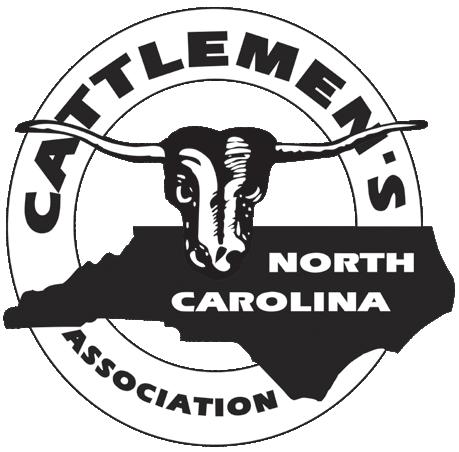

To pay by credit card, scan the QR code:

industry typical production environment for fed cattle and account for the standard health treatments animals typically receive.
The second study is a lifecycle assessment of beef and dairy production systems to support industry knowledge of the effect animal genetics and animal health interventions — like vaccination and parasite control — have on sustainable beef and dairy production.
The Food and Agriculture Organization of the United Nations (FAO) found that improving animal health can increase livestock productivity and welfare and, ultimately, help farmers mitigate emissions and contribute to climate solutions.
“By leveraging animal health technologies and expertise at Zoetis and Colorado State University, we aim to increase the understanding of improved management to sustainability using this animal health data,” said Dr. Kim Stackhouse Lawson, Director of AgNext. “This will enable us to develop strategies that enhance animal welfare, environmental stewardship, and economic efficiency for livestock producers.”
“Zoetis’s animal health experience and genetic capabilities, combined with AgNext’s expertise in advancing sustainability in the beef and dairy industries through their impactful research to improve animal health, productivity, and environmental stewardship, strengthens this collaboration,” said Shari Westerfeld, Vice President of Sustainability Customer Engagement at Zoetis. “This collaborative agreement demonstrates our commitment to support farmers, ranchers, and producers in meeting their goals to raise healthy animals, sustainably provide nutritious foods, and meet the growing protein needs of the world’s population, now projected to grow to approximately 10 billion people by 2050.”
To learn more about sustainability efforts from Zoetis and AgNext, visit Zoetis www.zoetis.com/sustainability and AgNext. colostate.edu.
About Zoetis. As the world’s leading animal health company, Zoetis is driven by a singular purpose: to nurture our world and humankind by advancing care for animals. After innovating ways to predict, prevent, detect, and treat animal illness for more than 70 years, Zoetis continues to stand by those raising and caring for animals worldwide — from veterinarians and pet owners to livestock farmers and ranchers. The company’s leading portfolio and pipeline of medicines, vaccines, diagnostics, and technologies make a difference in over 100 countries. A Fortune 500 company, Zoetis generated revenue of $8.5 billion in 2023 with approximately 14,100 employees. For more information, visit www.zoetis.com.



During the Membership Committee meeting held at the 2007 N.C. Cattle Conference, members decided to list the name and county of residence of those who recently joined as a NEW member of the NCCA in The Carolina Cattle Connection
A new member is someone who has never been a member or has rejoined after a brief break in their membership. Below is a list of NCCA’s new members:
Richard Ledbetter – Squire Valley Farm – South Carolina
Alleghany County
Shirley Hall
Noah Lyon – Circle L Farm
Avery County
Roderick Hall – Hall Brothers
Thomas B. Hall
Buncombe County
Shannon D. Morgan – SD Morgan Farms
Steven Sizemore – Lower Brush Creek Farm
Chatham County
Neil Matthews
Brantley Petty
Shawn Petty
Davidson County
Derek Kanoy – Kanoy Farms
Mary Ann Klotz – Klotz Hill Farm
Duplin County
Graylie/Justin Carroll – C5 Cattle
Jason Phillips – Phillips Family Farms
Jesus Torres – Magnolia Ranch
Edgecombe County
Caden Robinette – Harris Acres Farm
Harnett County
James Adams – Adams Farm
Henderson County
Linda Pryor – Hilltop Farm WNC
Jackson County
Frank Burrell – BMB Farm Mgmt. & Consulting
Johnston County
Harrison Smith – H&H Cattle Company
Lee County
Vincent Charron – Charron Acres
Macon County
Dr. Jessica Scruggs – Scruggs Family Farm
Nash County
Ashley Wollett Askew – P31 Cattle Company LLC
Pender County
Ivey English – English Farms
Person County
Hudson Farm
Brandon Clayton – R&R Farms
Pitt County
Marc Cannon
Randolph County
Brad Moore – Moore Farm
Union County
Charles Adams – Cowpens Creek Ranch
Wake County
Zoey Jacob – Country Mial Farm
Watauga County Joe McNeil
Wilson County
James Woods – J&K Farm
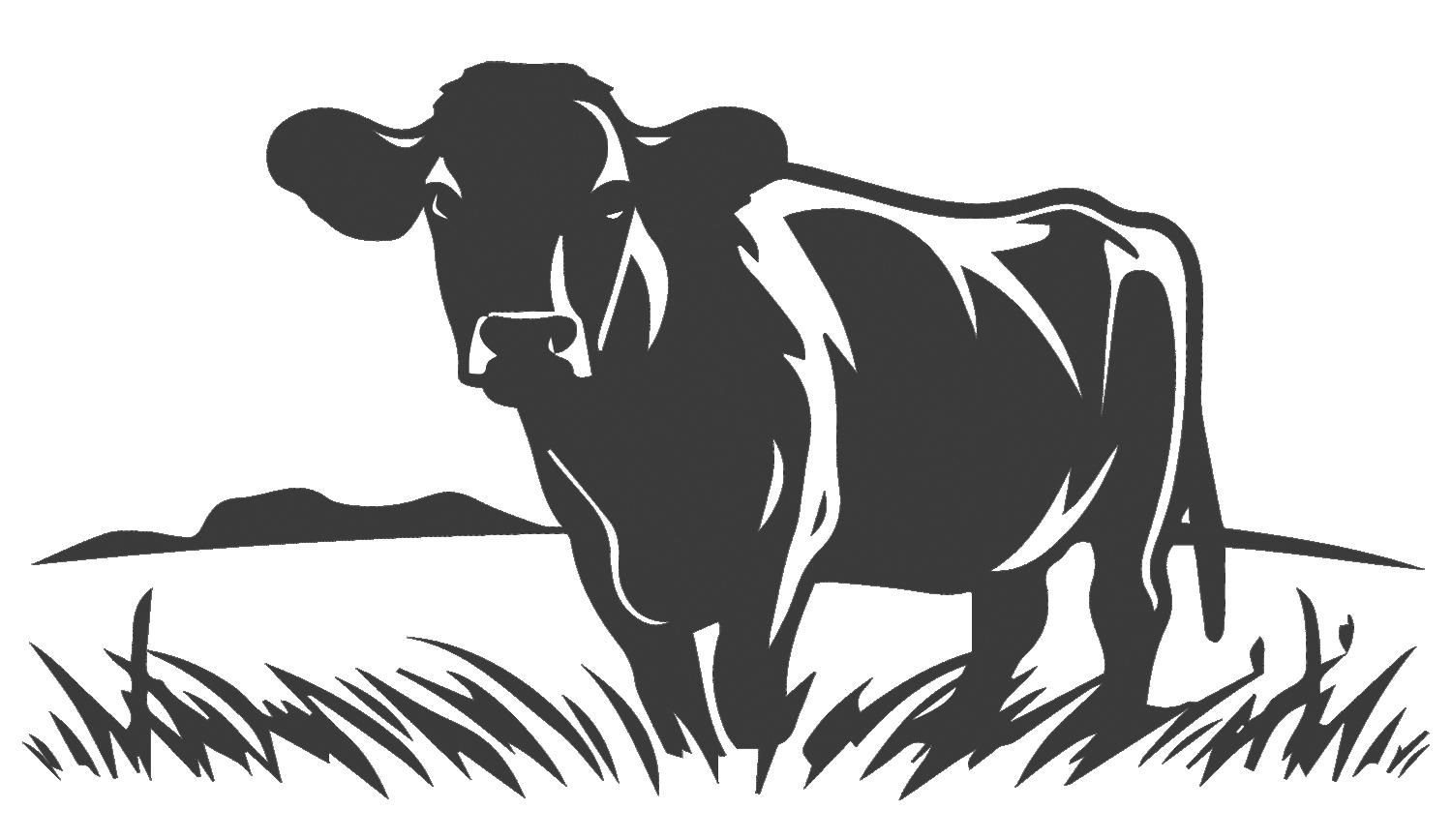
AGuide to Cattle Parasites. Cattle parasites come in varying shapes and sizes: short, skinny, long, brown, or white. Unfortunately, most go undetected until symptoms appear. As winter temperatures approach, cattle producers should prioritize parasite control.
Due to environmental conditions and management practices, cattle are susceptible to certain parasites in winter. As temperatures decrease and cattle get hairy and bunch up, they become prime real estate for parasites to find a winter home.
At BioZyme, makers of VitaFerm cattle vitamin and mineral supplements, we want to ensure that you can keep your herd healthy. Herd health starts with good nutrition and management practices. However, before you can keep your herd healthy, you must know what to protect against.
Let’s explore common cattle parasites, symptoms, prevention, and treatment protocols.
Parasites on cattle can be either external or internal. Lice are the most common external cattle parasite that attack in the winter. The cattle’s thick winter coat provides a great environment for lice to thrive. Biting lice and sucking lice are the two primary types of lice.
Biting lice have a broad head and a powerful mouth. They use this small but mighty mouth to chew on the crusty surface and flaky area

of the skin.
Unlike biting lice, which come in one species, there are five types of sucking lice. Each species has a long nose with a sharp end that they use to pierce the skin and suck blood directly from the vein.
Symptoms:
• Itching/rubbing
• Hair loss
• Rough coat
• Decreased weight gain
Mites are also common in late winter and early spring for many of the same reasons as lice. The close contact of confined or bunched

cattle and reduced UV exposure are prime real estate for mites, known to cause mange.
Sarcoptic and psoroptic mange are the two primary types of mange in cattle. Miniscule mites cause both types of mange. Let’s explore the similarities and differences.
Sarcoptic mange is caused by the Sarcoptes scabiei, a burrowing mite that makes its home in the skin. The most common infestation areas are the inner thigh, under the neck and brisket, and around the base of the tail.
Psoroptic mange is caused by Psoroptes bovis, another microscopic cattle parasite on the skin’s surface. Psoroptic mites are initially found on the point of the shoulders but can quickly spread.
Symptoms:
• Severe itching
• Crusty skin lesions
• Hair loss.
Internal cattle parasites live inside cattle and can cause various health issues, including reduced weight gain, poor milk production, and compromised immune function. It is important to control parasites at various life stages. For instance, parasite control is vital in pregnant females to avoid stress and ensure healthy calves. Parasite control in young calves prevents setbacks in growth and performance.
Let’s explore the most common internal parasites that producers should be aware of during the winter.
Roundworms primarily live in the gut, including the stomach and intestine, with one exception — lungworms. They challenge cattle in several ways. They damage the lining of the digestive tract, reduce forage or feed intake, and stimulate the body’s excessive release of chemicals to destroy the parasites.
Symptoms:
• Weight loss
• Diarrhea
• Reduced milk production
• Decreased efficiency
Coccidia is a protozoa parasite that causes coccidiosis and is especially problematic
in young cattle in crowded housing. The larvae of the parasites can survive inside animals or pastures. During the cold, the cattle are usually crowded, increasing the transmission risk.
Symptoms:
• Dehydration
• Diarrhea
• Reduced feed efficiency
BioZyme News continued on the next page

Proactive prevention reduces parasite loads and helps maintain cattle health and productivity throughout the winter. Here are 8 prevention tips that our VitaFerm staff recommends.
1. Deworming – Rotate dewormers to prevent resistance. Use targeted deworming based on fecal egg count or risk assessment. If that method doesn’t work, it is best to deworm cows in the summer and treat calves when they are around three months old.
2. Consult your Veterinarian – Work with your veterinarian to develop a year round parasite control program tailored to your herd and local conditions. Different geographies have different parasites that could require different prevention protocols.
3. Lice & Mite Treatment – Apply topical or injectable parasite treatments for external cattle parasites like lice and mites. Treat all animals in a herd, as parasites spread easily. Re-treat if necessary to target hatching eggs.
4. Sanitation & Hygiene – Clean and disinfect barns, pens, and feeding areas regularly. Provide dry, clean bedding. Remove manure frequently to reduce coccidia and other parasite contamination. Finally, ensure proper ventilation to reduce humidity, which can benefit parasites.
5. Avoid Overcrowding – Overcrowded spaces increase stress and the spread of parasites. Allow adequate space for all animals, especially in enclosed spaces during the winter.
6. Monitor & Rotate Pastures – Even in winter, rotating pastures or limiting grazing can help reduce exposure to worm larvae in contaminated areas. If the resources allow, it is always advisable to rotate pastures.
7. Quarantine New Animals – Isolate and treat new cattle before introducing them to the herd to prevent bringing in parasites. Even if coming from a reputable producer, it is wise to deworm and isolate new cattle for some time to prevent new parasites in your herd.
8. Proper Nutrition – Ensure cattle have adequate feed, minerals, and vitamins to maintain a strong immune system. Zinc, selenium, and vitamin A are essential. A quality mineral program from VitaFerm can help ensure your cattle get the required nutrients.
Protein for Cattle — VitaFerm Offers Options. Protein for cattle is essential, especially during critical times like winter when a majority of the cow herd is in late gestation. Furthermore, during the winter, forage quality often declines, and protein supplementation becomes crucial to ensure cattle can efficiently utilize available energy sources and maintain body condition.
Cattle have specific nutritional needs that vary depending on factors such as body weight, production stage — growth, maintenance, lactation, or gestation — and environmental conditions. Cold weather increases energy requirements as cattle expend more energy to maintain body temperature. Pregnant and lactating cows have even greater demands for protein and energy to support fetal development or milk production.
Chris Cassady, Ph.D. BioZyme Director of Beef Technical Sales, reminds us that 75 percent of the U.S. beef herd is a spring calving
herd. Most of these cows are in their final trimester of gestation when ⅔ of fetal growth occurs.
“That really drives up the nutrient requirements, and the cow will put everything she has to this last bit of time in the oven. Prepare the calf for a good start with cow nutrition, passing it to the fetus in utero,” he said.
When forage quality is poor, it becomes difficult for cattle to meet these increased nutritional demands. Consequently, cattle may lose body condition, leading to weakened immune systems, lower conception rates, and decreased overall performance. In this case, supplementation helps fill the nutritional gaps and prevent these issues. When it comes to feeding cattle in winter, it is vital to offer them additional protein to thrive and perform.
Cattle Nutrition Experts – VitaFerm is an established brand of vitamin and mineral supplements designed to maximize energy and forage utilization for successful beef production. Our products support cattle producers looking to maximize their operations. Best of all, VitaFerm products ensure balanced nutrition for livestock.
Not only do we make and market nutritional supplements for livestock, but we also raise, breed, and feed our own herds. That is why sharing this information with fellow cattle producers is so important. It’s part of our care that comes full circle.
VitaFerm is the flagship brand of BioZyme Inc. Through innovative research and high quality manufacturing, BioZyme creates powerful solutions that improve animal performance and support producer profitability in the agricultural industry.
Our mission — undeniable positive impact on the health and wellness of your animals and your business.
VitaFerm Provides Protein for Cattle – VitaFerm recognizes the importance of incorporating added protein into your vitamin and mineral supplements during the winter. Additionally, our team knows that added protein for cattle is crucial at times like late gestation and lactation. During those times, mama cows are working extra hard, and they often occur in the winter.
We have developed several protein supplements for your herd that combine essential nutrients, protein, and our research proven prebiotic AO-Biotic Amaferm. Here is a guide to those products that contain protein for cattle:
Four Sixes x VitaFerm Legendary Nutrition Protein Tub is our newest protein option that comes in a convenient tub. This research proven, ranch tested 20% all natural protein tub with vitamins and minerals is designed to support beef cattle health and productivity when grazing moderate to low quality forage.
• Carefully crafted specifically for the legendary Four Sixes Ranch, now available for operations of all sizes.
• Provides quality nutrition and industry leading organic copper and zinc proven to deliver real world results on the ranch.
VitaFerm Concept•Aid Protein Tub is a premium protein tub with vitamins and minerals for beef cattle on grass pasture, designed to support reproductive success on low protein forage.
• Includes 20% natural protein along with organic copper, iodine, and zinc for maximum bioavailability, innate immunity, and hoof health.
• High levels of vitamin E support reproductive tract repair and milk quality.
VitaFerm Conserve 30–13% Protein Tub is a protein tub for beef cattle with urea and natural protein designed to support herd health and performance while conserving cost.
• Includes 30% urea protein with no more than 13% equivalent crude protein from non-protein nitrogen.
• Features a complete, but economical, vitamin and mineral package.
VitaFerm Conserve Protein Tub is a natural protein tub for beef cattle designed to support herd health and performance while conserving cost.
• Includes 20 percent natural protein.
• Features a complete, but economical, vitamin and mineral package.
Protein tubs are one way that allows cows to get their minerals
and protein in one convenient option. However, VitaFerm also makes two protein meals that can also be fed free choice or added to your mixed ration.
VitaFerm Concept•Aid Protein Meal is a premium free choice 2% phosphorus vitamin and mineral supplement with protein for cattle on grass pasture designed to support reproductive success on low protein forage.
• Includes 20% natural protein along with organic copper, iodine, and zinc for maximum bioavailability, innate immunity, and hoof health.
• High levels of vitamin E support reproductive tract repair and milk quality.
VitaFerm Conserve Protein Meal is a free choice vitamin and mineral supplement with protein for beef cattle, designed to support herd health and performance while conserving cost.
• Includes 20% natural protein.
• Features a complete, but economical, vitamin and mineral package.
VitaFerm, Protein, & Amaferm: The Trifecta – VitaFerm offers a protein supplement ideal for feeding cattle when forage quality is low. Amaferm is the key additive in all VitaFerm products. It has more than 150 published and/or presented research studies proving its increase in digestibility and, ultimately, its impact on the animal. Not only will you be supplementing your cows’ vitamin and mineral needs, but you will be providing them with Amaferm.
The key point of Amaferm is using it as a tool to get more energy metabolized by the cow. More forage digestibility leads to less physical fill, so she can eat more. More volatile fatty acid (VFA) production provides the extra energy needed for thermoregulation, which will also help keep her warm in the cold winter months.
“Amaferm can help unlock the nutritional value of all types of forages. Amaferm goes beyond stimulating the growth of beneficial rumen bacteria and can also promote rumen fungal growth and enzymatic activity. This increases fiber digestibility and VFA production by 17 percent and 16 percent, respectively. As such, more energy becomes available to your cows, leading to more performance,” Cassady said.
Amaferm also helps your feedstuffs and forages go further, helping decrease the overall cost.
“Research proves that cattle fed Amaferm synthesize 143 more grams of microbial protein each day. That’s enough protein equivalent to a pound of supplemented soybean meal available for the cow or heifer,” Cassady said. “Additional protein from Amaferm in a year round supplemental program helps producers reduce the need for additional protein up to 40 percent annually, a huge continuous savings on feed costs.”
Providing protein for cattle at critical times is an important part of feeding cattle in the winter. At BioZyme, we give you options within the VitaFerm brand. Not sure what to feed cows when it comes to VitaFerm? Check out our Concept•Aid Product Navigator.
Sure Champ Offers Livestock Showmanship Tips for Success. Every once in a while, there is a bond that is so strong that it can only exist between exhibitor and animal. But that bond takes time together, hours of practice, and patience. Once that bond is created, the duo can be a force to be reckoned with in a livestock BioZyme News continued on page

The S.C. Cattleman’s Association is raffling off a new 20 head cattle handling system — excluding the chute — for the scholarship foundation. Rusty Thomson & Family, a local ArrowQuip dealer, was approached by the raffle coordinator to design a system for a small herd of cattle. A chute had been given away for a number of years, and the committee wanted something a little different for this year’s raffle fundraiser. The result was a 20 head deluxe handling system.
The system consists of 10’ pro panels, heavy duty gates, and panels for the higher area of higher pressure. Instead of a chute, the system was beefed up to include an 8’ alley and rolling door.
This system is perfect for the small producer, or even a second system for the larger producer with multiple working locations.
Please consider purchasing a raffle ticket from the association for our scholarship program. Tickets are $20. You can contact Travis Mitchell at 803-609-2828 or Rusty Thomson at 864-429-7062.
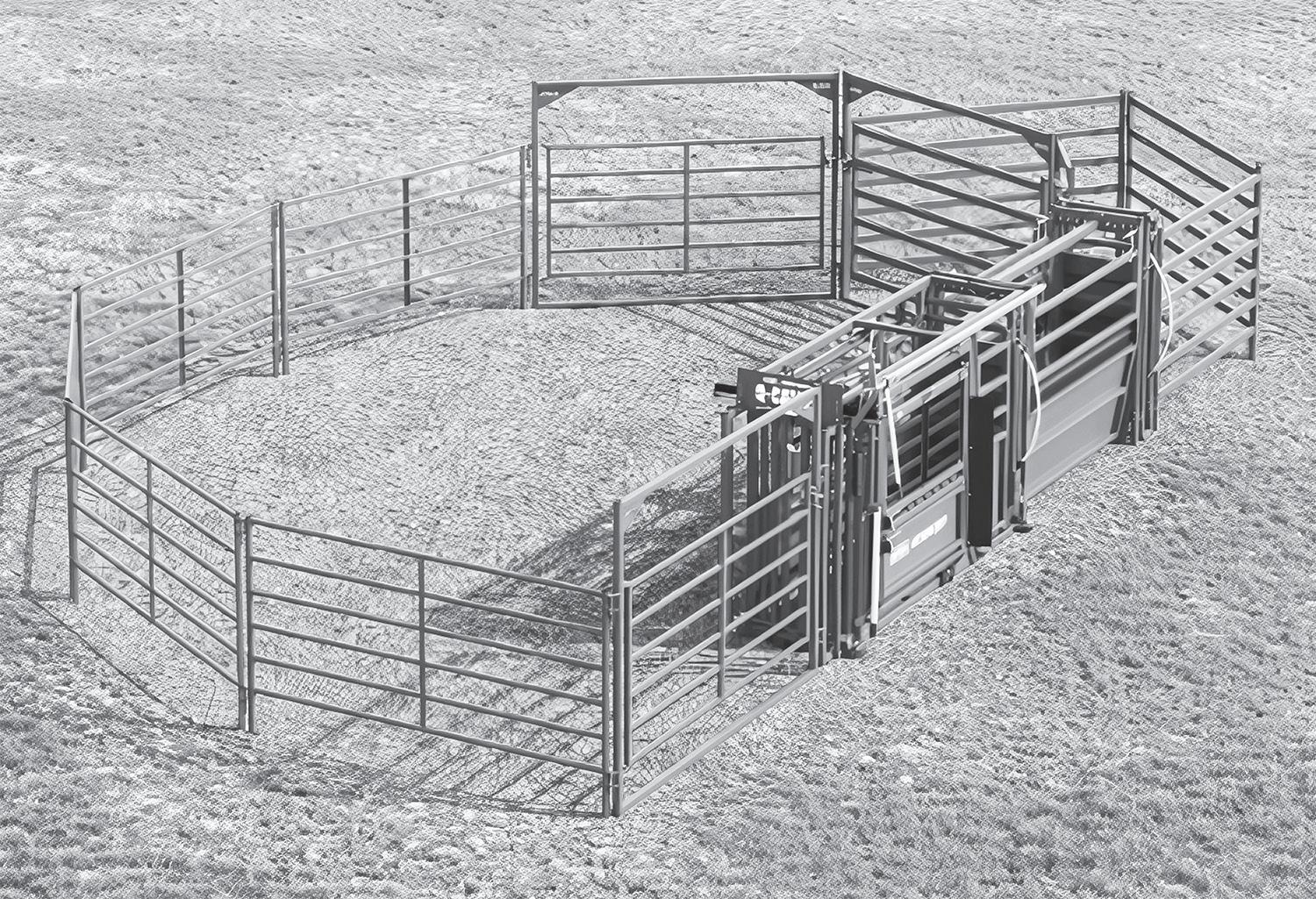
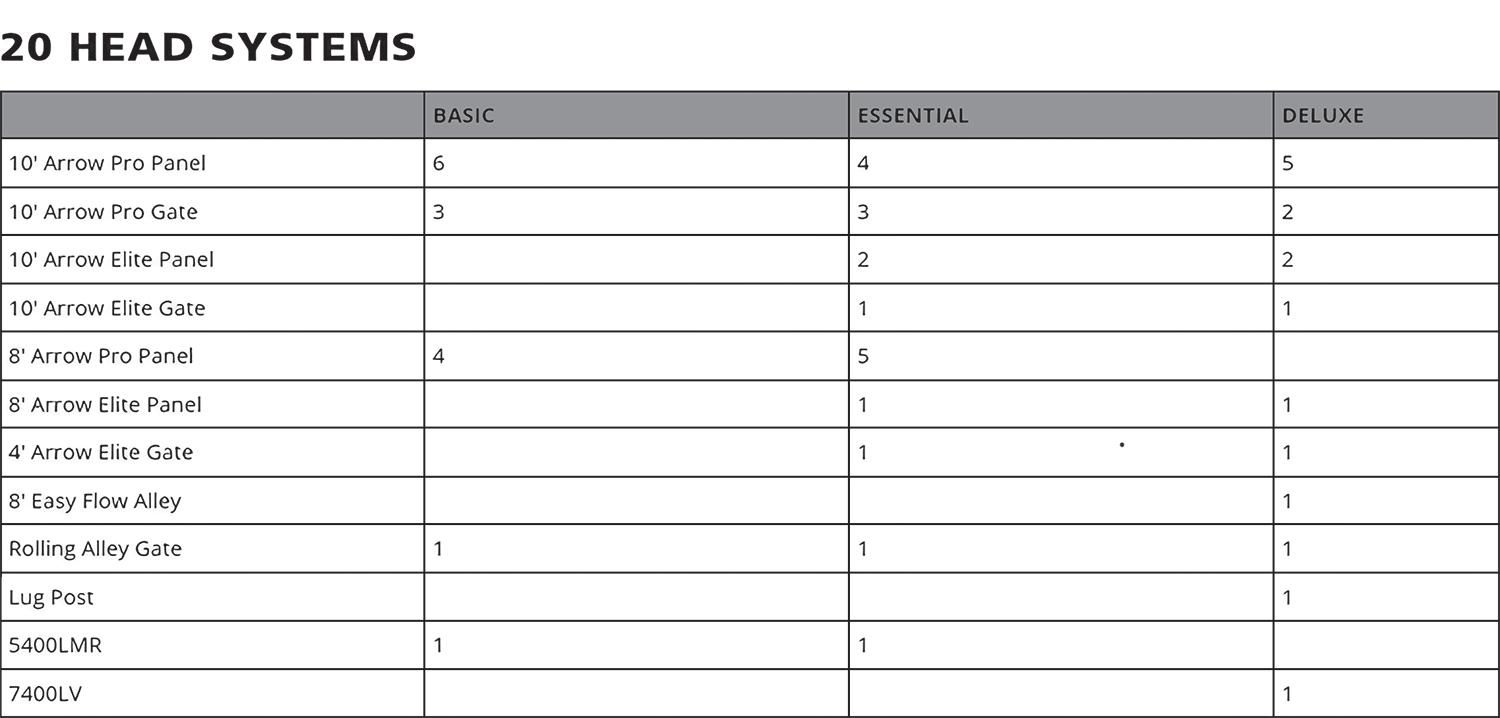
continued from page 107
showmanship competition.
Livestock showmanship is unlike most classes that the judge will evaluate at a show. In this special class, the exhibitor, not the animal, is judged on how well they present their animal. Showmanship skills develop over time. Although some exhibitors have more finesse than others, there are definite traits and skills that you will need to sort your way to the top of the class.
At Sure Champ, we want to help all livestock exhibitors prep to win, regardless of which species they are showing. We know it takes hours of work, long days and nights spent in the barn, and a relationship built on trust with your animal to win a showmanship contest. As the industry grows and develops, the competition gets steeper across the country, raising the bar for everyone.
Livestock Showmanship Tips for Success – The Work Begins at Home. Don’t go to a show and think you are ready to win a showmanship contest just because your animal is show broke. Have you practiced showing your animal at home? Have you regularly practiced and anticipated every scenario?
The key to having a successful relationship with your animal — every show animal — is working diligently with them at home. That means spending time walking them, time on the wash rack, working hair and skin, and in a mock show ring setting.
For cattle, lambs, and goats, practice the following:
• Leading
• Setting feet and legs and eventually “walking” them into a set
• Keeping their heads up at the desired level
• Bracing (lambs and goats)
• Side profile views
• Side-by-side views
• Avoiding show ring holes
• Pulling out and circling in the proper motion
For pigs, practice:
• Driving with their heads elevated
• Driving your pig for long periods to build stamina
• Keeping the pig between you and the judge
• Penning your pig when asked
• Going to a scale
• Changing sides while driving
• Keeping your pig out of show ring holes
• Stopping and keeping your pig relaxed at the judge’s request
The Value of Show Ring Presence – Troy Goretska, BioZyme Area Sales Manager for Iowa and Illinois, has raised four kids with various species in and around the show ring. He said that exhibitors who aim to win livestock showmanship need to have show ring presence and awareness.
“It is critical that kids go up and watch a few classes before their class to see how a judge is working the class,” Goretska said. “Is the
judge pulling from bottom to top or top to bottom? Is he sending animals to the scale, and if so, how many does he weigh in each class?”
A general ring awareness before even entering the ring tells the judge that you are here for business. You’ve done your homework. Scope out any uneven ground in the ring, and avoid holes or low ground, which can make your animal look off.
Show your Animal to Win – Although livestock showmanship is about the exhibitor’s skills, your animal should be calm and broke enough to show like you would in any confirmation class. Goretska encourages exhibitors to show their animals in showmanship as they would in class and show their animals in class as they would in showmanship — to win.
“There is no need to do anything special to present your animal in showmanship. Know the show ring, know the judge, and go out and make your animal look the best you can,” he said.
We would like to thank Performance Livestock & Feed Company and Carolina Stockyards for again sponsoring this book.

The 2025 version is now available to help cattle producers effectively & efficiently record daily production efforts, which can help enhance profitablity and reduce stress levels. In addition to Beef Quality Assurance (BQA) best practices and proper injection technique information, it has more than 100 pages to record calving activity, herd health, pasture use, cattle inventory, body condition, cattle treatment, A.I. breeding records, and more. It also contains a calendar and notes section.
Simply return the order form below, along with $7.00 for each book to: N.C. Cattlemen’s Association 2228 N. Main Street Fuquay Varina, NC 27526
You can now order them through our website at www.nccattle.com/resources/merchandise/red-book-order-form. You can also call our office at 919-552-9111 or email us at kim@nccattle.com

The little things add up. You’ve done your work at home. You’ve watched the classes at the show and know who the judge is and how she works. Now, it is time for the details. Here are a few details that could be the difference between first and second place in your next livestock showmanship competition.
Look Professional – At Sure Champ, we don’t care what brand of jeans, shirt, or shoes you wear. It looks like you care and didn’t roll out of bed at 4:00 a.m. (even if you did). Dark jeans, a tucked-in shirt, and a belt look nice on a young exhibitor. We know that some species get a little more relaxed, and when it gets hot, young ladies like a cooler, more flowing shirt. However, for showmanship, a tucked-in shirt looks best.
Caps Off, Hair Back – Looking professional starts at the top. If you are a girl or young lady with long hair, please keep it out of your face. Many styles exist for longer hair, but a simple ponytail, braid, or bun keeps your hair under control so you can focus on your animal and not your hair.
While many people like to sport a Western hat, keep the ball caps off. A cap says you are covering messed up hair or serving as a walking billboard. A cowboy hat is classy and looks nice as long as it is in season, but please keep your ball caps at your show box.
No Gum Zone – The show ring is no place for chewing gum. The more nervous you get, the more apt you are to chomp away. Yes, that might catch the judge’s eye, but it isn’t the type of attention you want in the ring. Be sure to spit your gum out before the event begins.
Be Prepared with Equipment – Before you even head to the staging area or make-up area, ensure you have everything you need to present your animal. Do you have a show stick or scotch comb for your calf? A brush and whip for your pig? The right halter or chain for your small ruminant?
You get one chance to make a first impression. No matter if it is your first showmanship class or your last, you only get one chance to make a first impression. Take your animal into the ring with confidence. Know where the judge is and know how to present your animal to look its absolute best.
While you are at it, be sure to keep it feeling its best with products from Sure Champ. Sure Champ is a line of products that support the health and well being of show livestock.
About BioZyme Inc. With a continued commitment to excellence, the BioZyme Stockyards location earned the American Feed Industry Association (AFIA) and Feedstuffs 2024 Feed Facility of the Year honor. BioZyme Inc., founded in 1951, develops and manufactures natural, proprietary products focused on animal nutrition, health, and microbiology. With a continued commitment to research, BioZyme offers a complete line of feed additives and high density, highly available vitamin, mineral, trace mineral, and protein supplements for a variety of animals, including cattle, pigs, poultry, sheep, goats, horses, and dogs. BioZyme brands include AO-Biotics, VitaFerm, Gain Smart, Sure Champ, Vitalize, DuraFerm, and Backyard Boost. With headquarters in St. Joseph, Mo., the company reaches a global market of customers that stretches into countries across five continents. For more information about BioZyme, visit www.biozymeinc.com.
By KIM BECKETT, NCBA Policy Division
Every cattle producer knows that pests are a challenge to our operation, but some pests are far more dangerous than others. One of the new threats to our herd comes from the New World screwworm, which is currently advancing through Central America into southern Mexico and could soon be at our border.
The New World screwworm (NWS) is a fly that has a particularly gory way of harming our cattle. Female NWS flies lay their eggs in open wounds or body orifices, and when the larvae hatch, they burrow deep into the skin like a screw driving into wood. These maggots feed on cattle’s tissue, causing larger wounds as they go.
NWS flies and their burrowing larvae cause extensive damage to cattle, and infestations can spread rapidly. In 1966, we eradicated screwworms in the United States through sterile insect technique. The U.S. Department of Agriculture (USDA) bred sterile male NWS flies that mated with wild female screwworms and failed to produce offspring. Eventually, these flies died out in the U.S., and now they only exist in a handful of South American countries.
Unfortunately, these flesh eating flies are now on the march north.
Since 2022, USDA’s Animal and Plant Health Inspection Service (APHIS) has confirmed the presence of New World screwworms in Costa Rica, Nicaragua, Honduras, and Guatemala. Just last month, screwworms were discovered in southern Mexico, which raised red flags for us at NCBA.
Once in Mexico, it is easy for screwworms to travel north and appear on our southern border. These flies can hitch a ride on people, livestock, or wild animals, not to mention the thousands of vehicles and cargo containers traveling through Mexico to the United States.
We know how devastating it would be if New World screwworm returned to the United States, which is why NCBA is raising the alarm now. First, we are communicating with Mexico’s cattle industry leaders so they can begin the process of screening for these flies and push for eradication efforts in their country. We are also supporting USDA-APHIS to bolster the use of sterile flies. Recently, we have been concerned that our existing sterile flies might
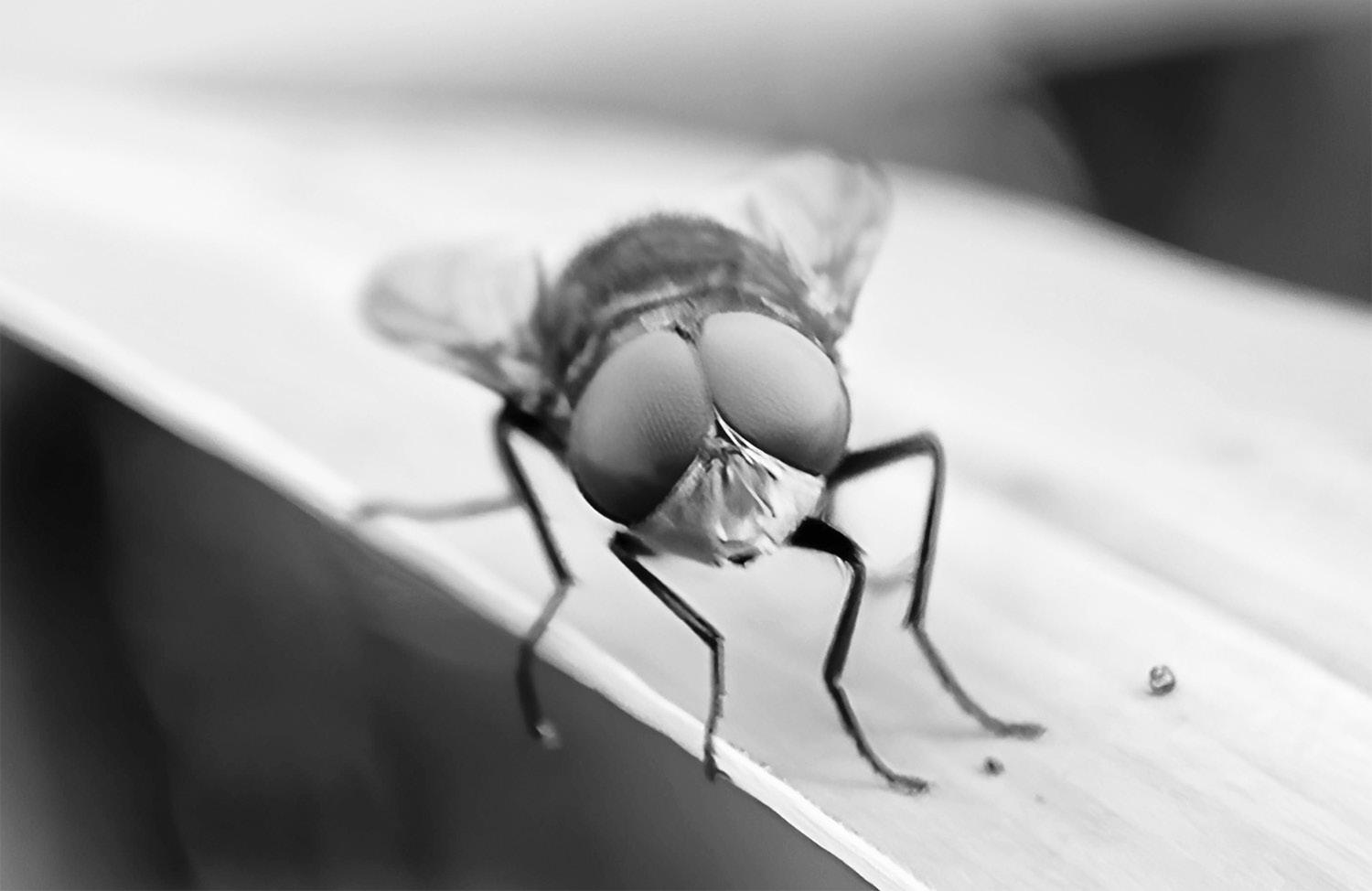
not be getting the job done, and NCBA is pushing for more flies and better flies that will help us beat back these pests.
Although we haven’t confirmed any New World screwworms in the United States, we need you to be on high alert. New World screwworms have orange eyes, a metallic blue or green body, and three dark stripes across their backs. If you see any suspicious flies, please alert your local veterinarian, extension agent, or contact USDA-APHIS Veterinary Services.
Please also pay close attention to your cattle and watch for any open wounds or sores. If cattle exhibit irritated behavior, head shaking, you notice the smell of decaying flesh, or spot maggots in a wound, seek treatment from a veterinarian immediately. Proper wound treatment and prevention is the best way to protect your farm or ranch from a screwworm infestation. NCBA is also sharing the latest updates through our website. I encourage you to visit www.ncba.org/ NWS for all the latest information on how to protect your operation.
NCBA is always on the clock to protect the U.S. cattle industry from threats like New World screwworm. Through your vigilance and NCBA’s advocacy, we can protect the United States cattle herd.
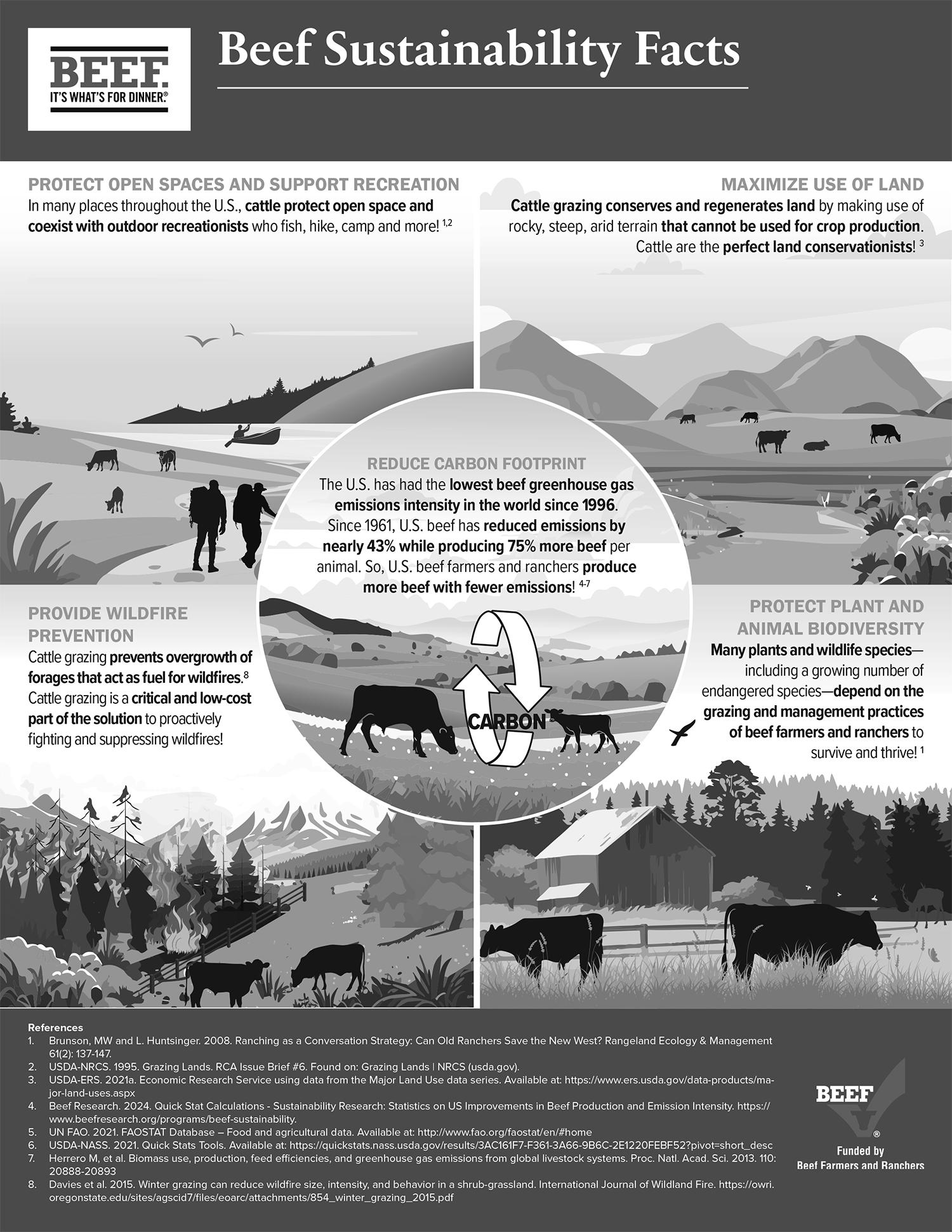
Winterproof Your Farm Tires — Essential Tips for the Cold Season. Winter is upon us, and with it comes colder temperatures, wet or icy ground, and snow in some areas. Despite the changing weather conditions, you still need to get work done, and farm tire maintenance is crucial to staying productive, no matter the weather.
“Livestock still needs to be fed. In some areas, snow needs to be moved or fieldwork finished,” says Greg Jones, senior manager of global field engineering at Firestone Ag. “Regardless of where you live, winter brings challenges. In the north, it snows. In the south, it rains. You need your tires to keep up throughout the season.”
Taking steps to safeguard your tires from harsh winter weather and conditions can help you avoid needing replacement tires come spring. Here are four practical tips to help you make the most of your farm tires and equipment this winter.
Tip 1. Maintain tire pressure when temperatures drop – Regularly checking and adjusting your tire air pressure is one of the most effective ways to extend tire life and carry heavy loads efficiently. Checking tire pressure in the winter is especially important since it is directly related to temperature.
“As temperatures rise, so does tire inflation pressure, and vice versa,” says Jones. “You need to be extra aware of your tire air pressure at this time, since the colder weather causes drops in tire inflation pressure.”
Check your tire pressure daily or weekly, depending on your equipment usage. This helps to avoid underinflation or overinflation, which can both damage the tire and affect performance.
Tip 2. Be cautious of rough, frozen ground – Take extra care driving over rutted and rough frozen ground and stubble, especially for livestock operations and when clearing snow.
“When temperatures drop, mud can freeze into hard clumps, and stubble gets harder,” says Jones. “Driving over this is like driving over a sharp rock in the field. These frozen obstacles, which are common for northern U.S. farmers, can cause punctures or breaks in your tires.”
Whenever possible, minimize driving over rough surfaces and smooth out main driving paths to protect your tires from sharp, frozen debris.
Tip 3. Safeguard your tires during winter storage – For equipment that won’t see regular use during the winter, proper storage can help keep tires in good condition. Whenever possible, store equipment inside. Tires left outside on ice or snow are more prone to cracks as the rubber stiffens in low temperatures.
“When temperatures get cold enough, the elasticity of the rubber stops working as usual,” explains Jones. “Instead of stretching and relaxing, it becomes brittle and can crack.”
For equipment in winter storage, adjust tire inflation pressure to avoid finding a flat tire come spring. Due to permeation, a tire will typically lose around 1 PSI per month. To account for this natural, slow loss of PSI over time, regularly check the tire pressure of your tires in storage and adjust to account for this change.
Tip 4. Optimize your tires for winter conditions – Winter across the country can create conditions that challenge tire traction. Tires built for fieldwork might not perform well in snow and ice. In the south, wet ground from winter rains can reduce a tractor’s traction in the field. If you need to put your equipment to work, these tips can

help make them more efficient.
• Adjust a tire’s footprint – Wet ground can heighten soil compaction and rutting, while reducing a tractor’s traction. Ensure your tire inflation pressure is optimized for the weight of the tractor. Properly inflated tires allow tractors to create an ideal footprint, spreading the machine’s weight over a larger area to minimize soil compaction and enhance traction.
• Add weight – Adding weight to your equipment can help improve traction on icy or snowy ground. Extra weight can prevent slipping and help maintain stability. “Adding weight carefully and optimizing your tire pressure to the new weight can give you extra grip for winter work,” says Jones.
• Use tire chains – Tire chains can be a good option in winter conditions by providing extra traction on icy surfaces. Tire chains can give your equipment the extra grip it needs in slippery conditions. Work with your local tire dealer and experts to ensure you are getting the correct chains for your tires and are installing them correctly to avoid unnecessary damage.
For more tips to get the most from tires and equipment this winter, contact your local Certified Firestone Ag dealer or visit FirestoneAg.com
About Bridgestone Americas, Inc. Headquartered in Nashville, Tenn., Bridgestone Americas is the U.S. based subsidiary of Bridgestone Corporation, a global leader in tires and rubber, building on its expertise to provide solutions for safe and sustainable mobility. Bridgestone Americas employs more than 50,000 people across its worldwide operations. Bridgestone offers a diverse product portfolio of premium tires and advanced solutions backed by innovative technologies, improving the way people around the world move, live, work, and play.
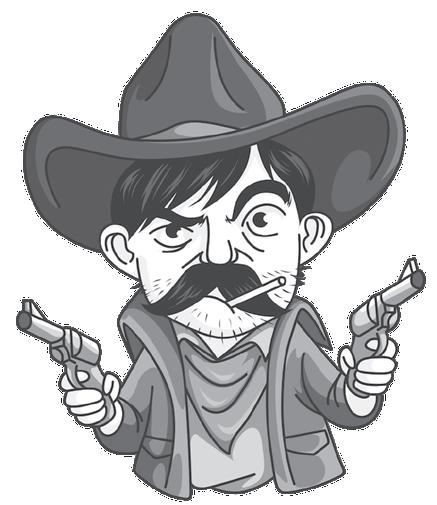
You shouldn’t have to have a gun held to your head to take advantage of the expert A.I., superior genetics, the best in purebreds and outstanding farm supplies featured in the Classifieds in this issue!
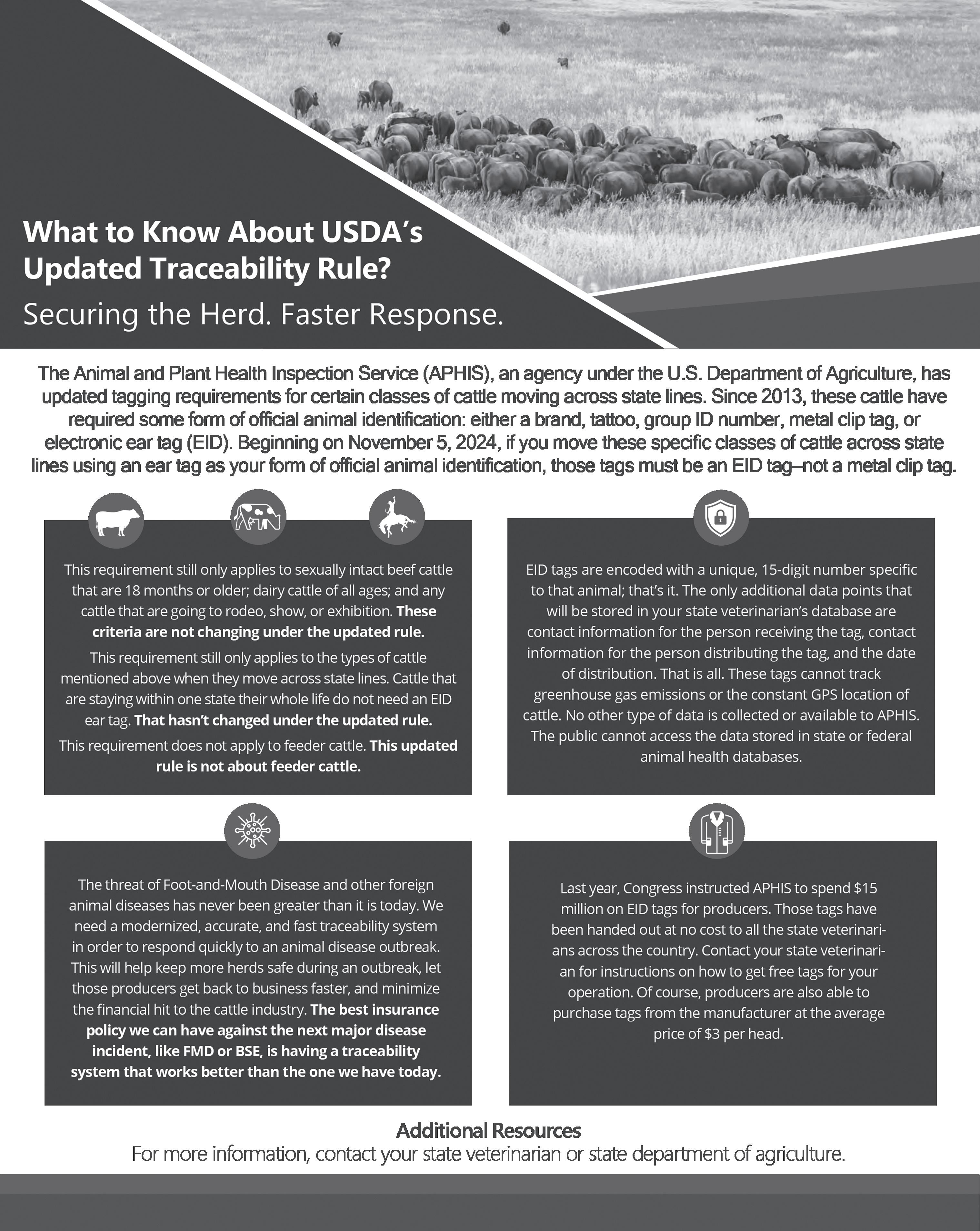

Joe and Robin Hampton
345 Withrows Creek Lane Mt. Ulla, NC 28125 704-880-2488 BACK CREEK ANGUS

Ricky McLeod 1320 Old Manning Rd., Sumter, SC 29150 803-983-0816 wrricky@ftc-i.net • www.blackcrestfarm.com

Breeding Registered Angus since 1962
Walter D. Shealy III and Family 20977 US Hwy 76 • Newberry, SC 29108 803-924-1000 • 706-590-0451 walter@blackgrove.com www.blackgrove.com
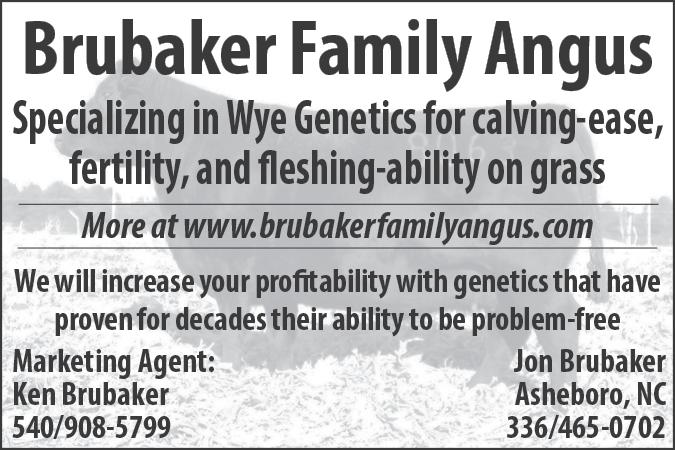
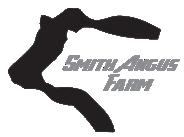
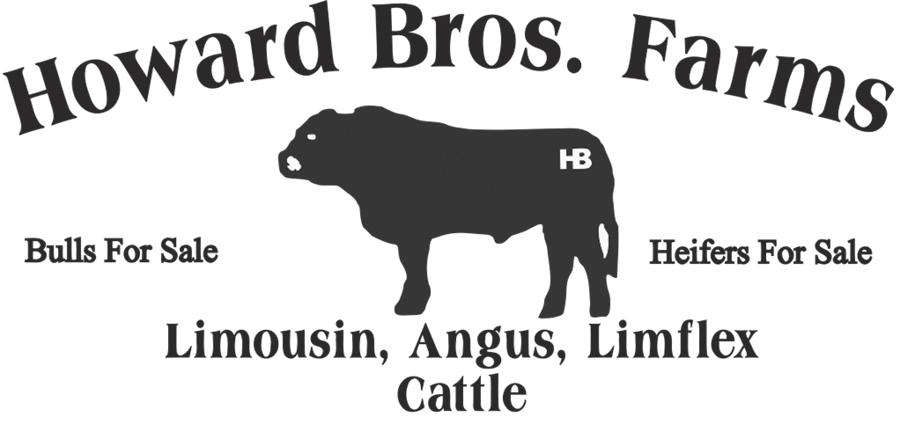
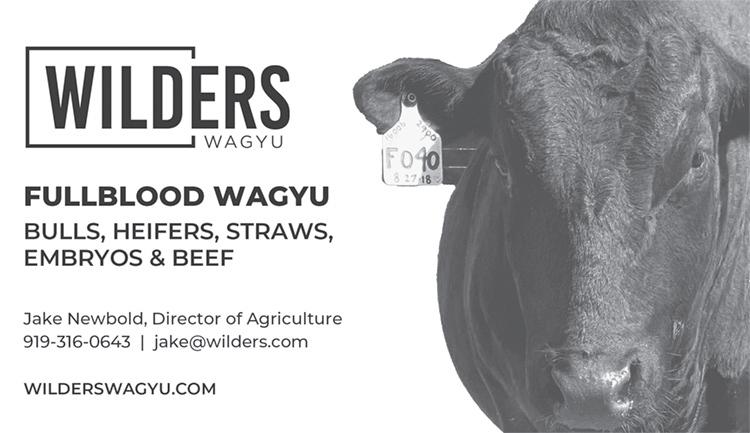




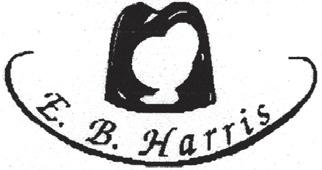
Angus
Randall Smith 1957 Cleve Rd., Snow Camp, NC 27349 336-516-4558 smithangusfarm@yahoo.com

SPRINGFIELD ANGUS 104 Springfield Lane Louisburg, NC 27549 Phil Goodson: 919-880-9062
• Performance Tested
• Ultrasound and 50K Evaluated
• Registered Angus Bulls
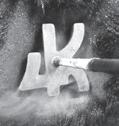
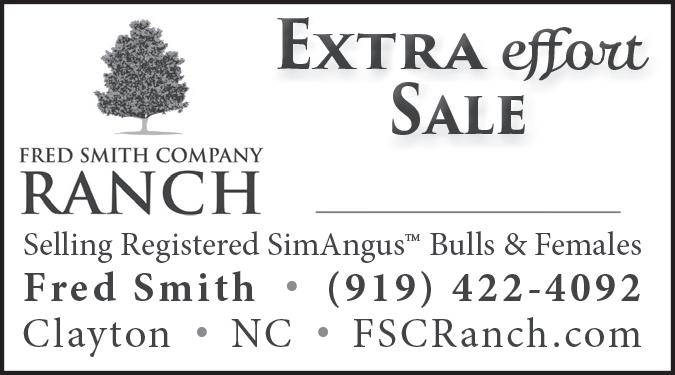


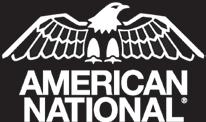

Jan. 4 — EBS Farms Select Bull & Female Sale, Norwood, N.C.
Jan. 11 — Baxley Family Farms Annual Production Sale, Georgetown, S.C.
Feb. 1 — Clemson Bull Test Sale, Clemson, S.C.
Feb. 13 — UGA 32nd Edition Focus on Genomics Enhanced EPDs Bull Sale, Athens, Ga.
Feb. 15 — Locust Hill Cattle Company 4th Annual Bull & Female Sale, Pelham, N.C.
Feb. 15 — Yon Family Farms Spring Bull & Female Sale, Ridge Spring, S.C.
Feb. 22 — 33rd Annual Blue Ridge Brutes Bull & Commercial Female Sale, Mt. Airy, N.C.
Feb. 22 — Hunt’s H+ Brangus Bull & Female Sale, Calhoun, Ga.
Feb. 22 — Saluda County Cattlemen’s Association
33rd Annual Replacement Heifer Sale, Saluda, S.C.
Mar. 8 — March Madness Replacement Female & Bull Sale, Monroe, N.C.
Apr. 12 — Knoll Crest Farm Spring Bull & Female Sale, Red House, Va.
Oct. 24-25 — Yon Family Farms Maternal Roots Fall Female & Bull Sale, Ridge Spring, S.C.
Dec. 6 — 50th Annual Union County Performance Tested Bull Sale, Monroe, N.C.
BRANGUS
Feb. 1 — Clemson Bull Test Sale, Clemson, S.C.
Feb. 15 — Yon Family Farms Spring Bull & Female Sale, Ridge Spring, S.C.
Feb. 22 — Hunt’s H+ Brangus Bull & Female Sale, Calhoun, Ga.
Oct. 24-25 — Yon Family Farms Maternal Roots Fall Female & Bull Sale, Ridge Spring, S.C.
GELBVIEH
Feb. 1 — Clemson Bull Test Sale, Clemson, S.C.
Feb. 15 — Locust Hill Cattle Company 4th Annual Bull & Female Sale, Pelham, N.C.
Feb. 22 — 33rd Annual Blue Ridge Brutes Bull & Commercial Female Sale, Mt. Airy, N.C.
Feb. 22 — Saluda County Cattlemen’s Association 33rd Annual Replacement Heifer Sale, Saluda, S.C.
Dec. 6 — 50th Annual Union County Performance Tested Bull Sale, Monroe, N.C.
Feb. 1 — Clemson Bull Test Sale, Clemson, S.C.
Feb. 22 — Saluda County Cattlemen’s Association 33rd Annual Replacement Heifer Sale, Saluda, S.C.
Mar. 8 — March Madness Replacement Female & Bull Sale, Monroe, N.C.
Mar. 22 — 57th Annual N.C. Hereford Classic Sale, Union Grove, N.C.
Apr. 12 — Knoll Crest Farm Spring Bull & Female Sale, Red House, Va.
Jan. 18 — Bull Hill Ranch 14th Annual “More Bull for Your Buck”
Production Sale, Gray Court, S.C.
Feb. 1 — Clemson Bull Test Sale, Clemson, S.C.
Feb. 22 — 33rd Annual Blue Ridge Brutes Bull & Commercial Female Sale, Mt. Airy, N.C.
Mar. 8 — March Madness Replacement Female & Bull Sale, Monroe, N.C.
Mar. 8 — March Madness Replacement Female & Bull Sale, Monroe, N.C.
Jan. 4 — EBS Farms Select Bull & Female Sale, Norwood, N.C.
Jan. 11 — Baxley Family Farms Annual Production Sale, Georgetown, S.C.
Feb. 1 — Clemson Bull Test Sale, Clemson, S.C.
Feb. 15 — Yon Family Farms Spring Bull & Female Sale, Ridge Spring, S.C.
Feb. 22 — 33rd Annual Blue Ridge Brutes Bull & Commercial Female Sale, Mt. Airy, N.C.
Feb. 22 — Saluda County Cattlemen’s Association 33rd Annual Replacement Heifer Sale, Saluda, S.C.
Mar. 8 — March Madness Replacement Female & Bull Sale, Monroe, N.C.
Oct. 24-25 — Yon Family Farms Maternal Roots Fall Female & Bull Sale, Ridge Spring, S.C.
Dec. 6 — 50th Annual Union County Performance Tested Bull Sale, Monroe, N.C.
Nov. 1 — Wilders Wagyu StayWILD ‘25 Production Sale, Turkey, N.C.
Jan. 30 — Winter Feeding & Forage Management Field Day, Butner, N.C.
Jan. 31 — S.C. Cattlemen’s Association Annual Conference, Clemson, S.C.
Feb. 4-6 — N.C. Cattle Conference, Hickory, N.C.
Feb. 5-7 — Cattle Industry Convention & NCBA Trade Show, San Antonio, Tex.
Feb. 20 — N.C. Forage & Grassland Council Winter Conference, Hickory, N.C.
Feb. 21-22 — N.C. Cattle Conference, Hickory, N.C.
Jan. 6 — Harward Brothers Livestock Market Weekly Sale, Statesville,N.C.
Jan. 6 — Saluda Livestock Exchange Weekly Sale, Saluda, S.C.
Jan. 7 — Mid-Atlantic Cattle Sales Video Auction, via macsvideo.com
Jan. 8 — Stanly County Livestock Market Weekly Sale, Norwood, N.C.
Jan. 9 — Saluda Livestock Exchange Small Animal Sale, Saluda, S.C.
Jan. 13 — Harward Brothers Livestock Market Weekly Sale, Statesville, N.C.
Jan. 13 — Saluda Livestock Exchange Weekly Sale, Saluda, S.C.
Jan. 15 — Stanly County Livestock Market Weekly Sale, Norwood, N.C.
Jan. 20 — Harward Brothers Livestock Market Weekly Sale, Statesville, N.C.
Jan. 20 — Saluda Livestock Exchange Weekly Sale, Saluda, S.C.
Jan. 21 — Mid-Atlantic Cattle Sales Video Auction, via macsvideo.com
Jan. 22 — Stanly County Livestock Market Weekly Sale, Norwood, N.C.
Jan. 27 — Harward Brothers Livestock Market Weekly Sale, Statesville, N.C.
Jan. 27 — Saluda Livestock Exchange Weekly Sale, Saluda, S.C.
Jan. 28 — Stanly County Livestock Market Weekly Sale, Norwood, N.C.
